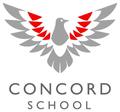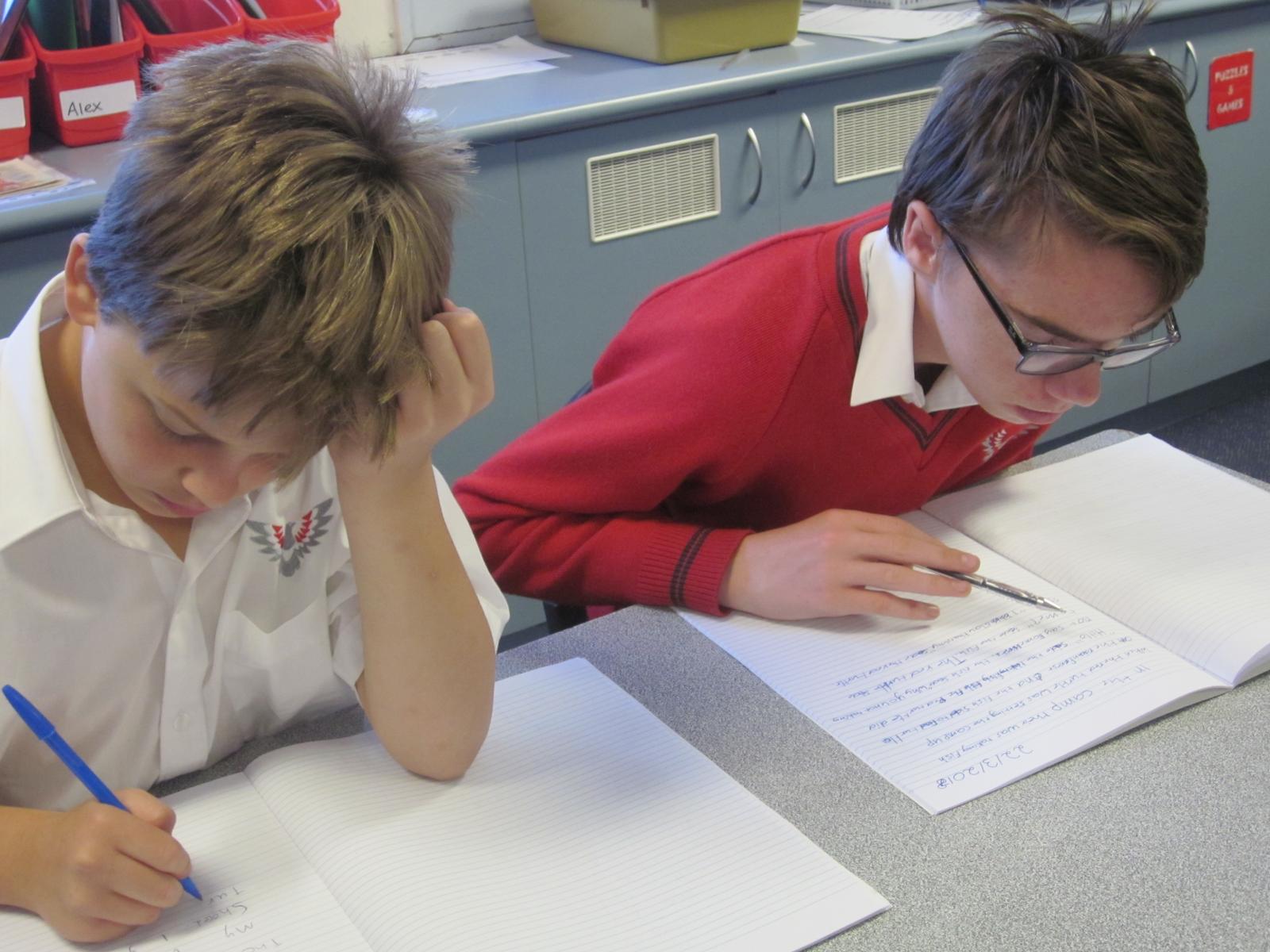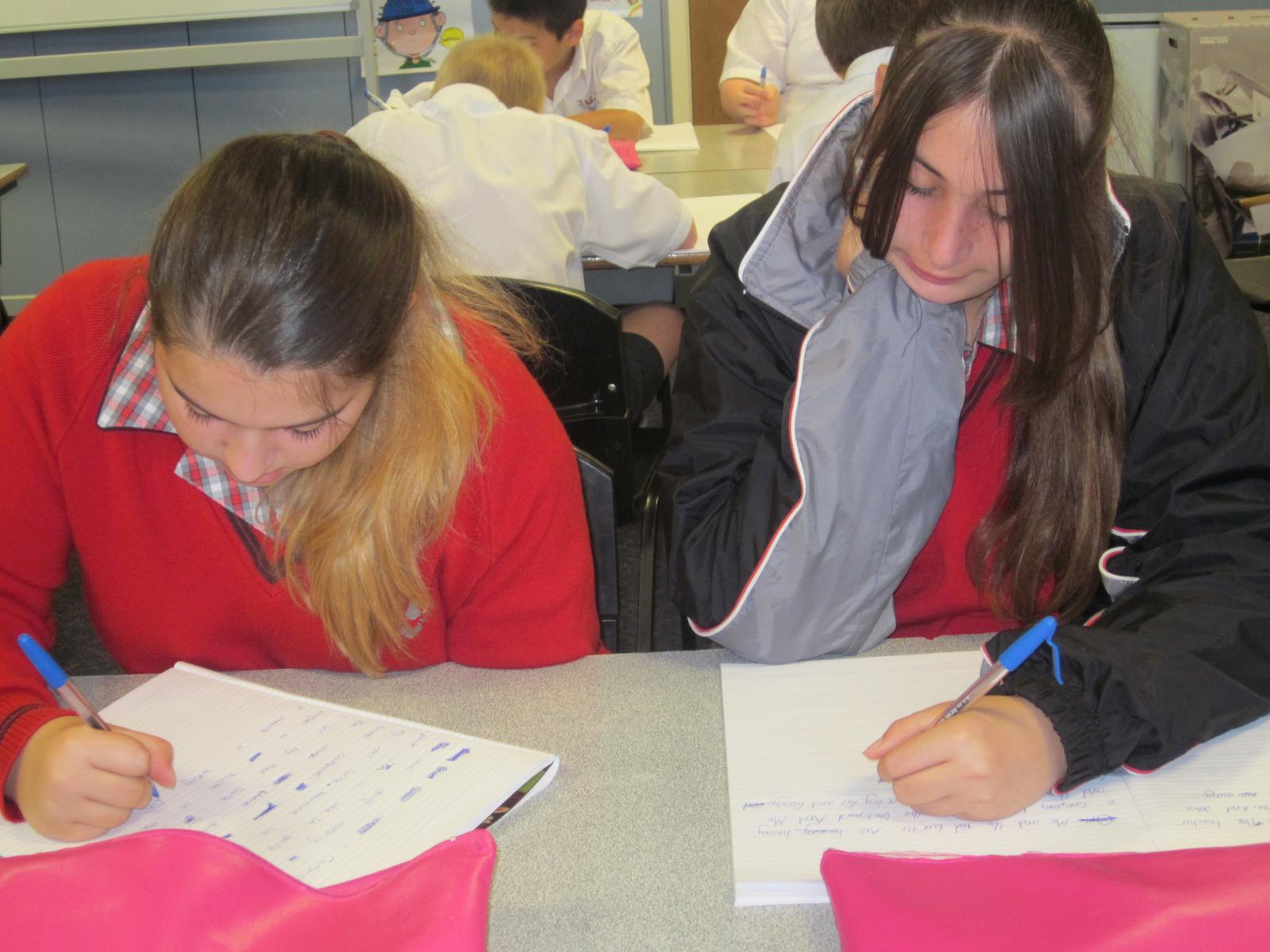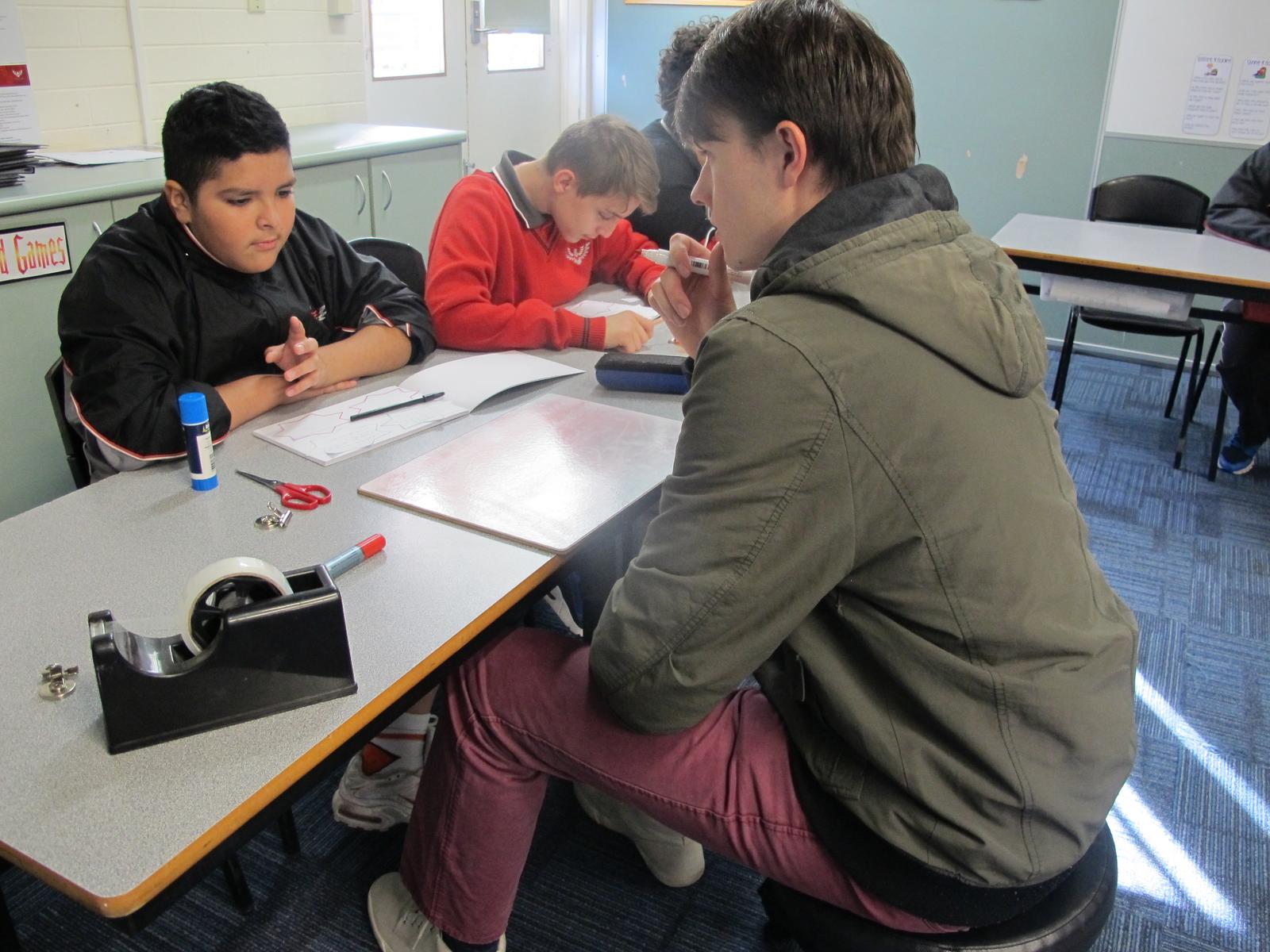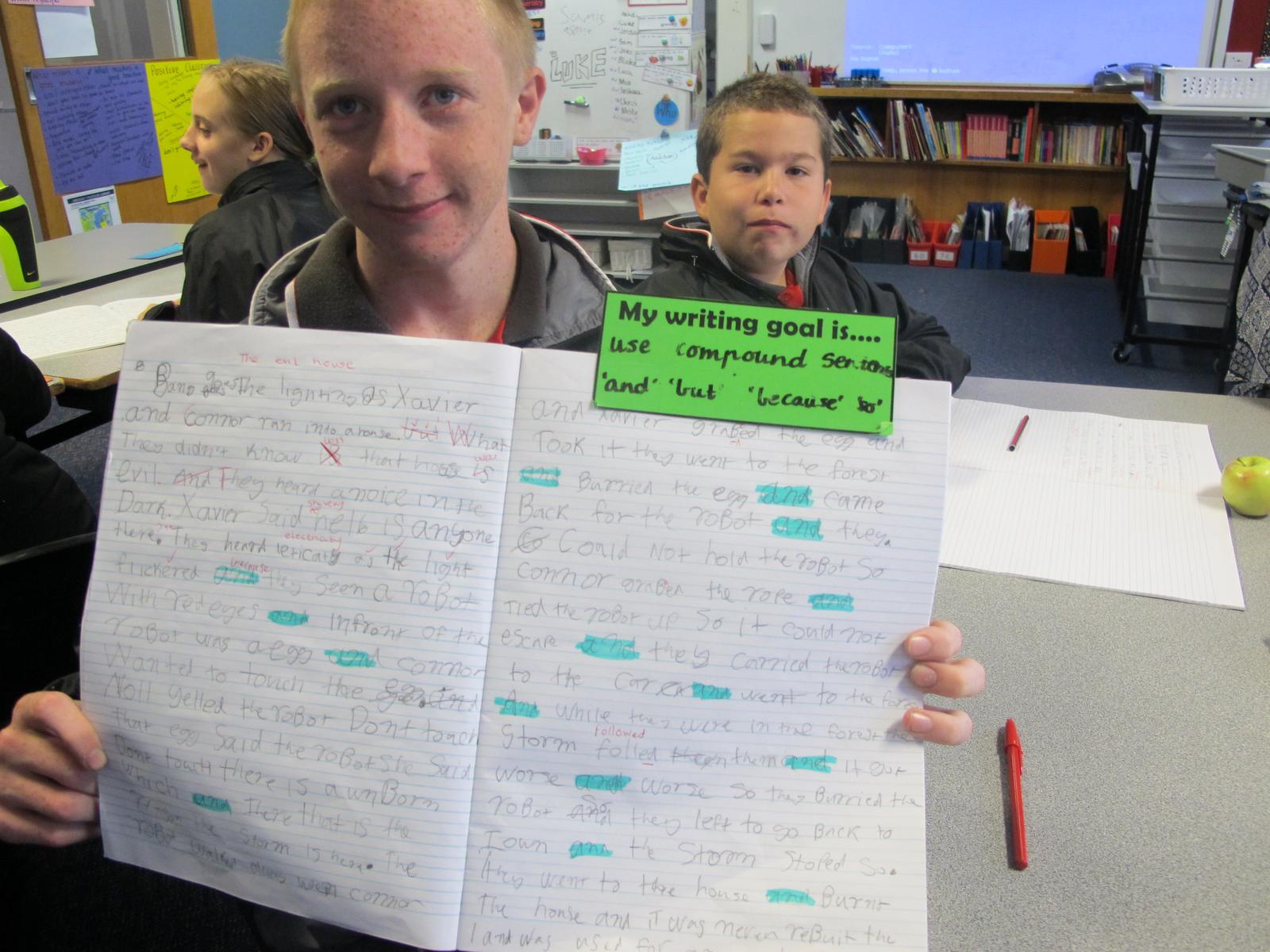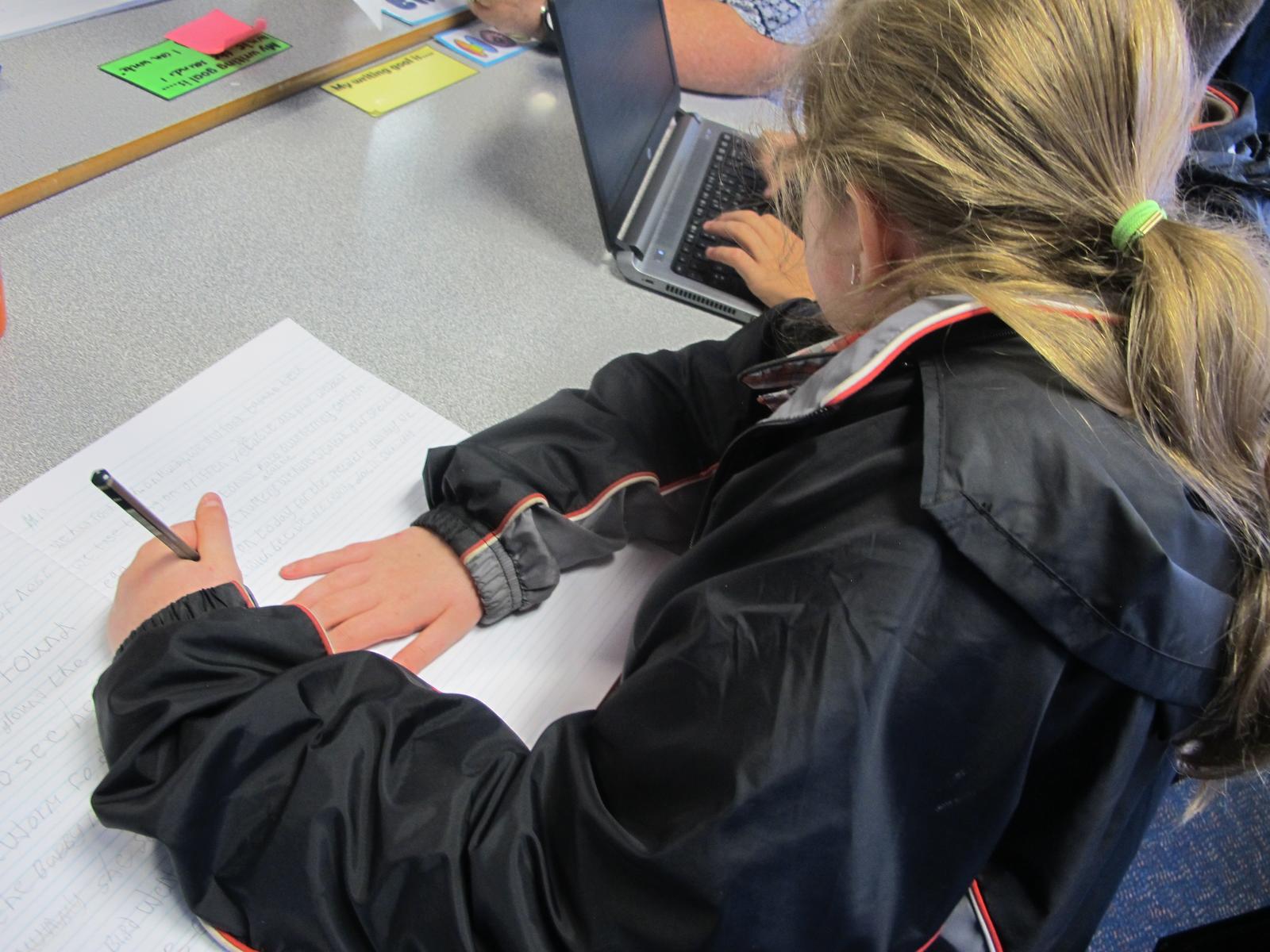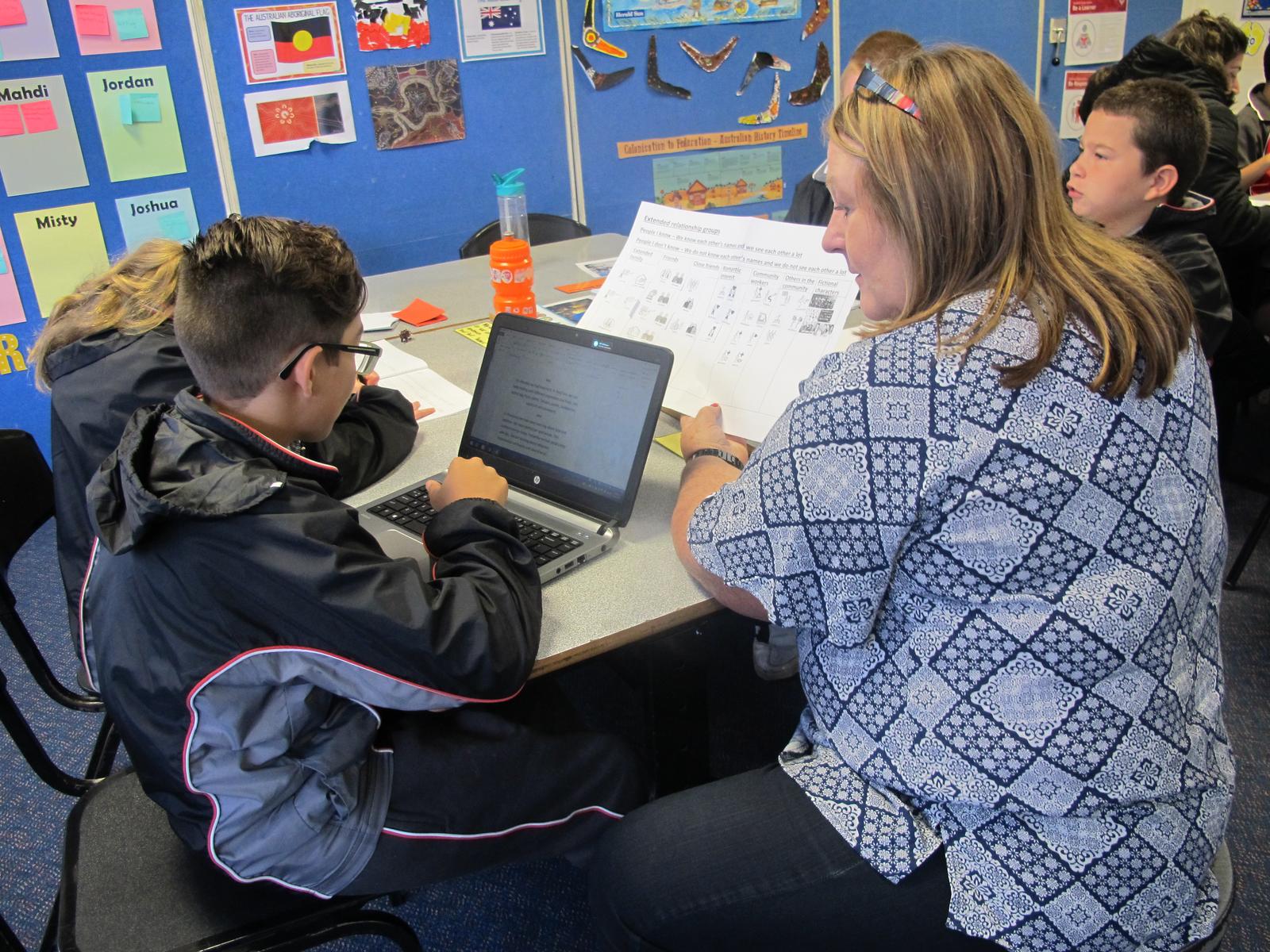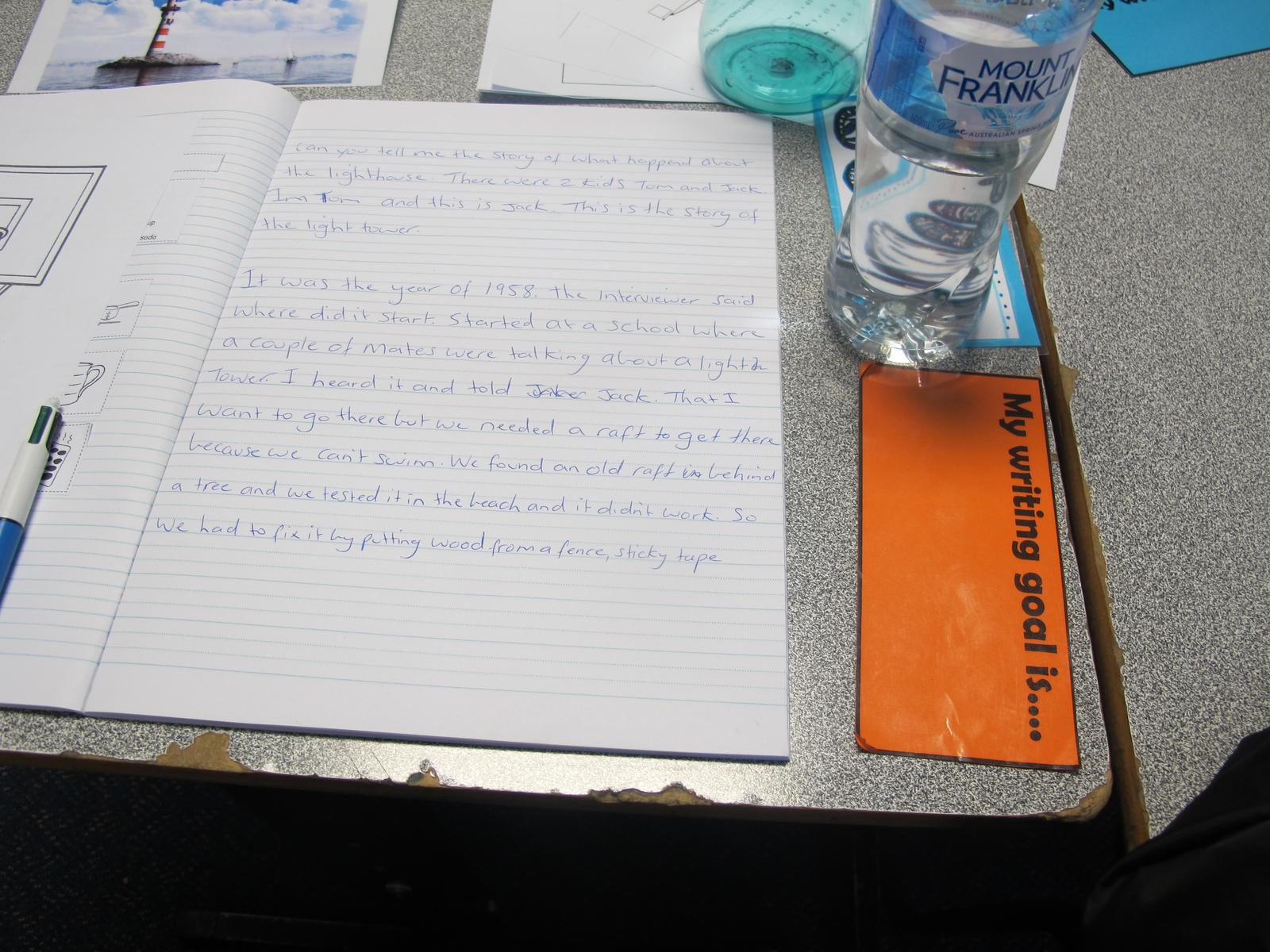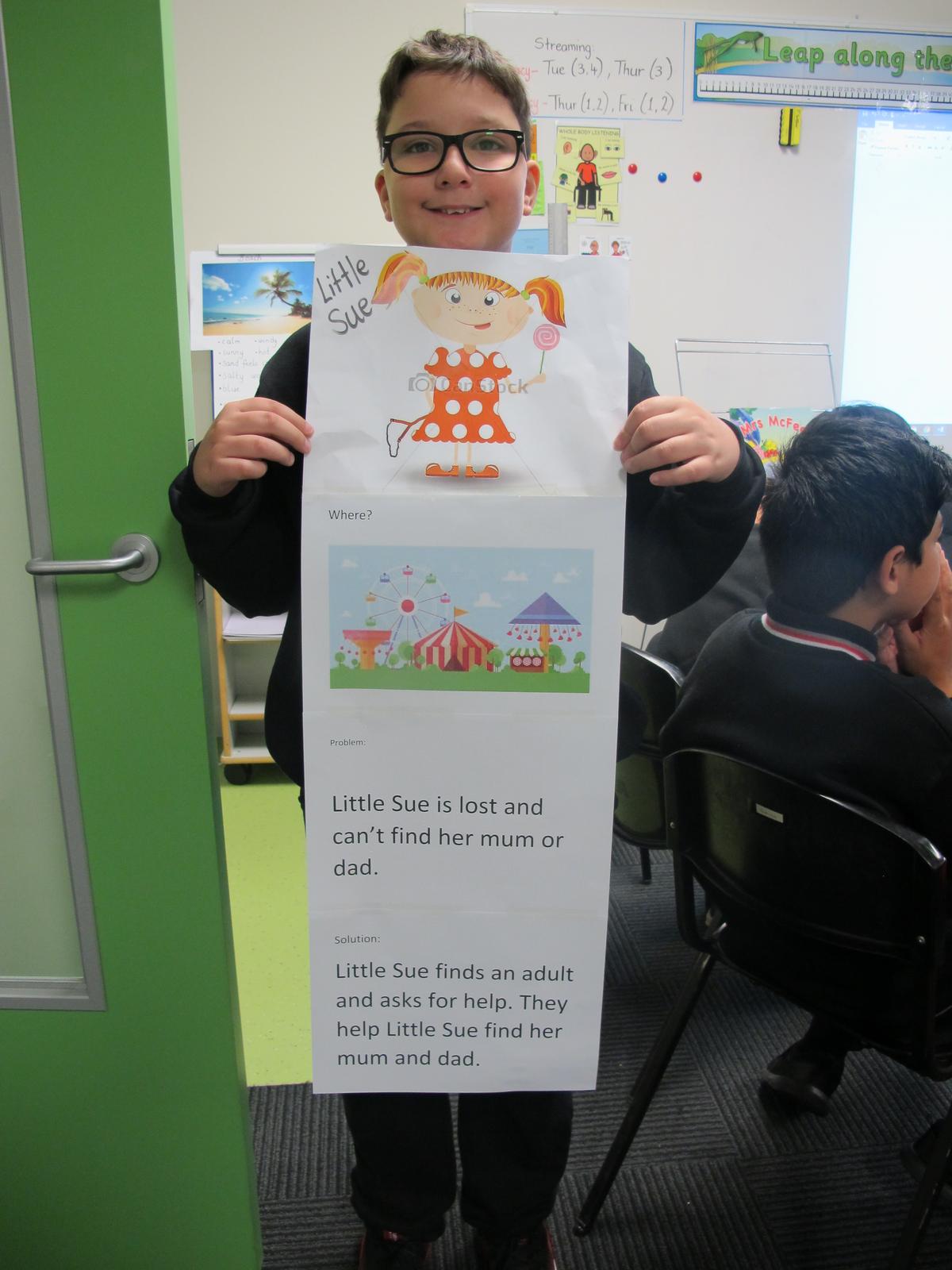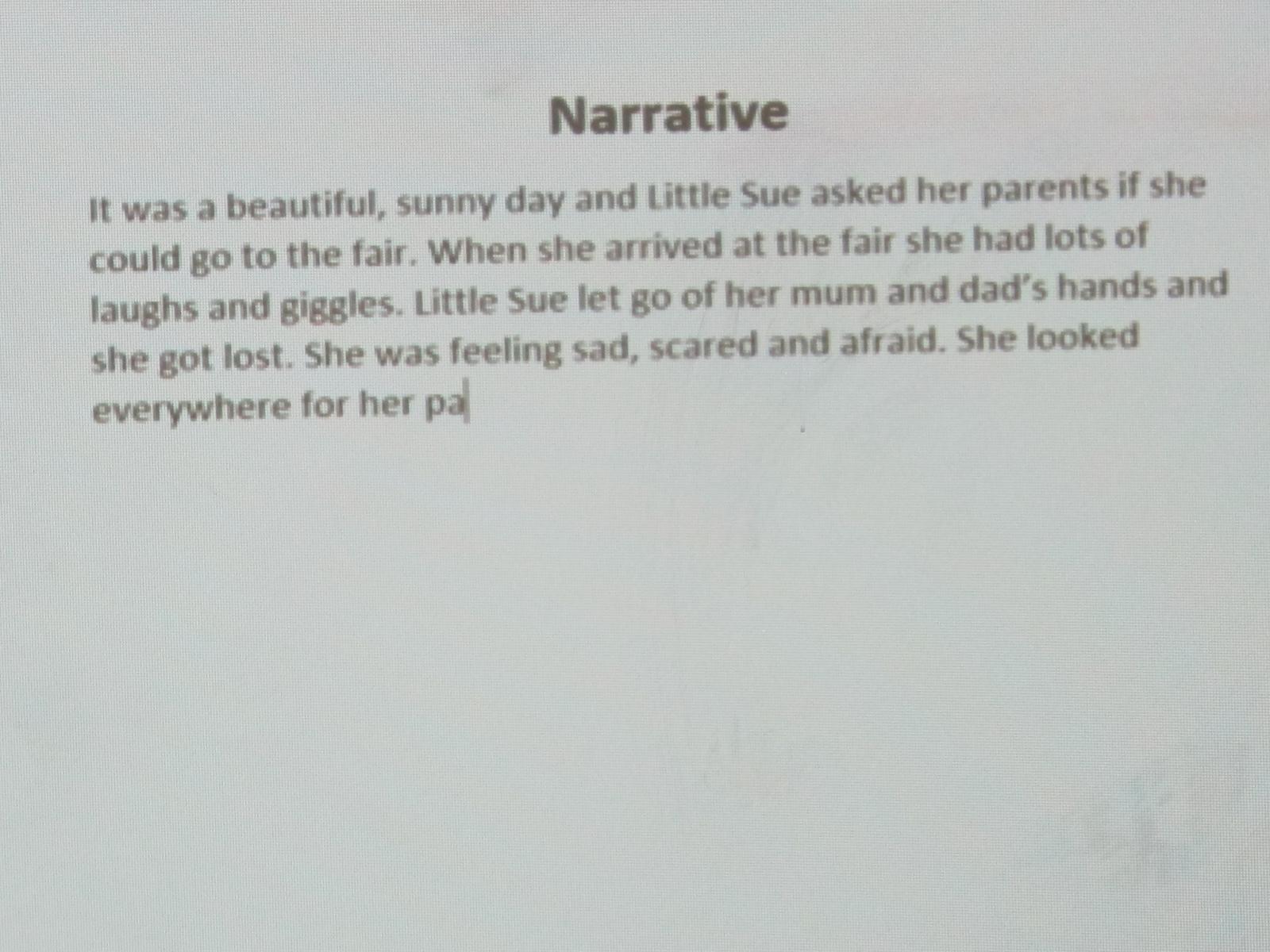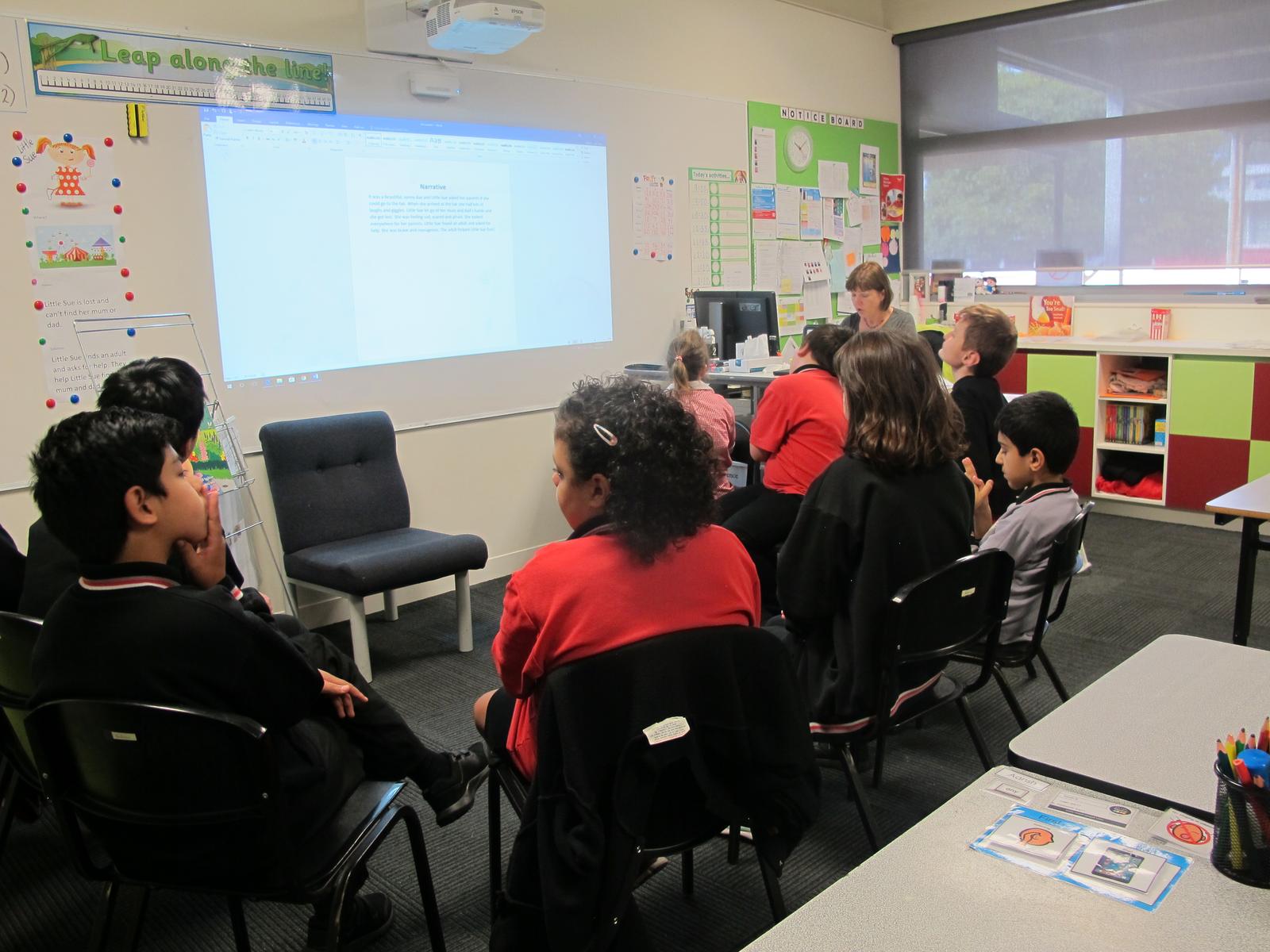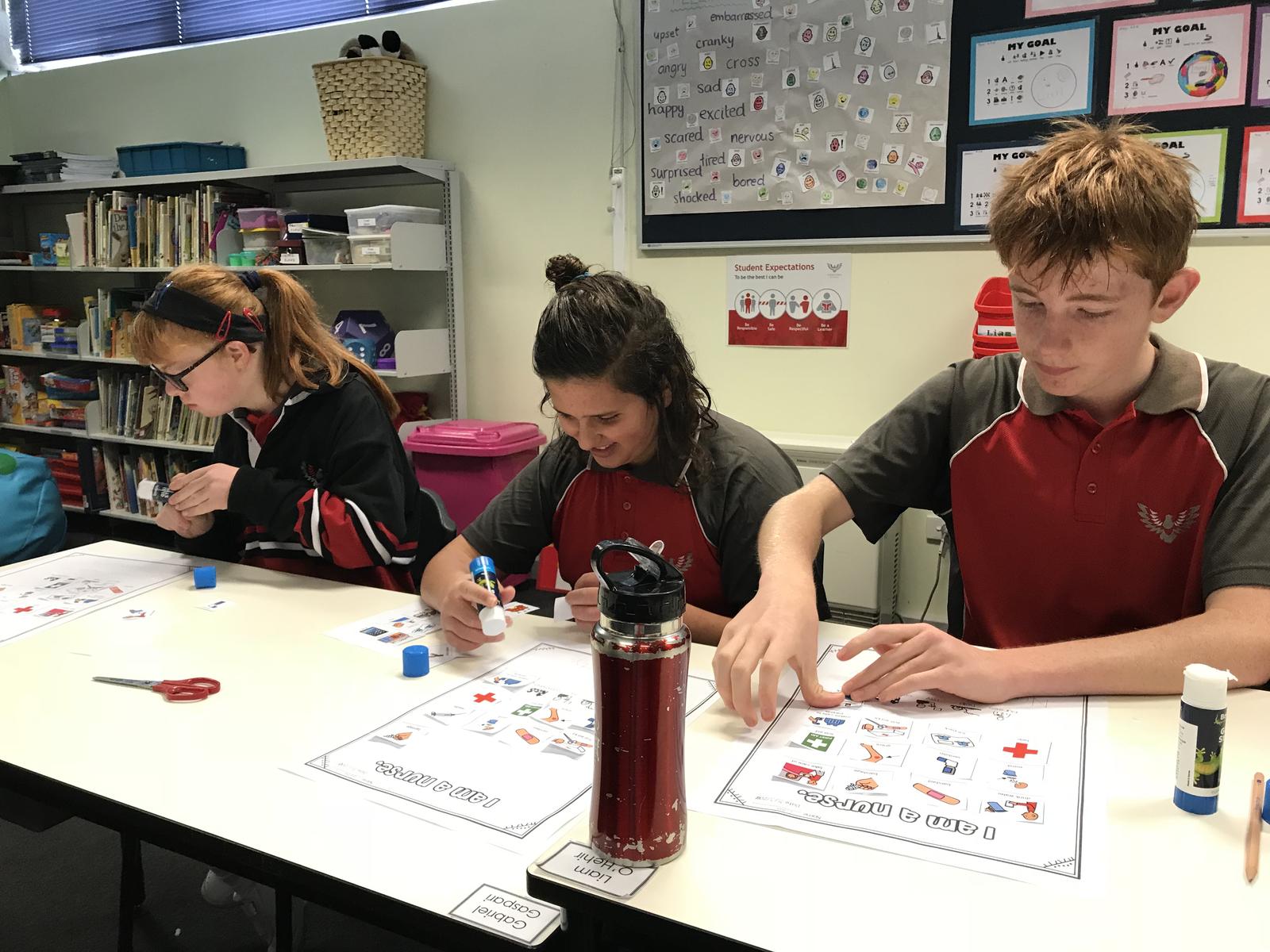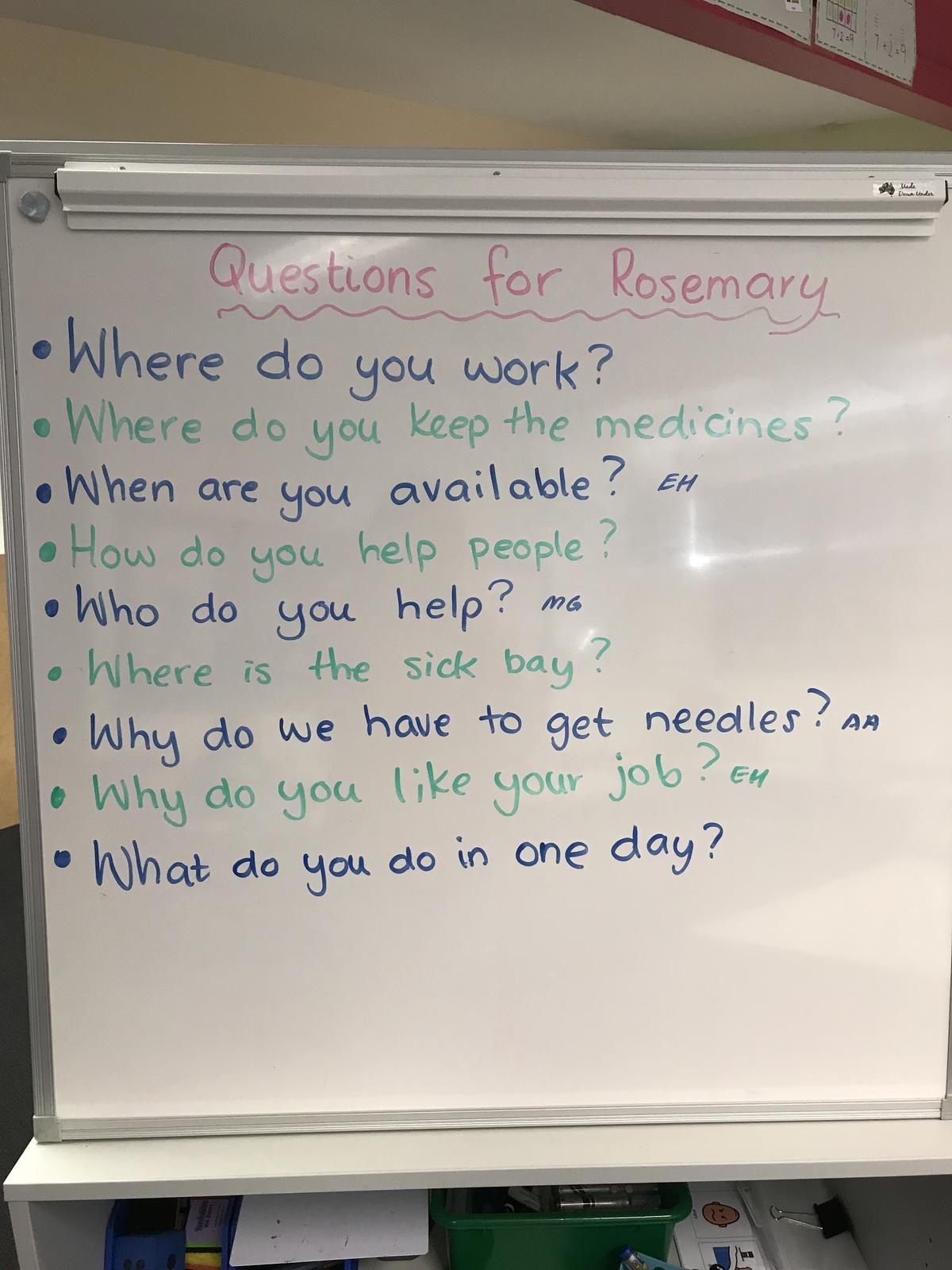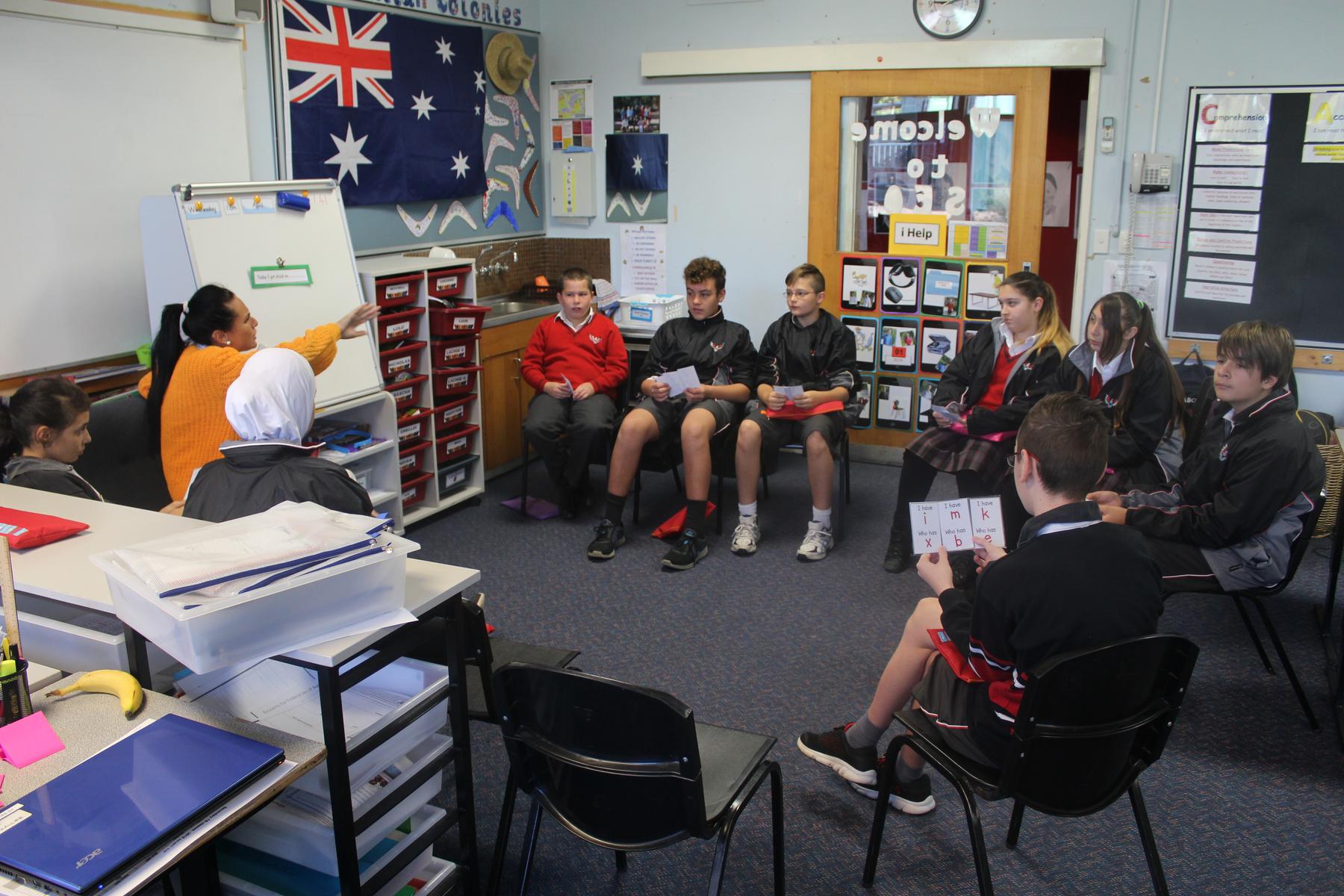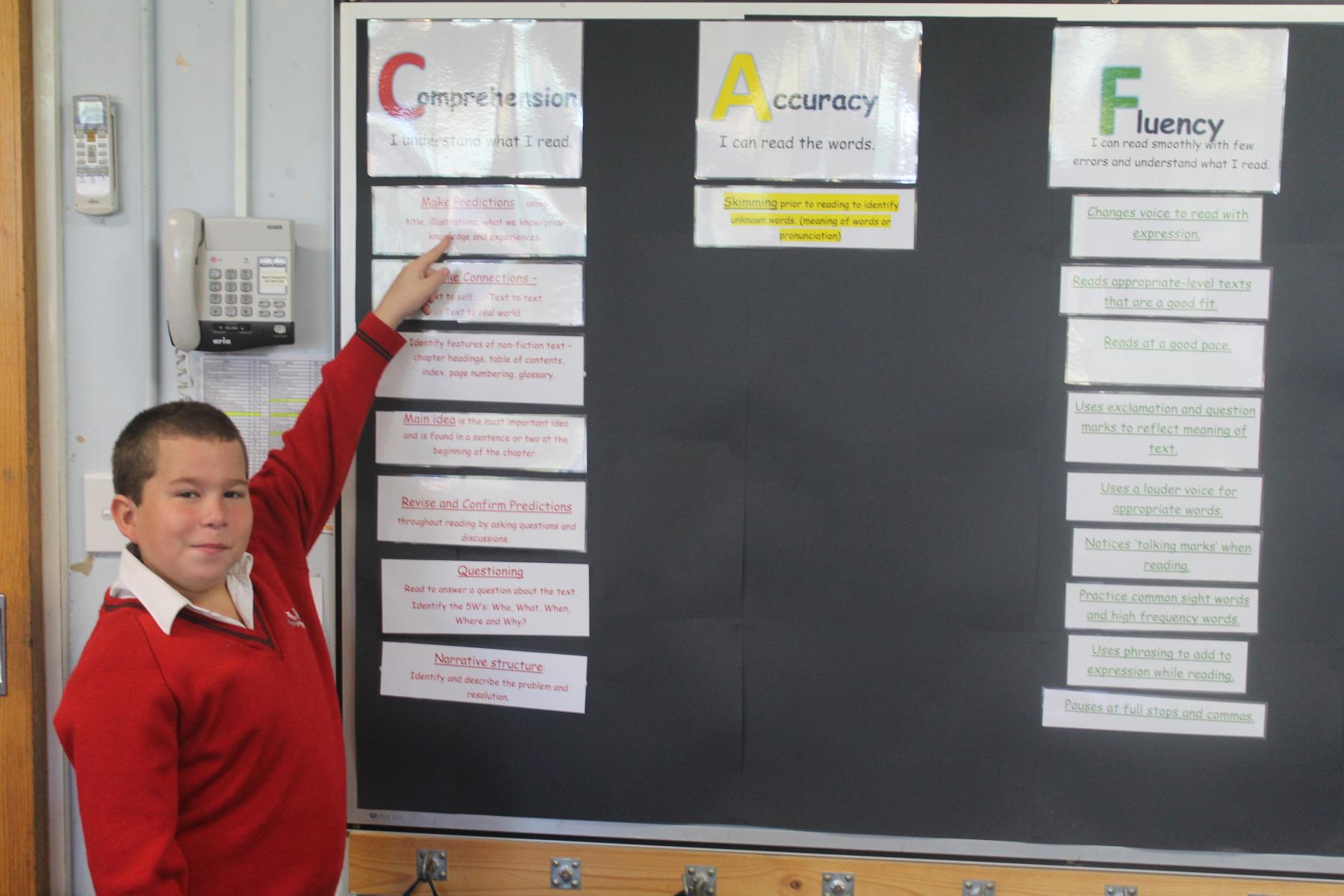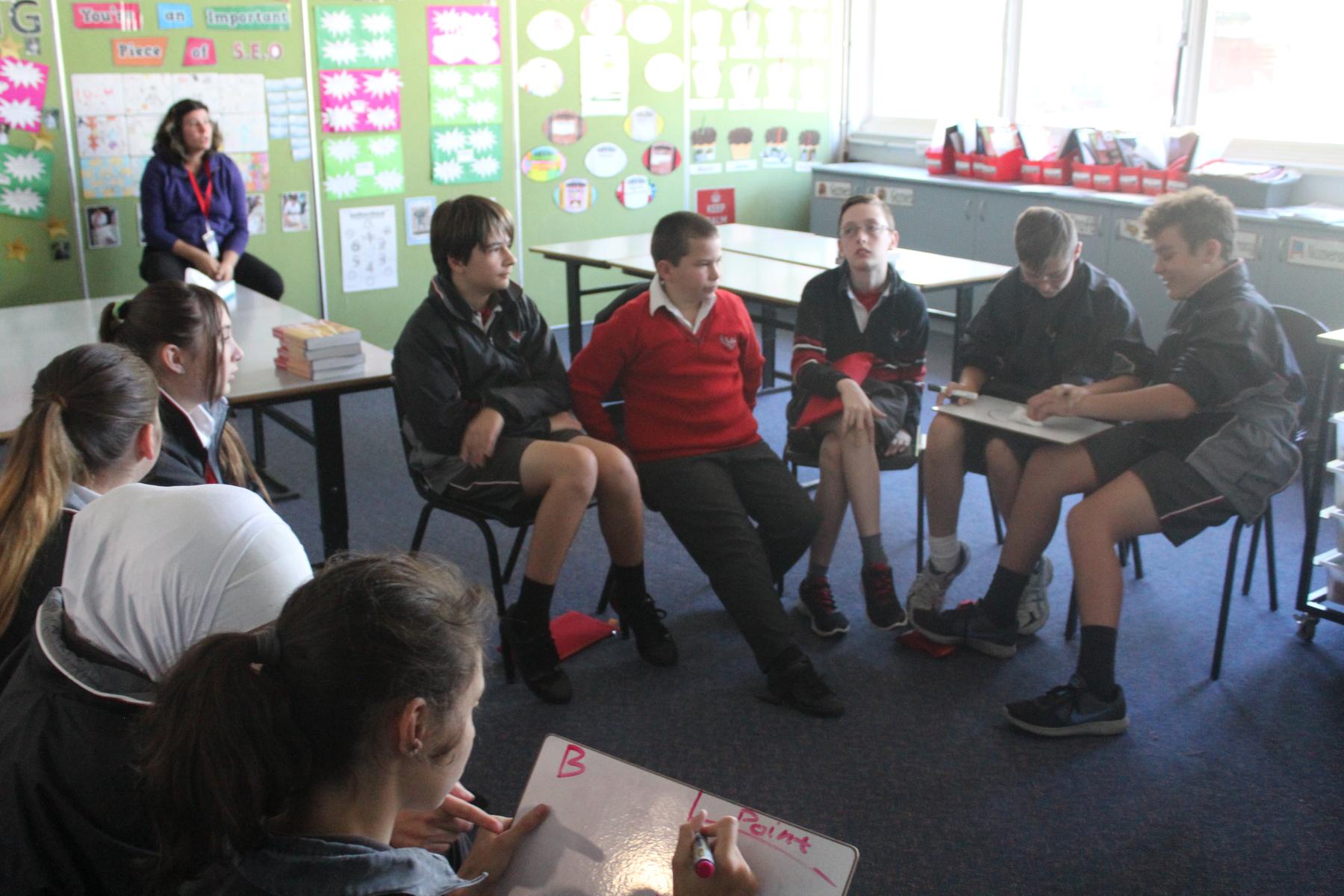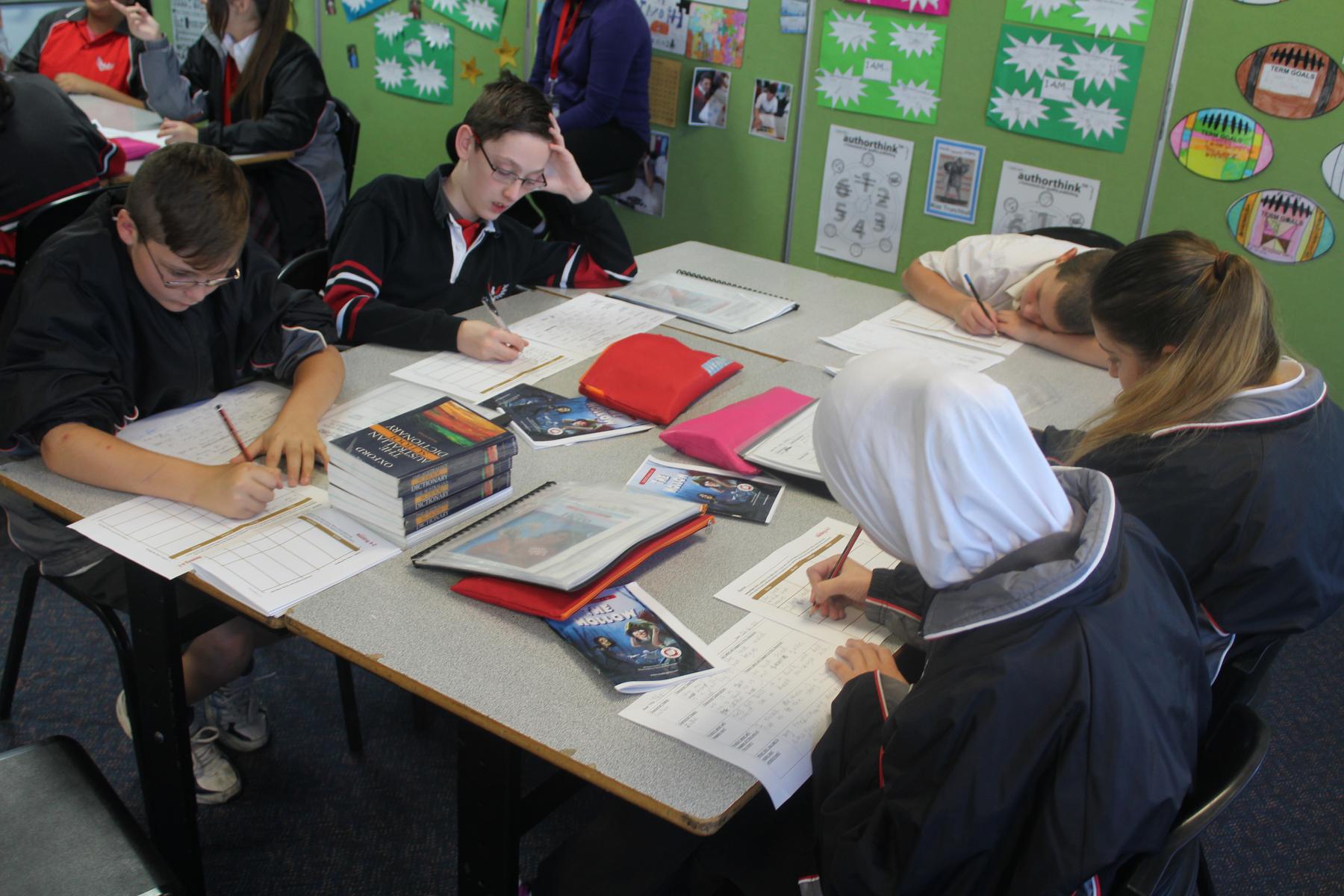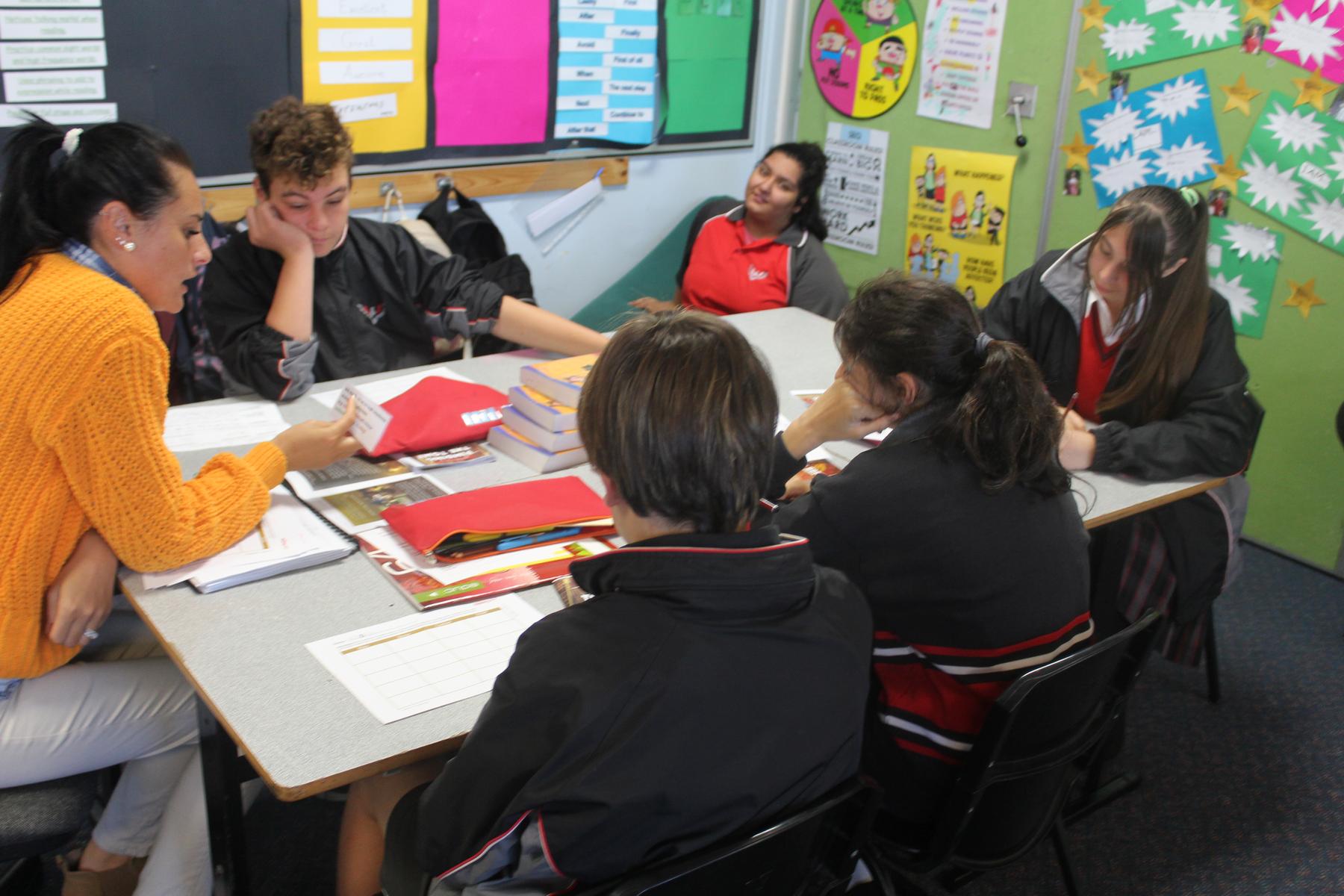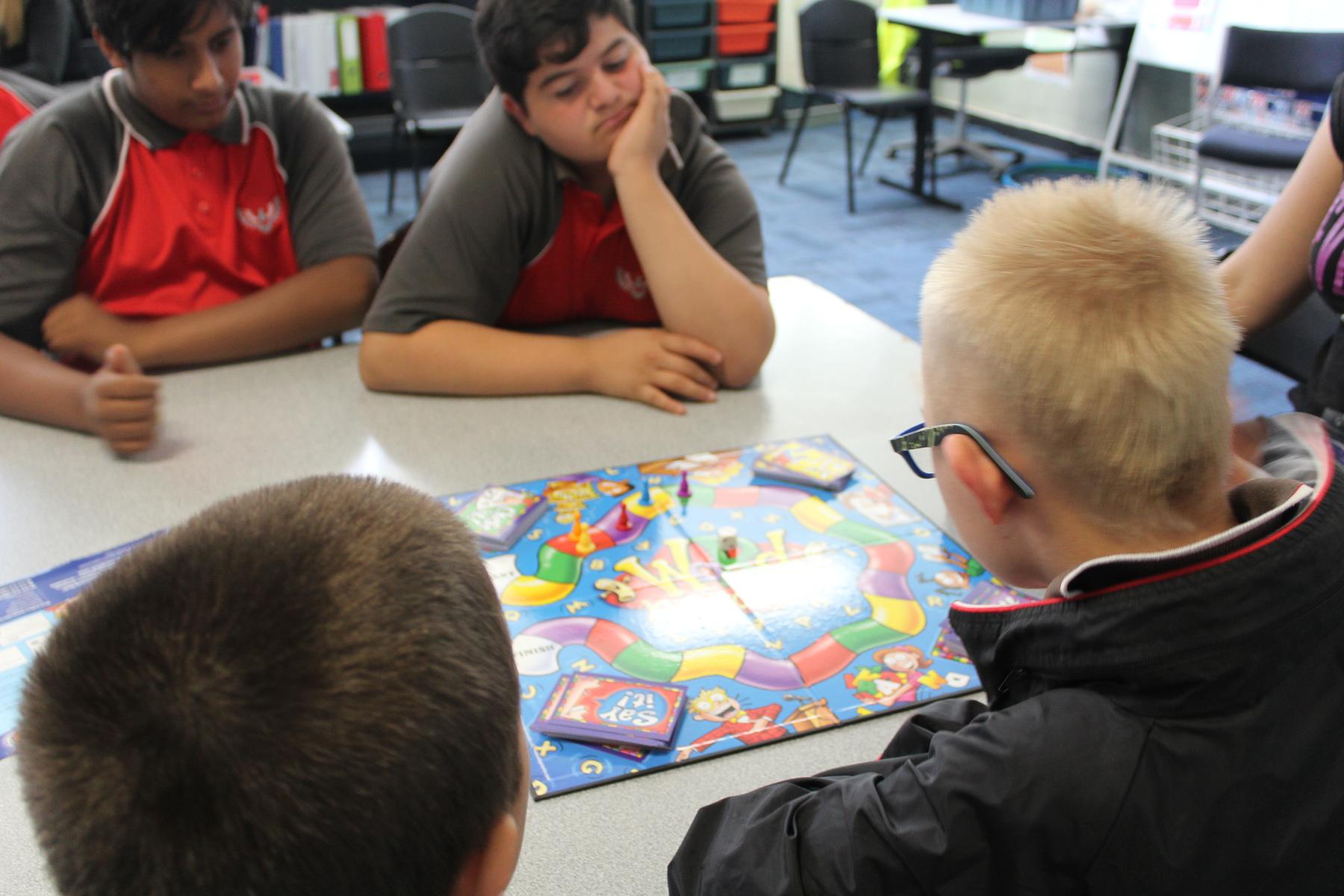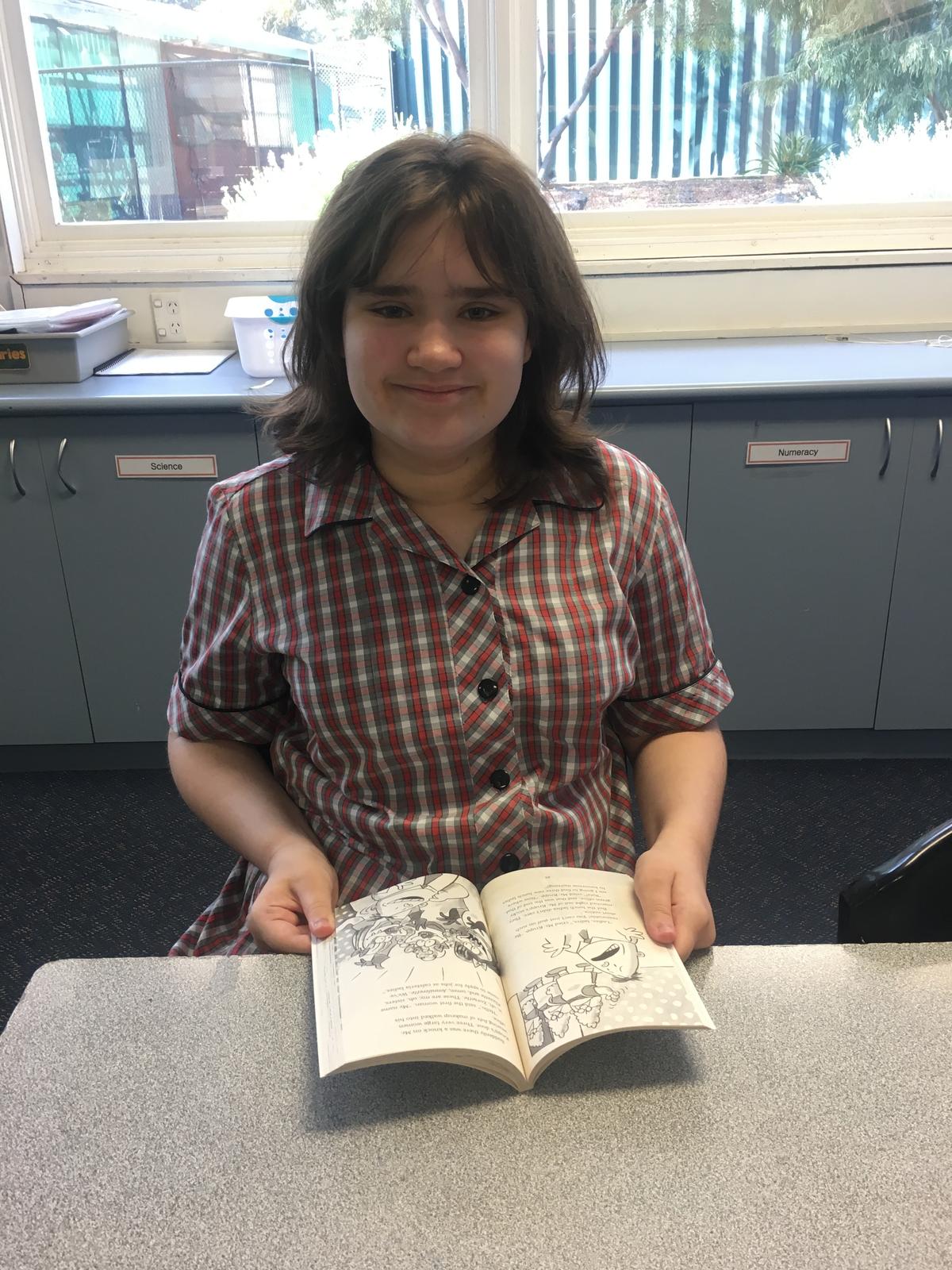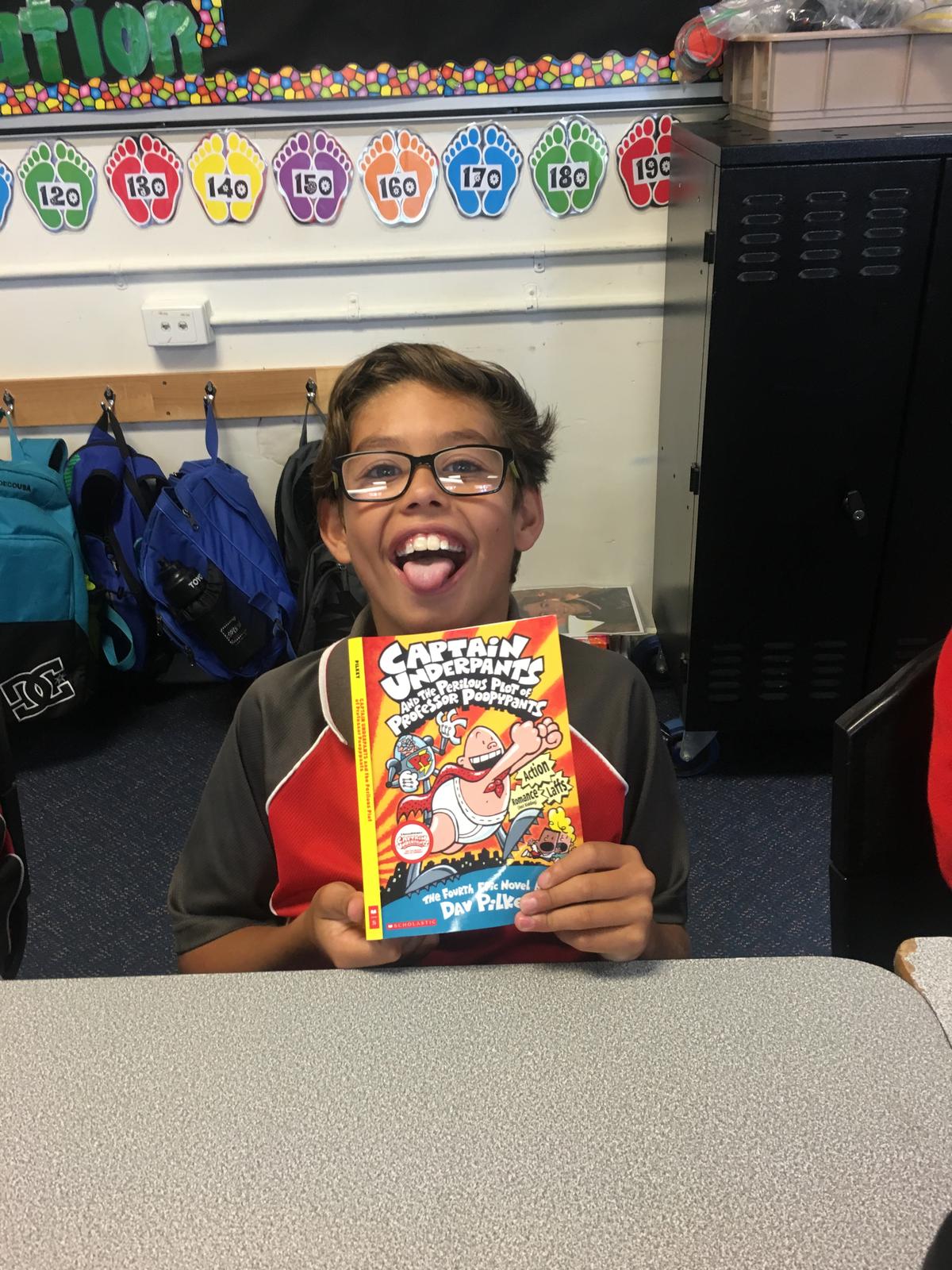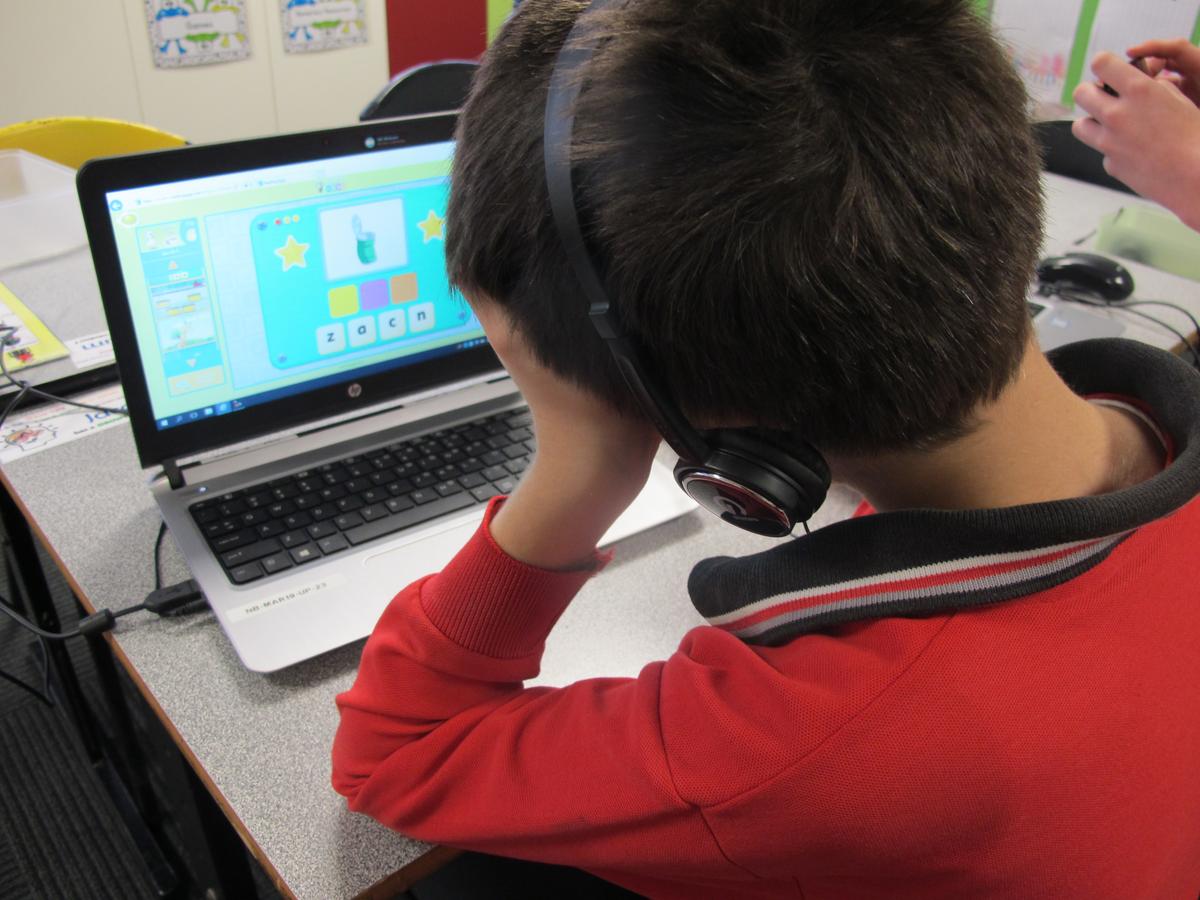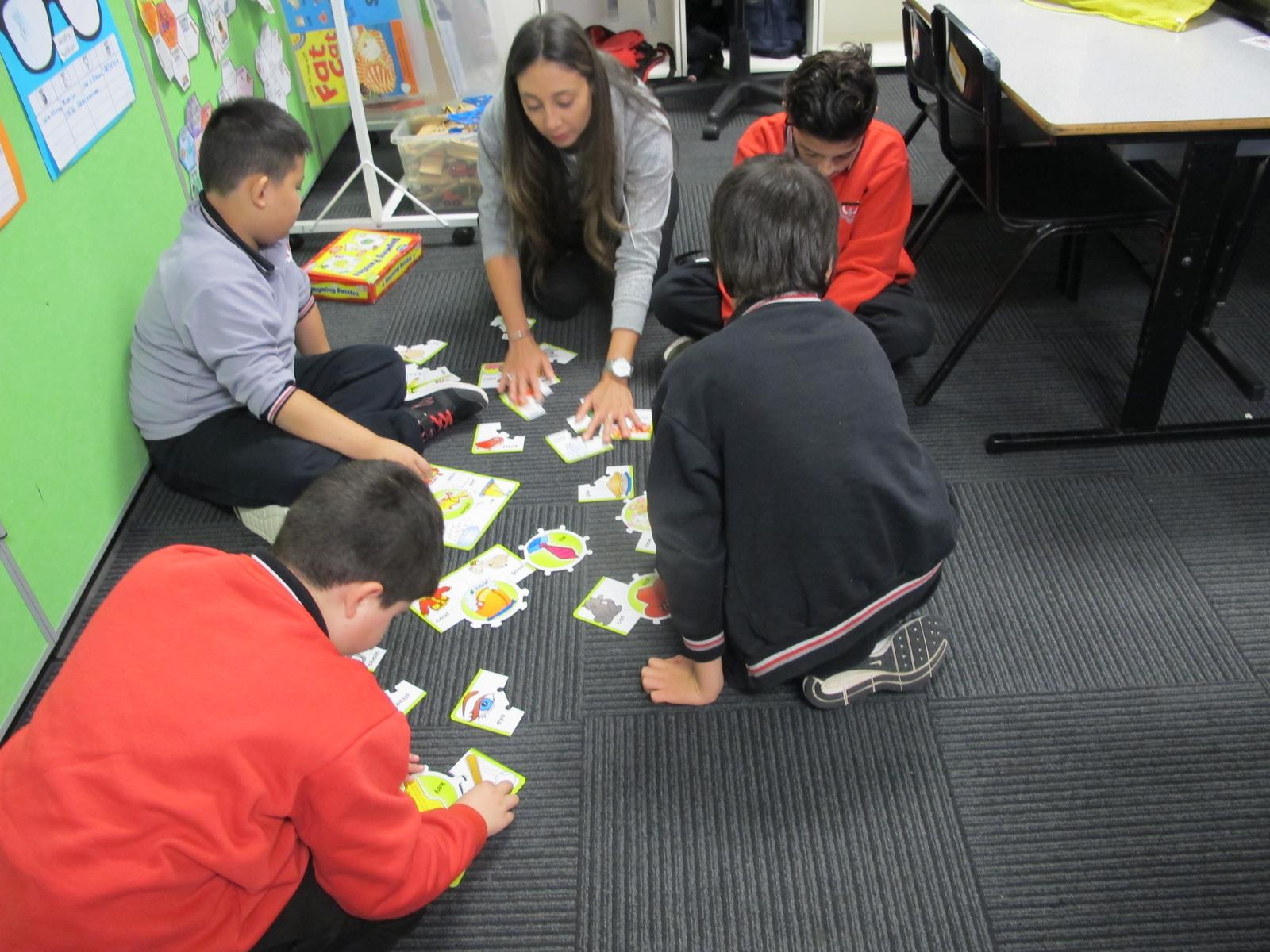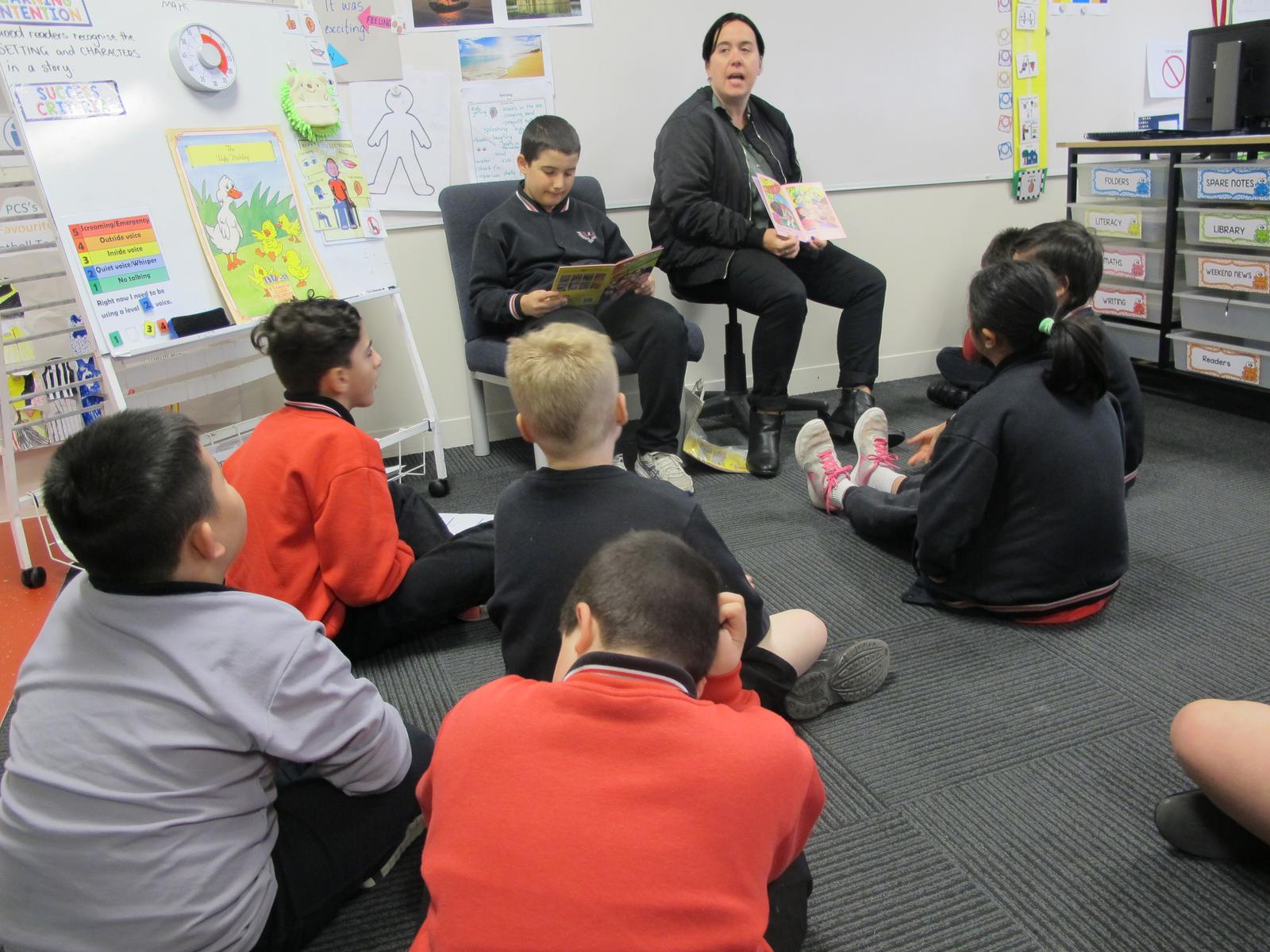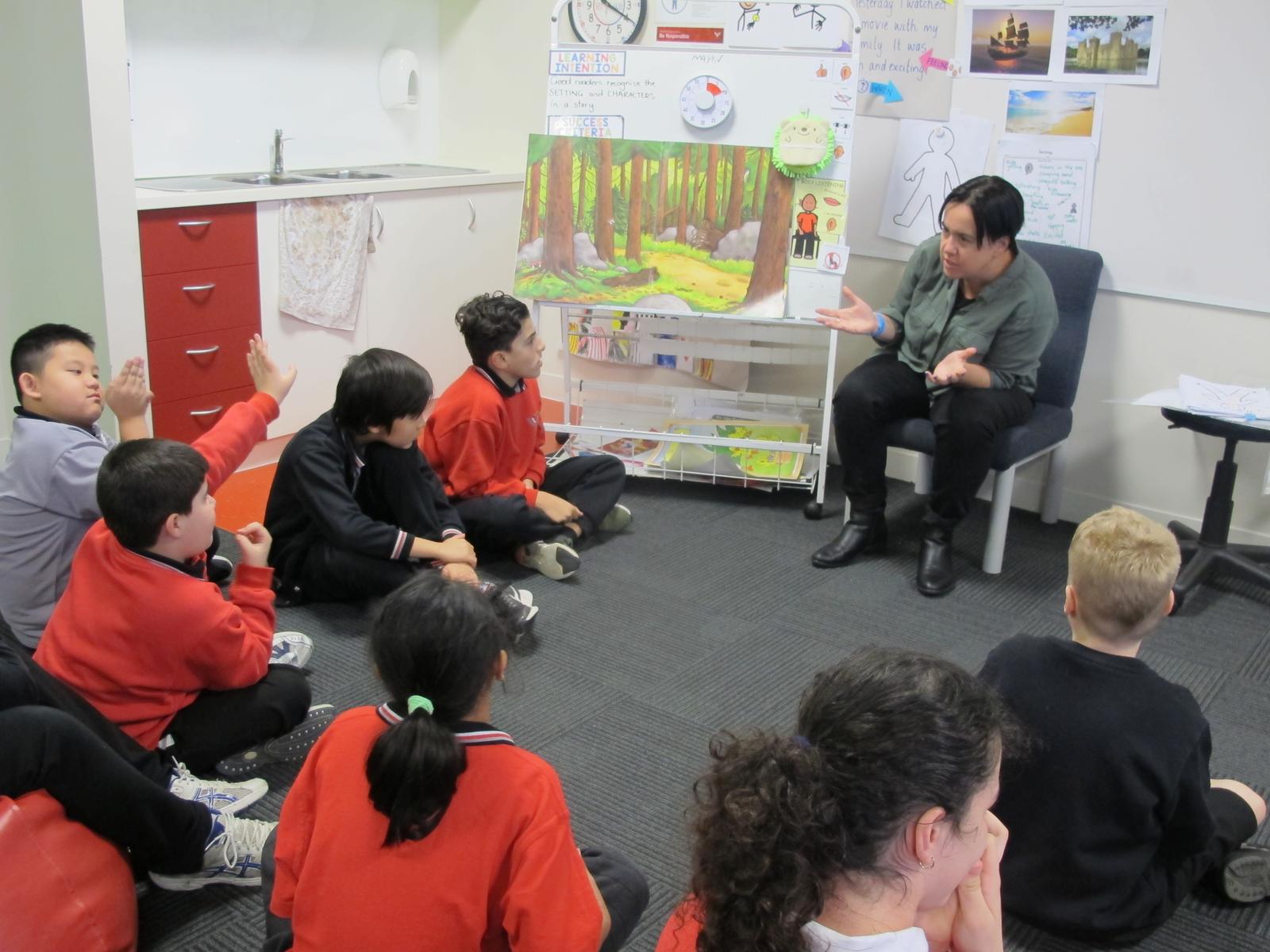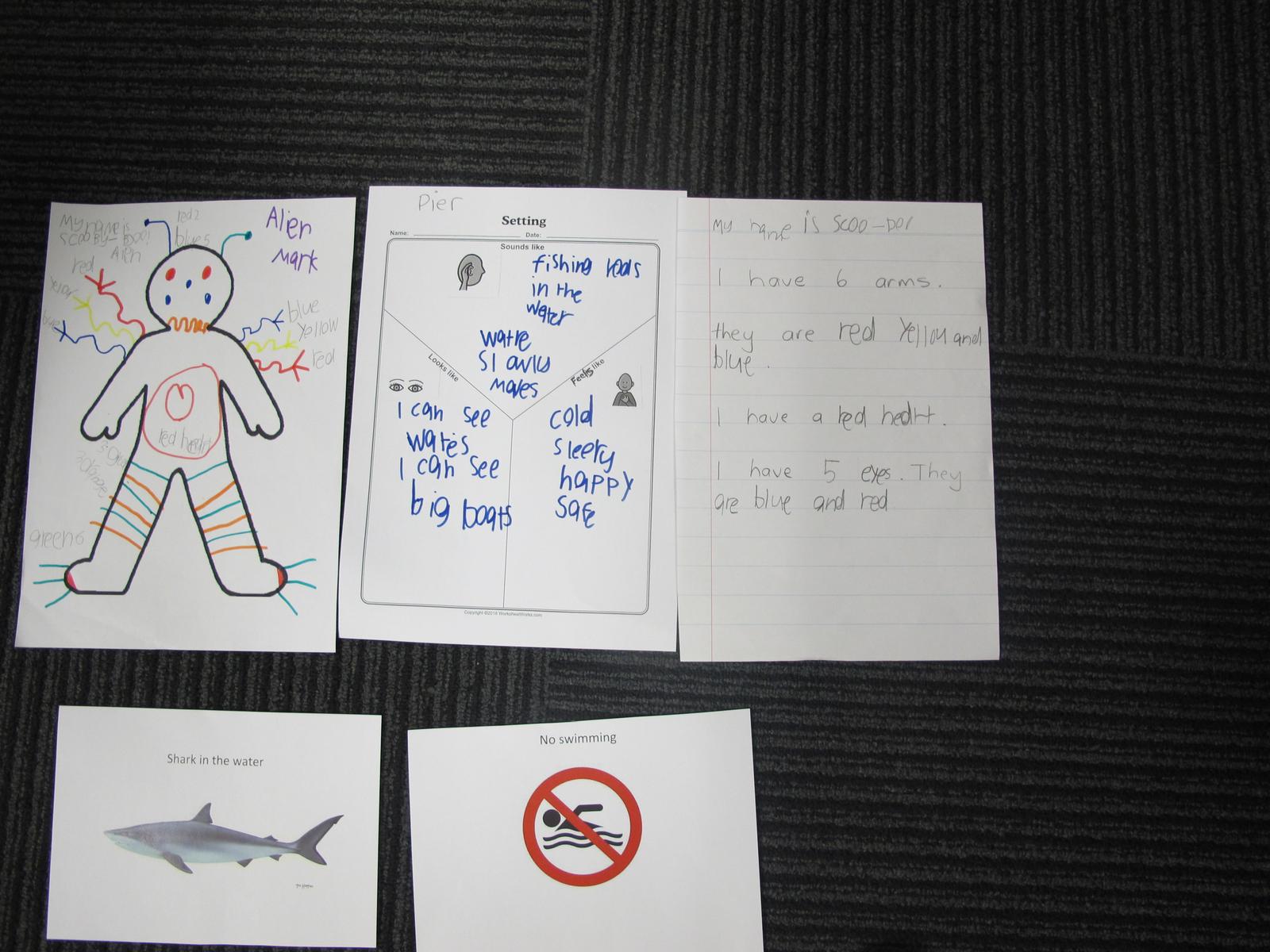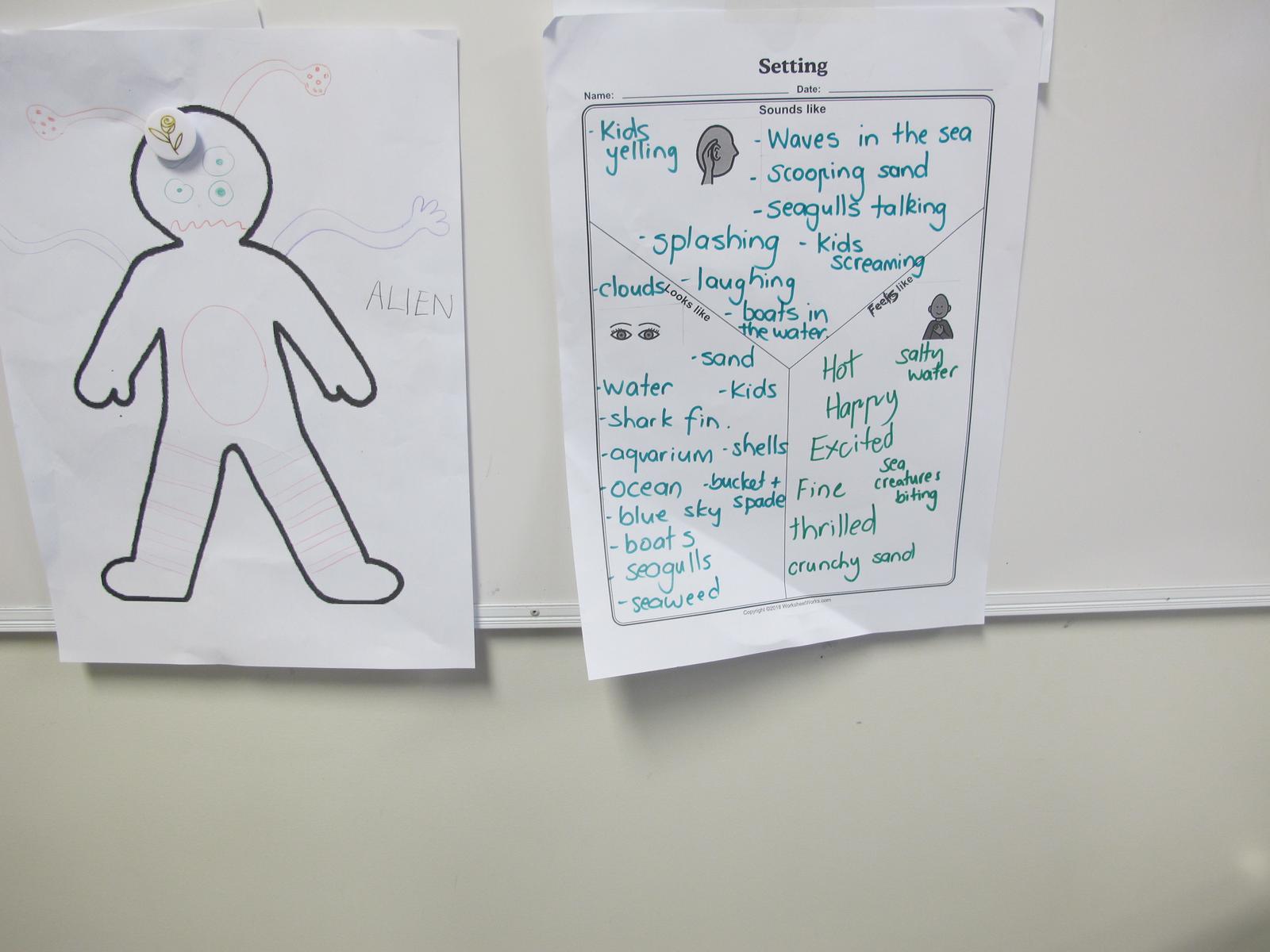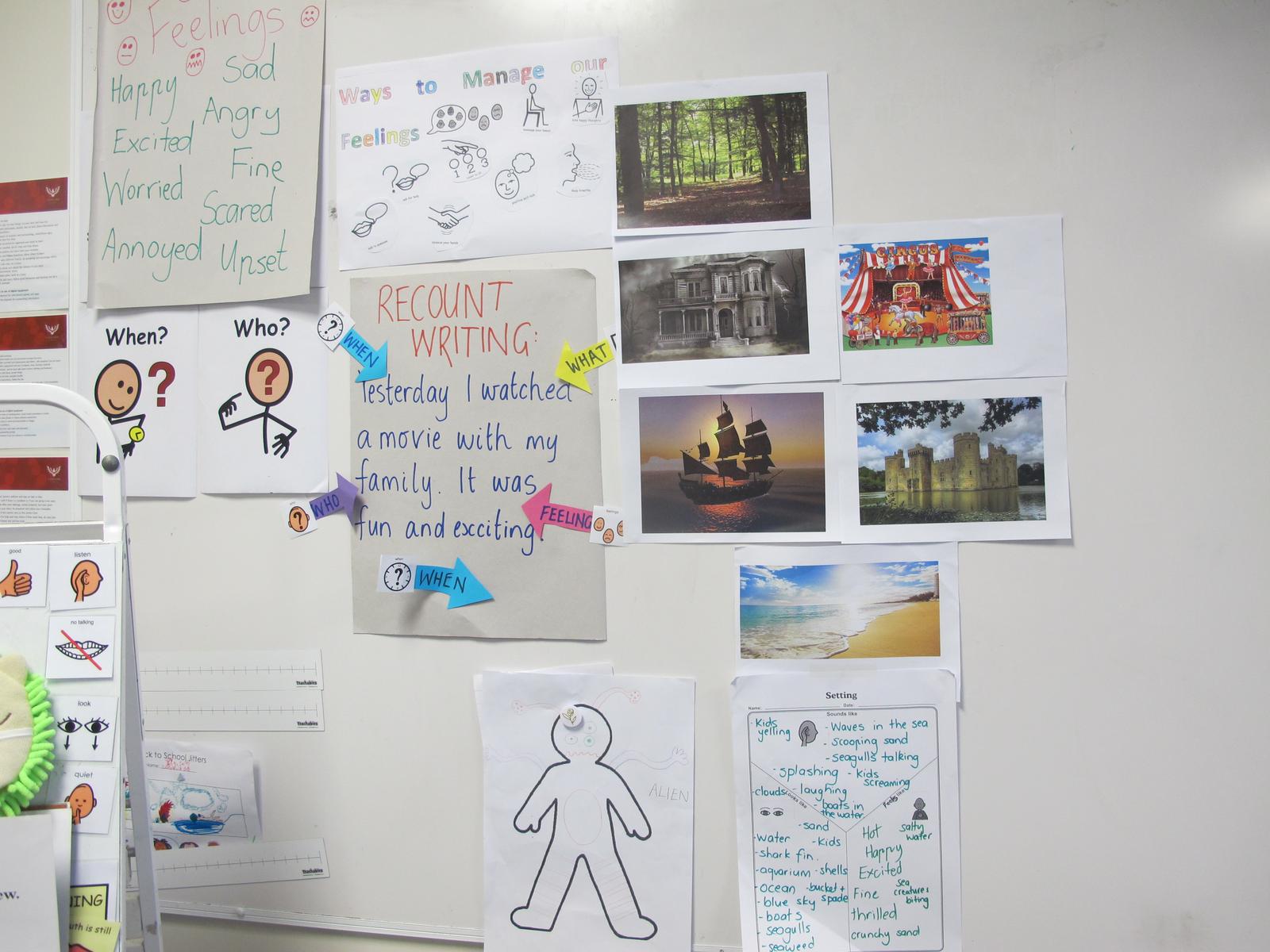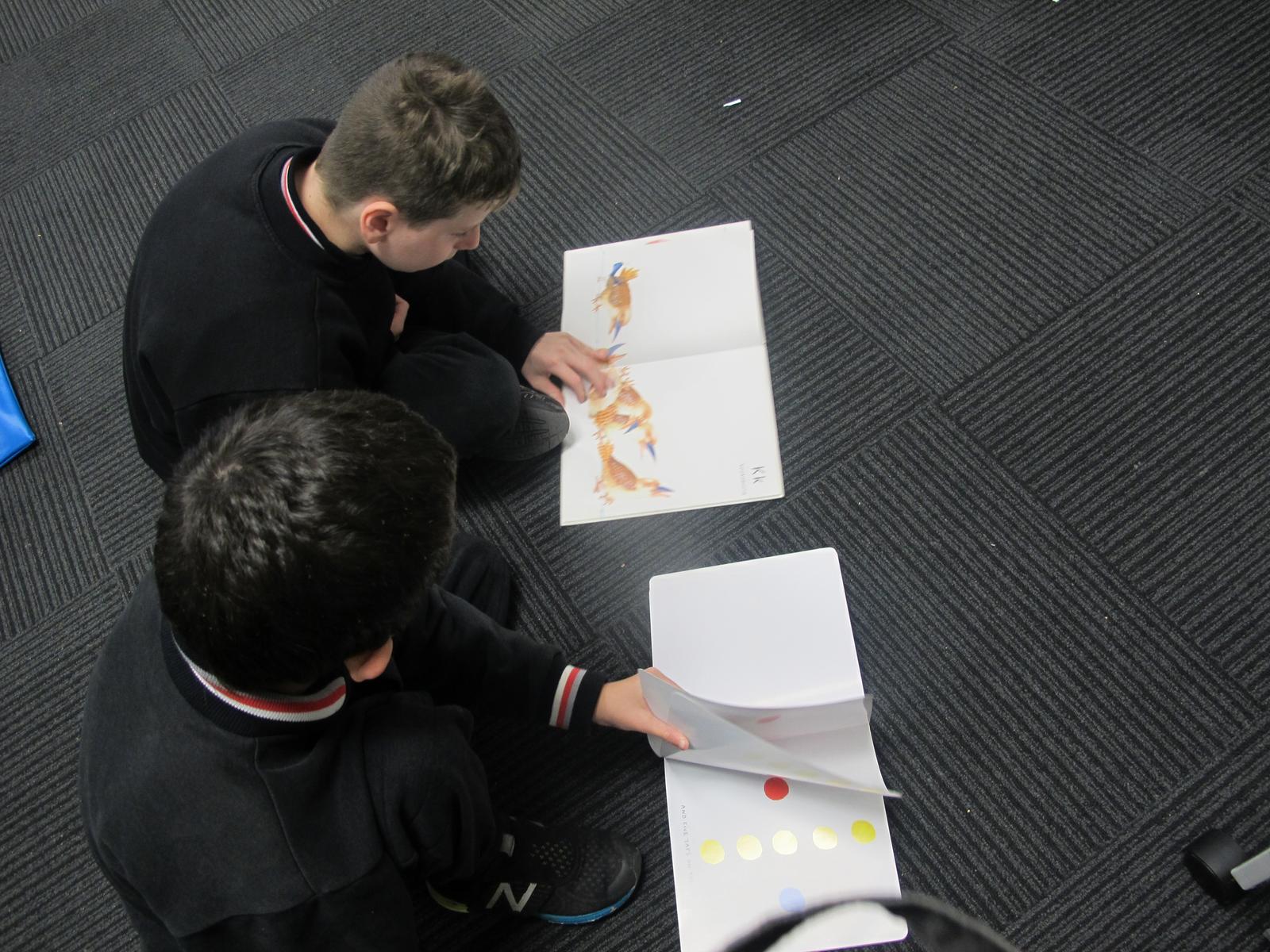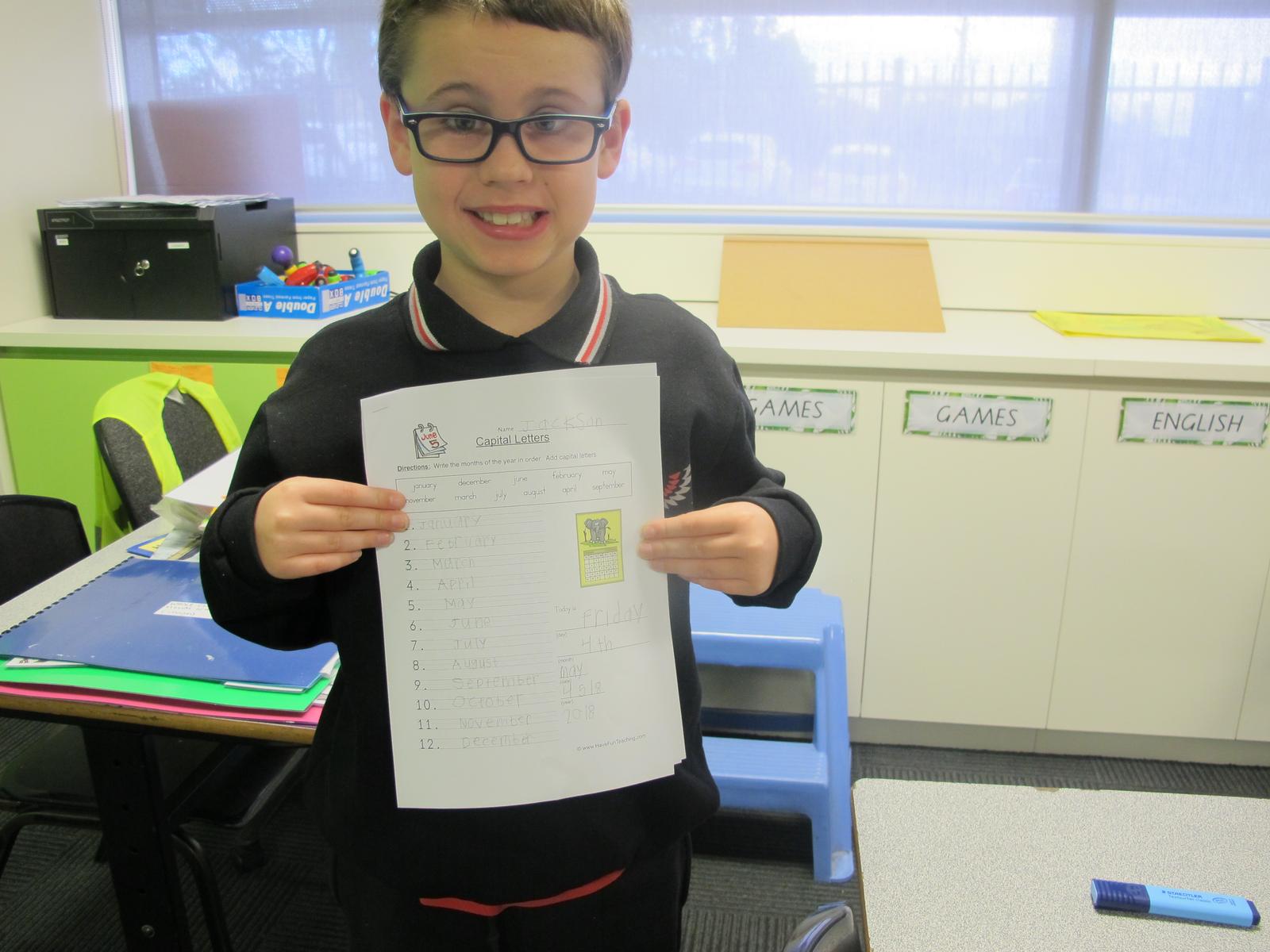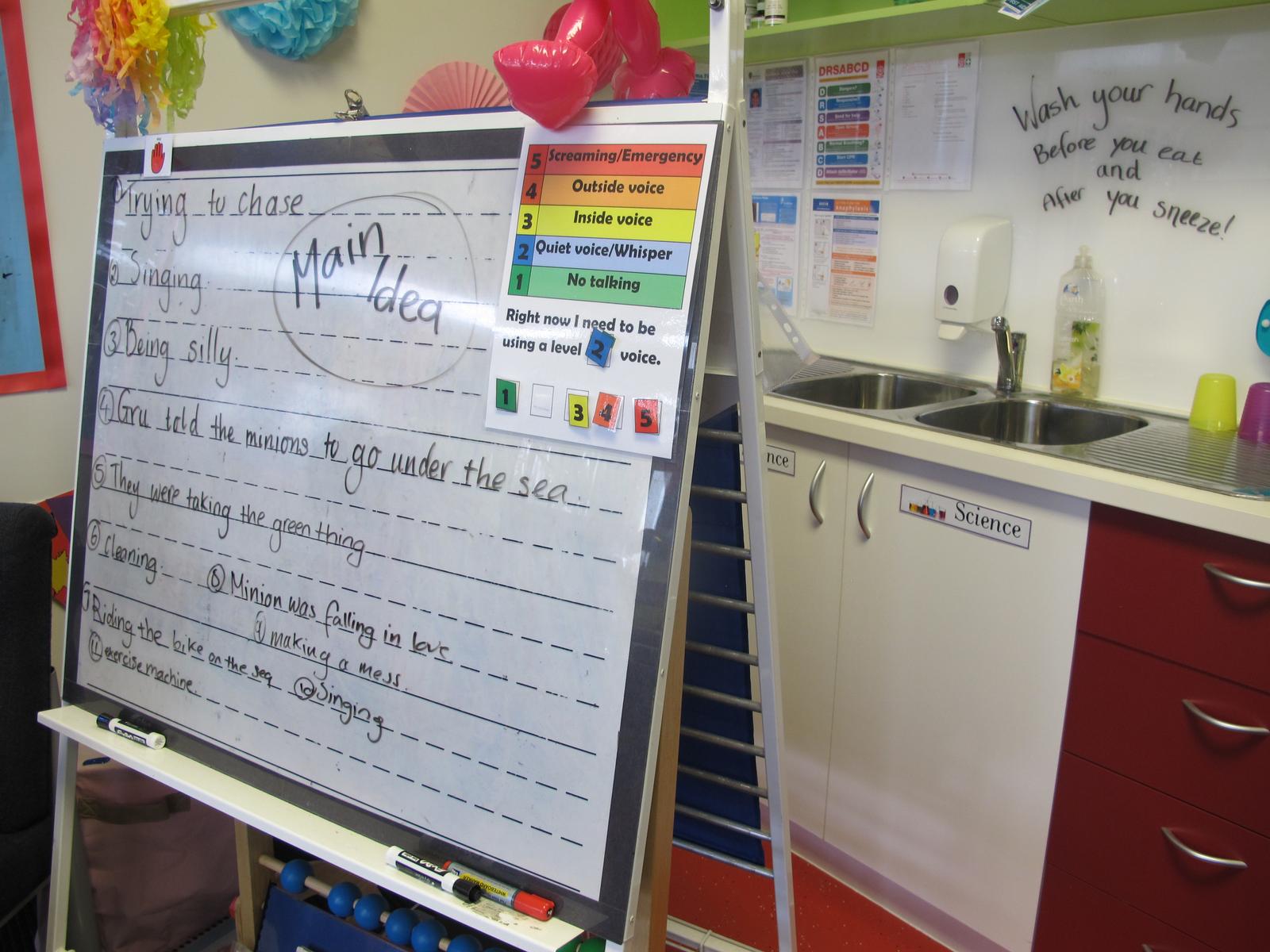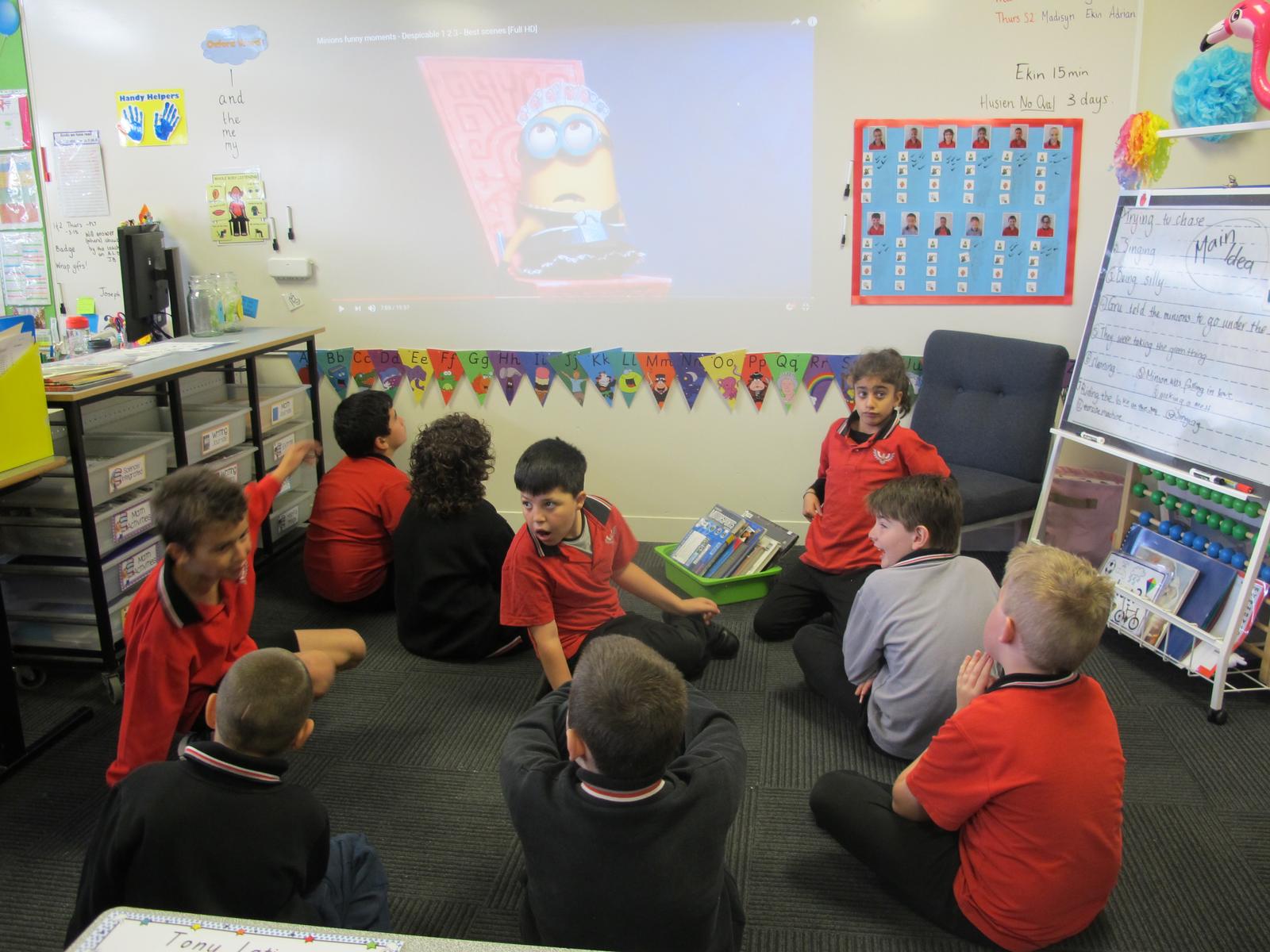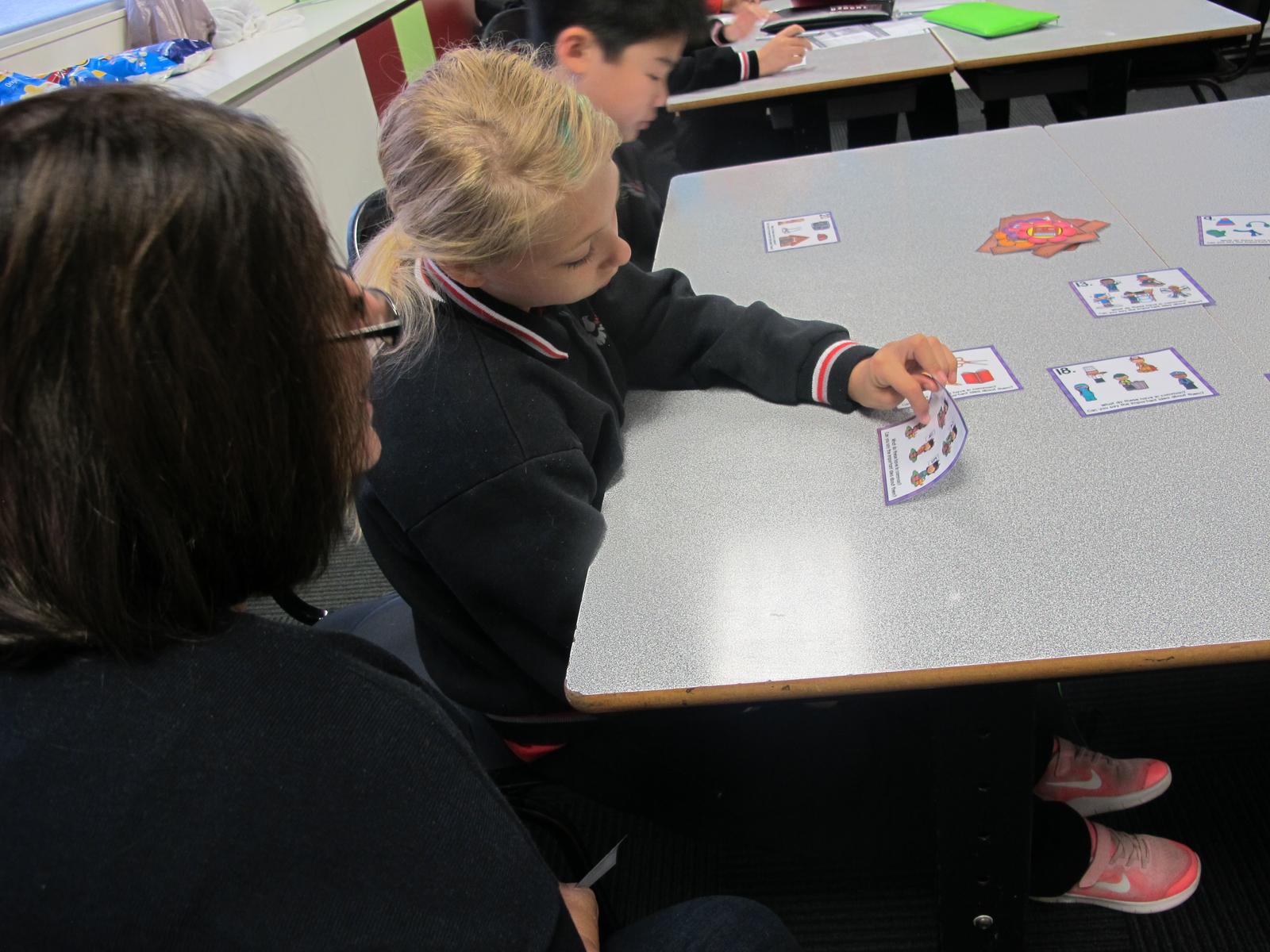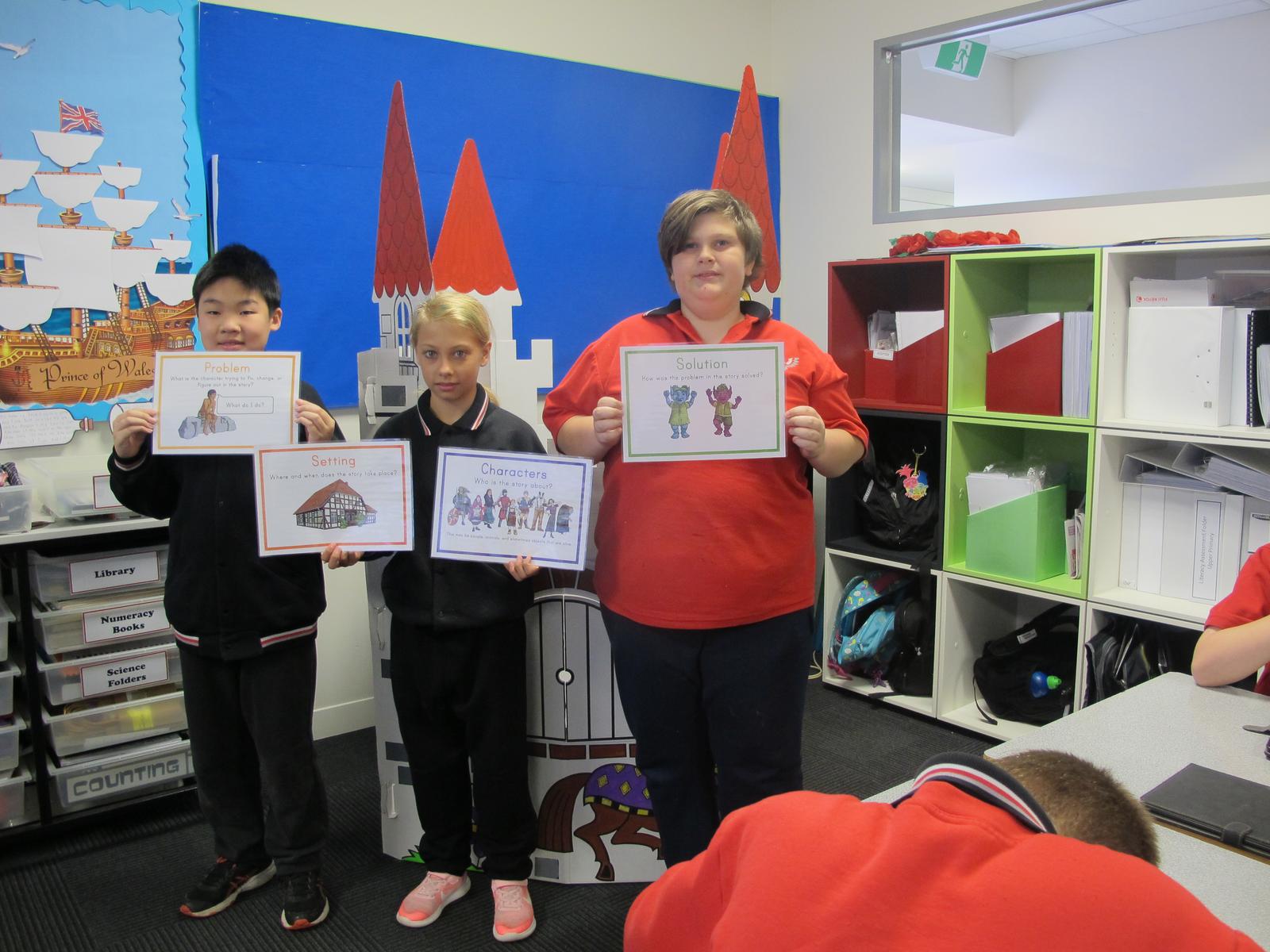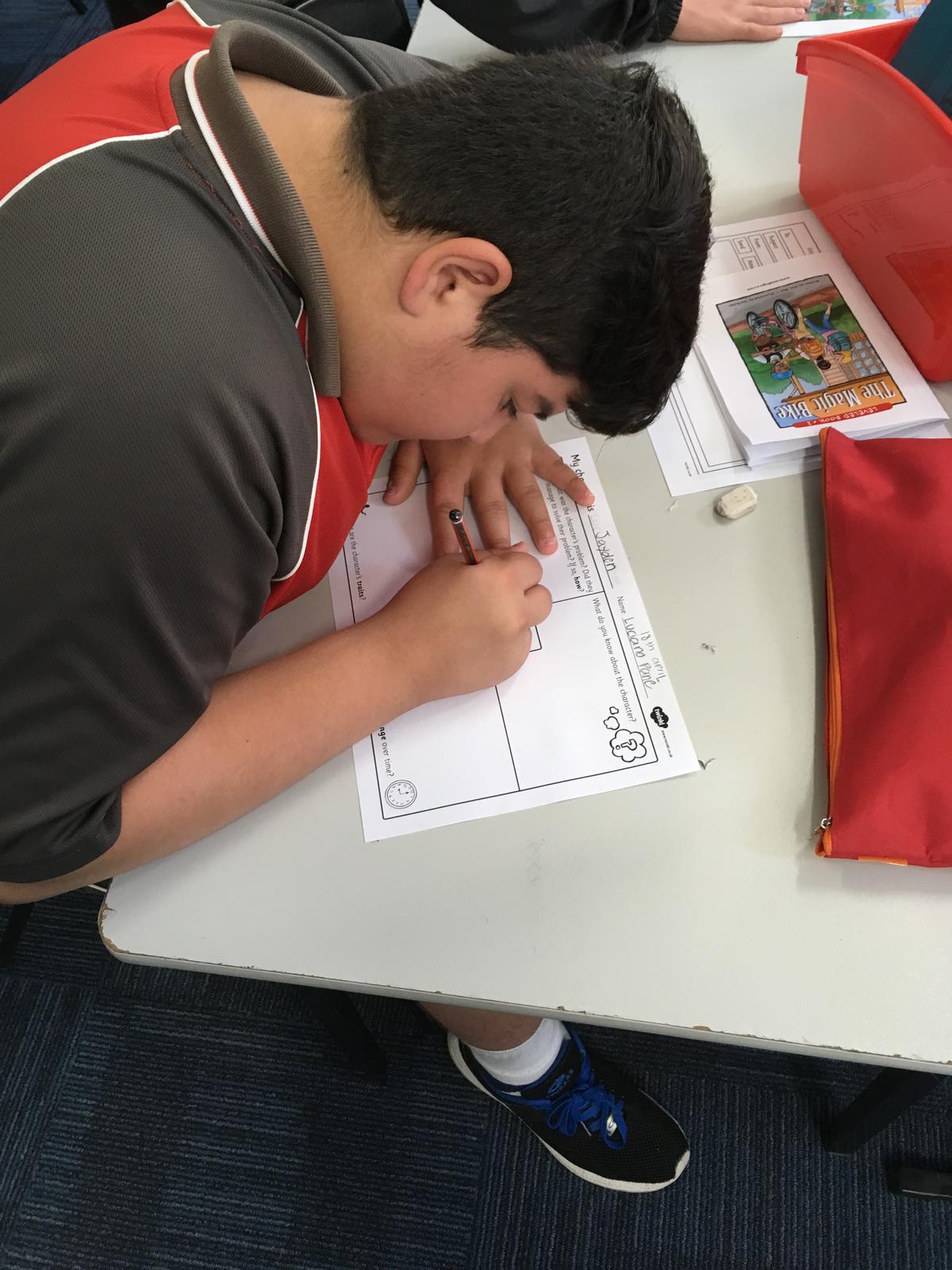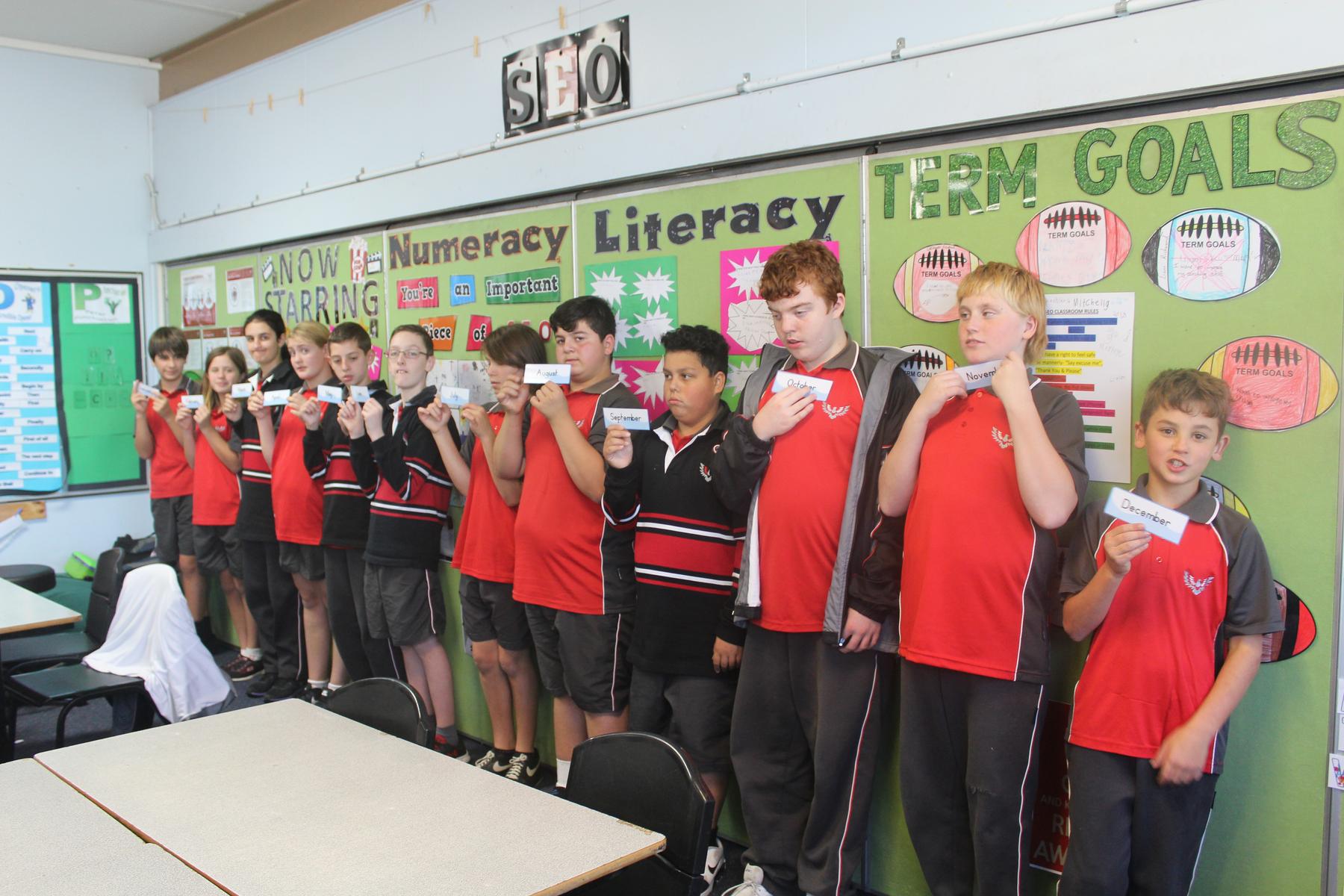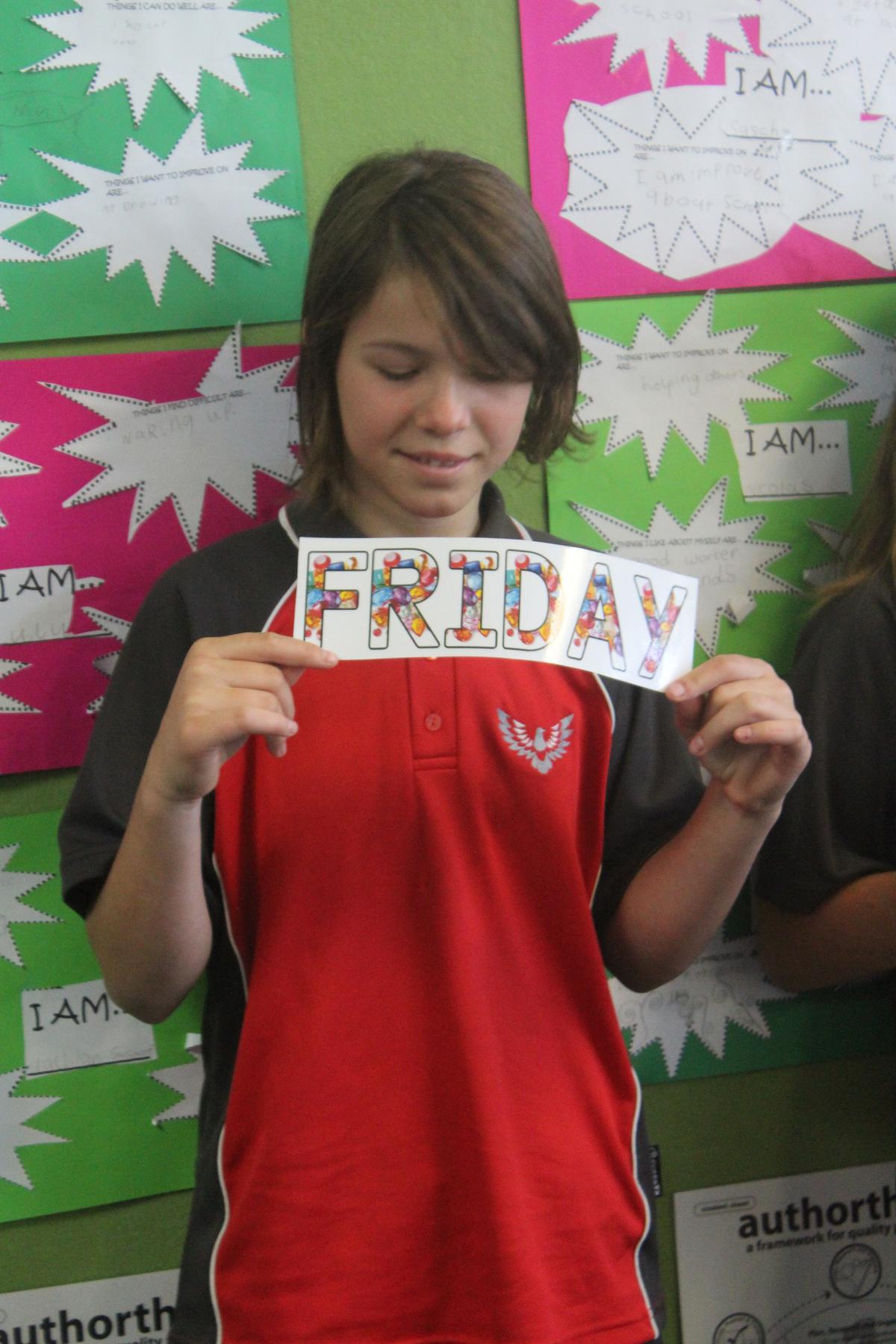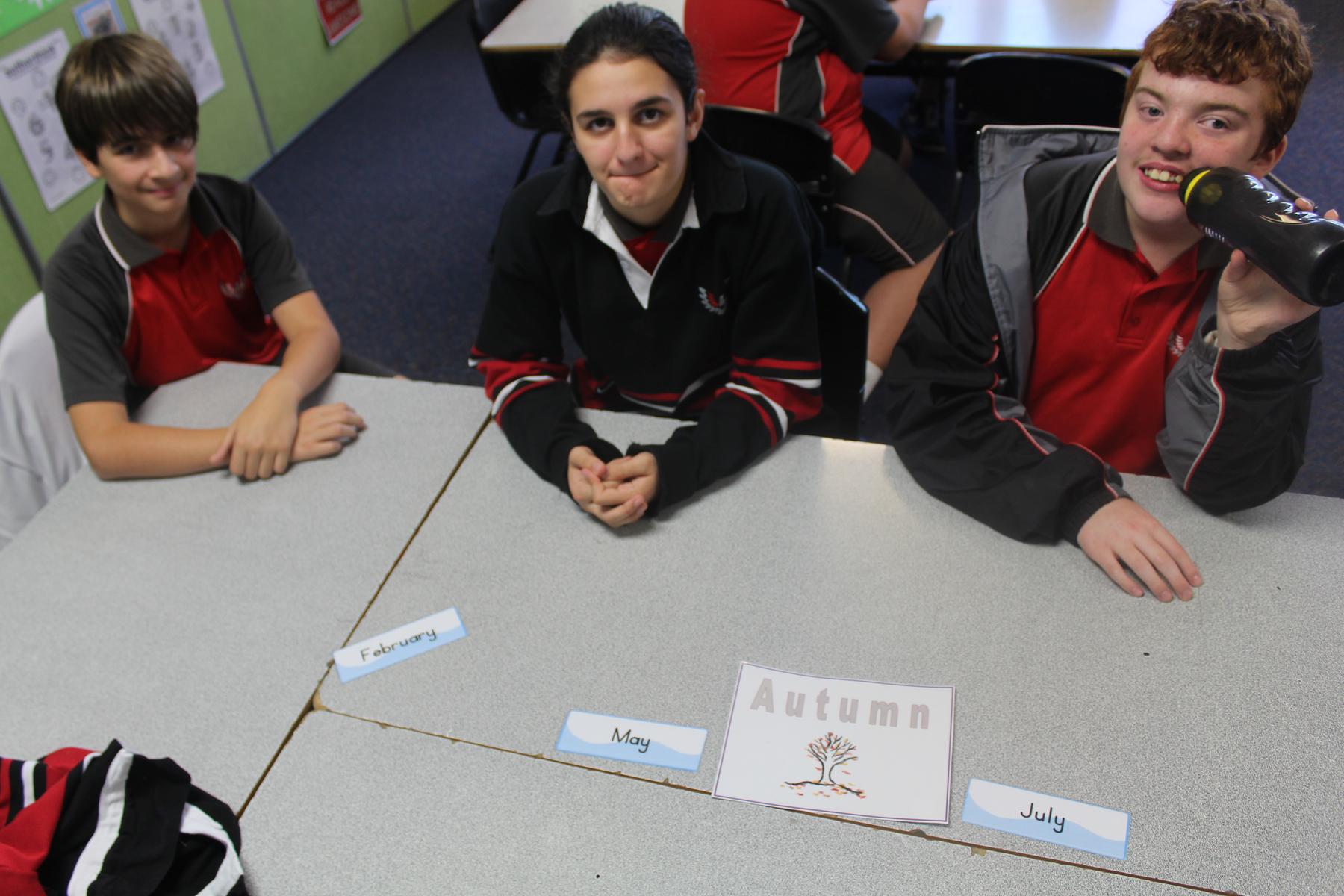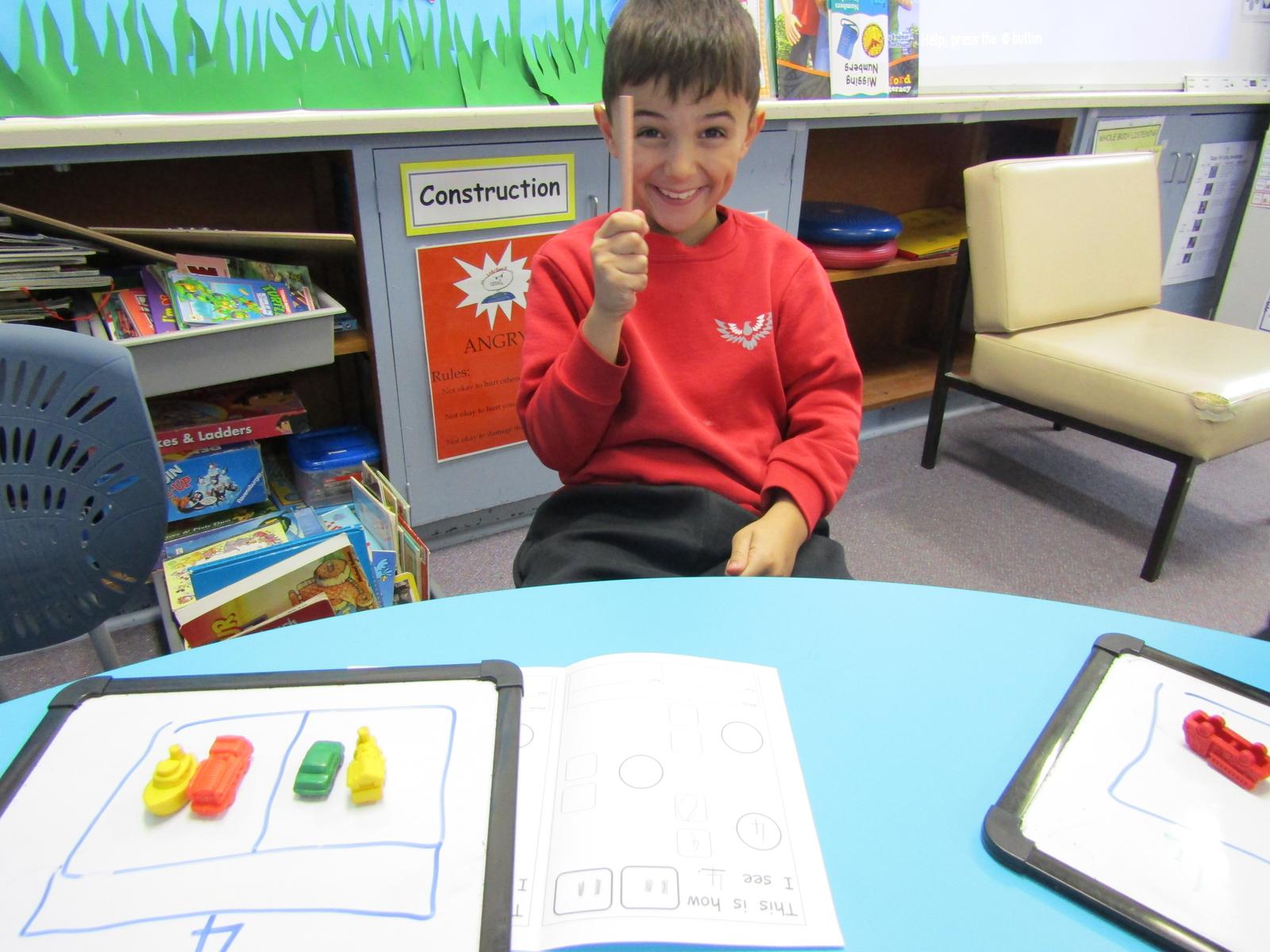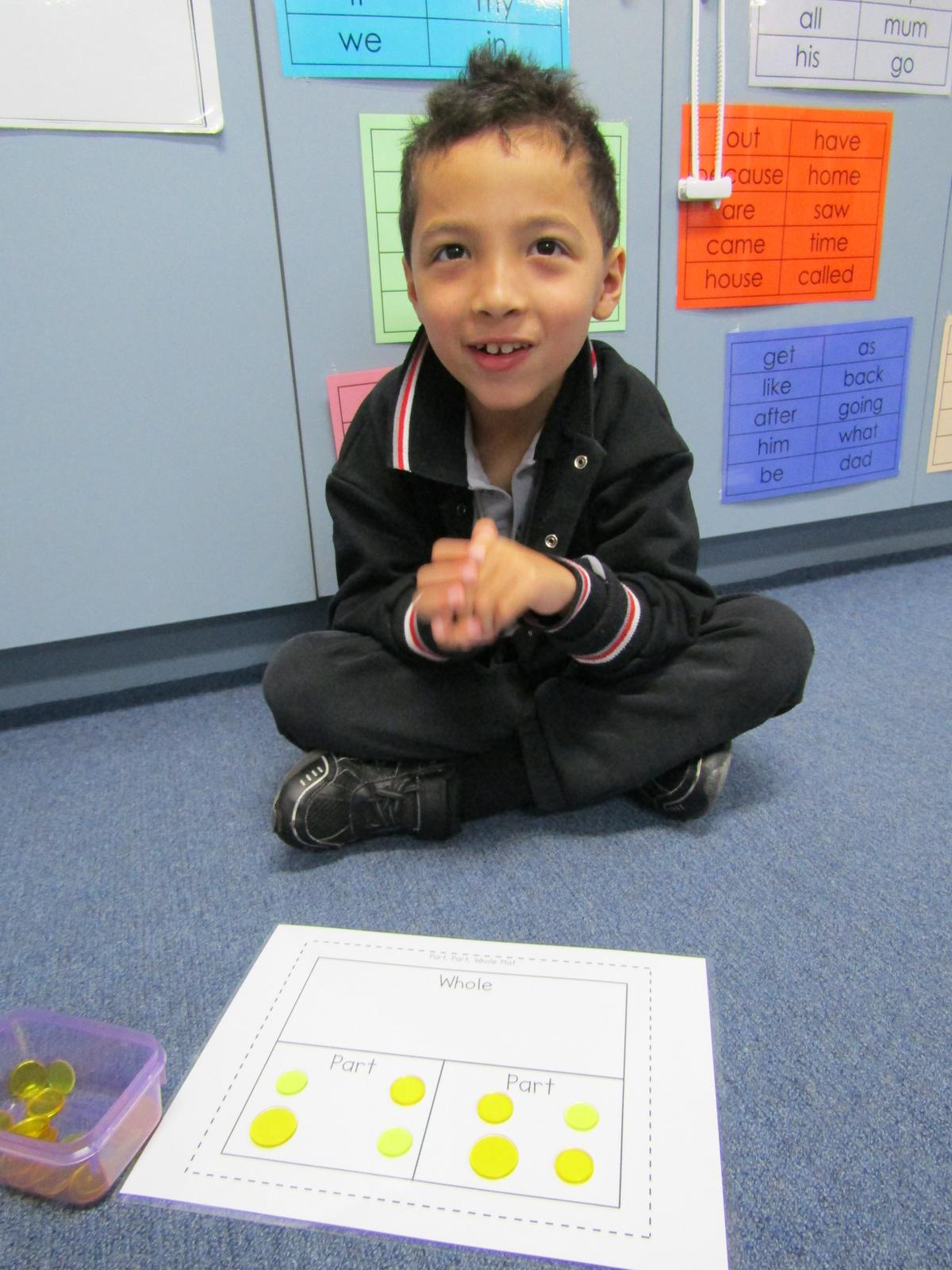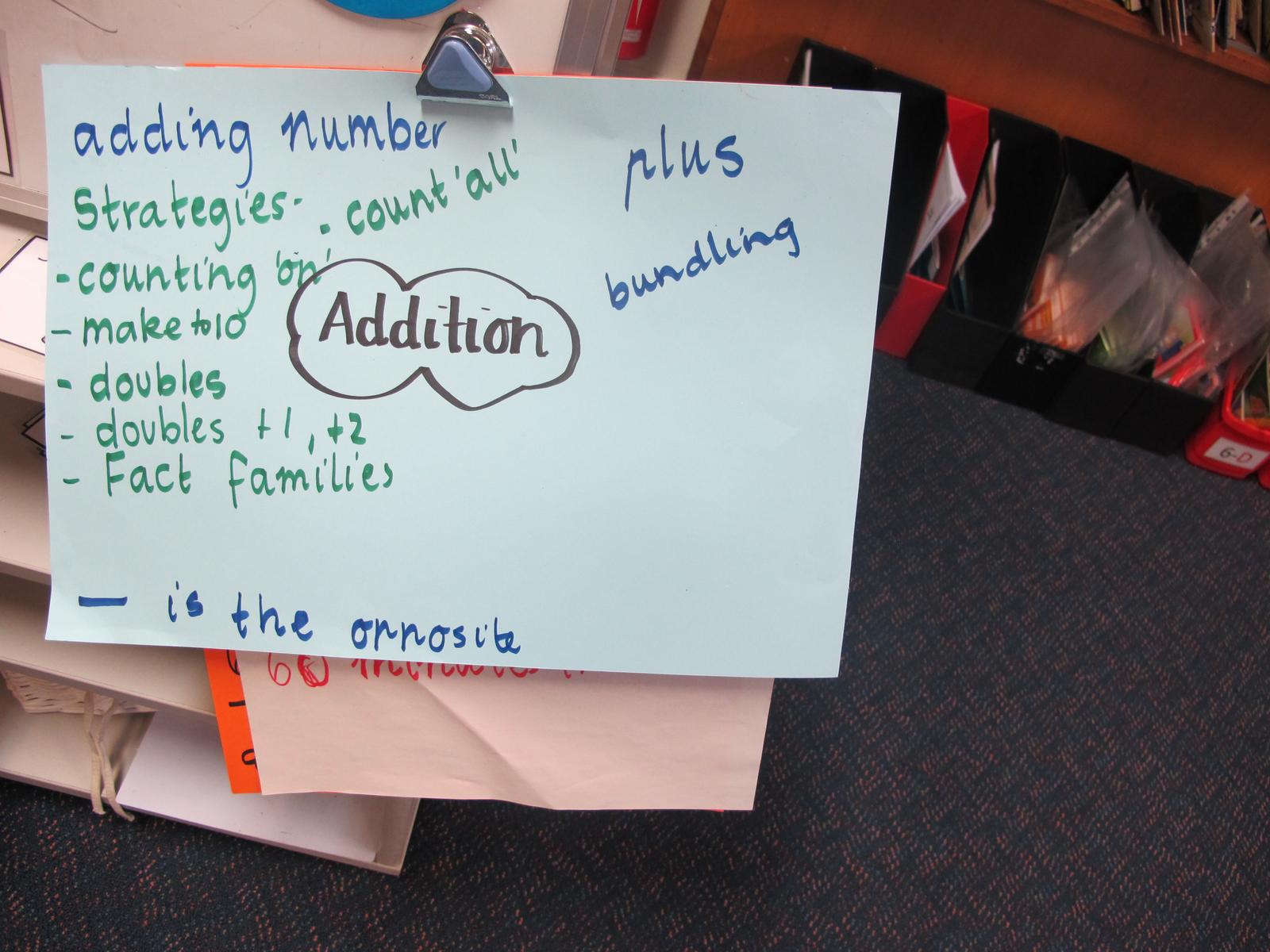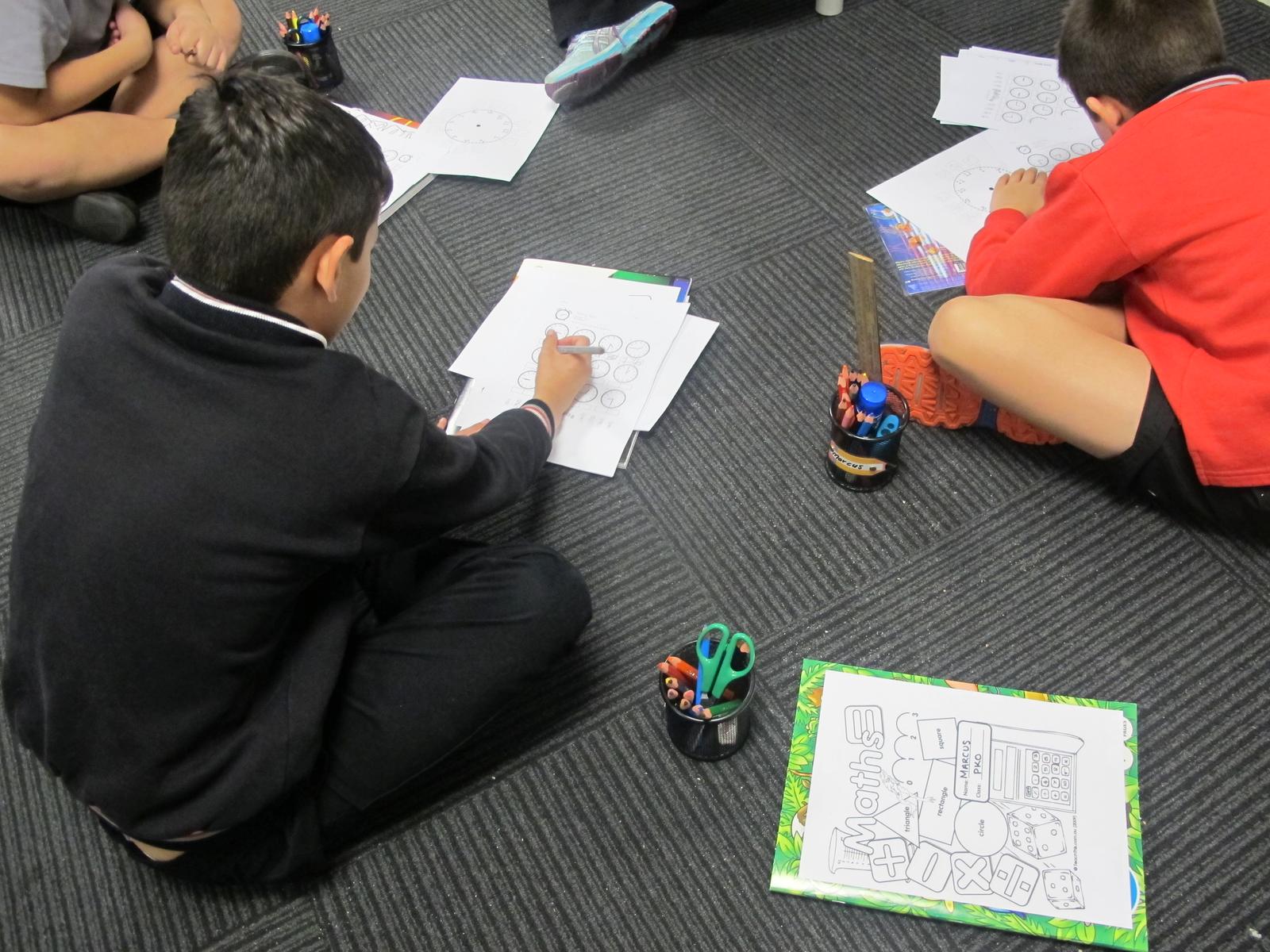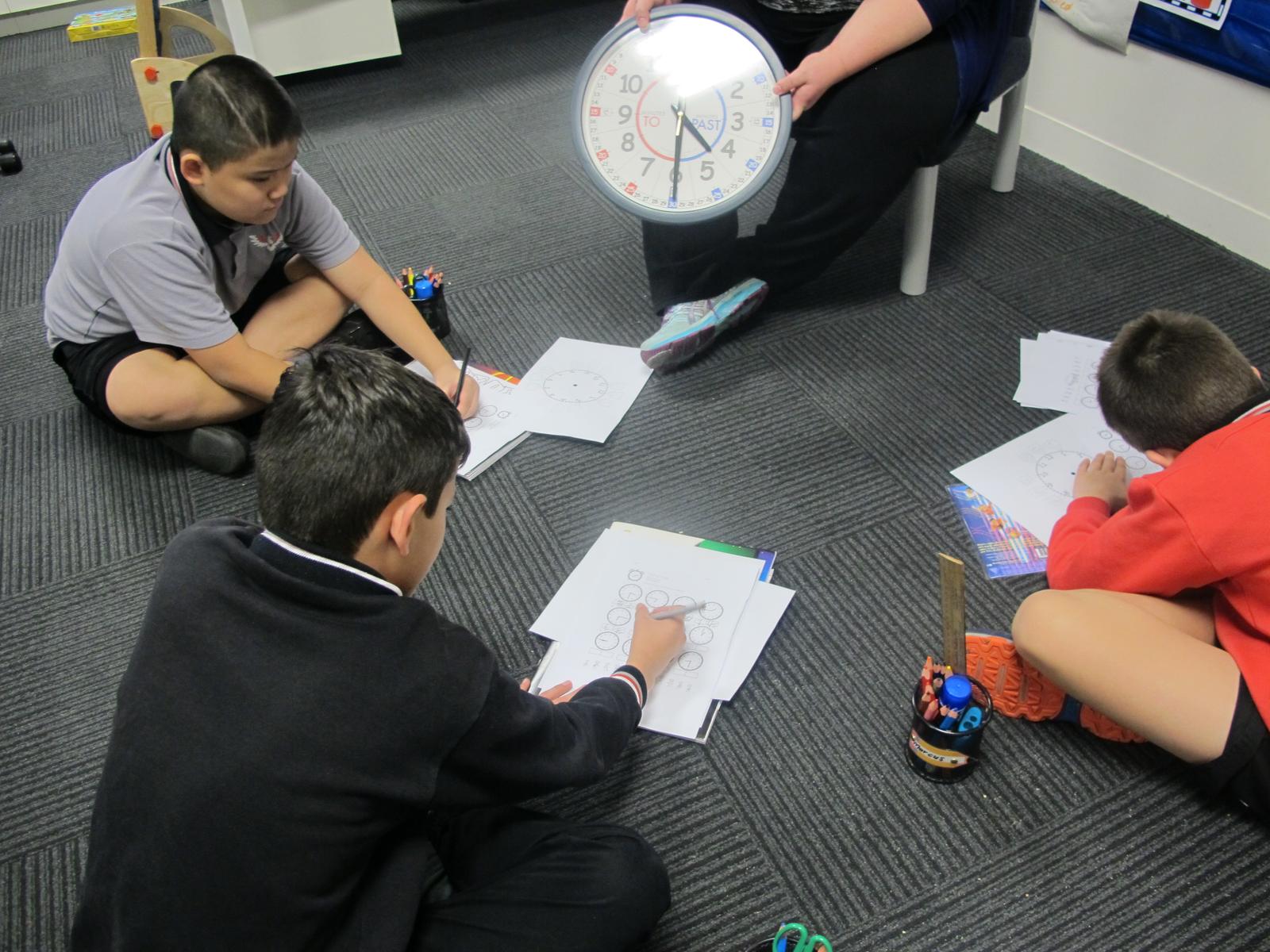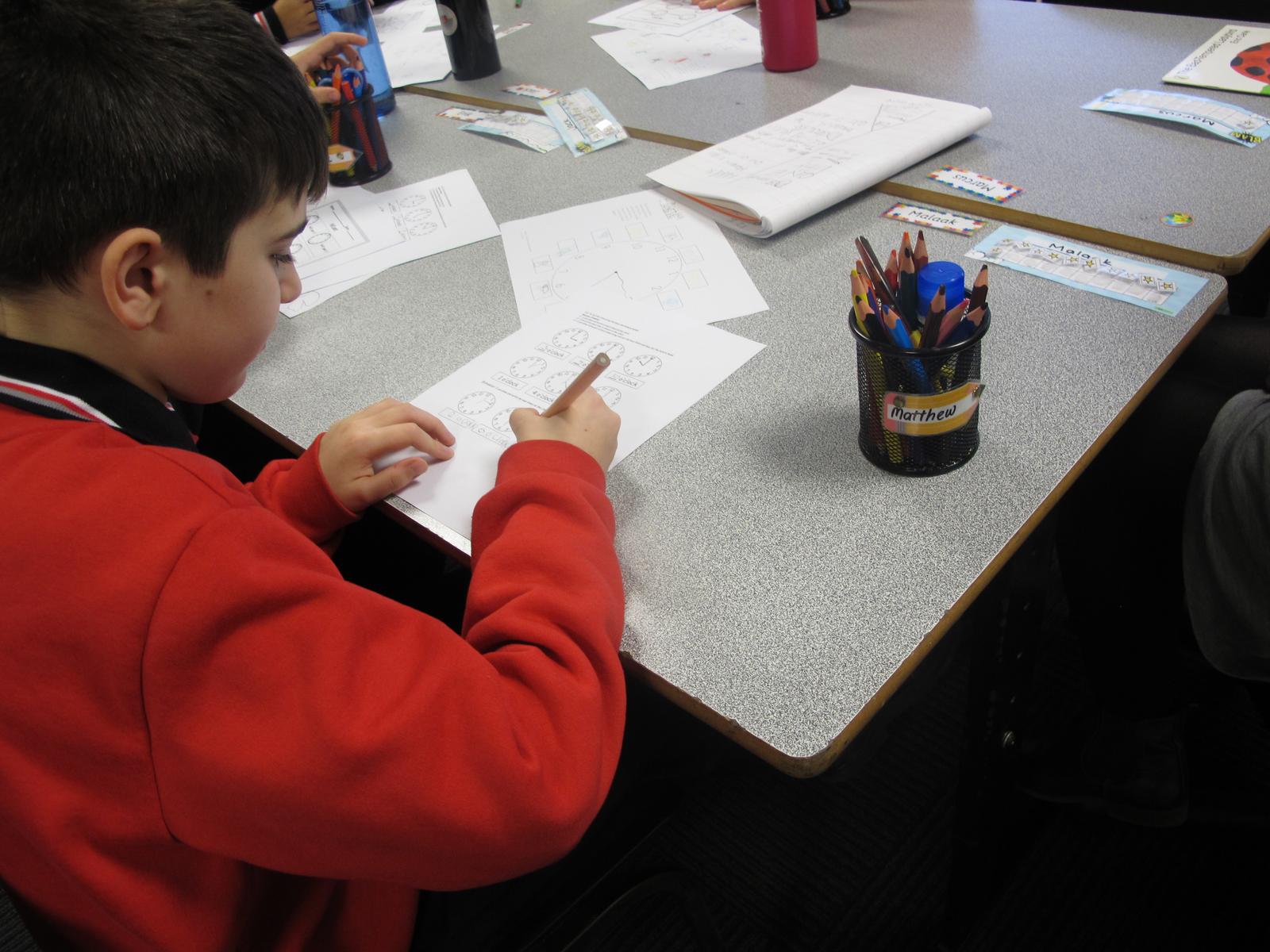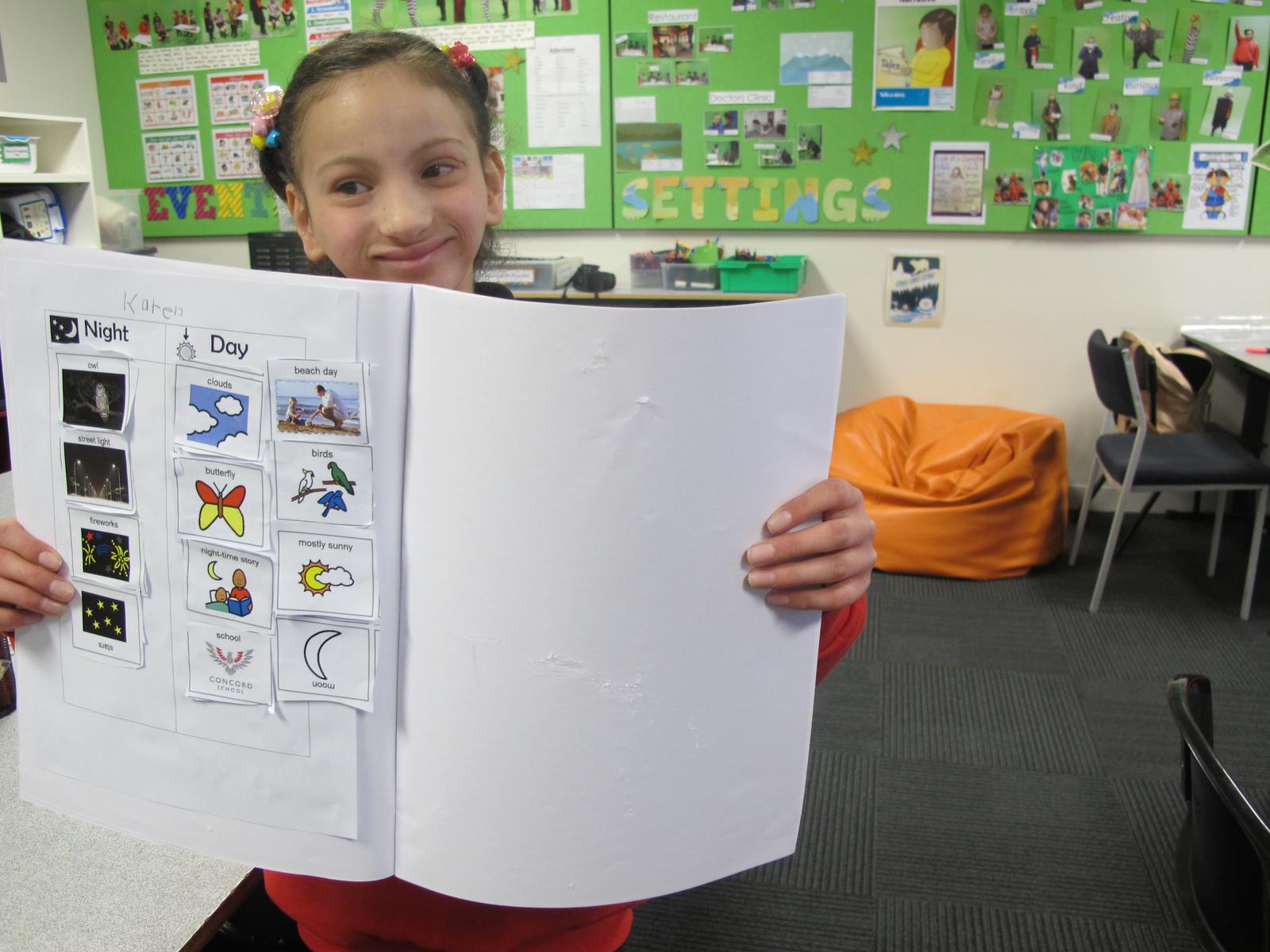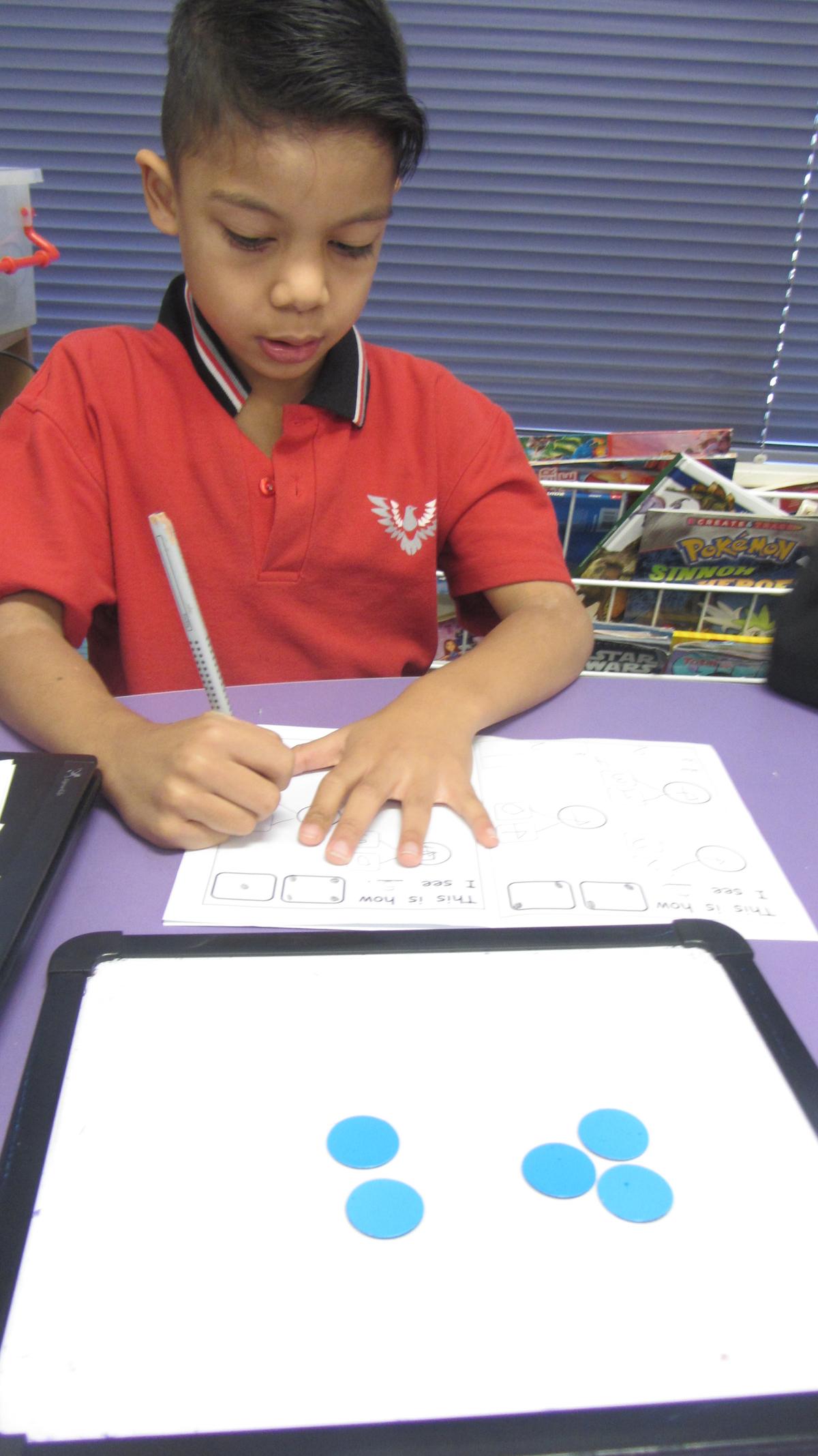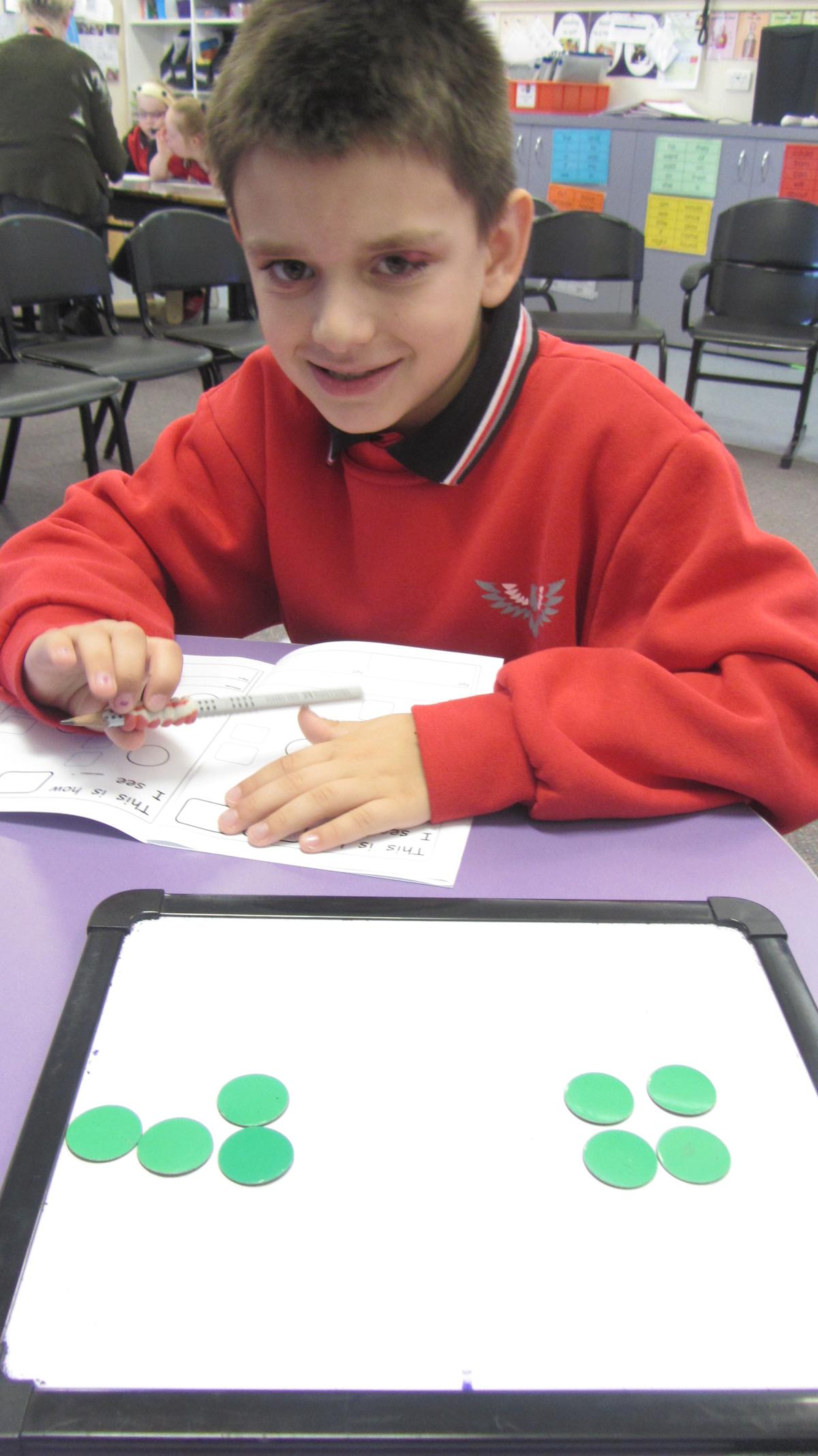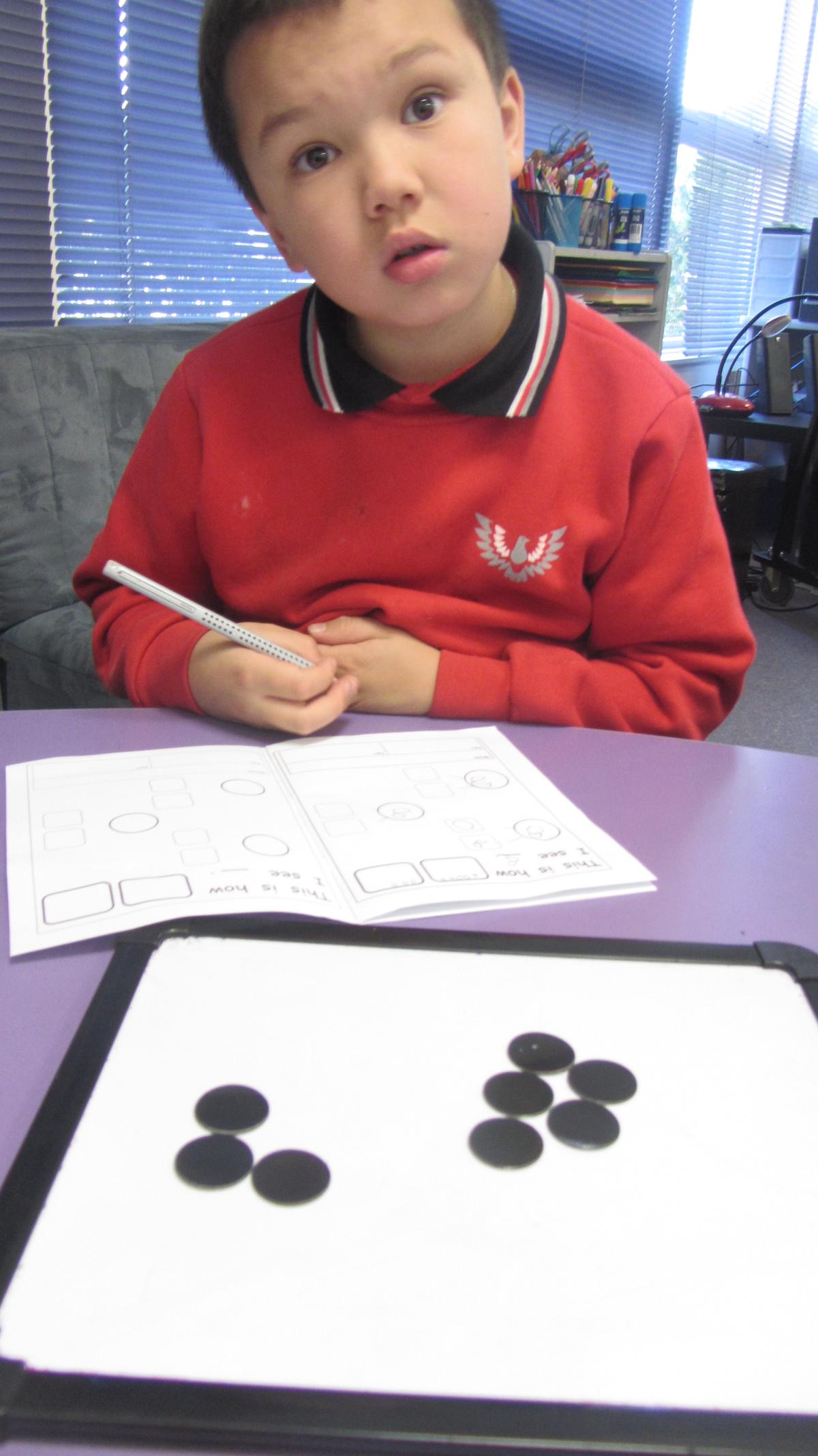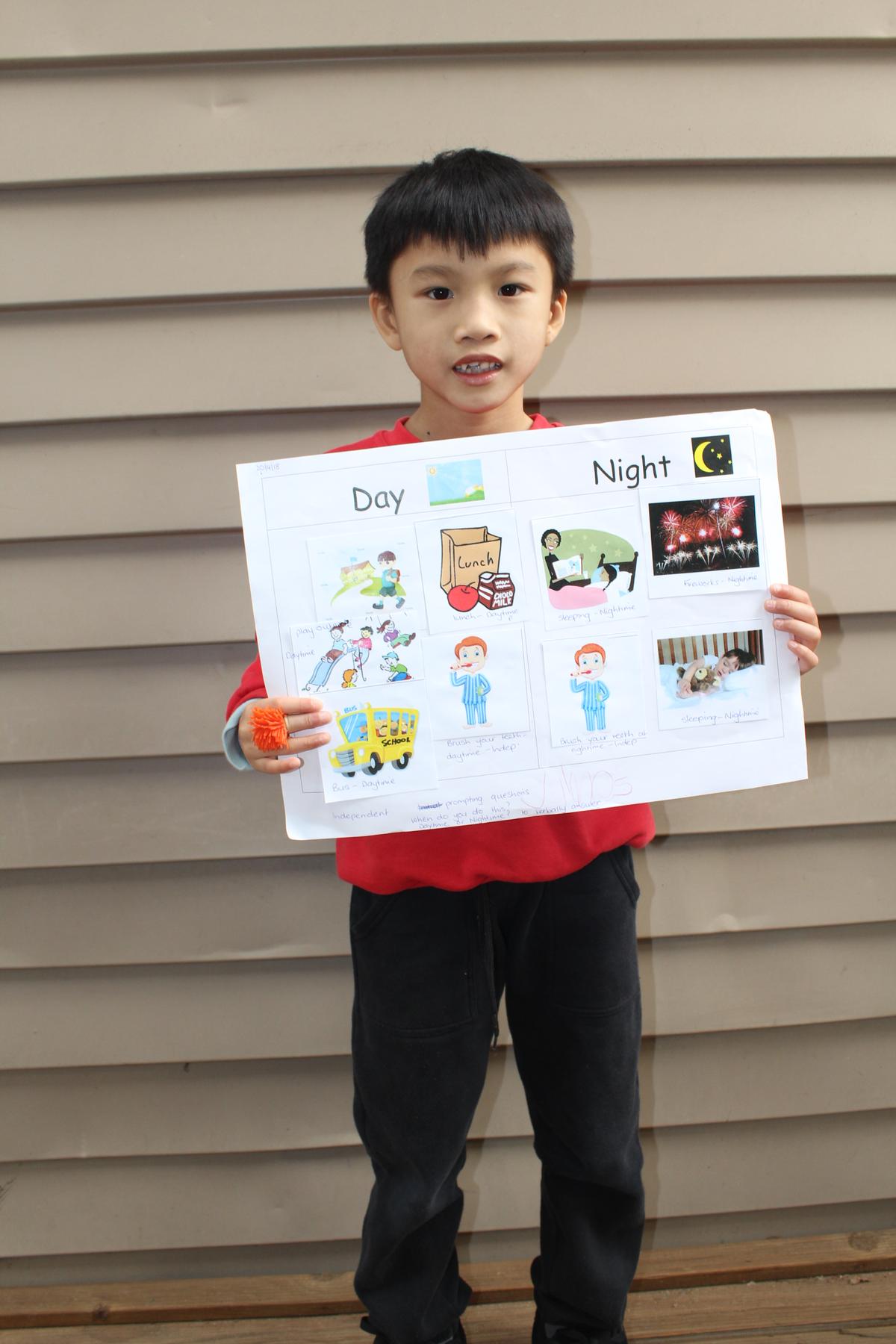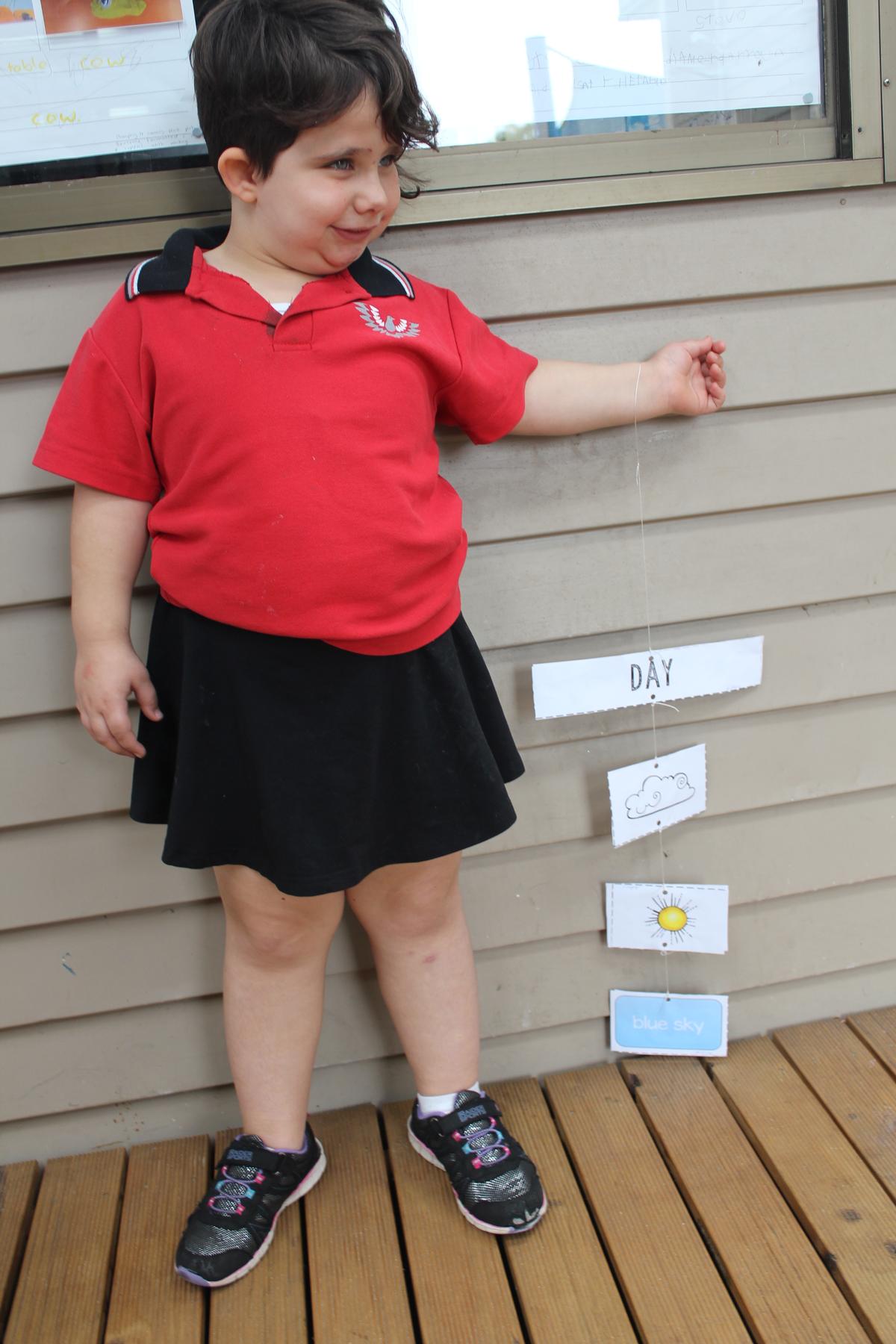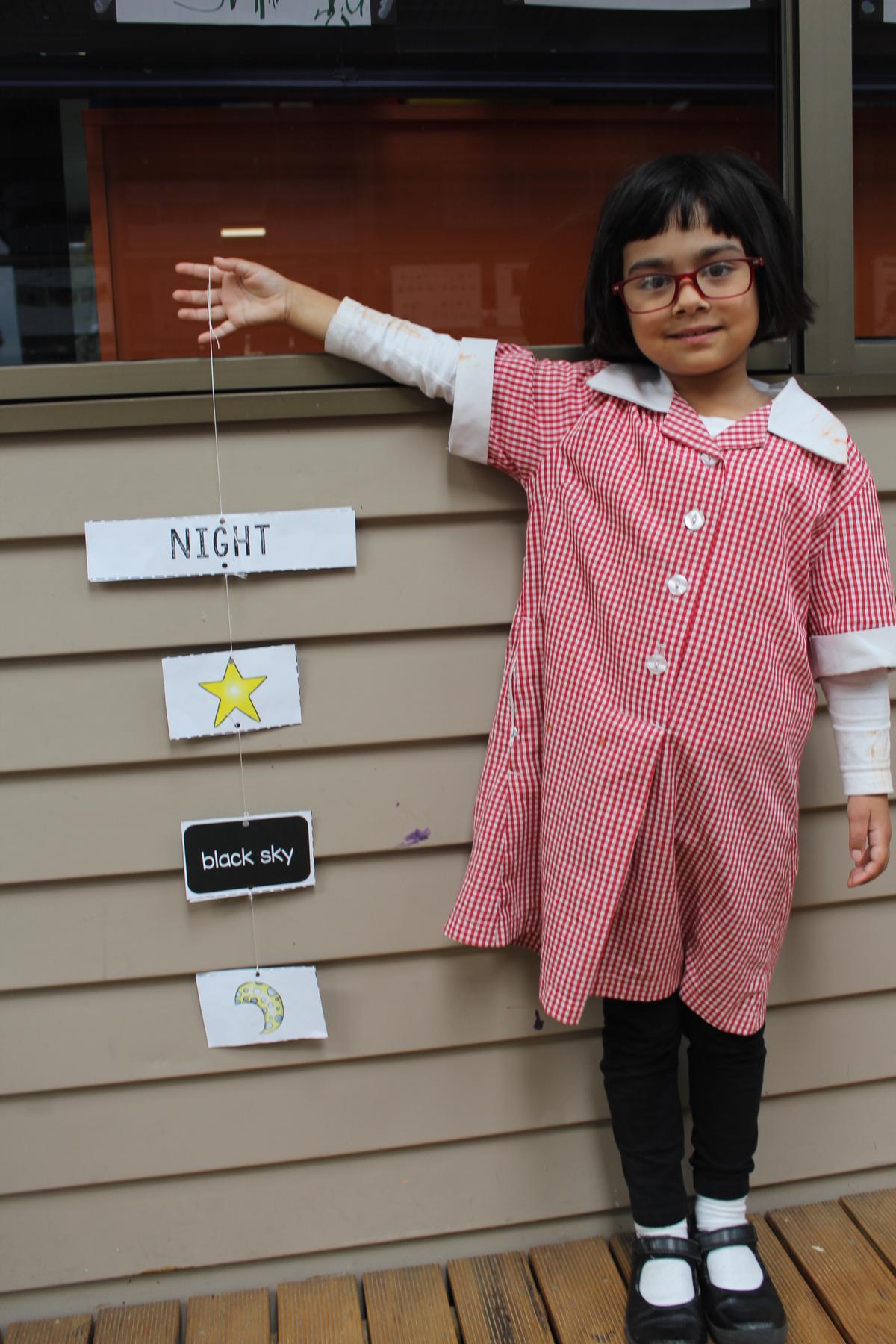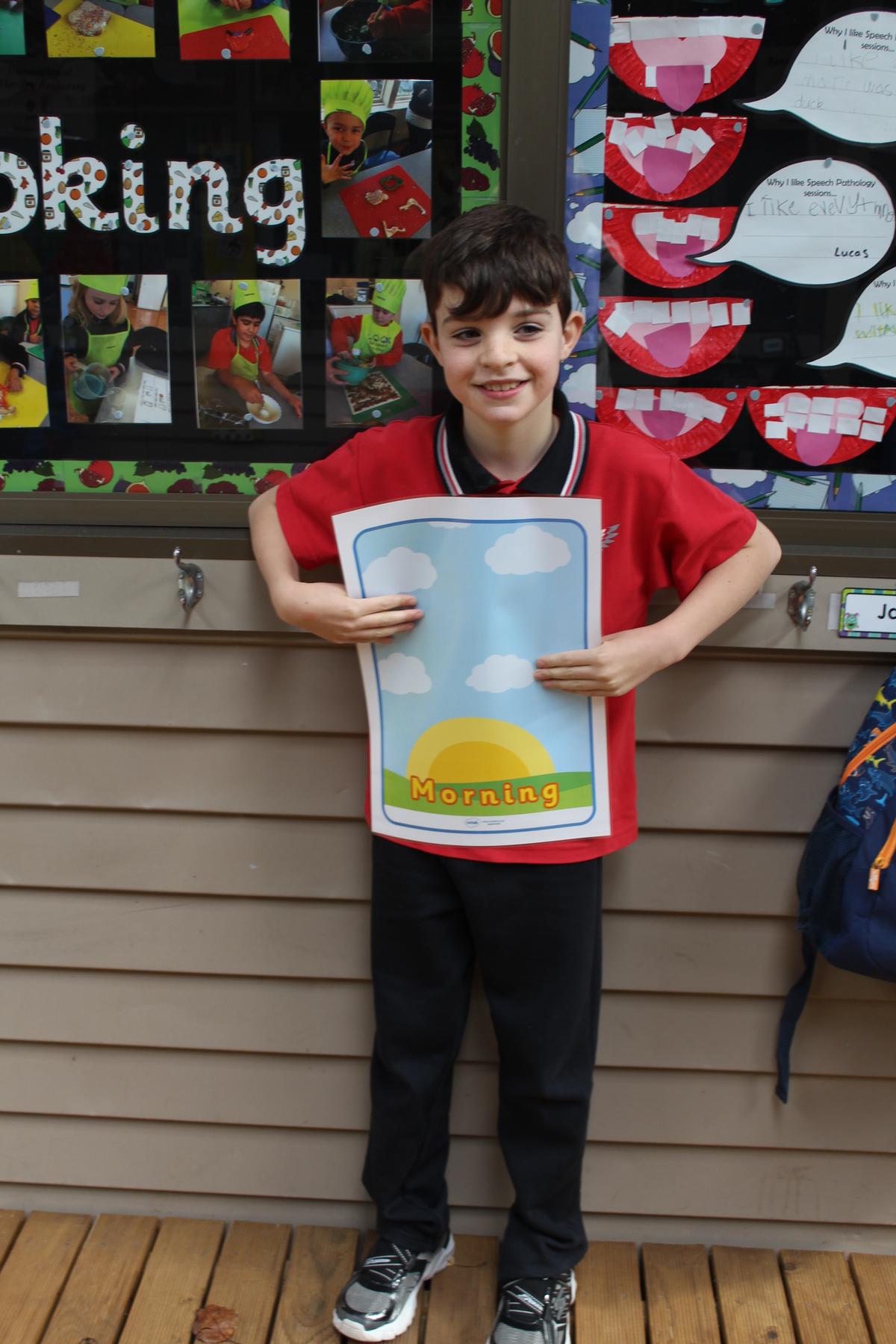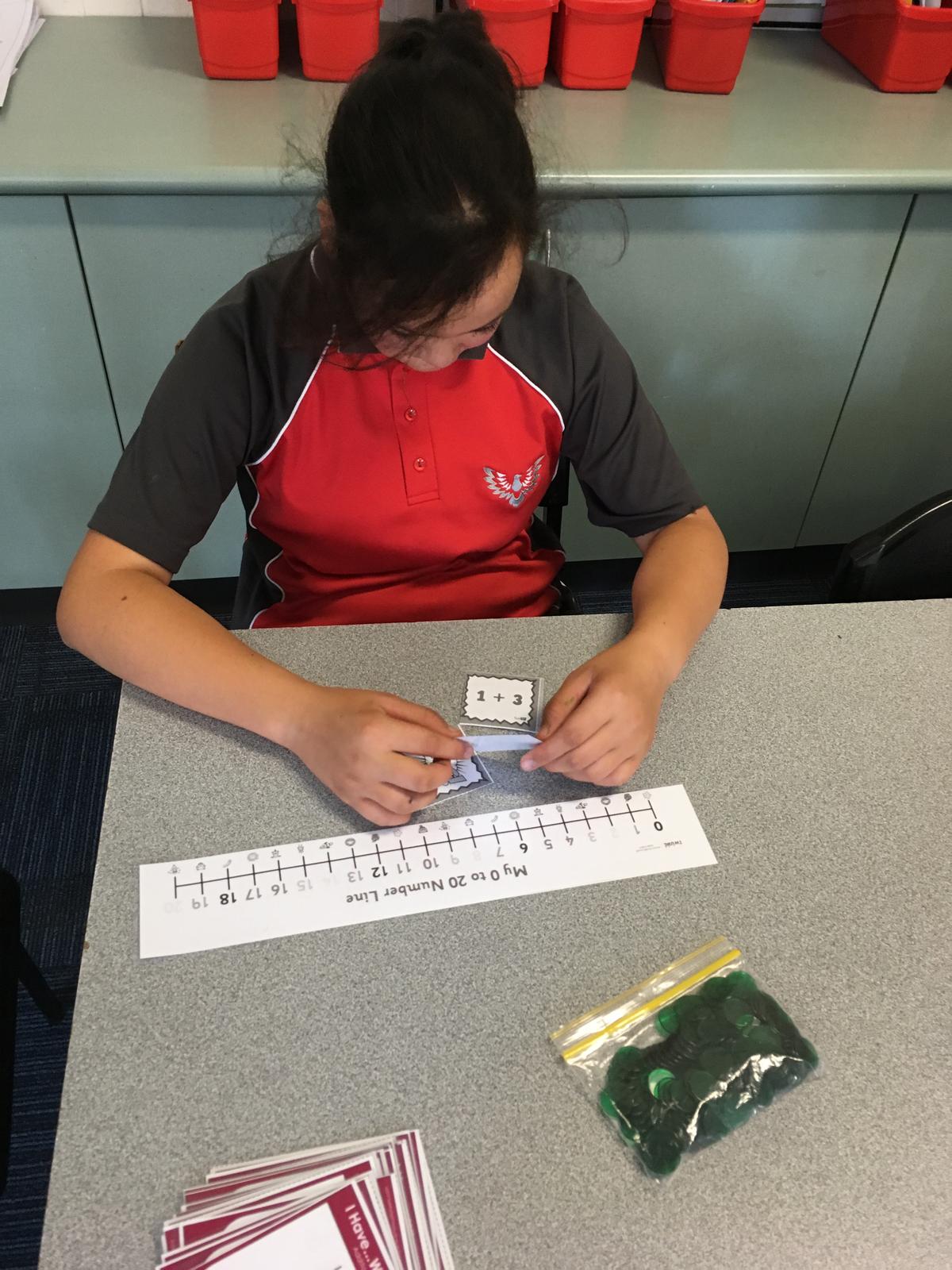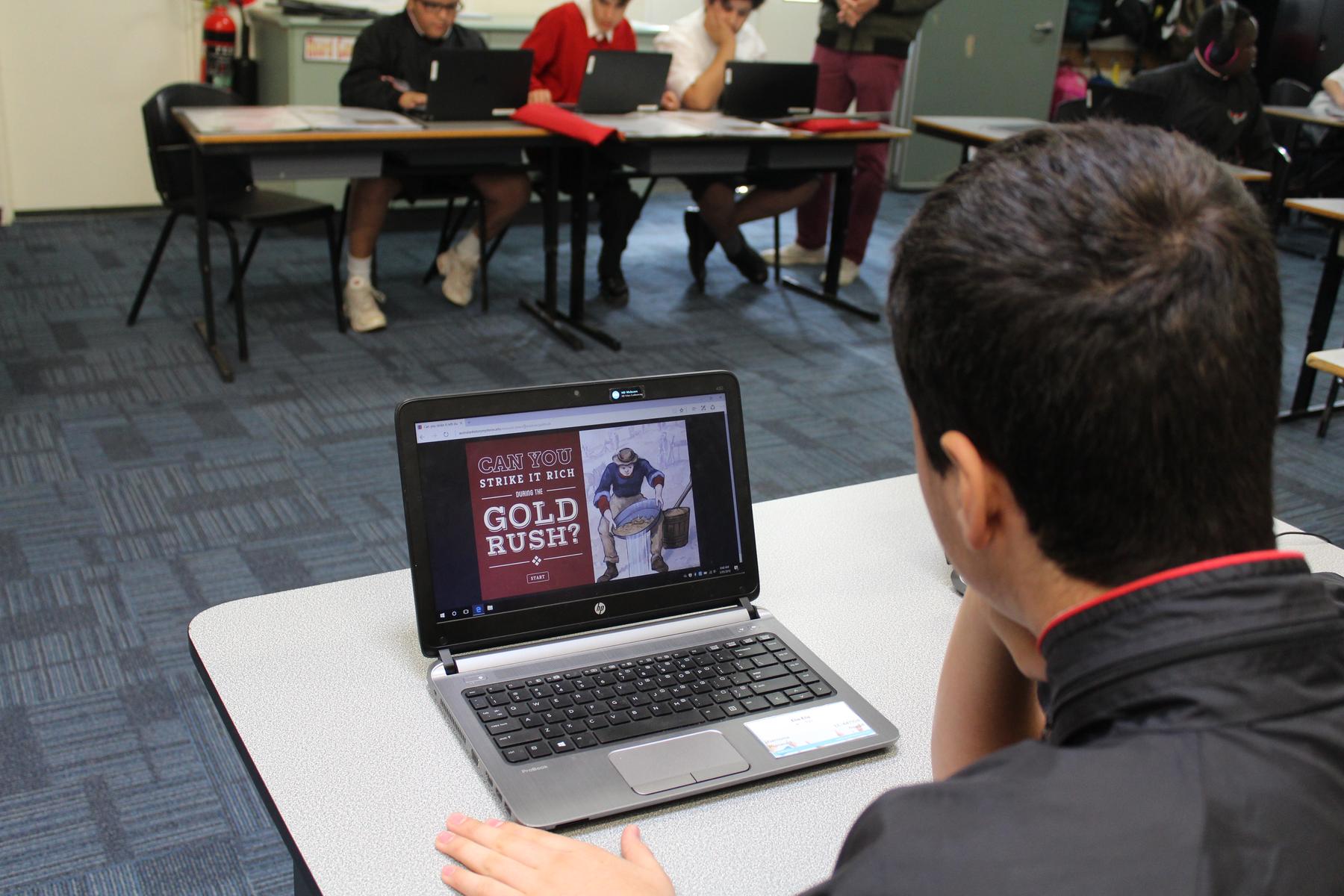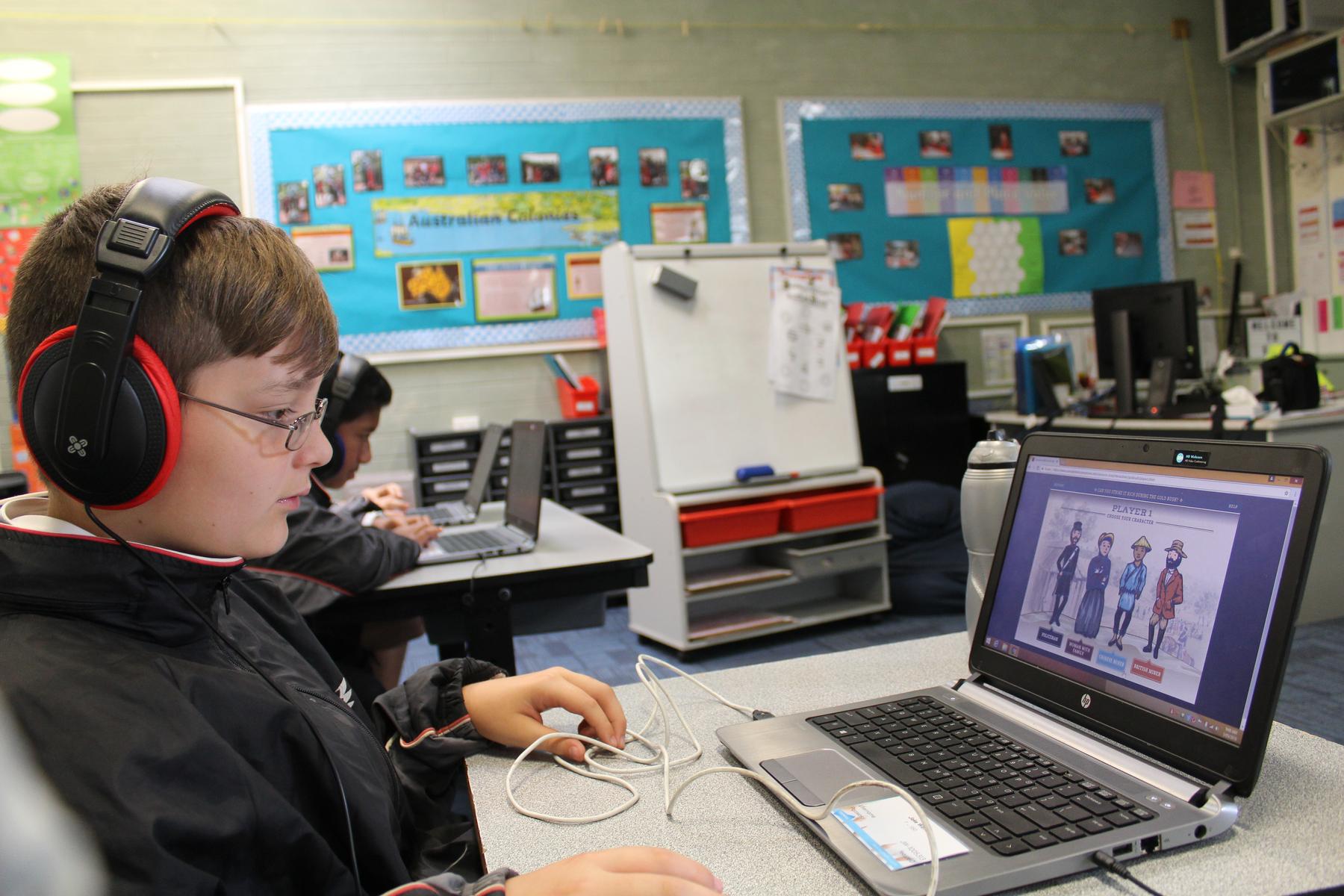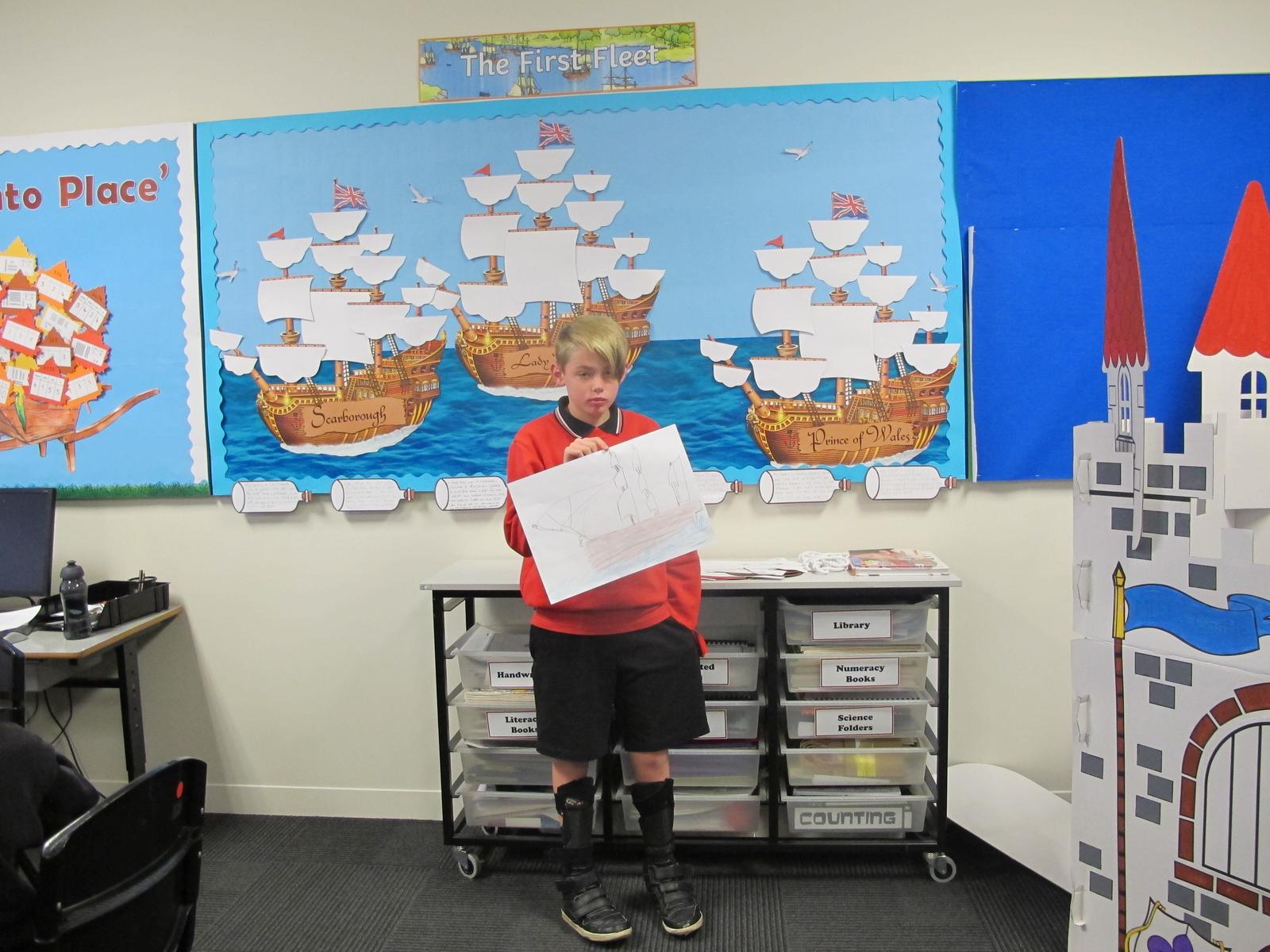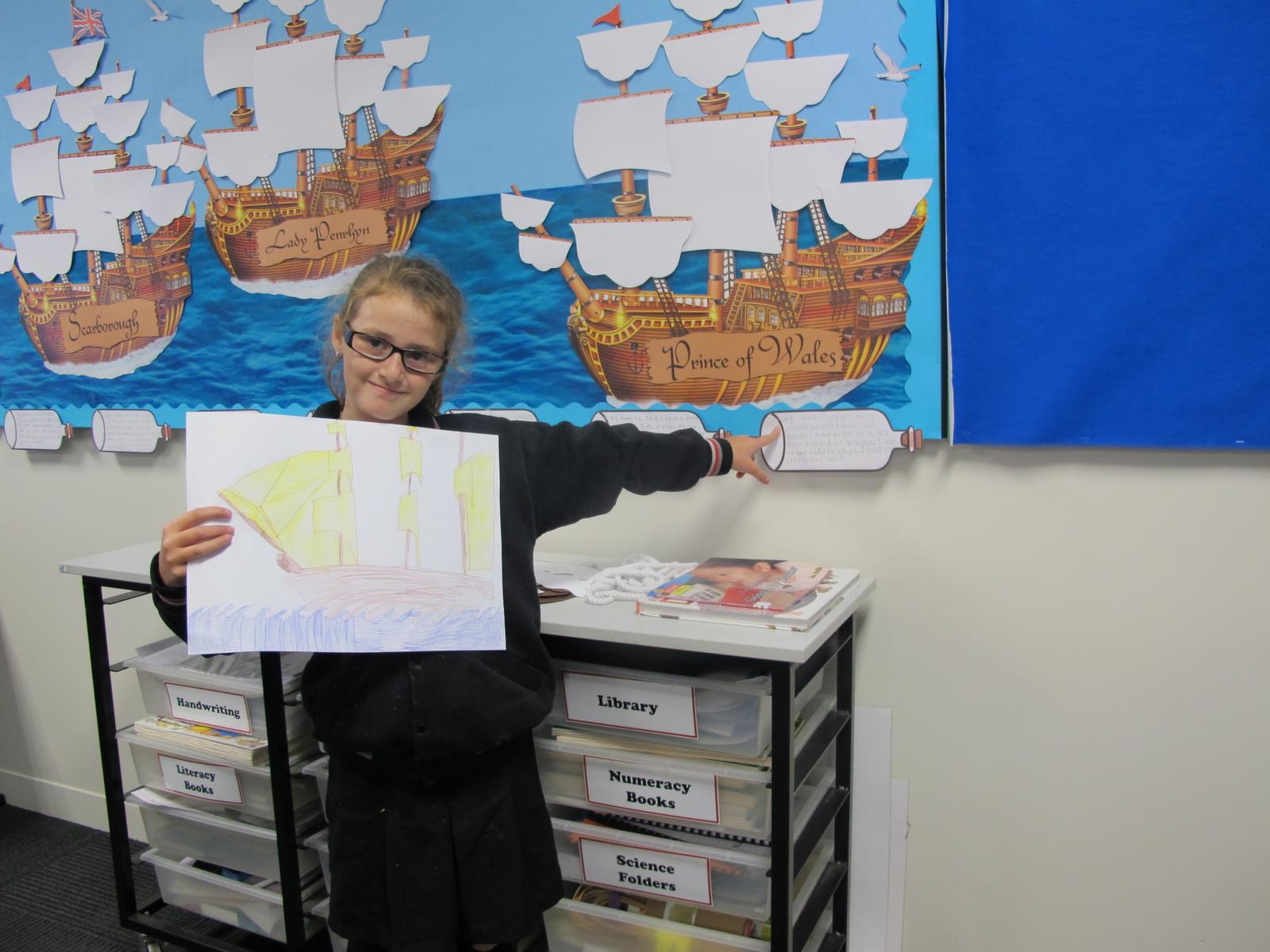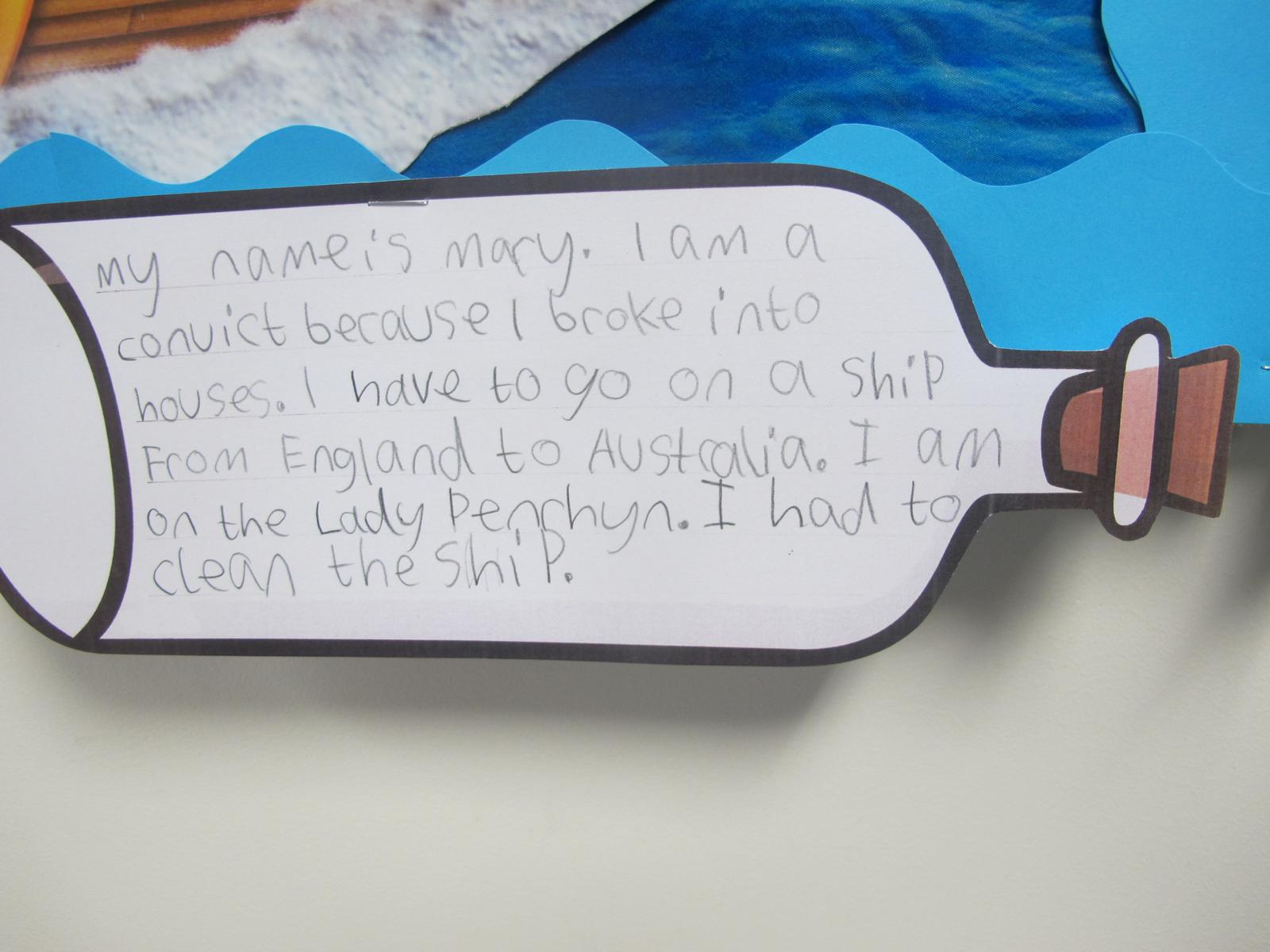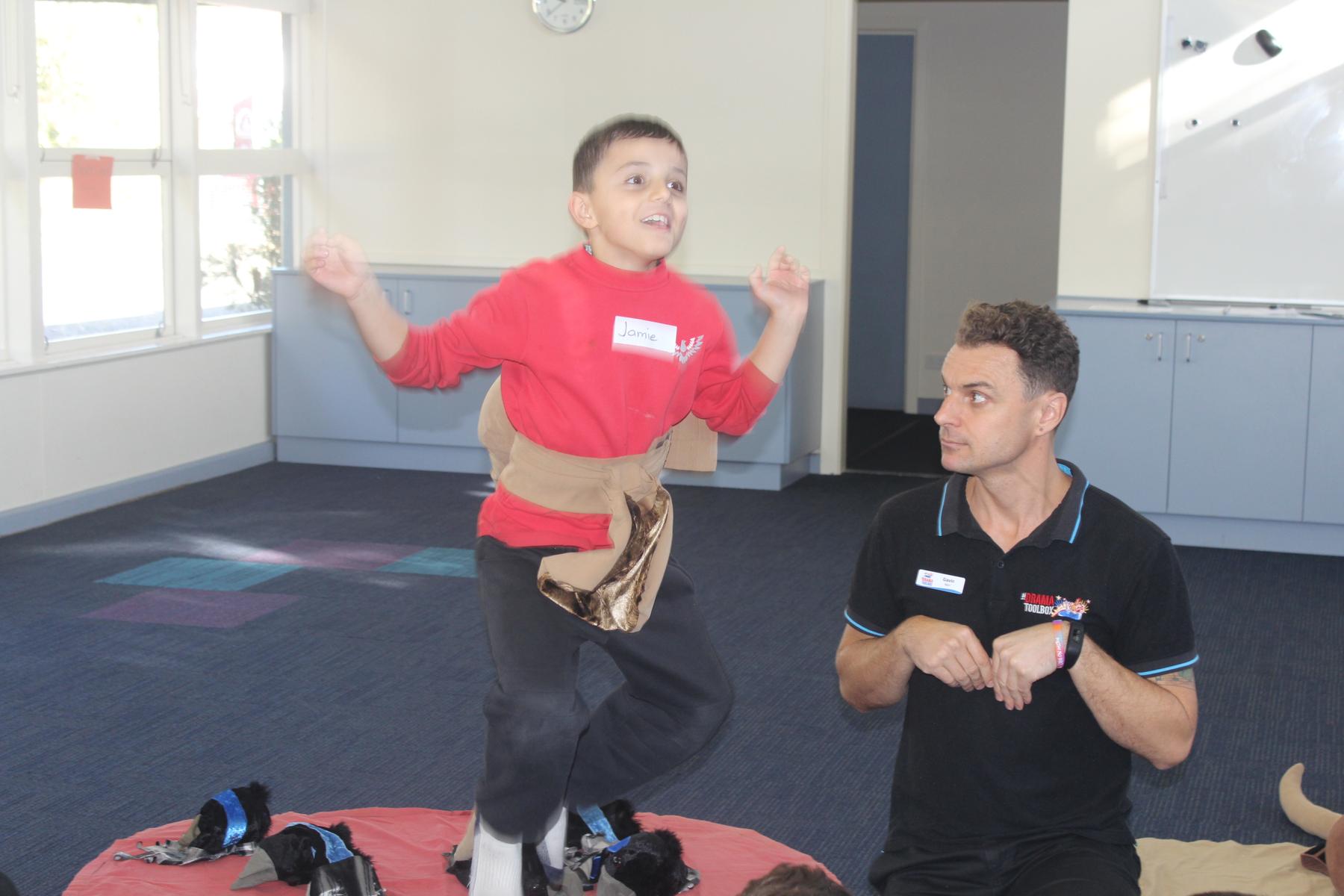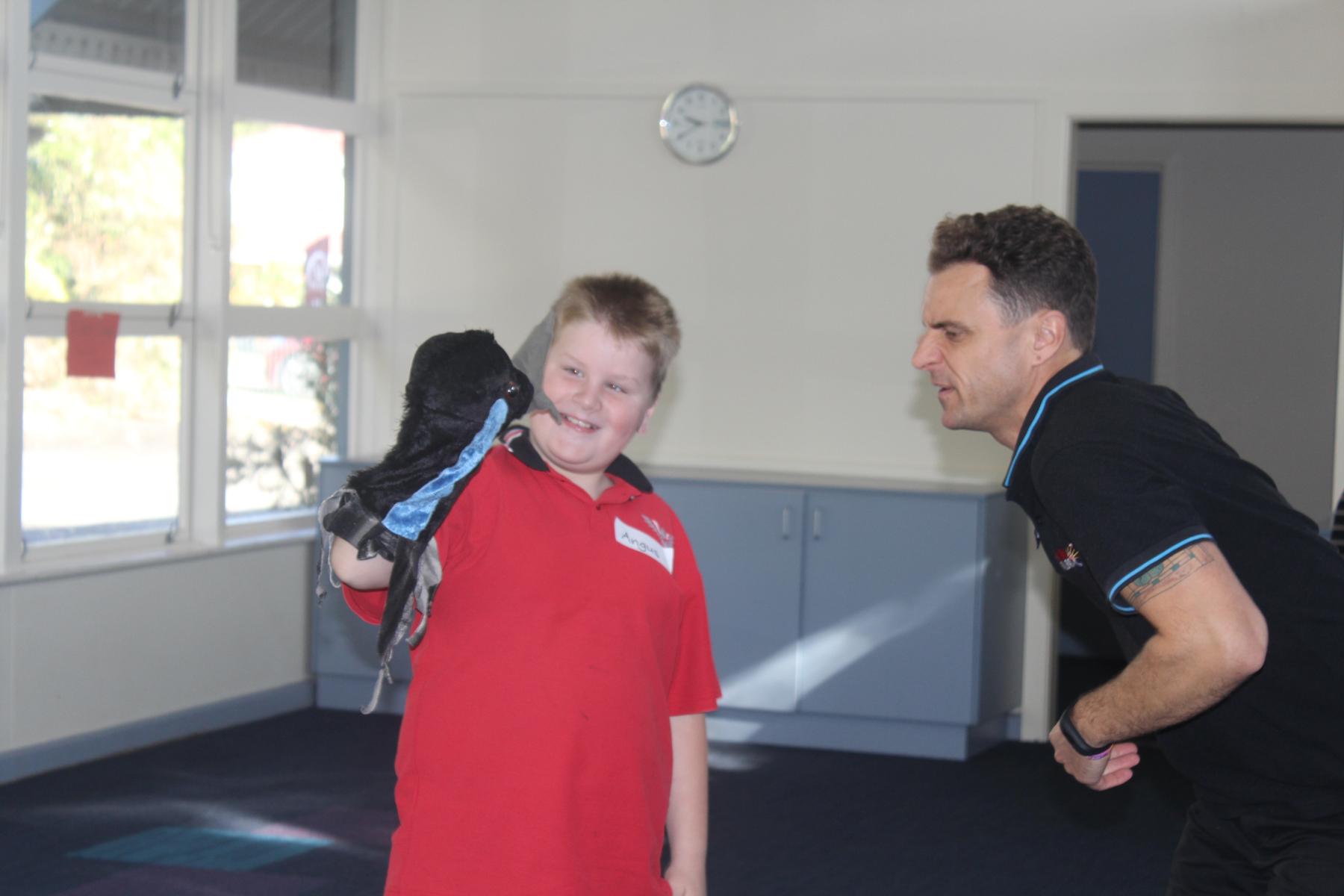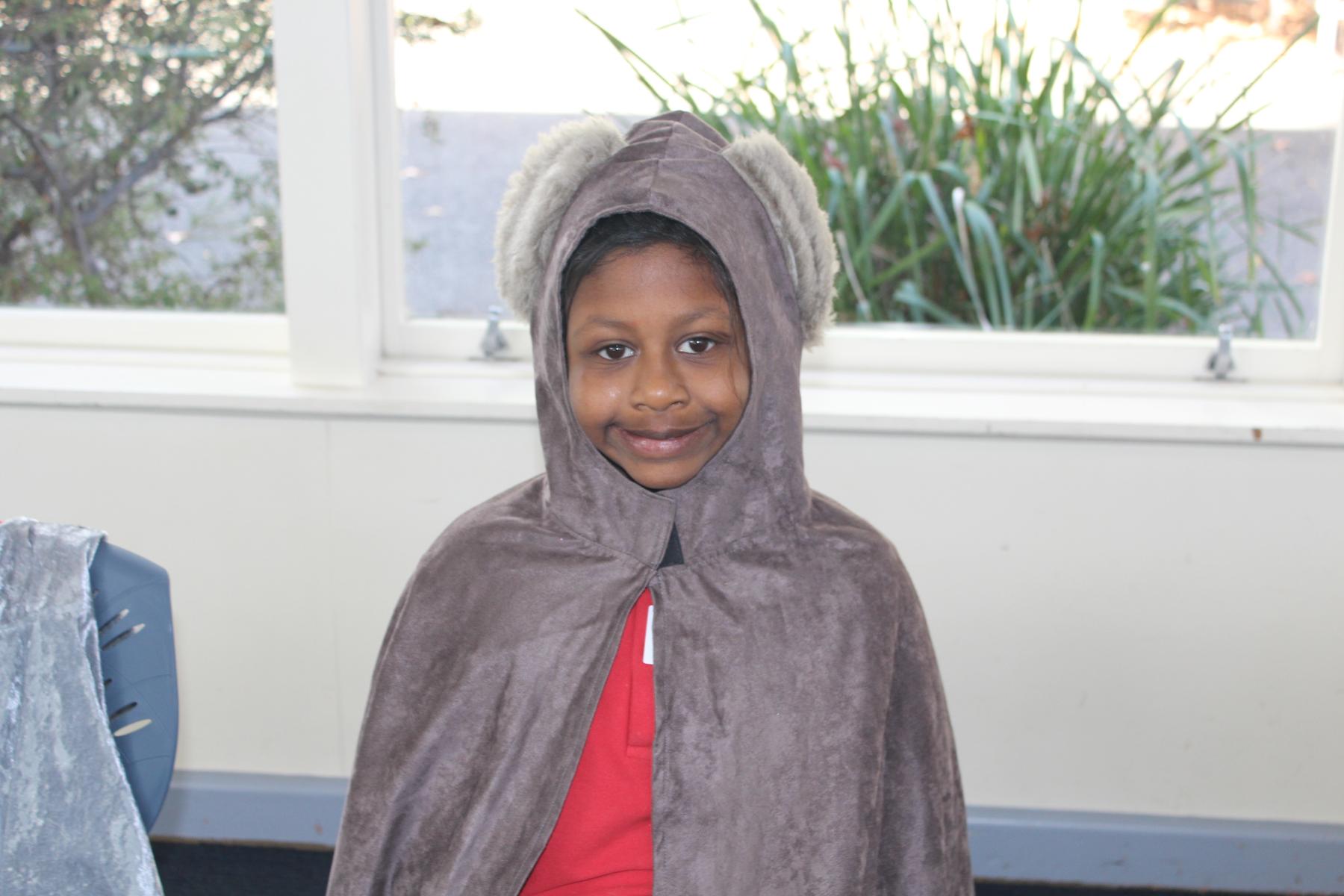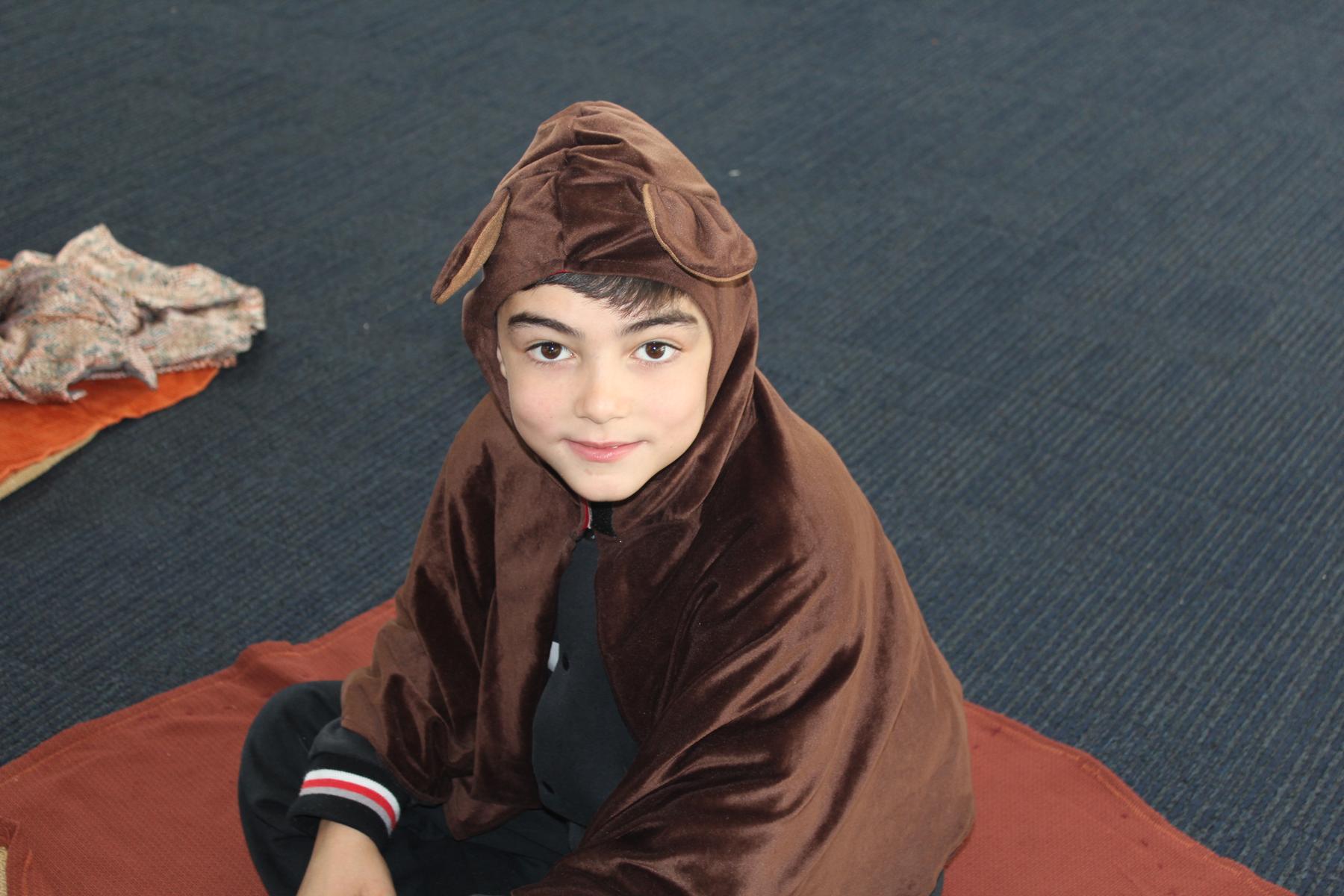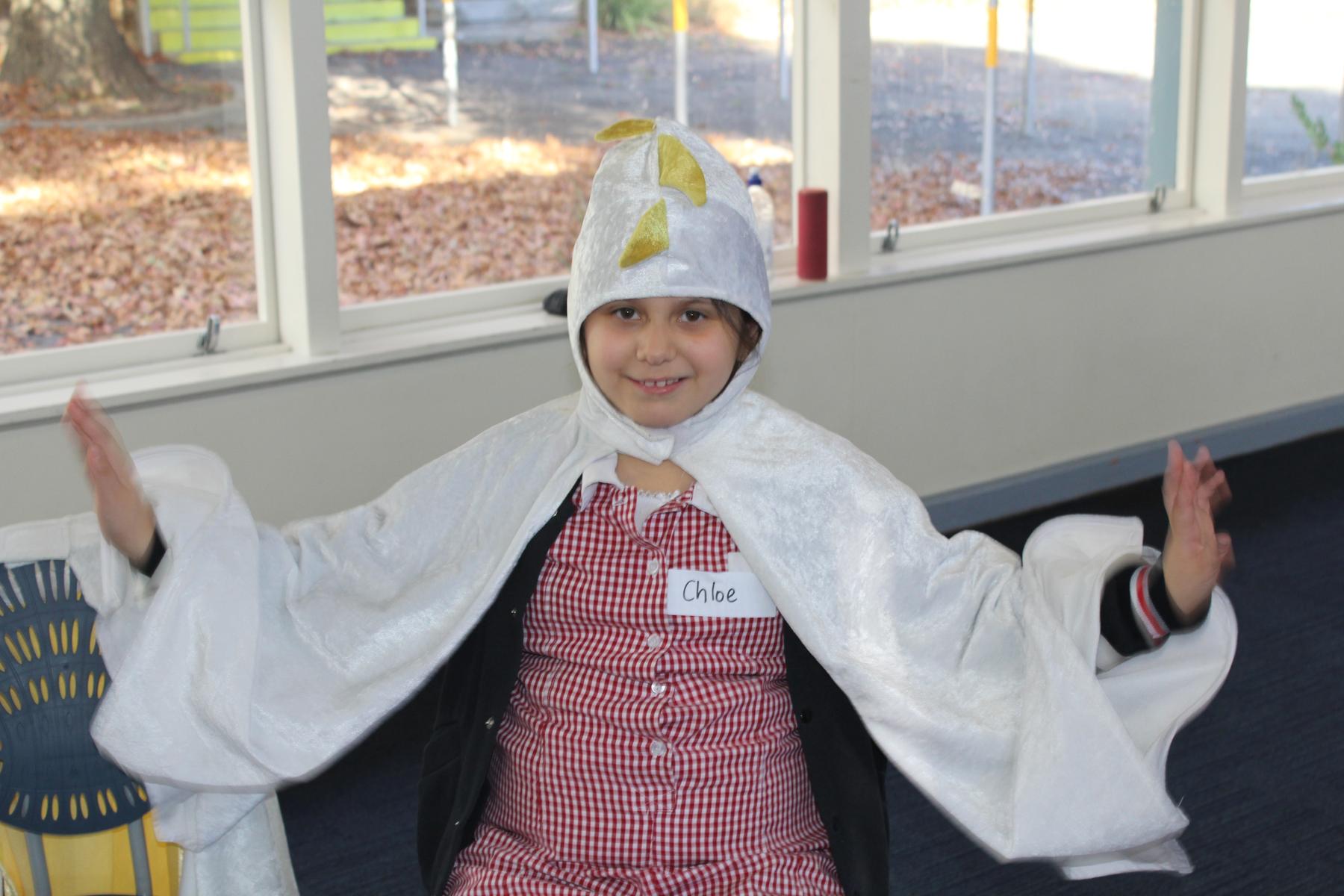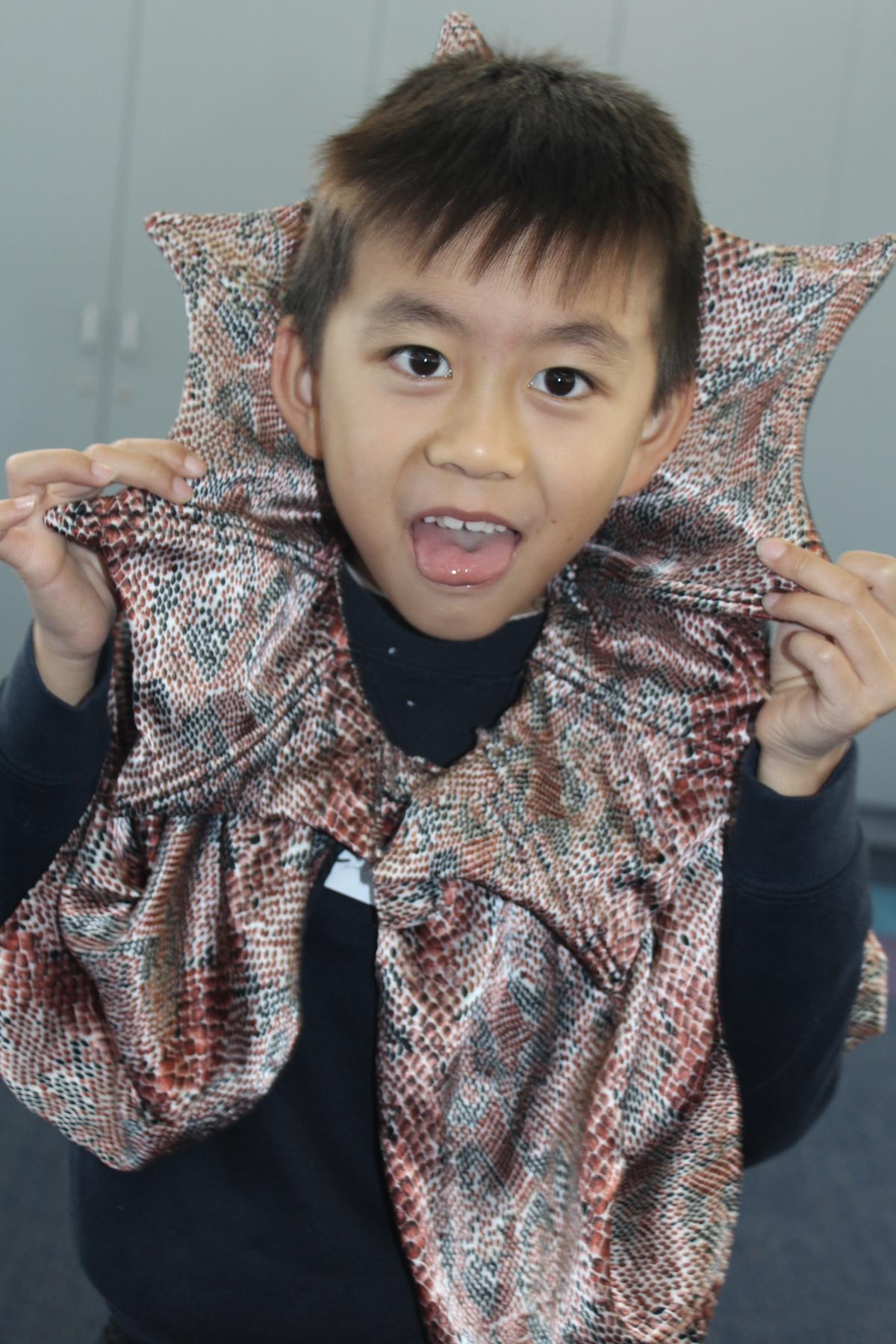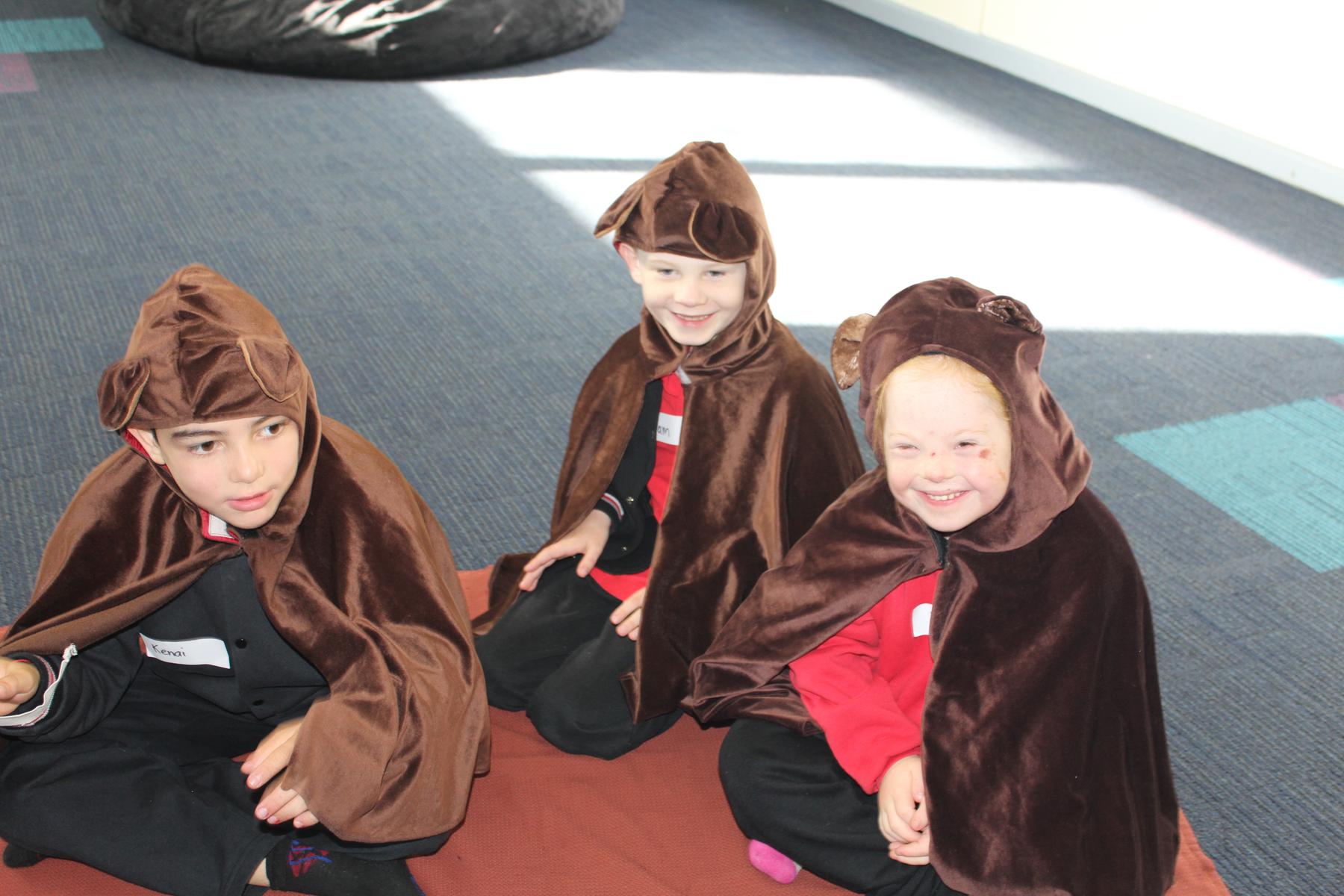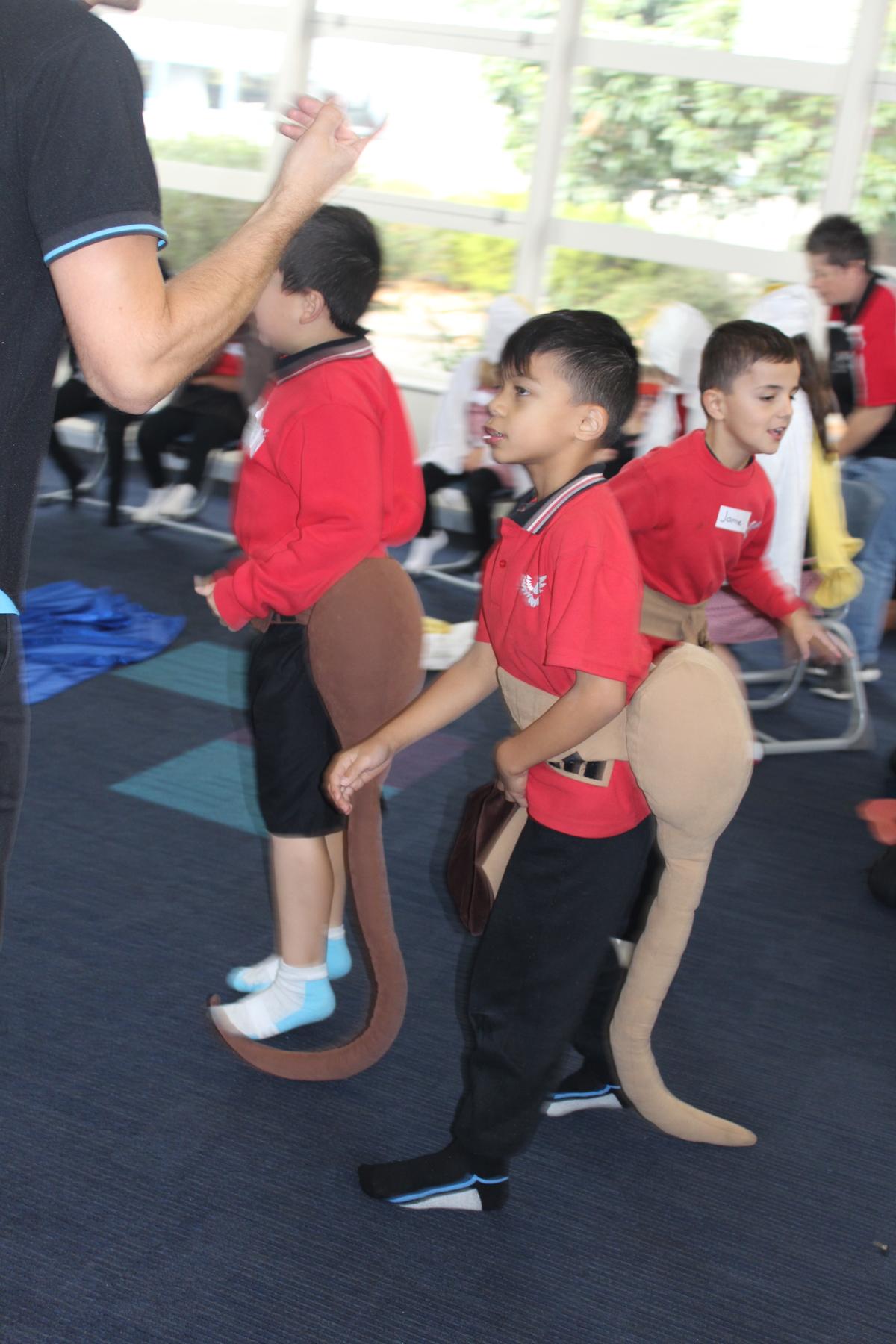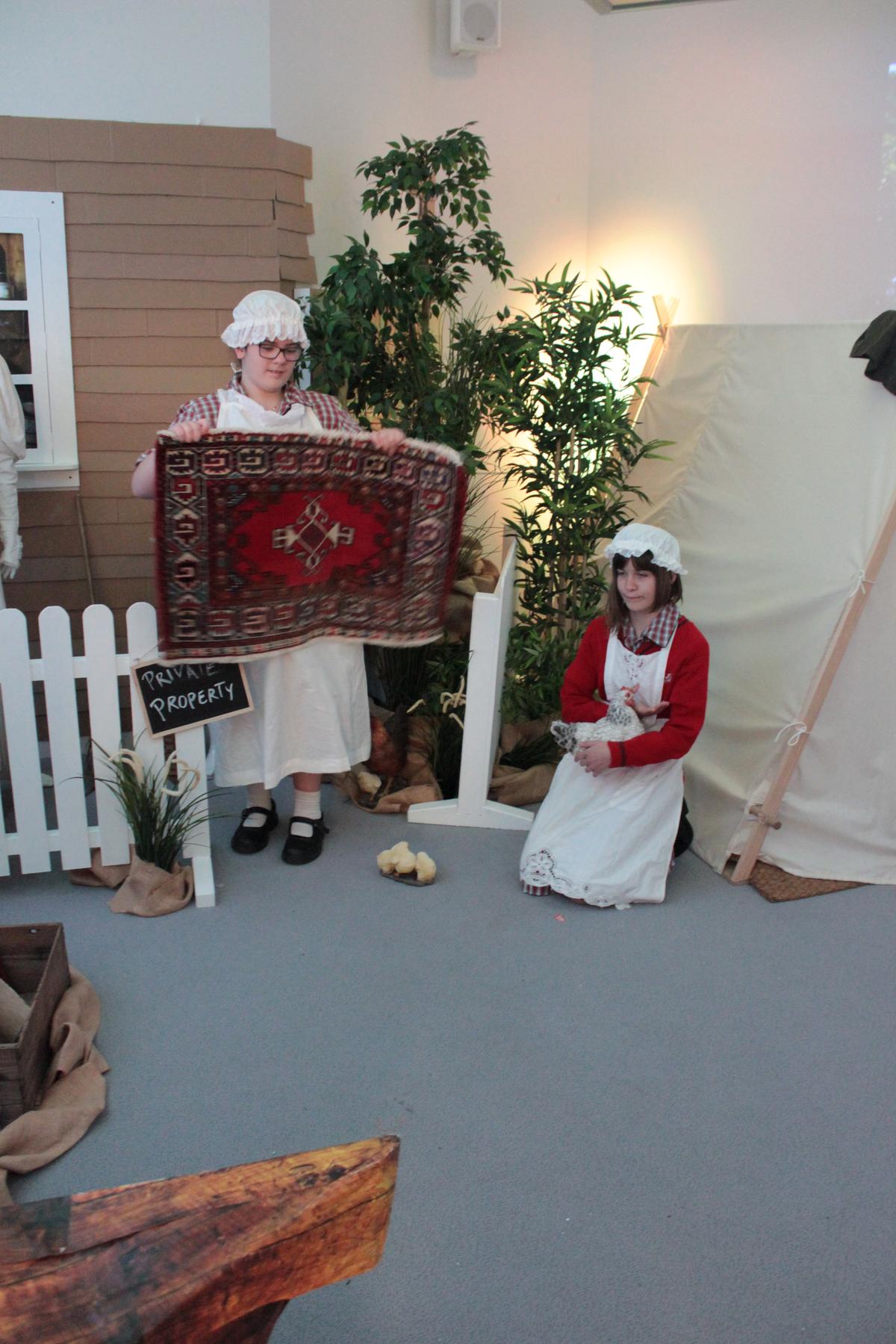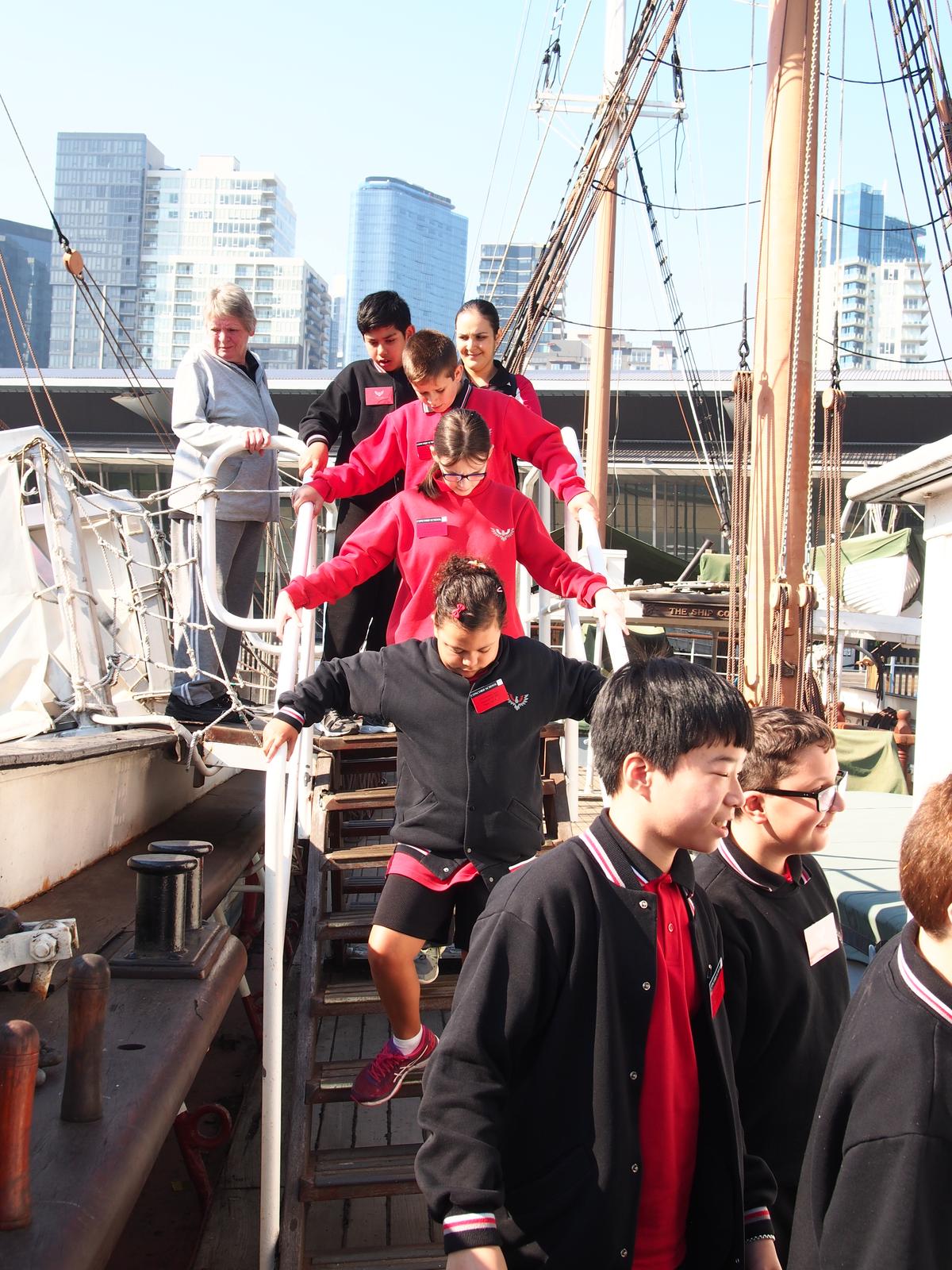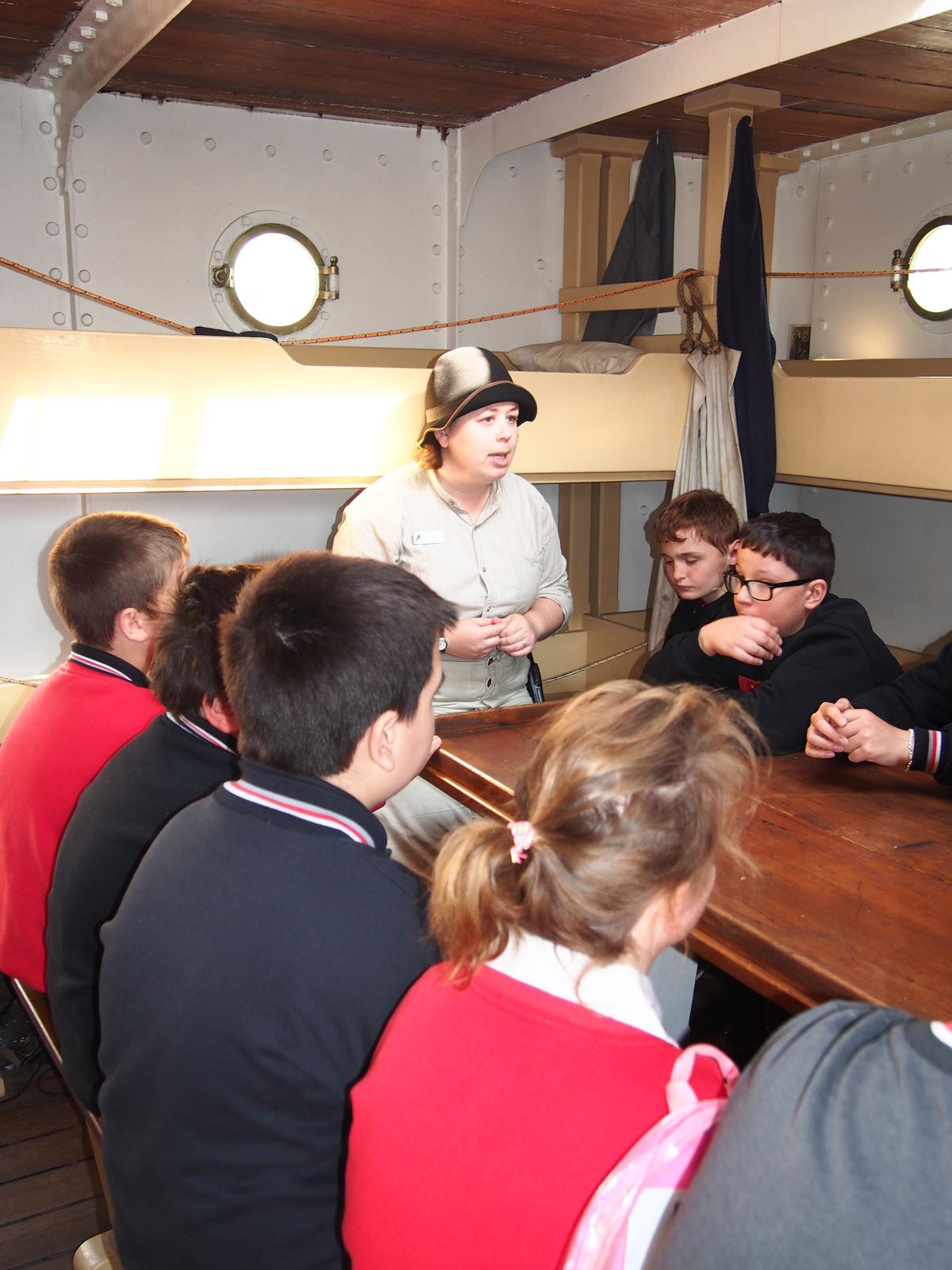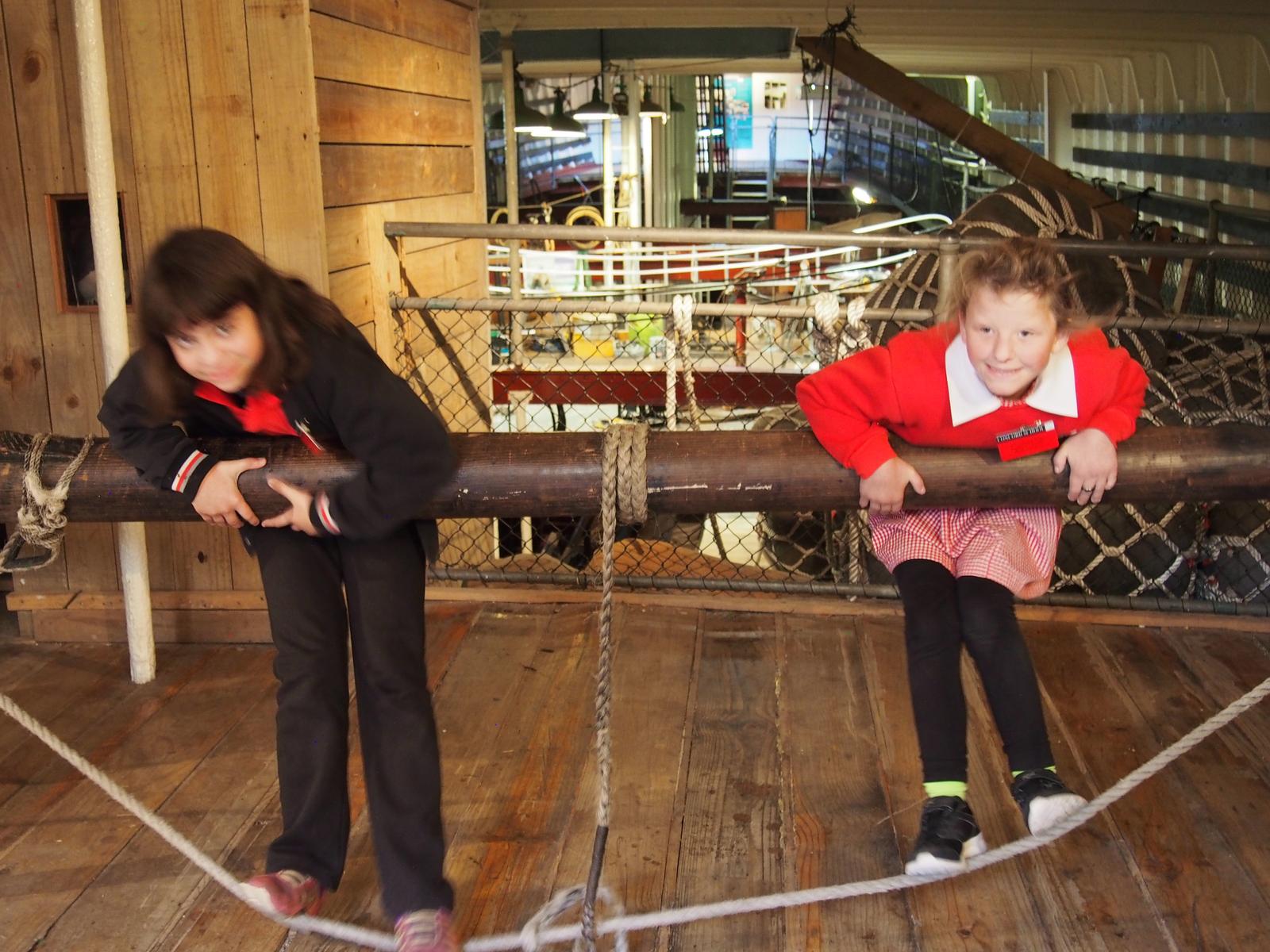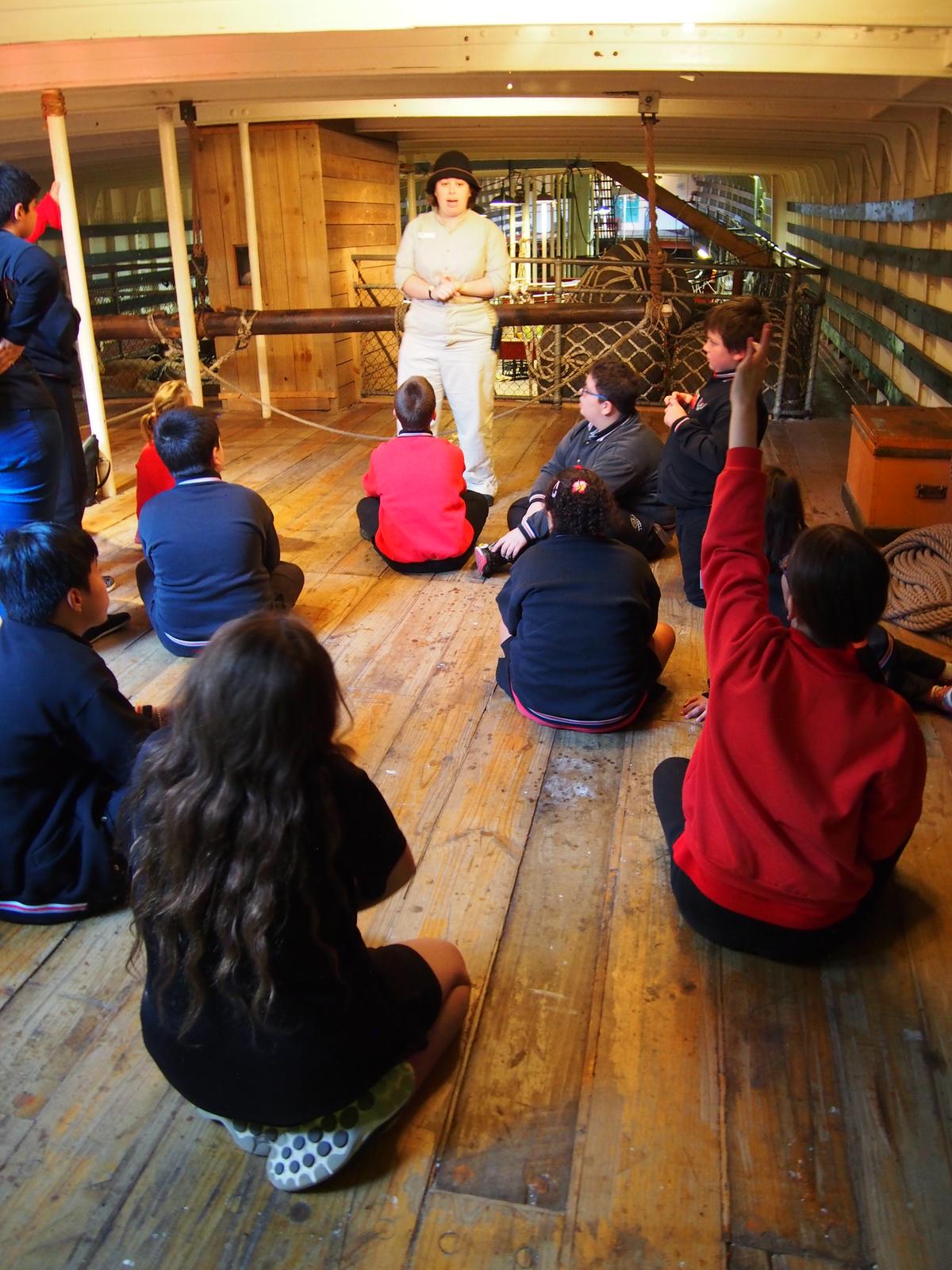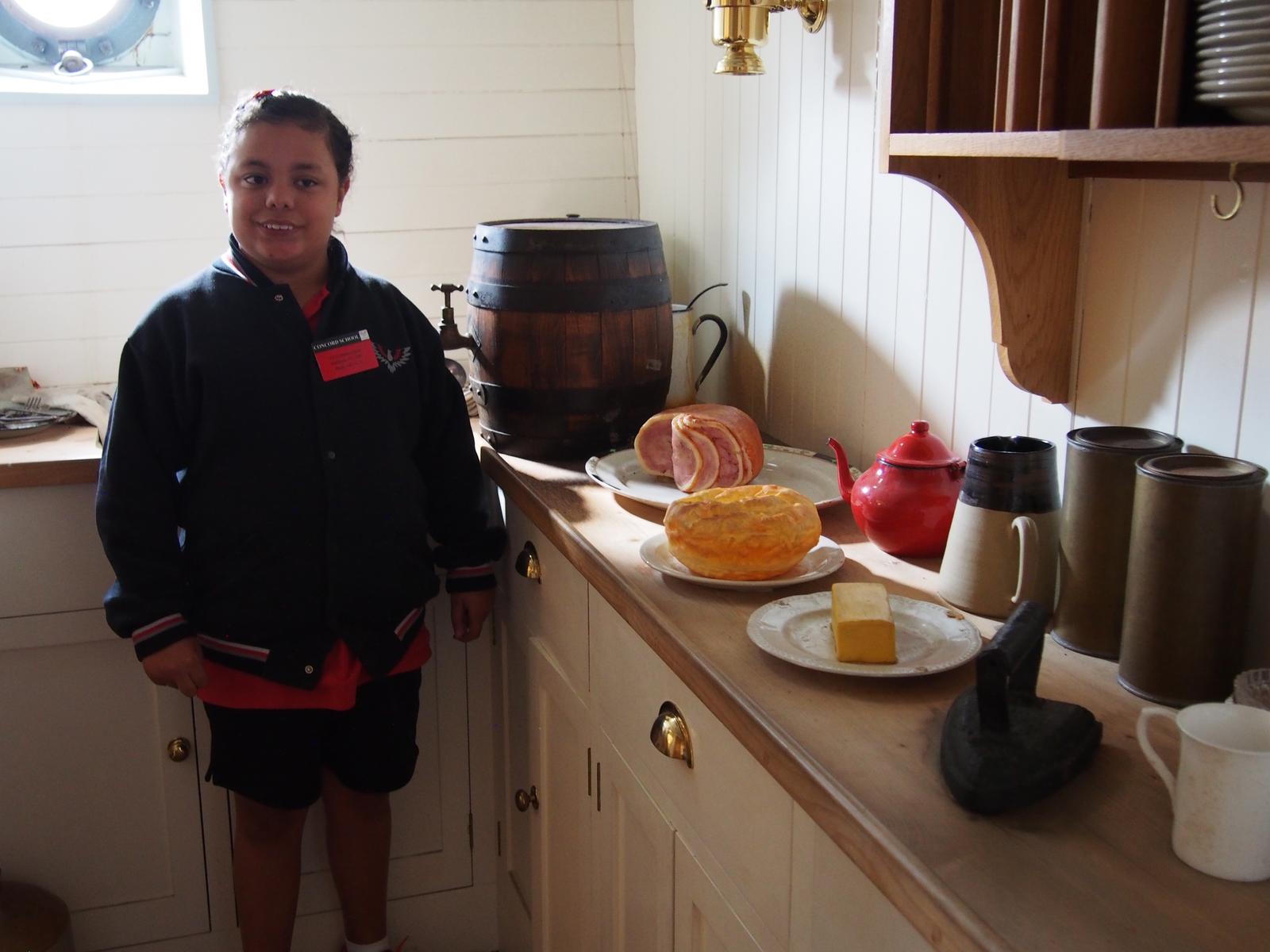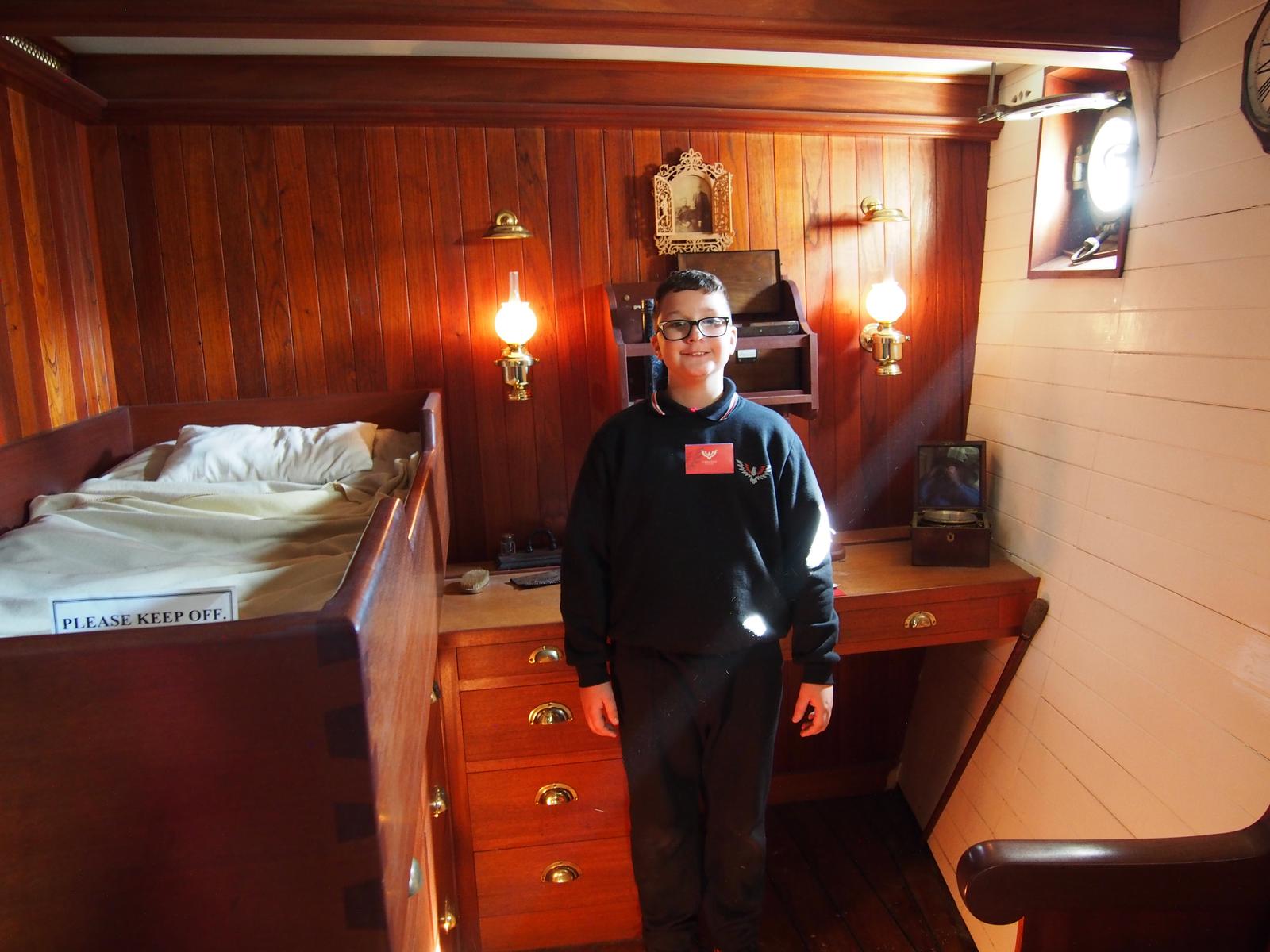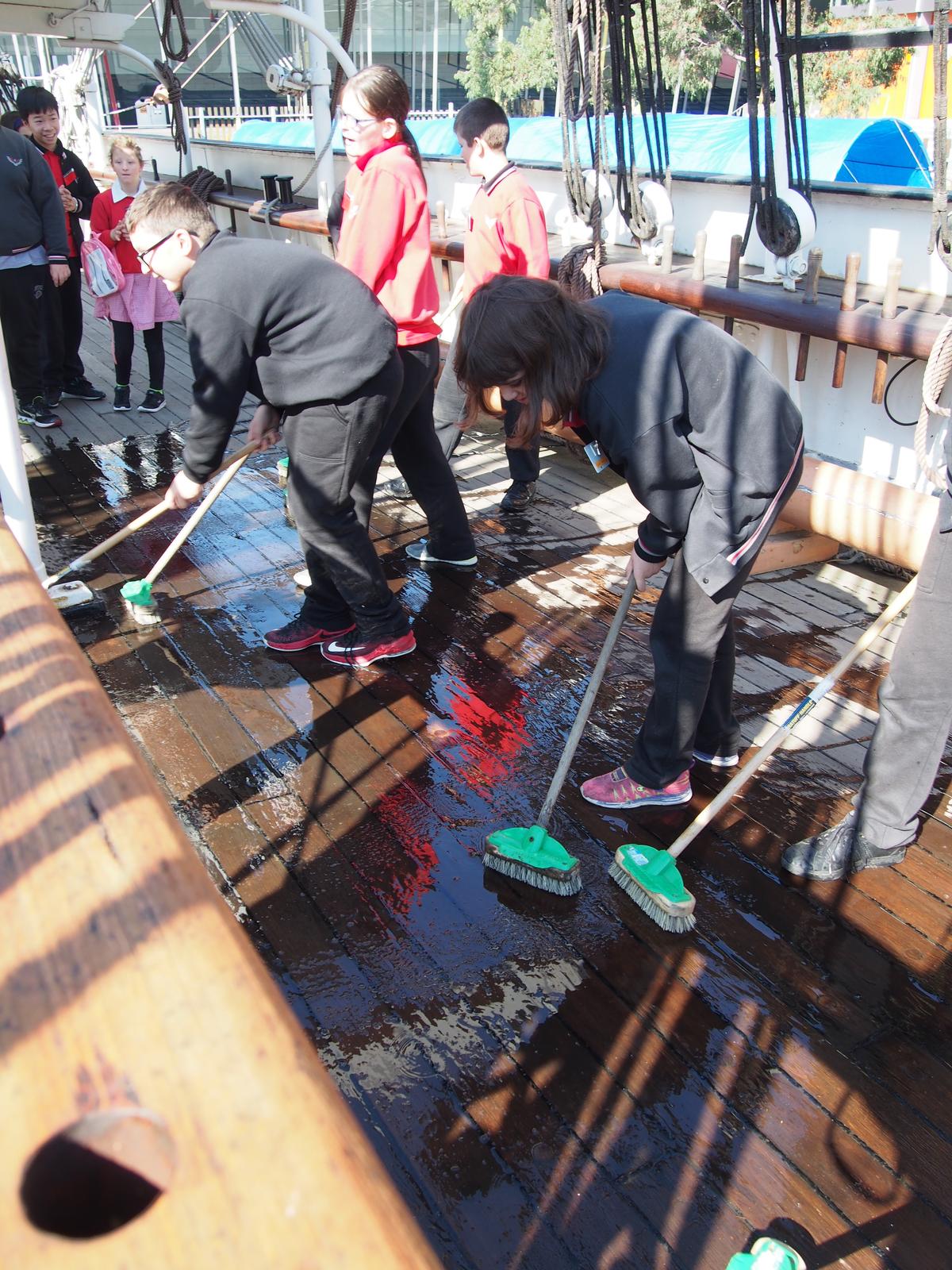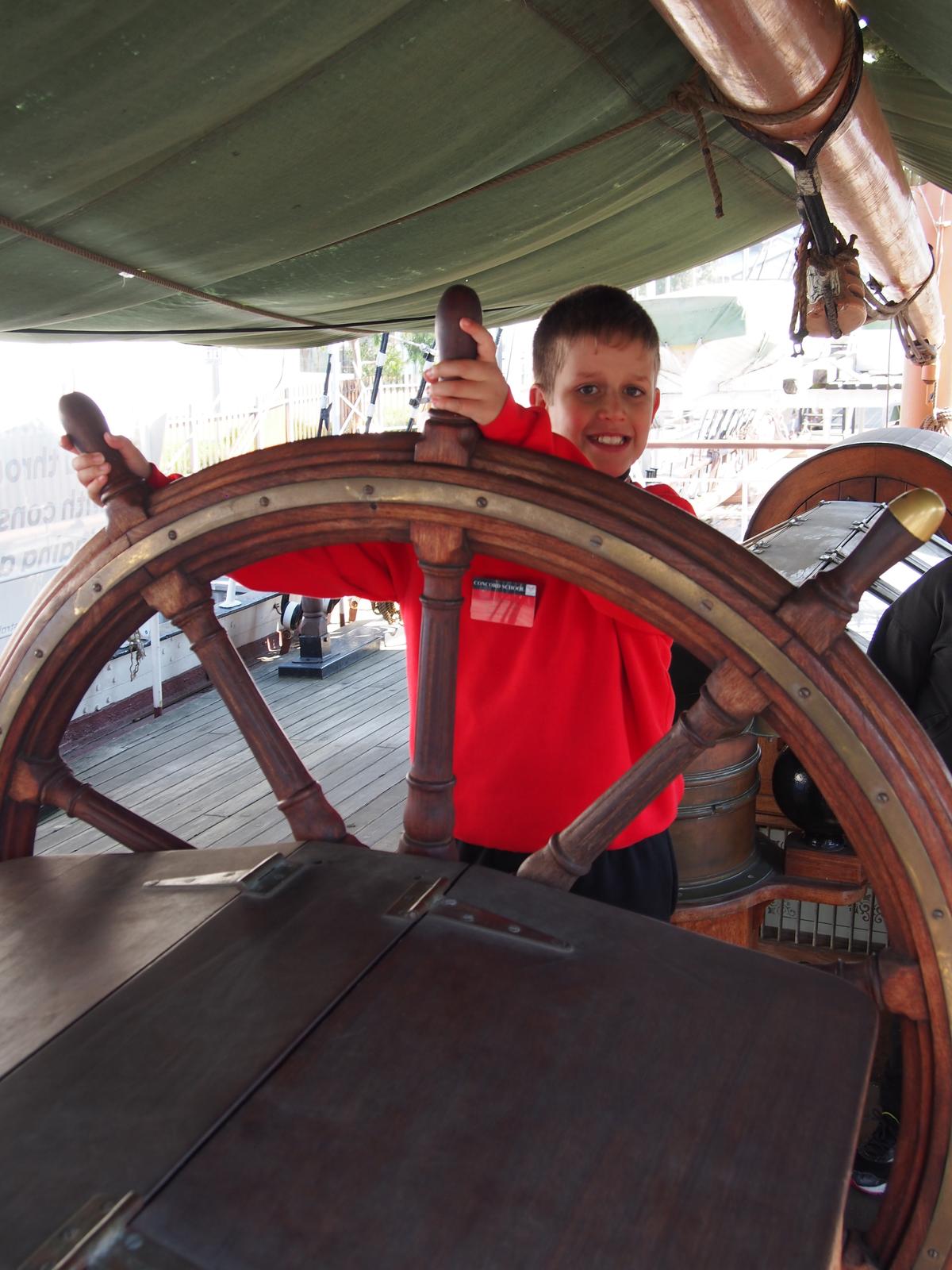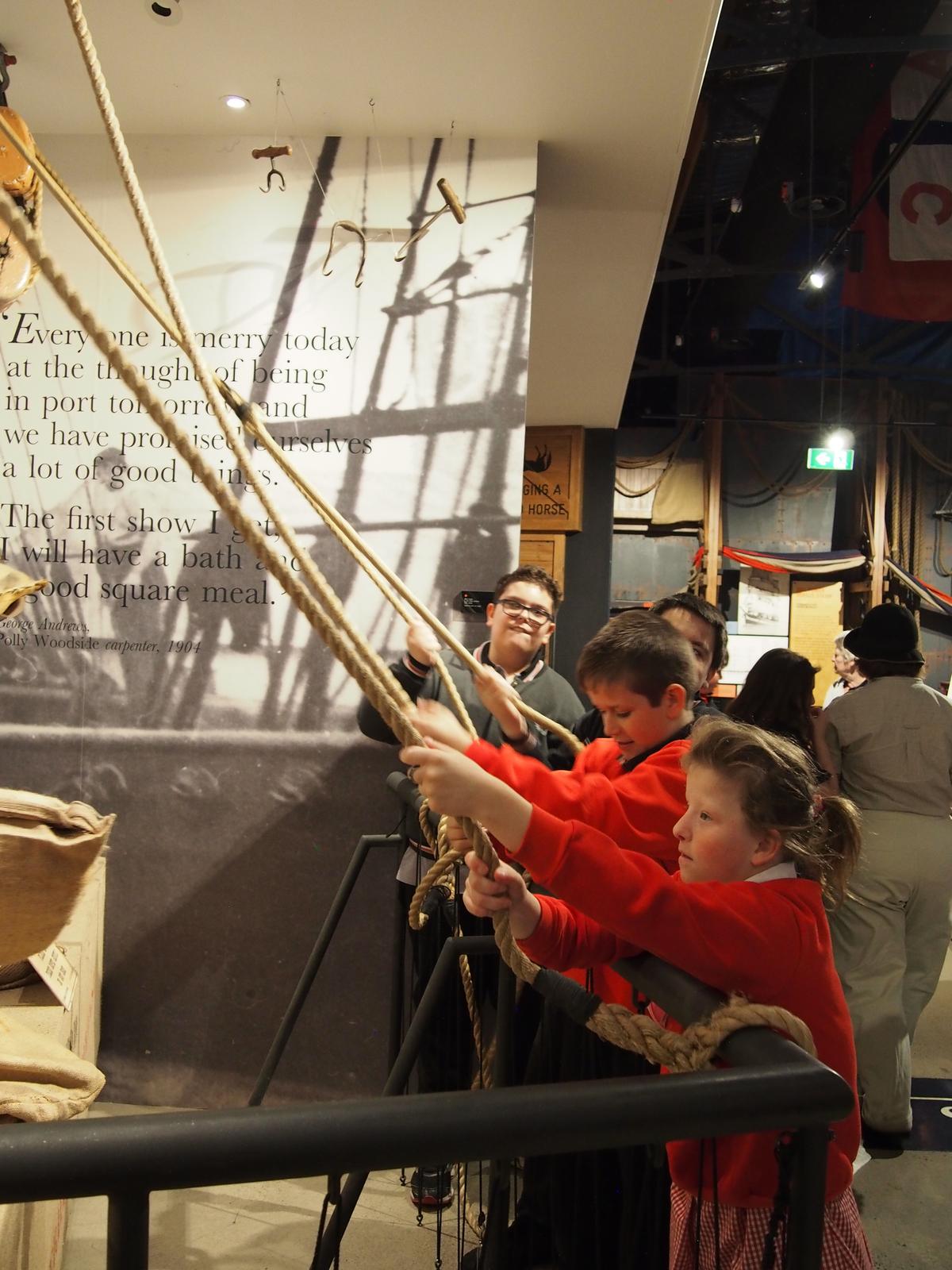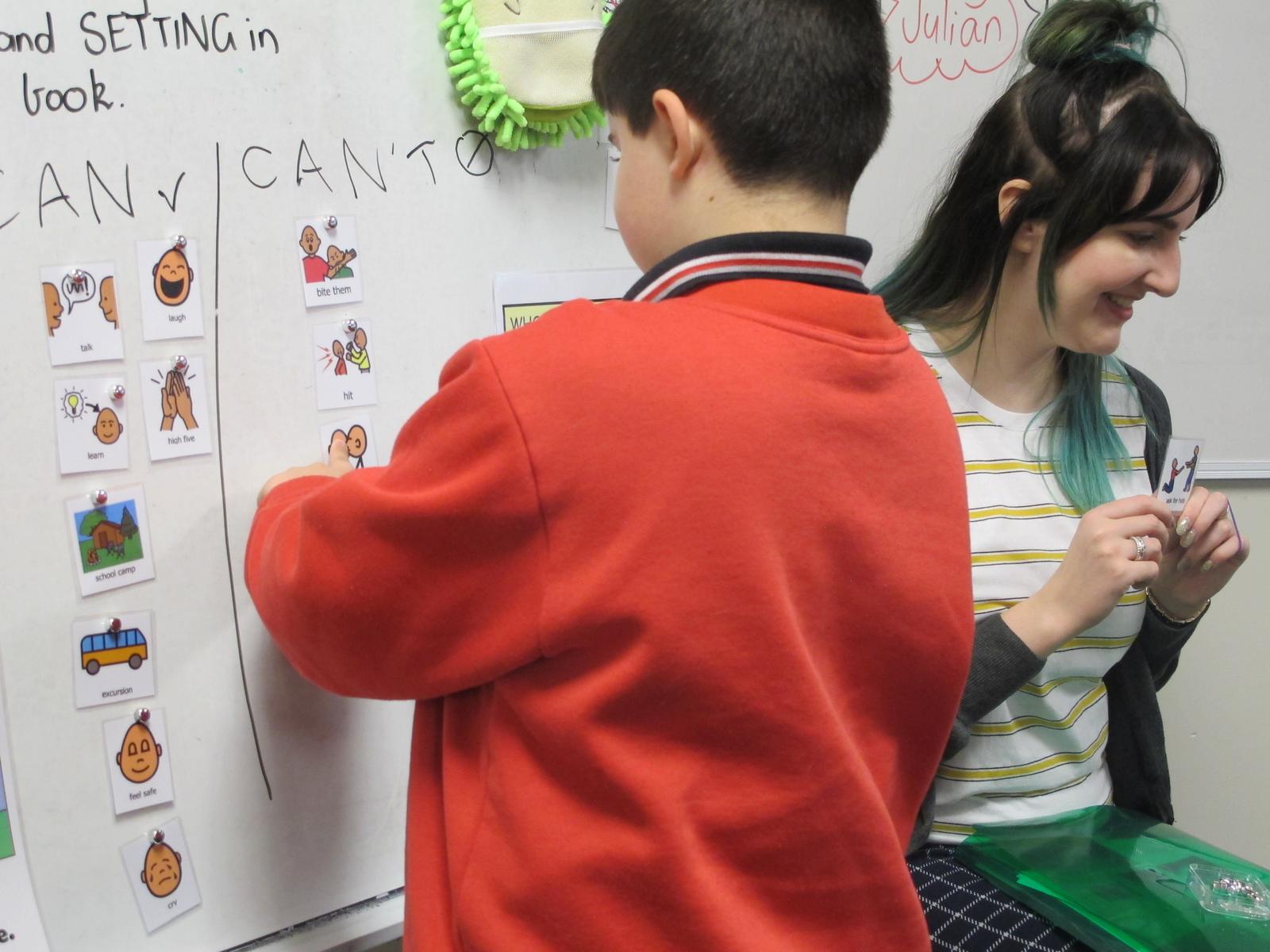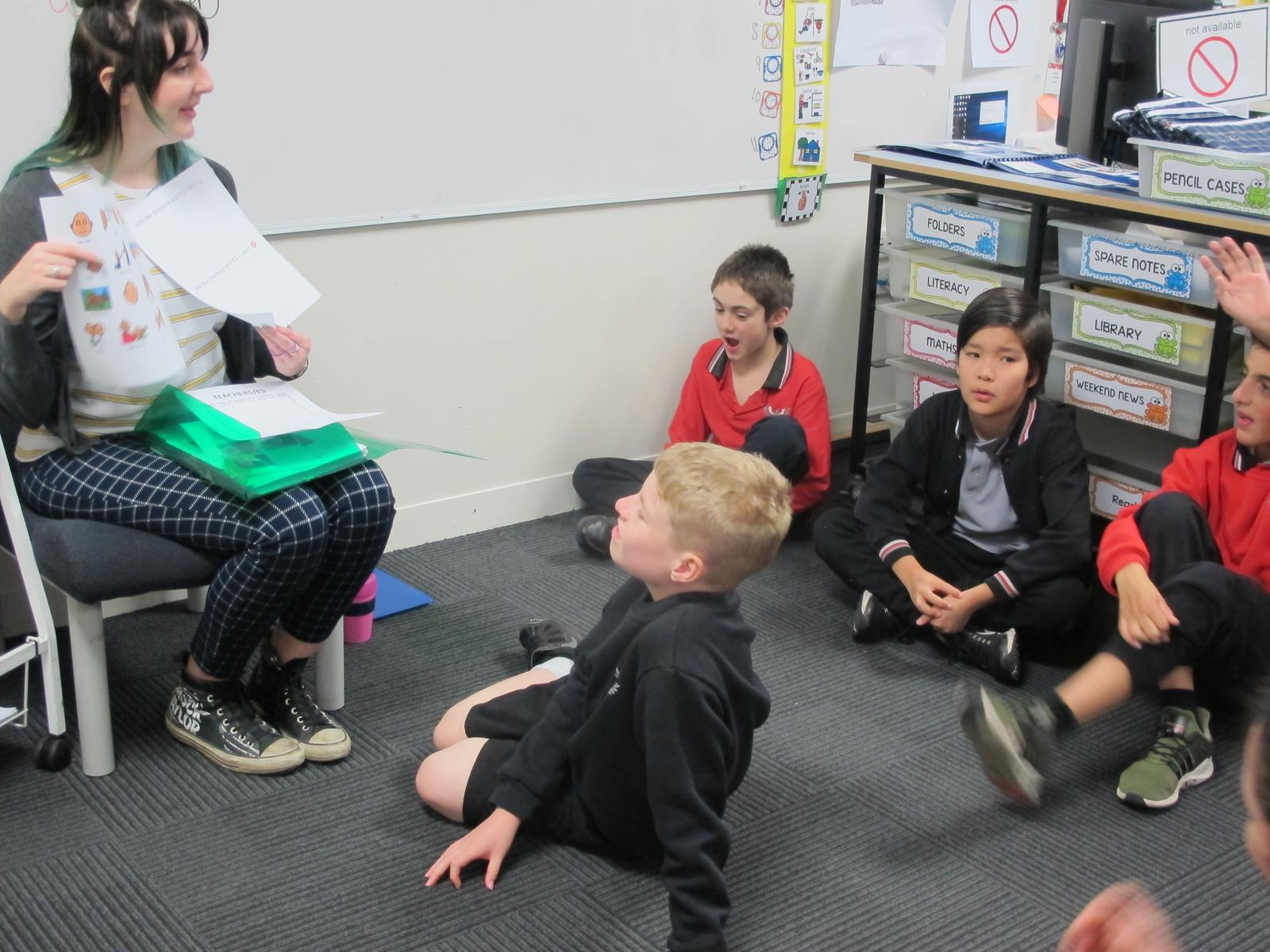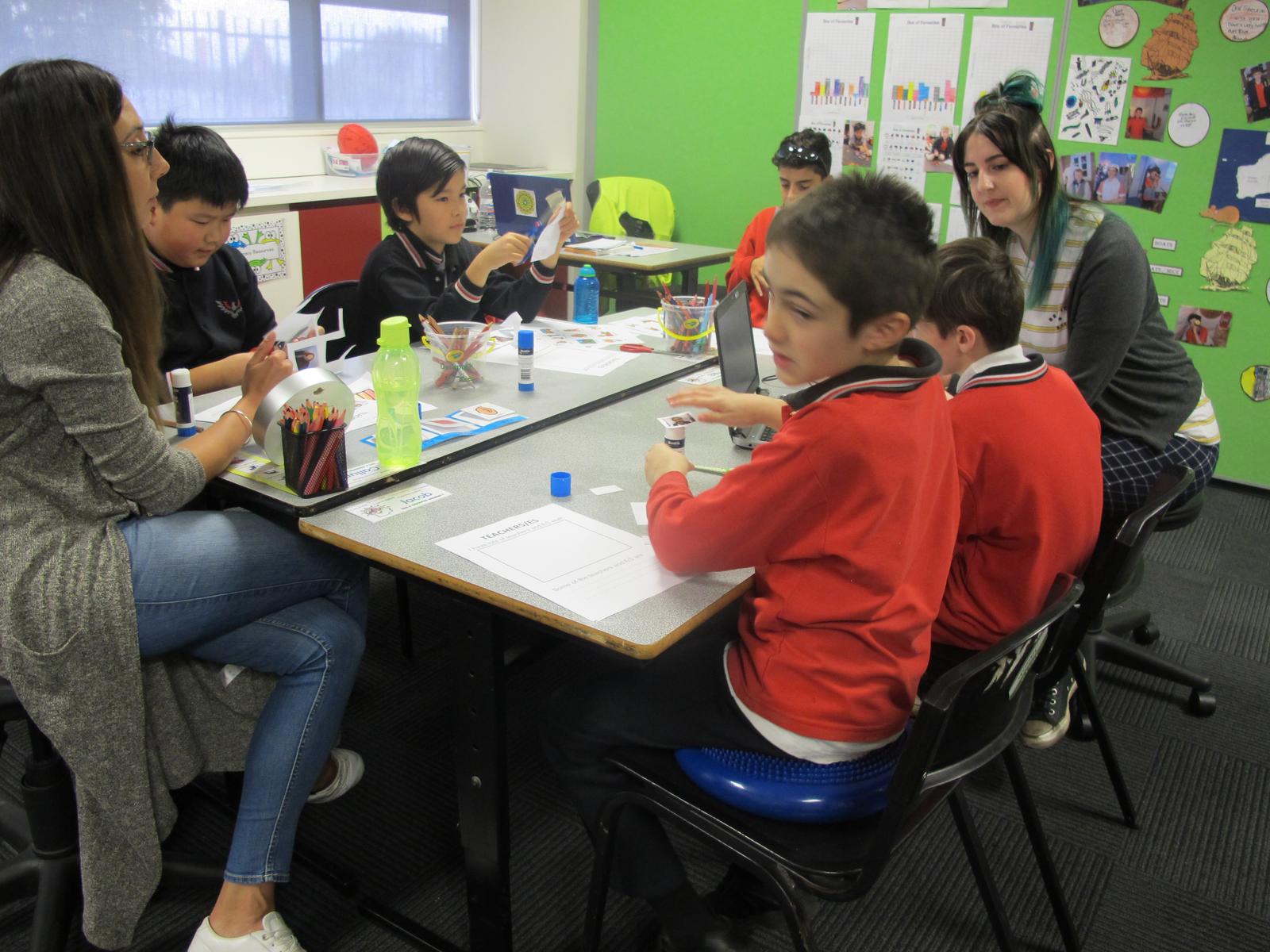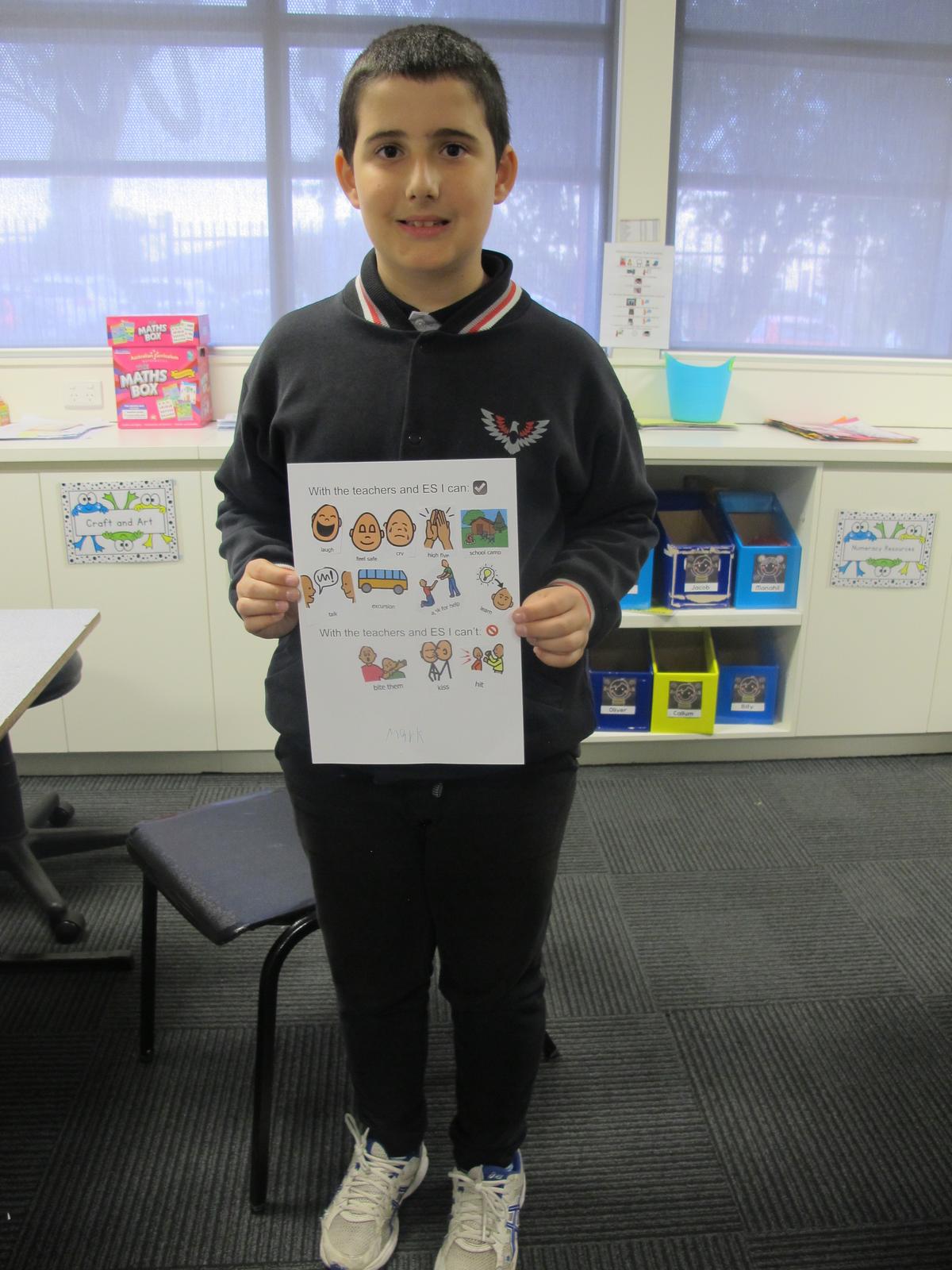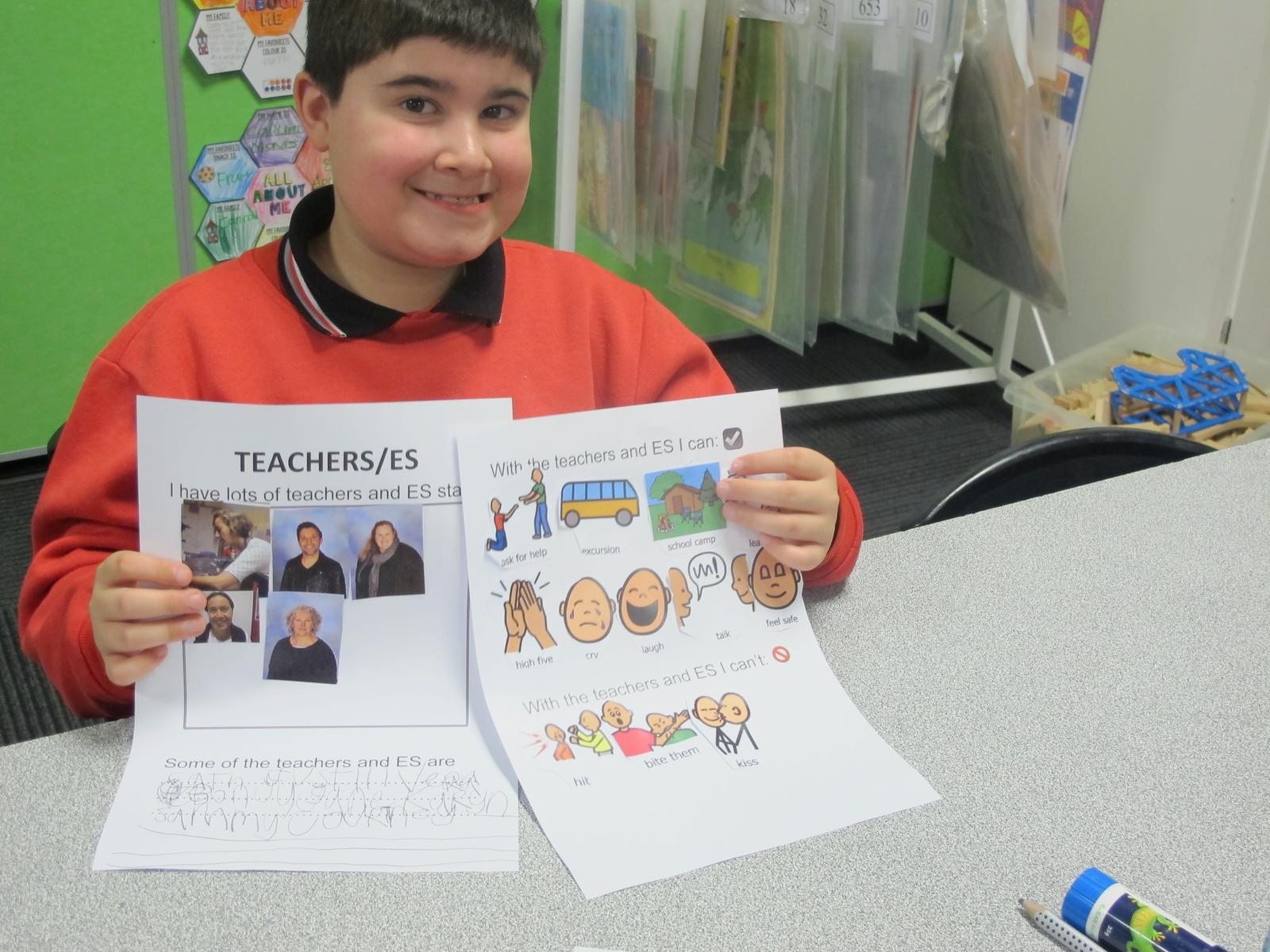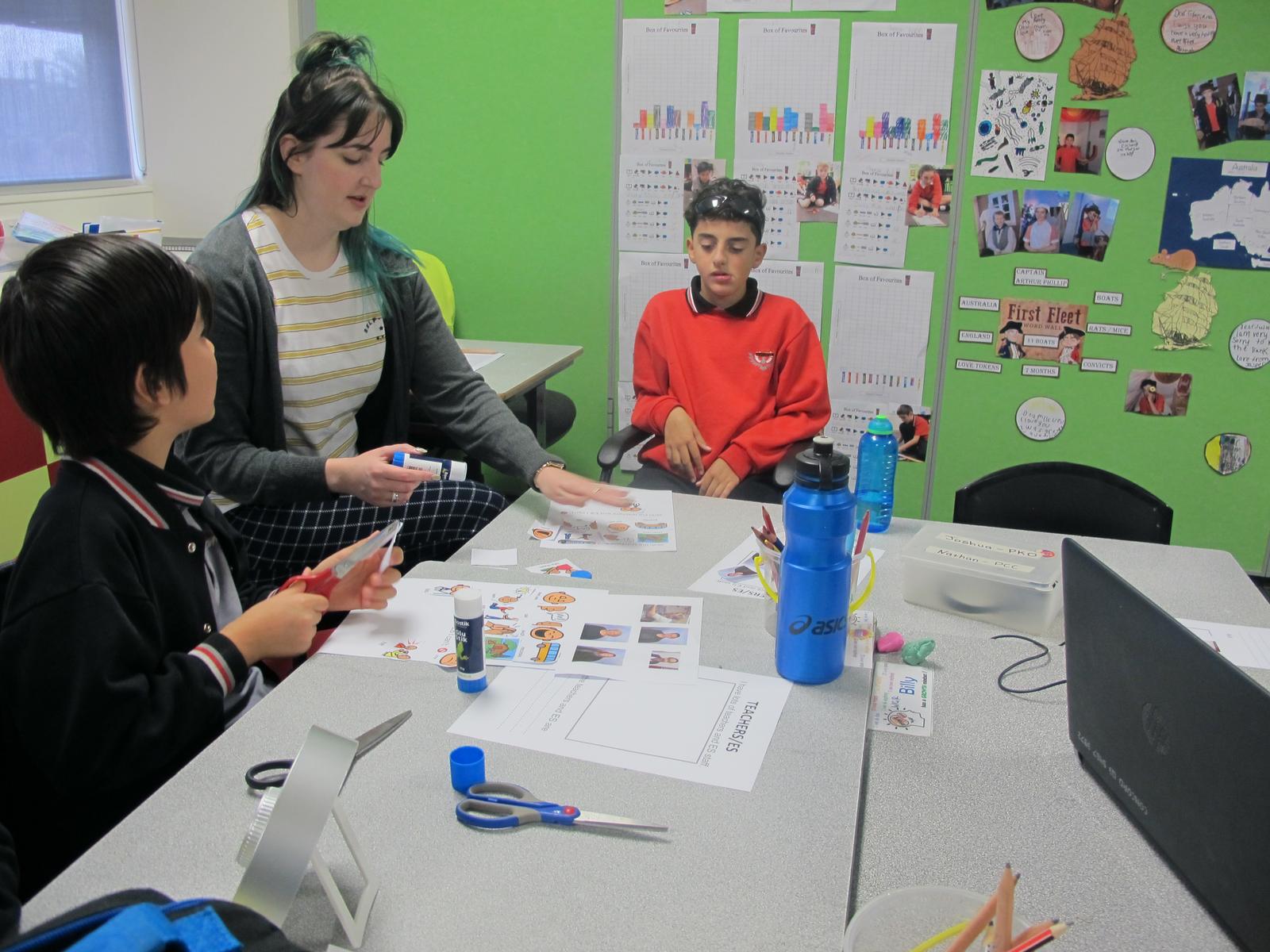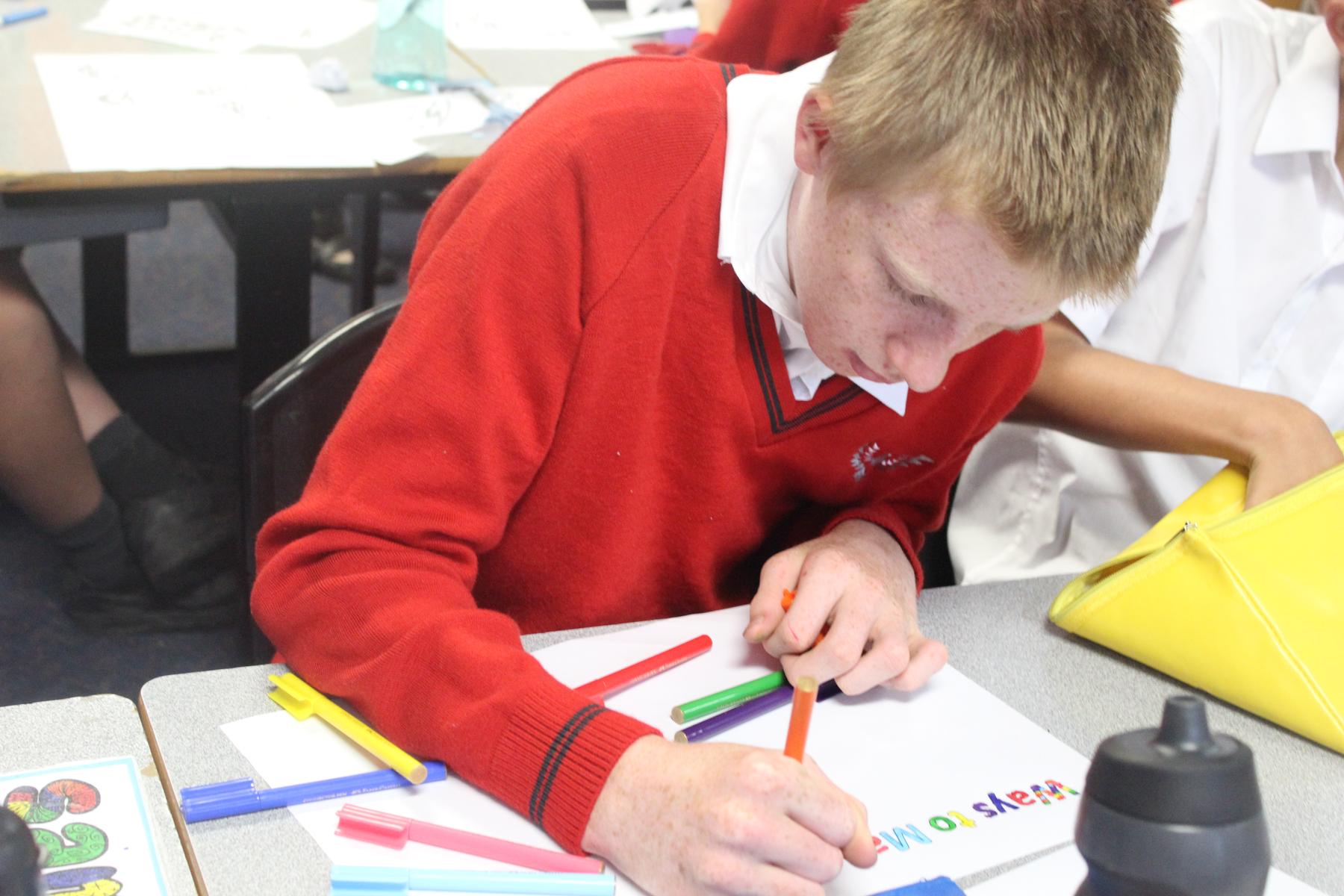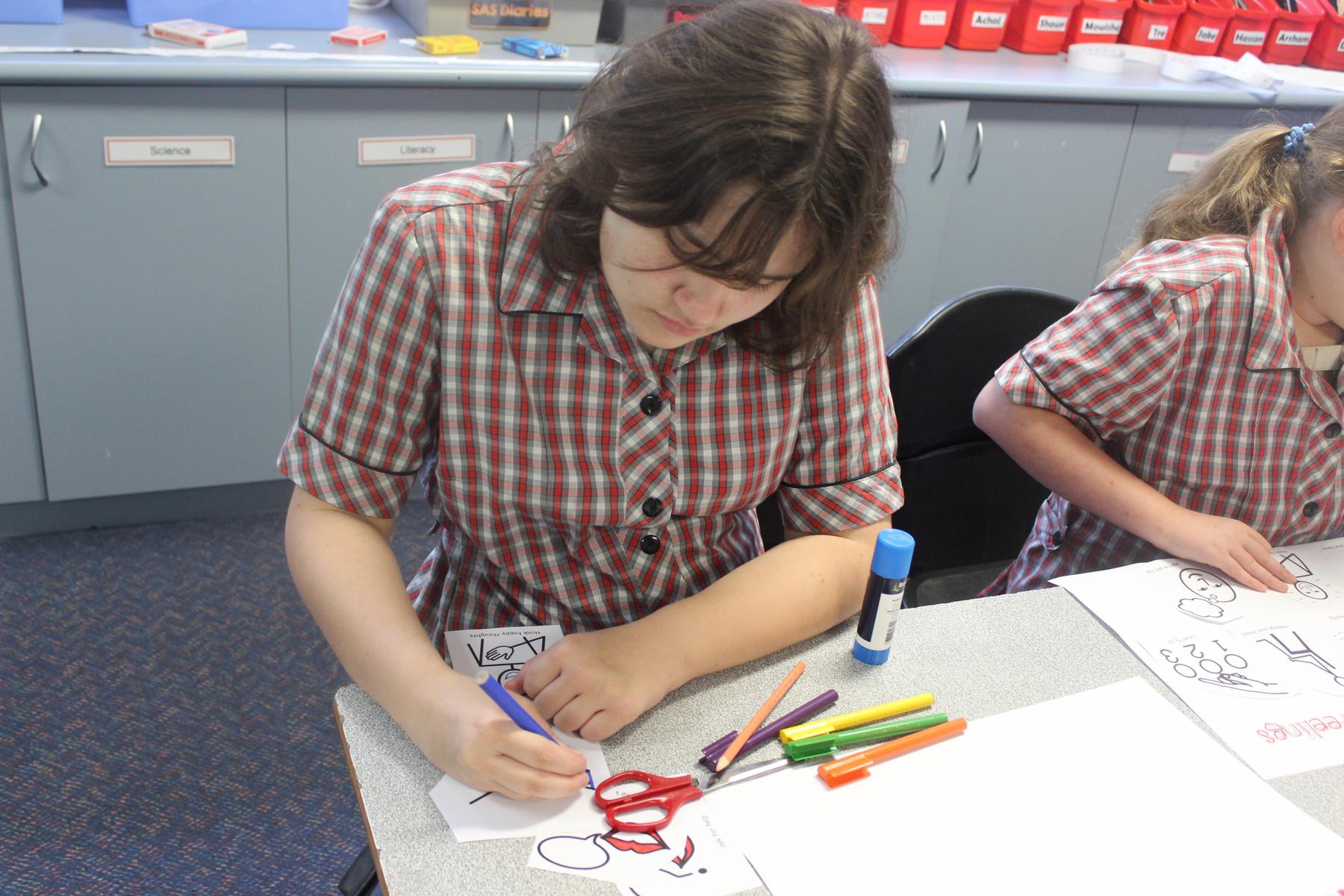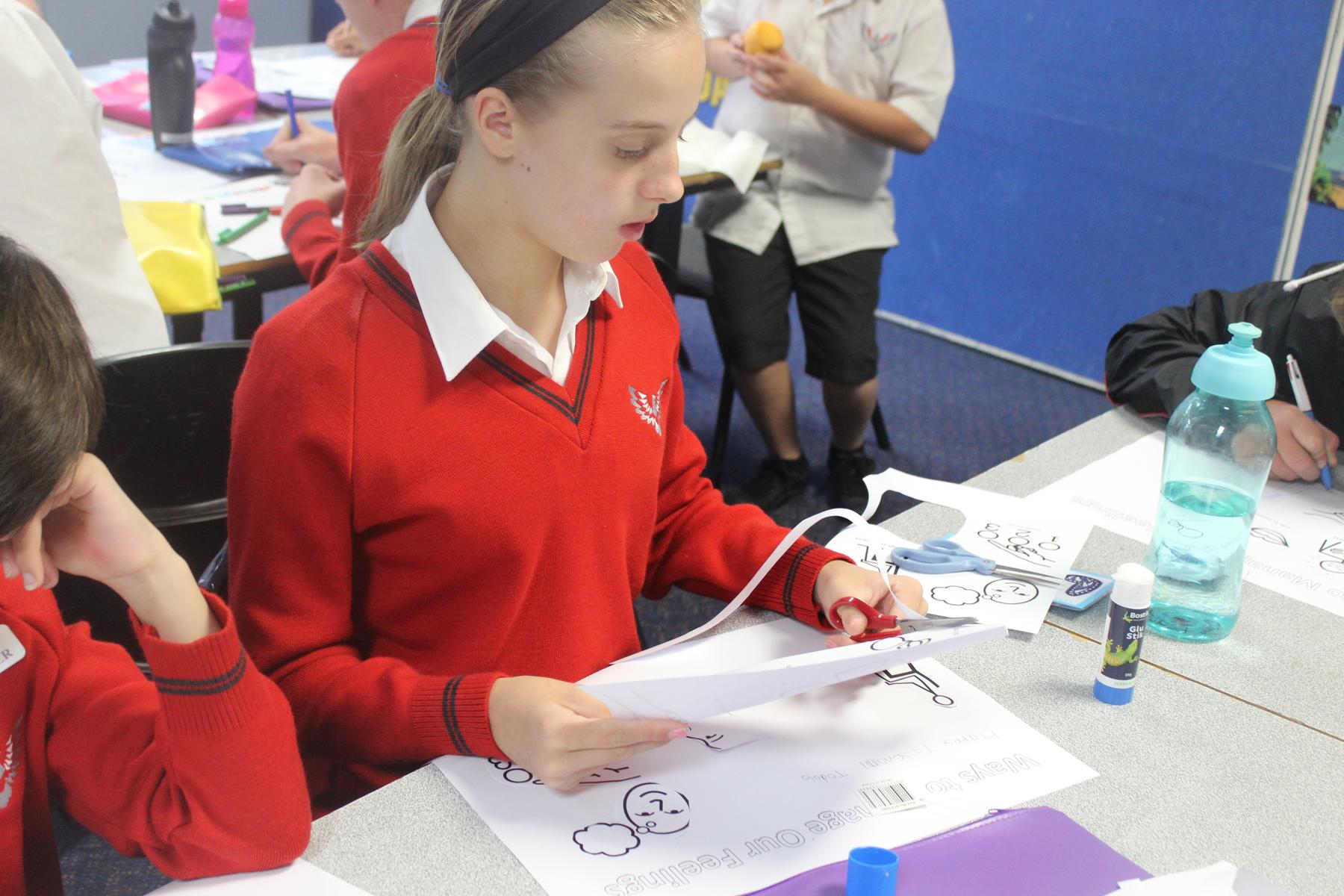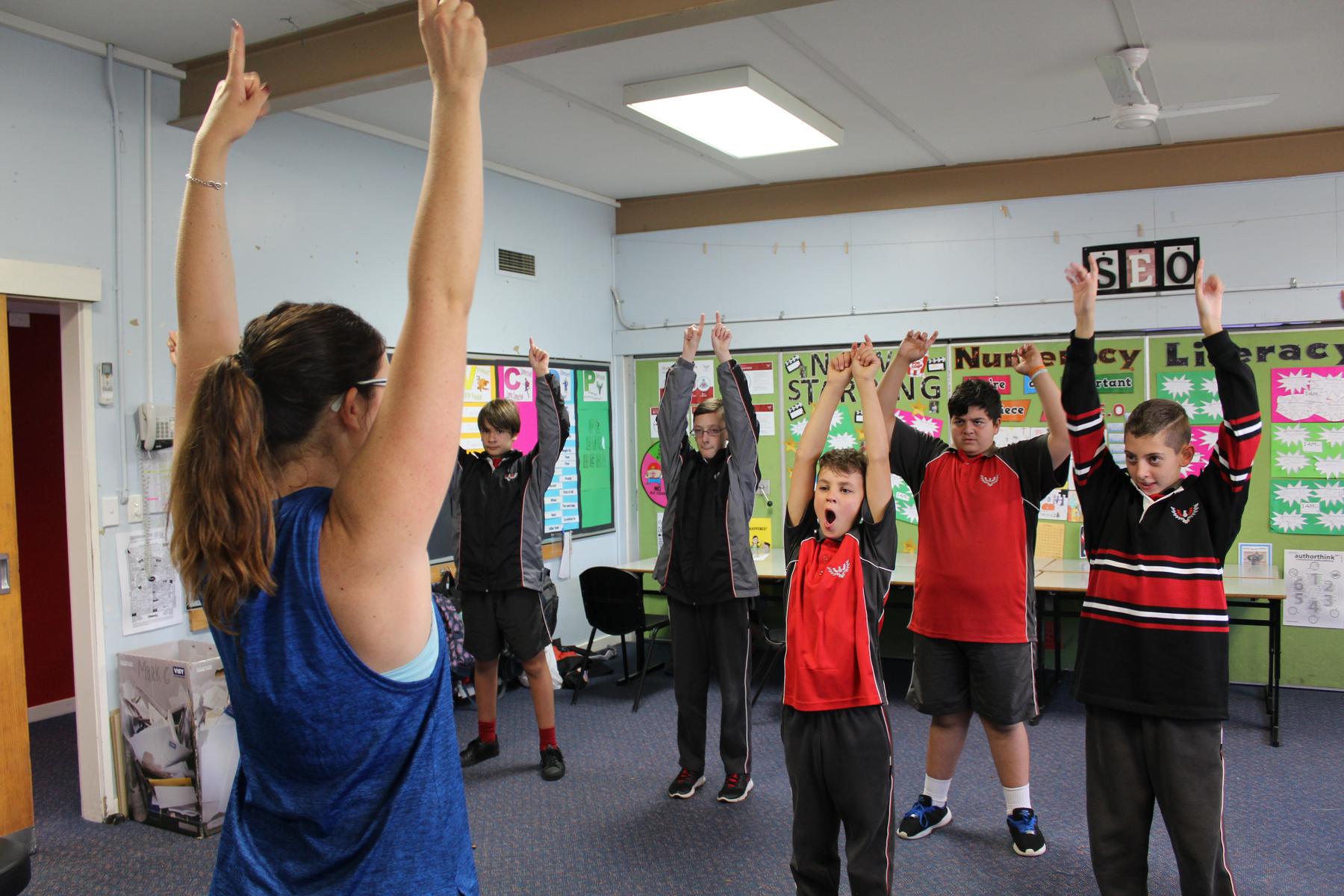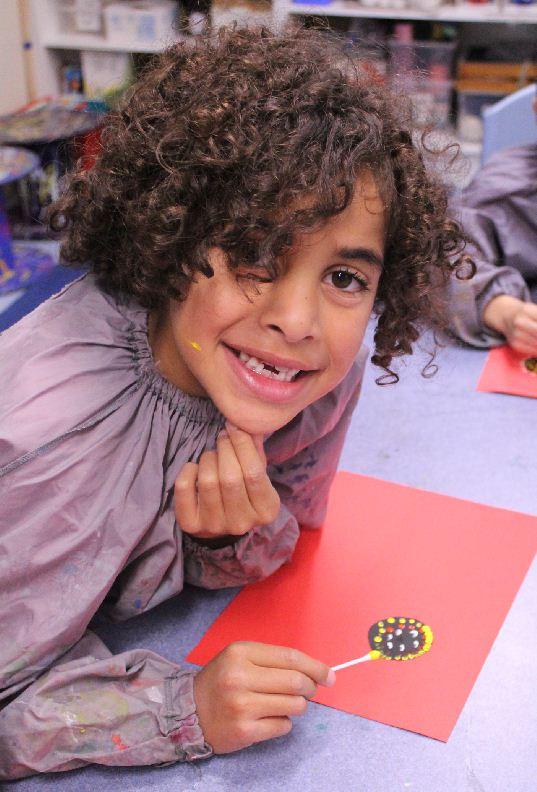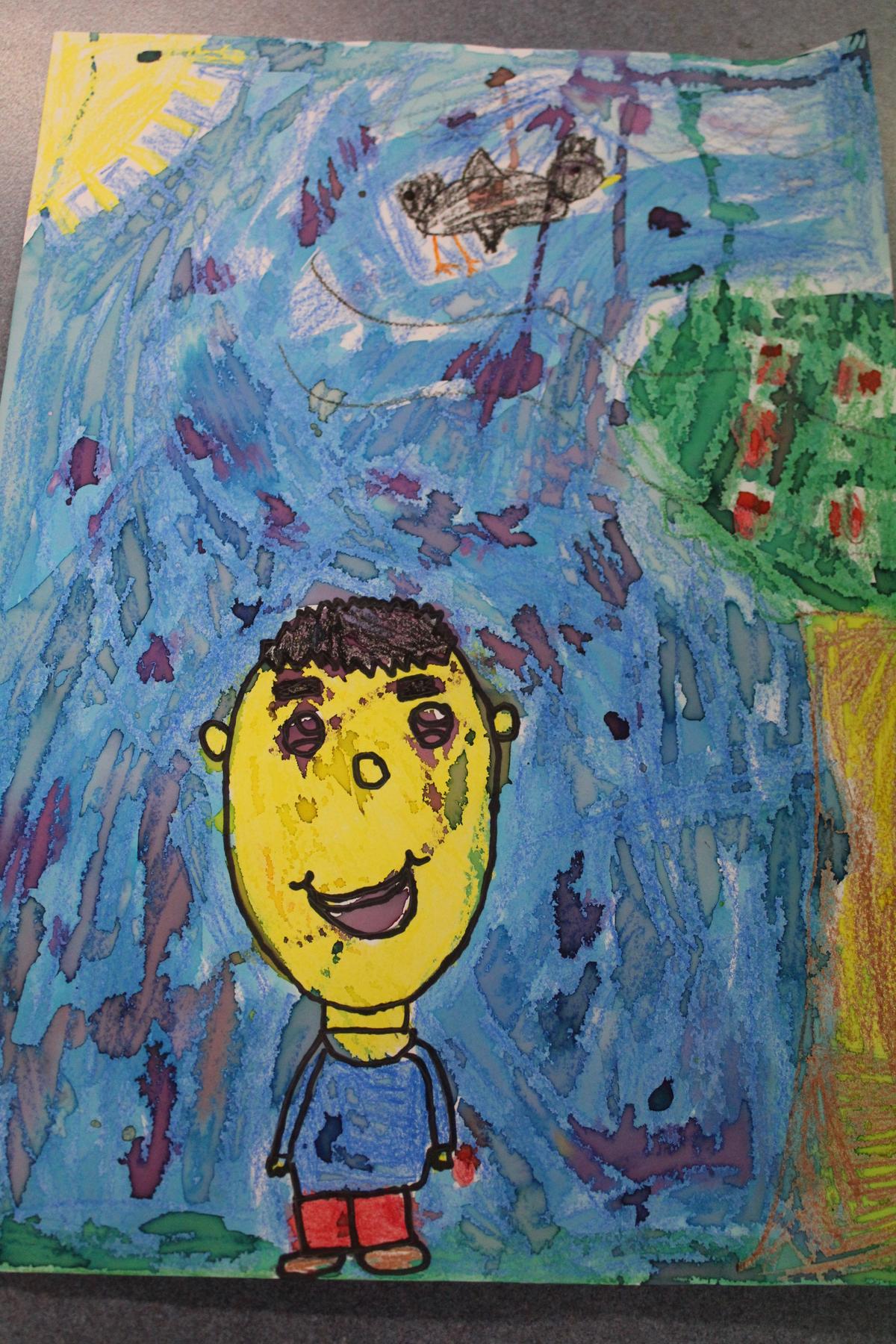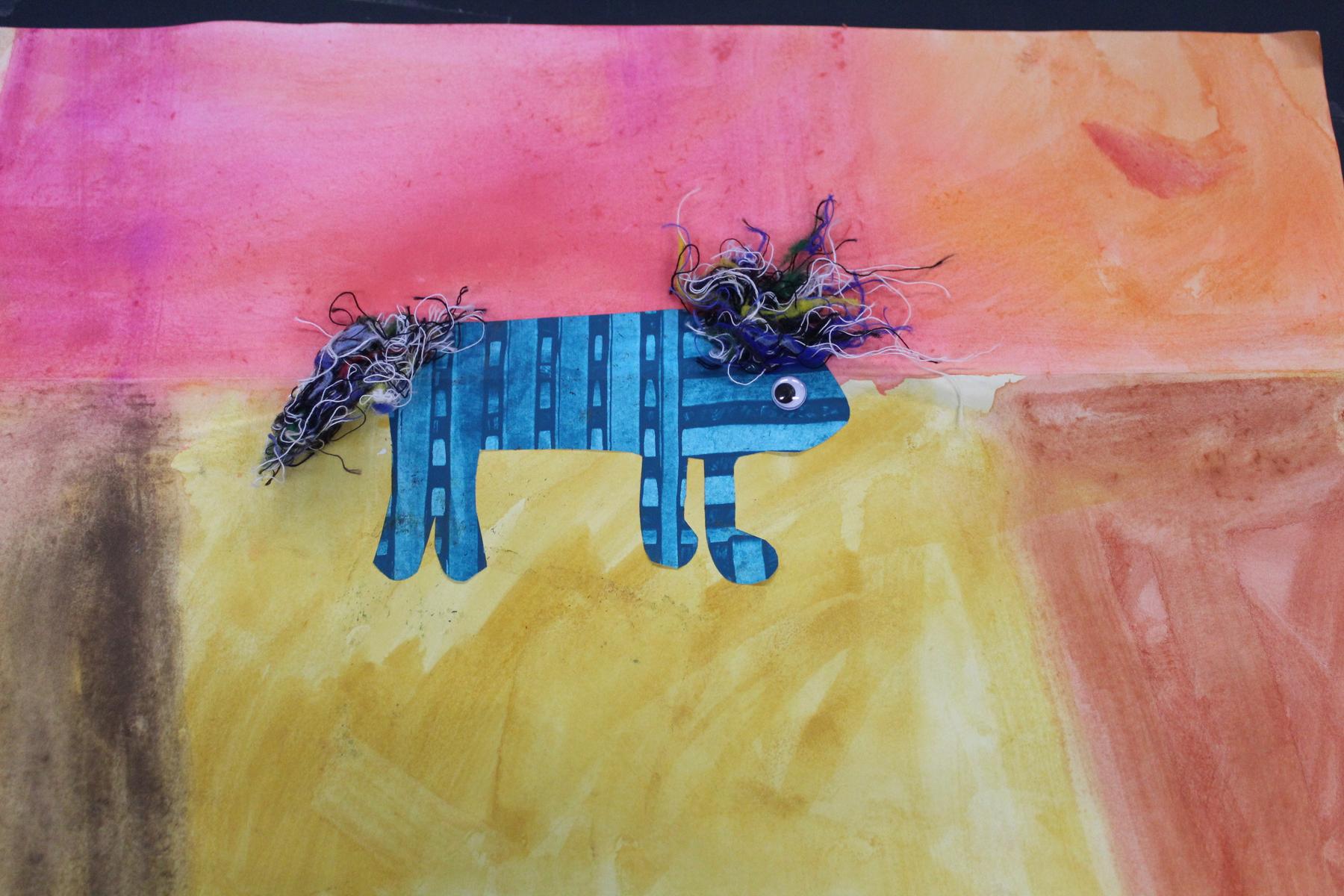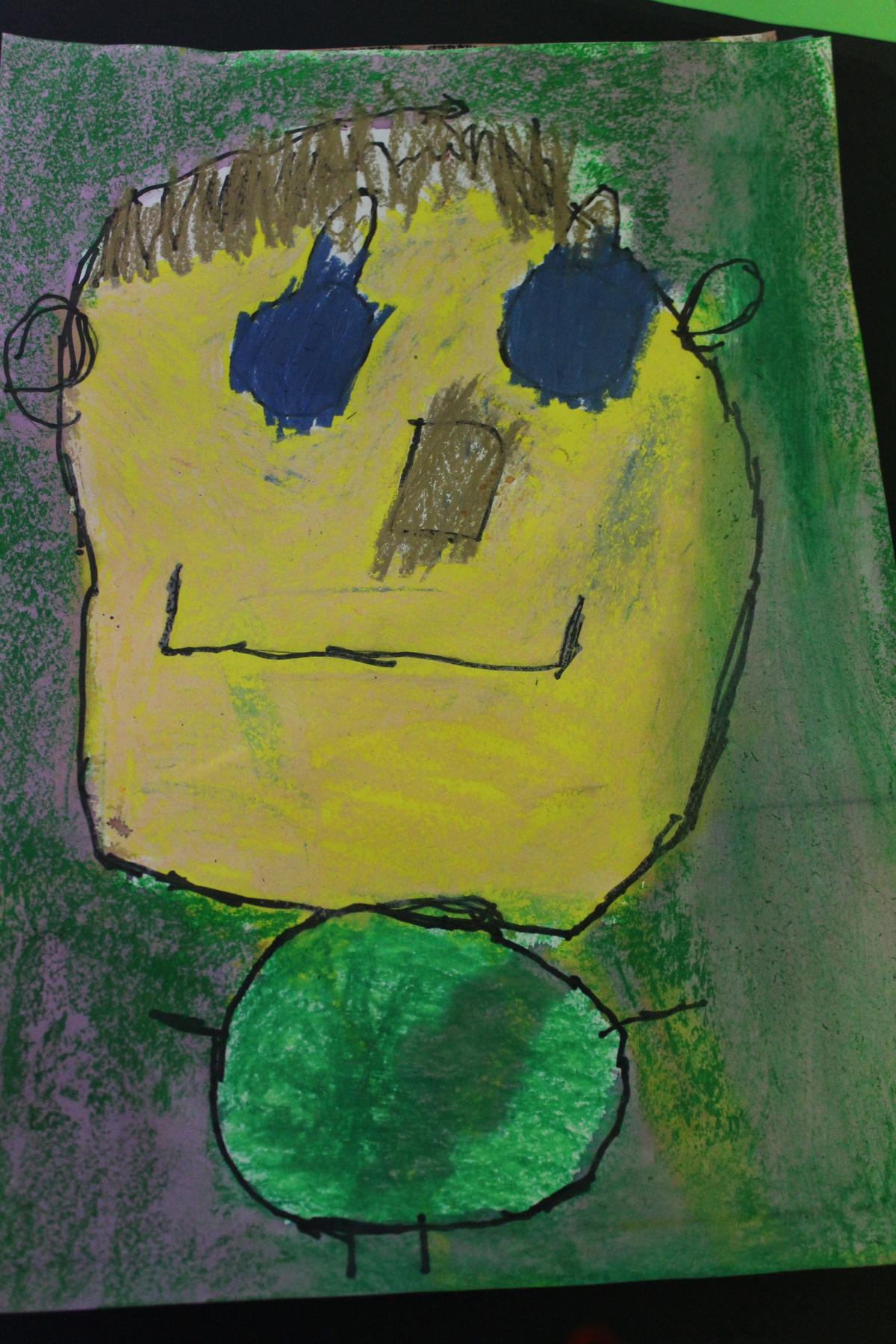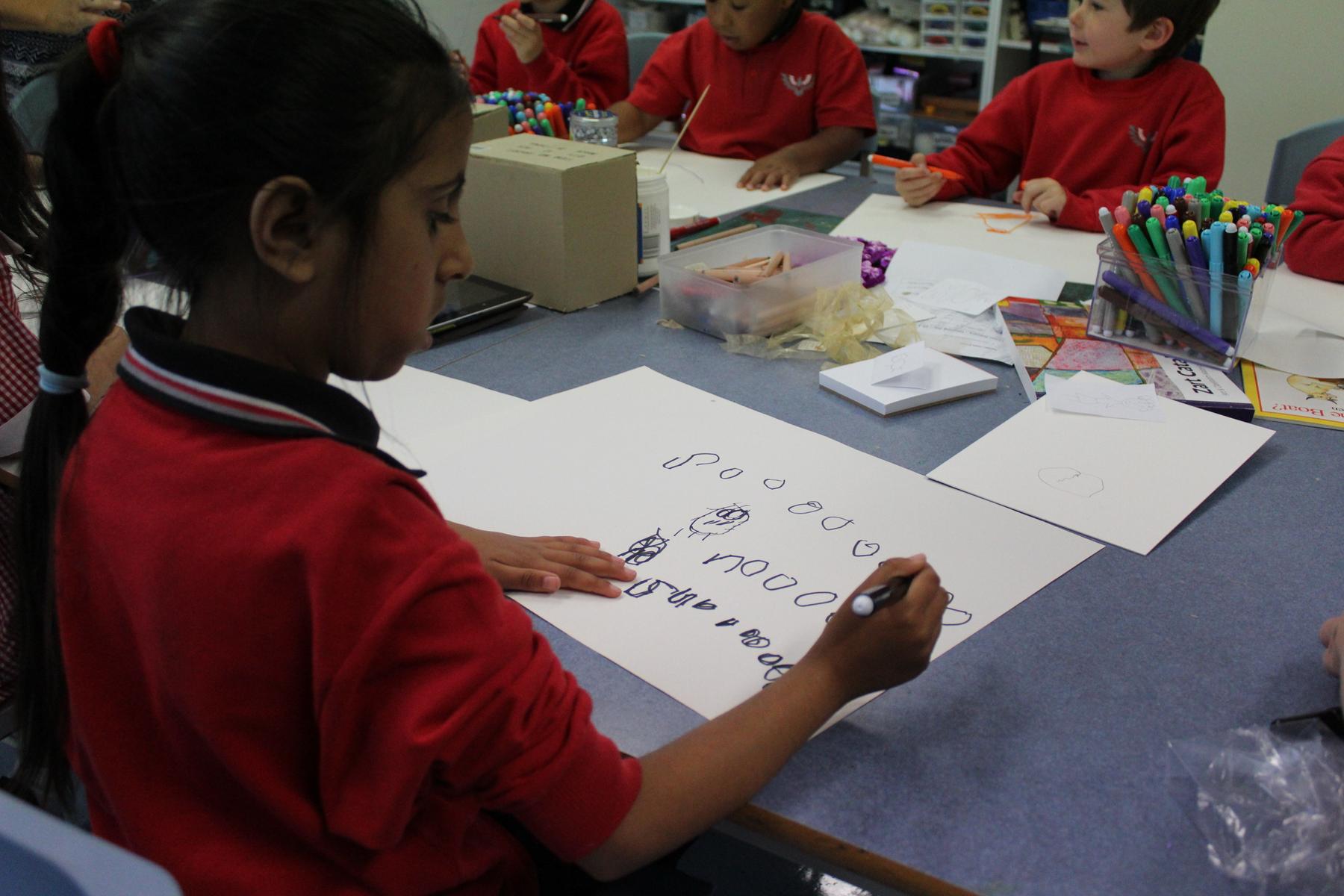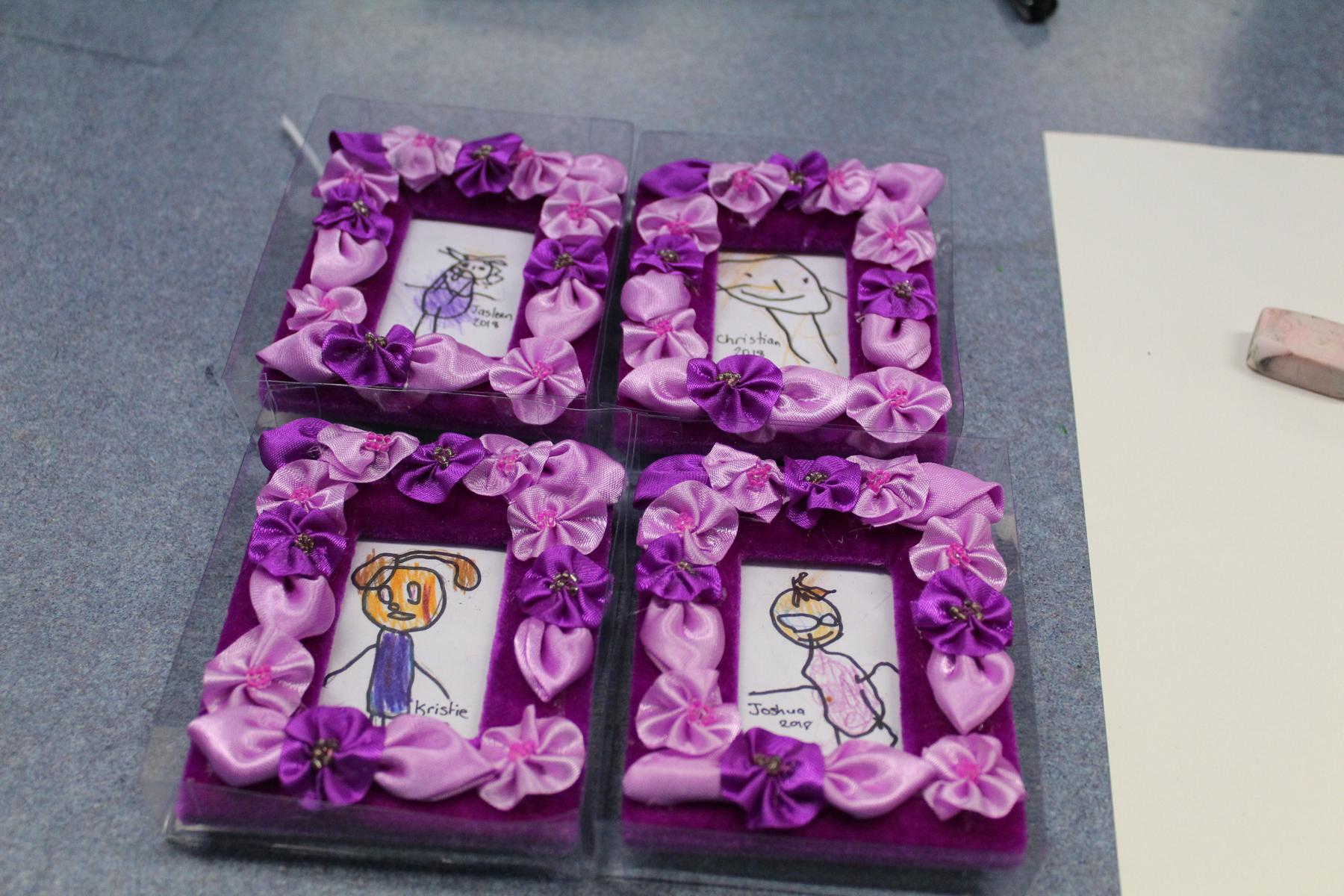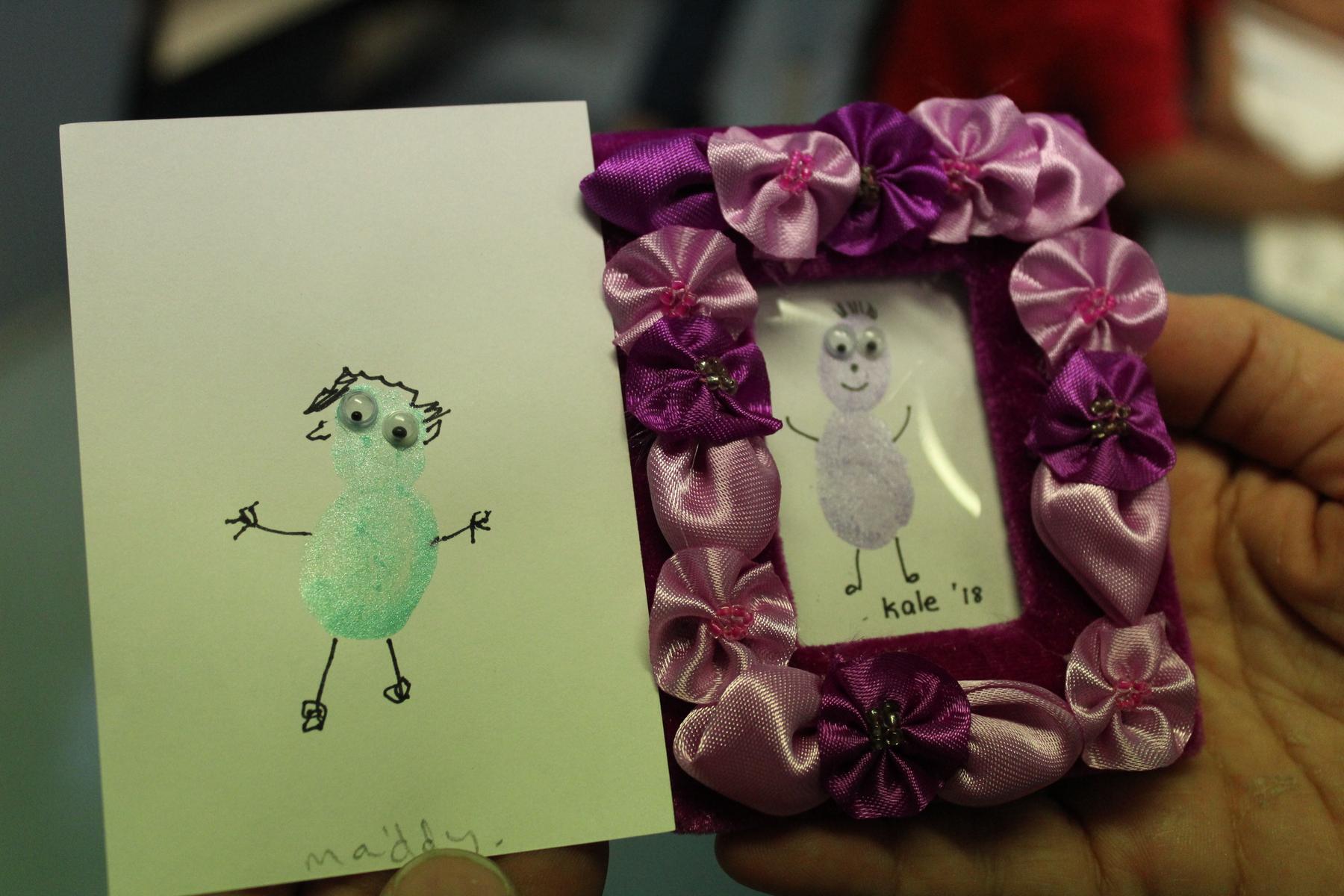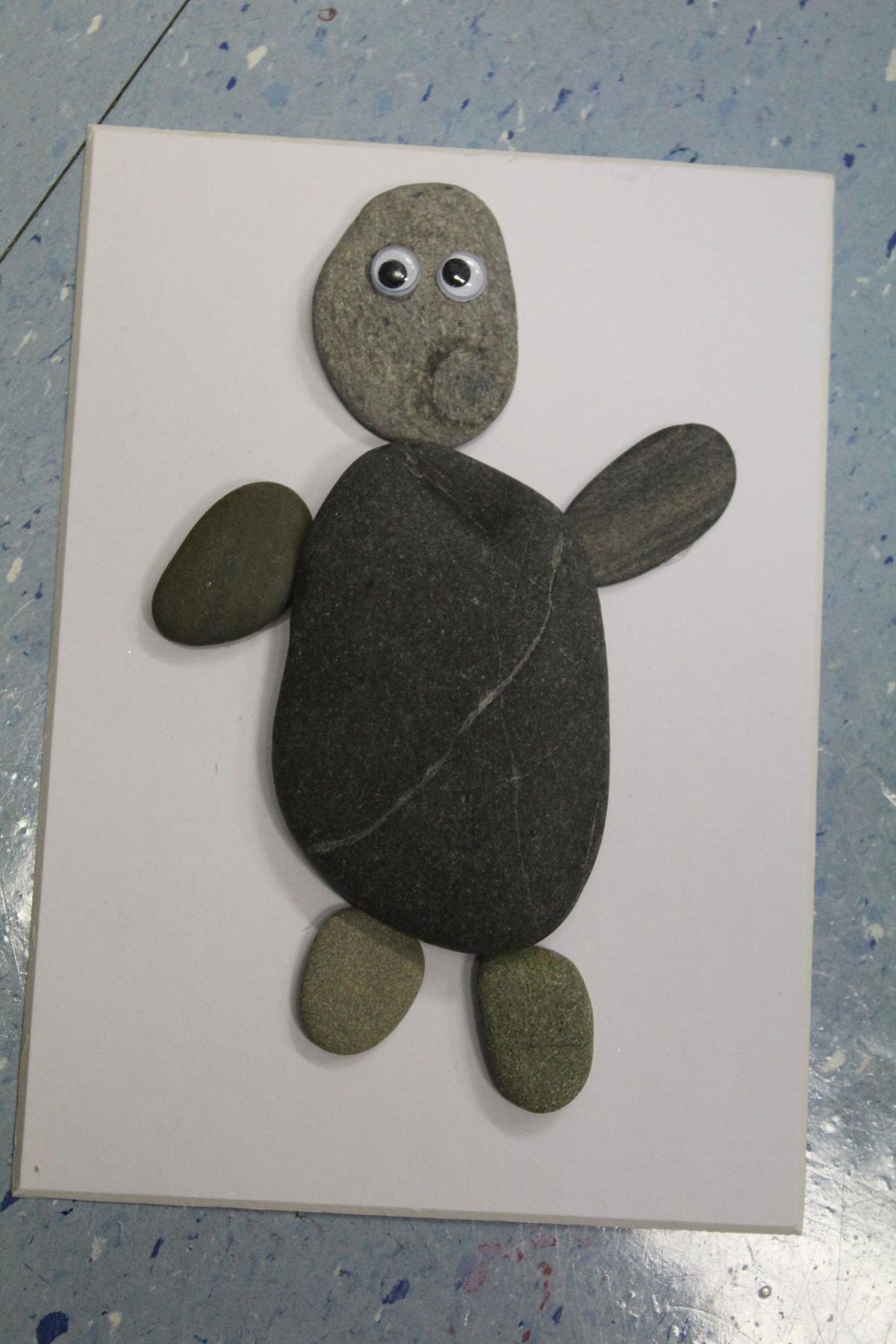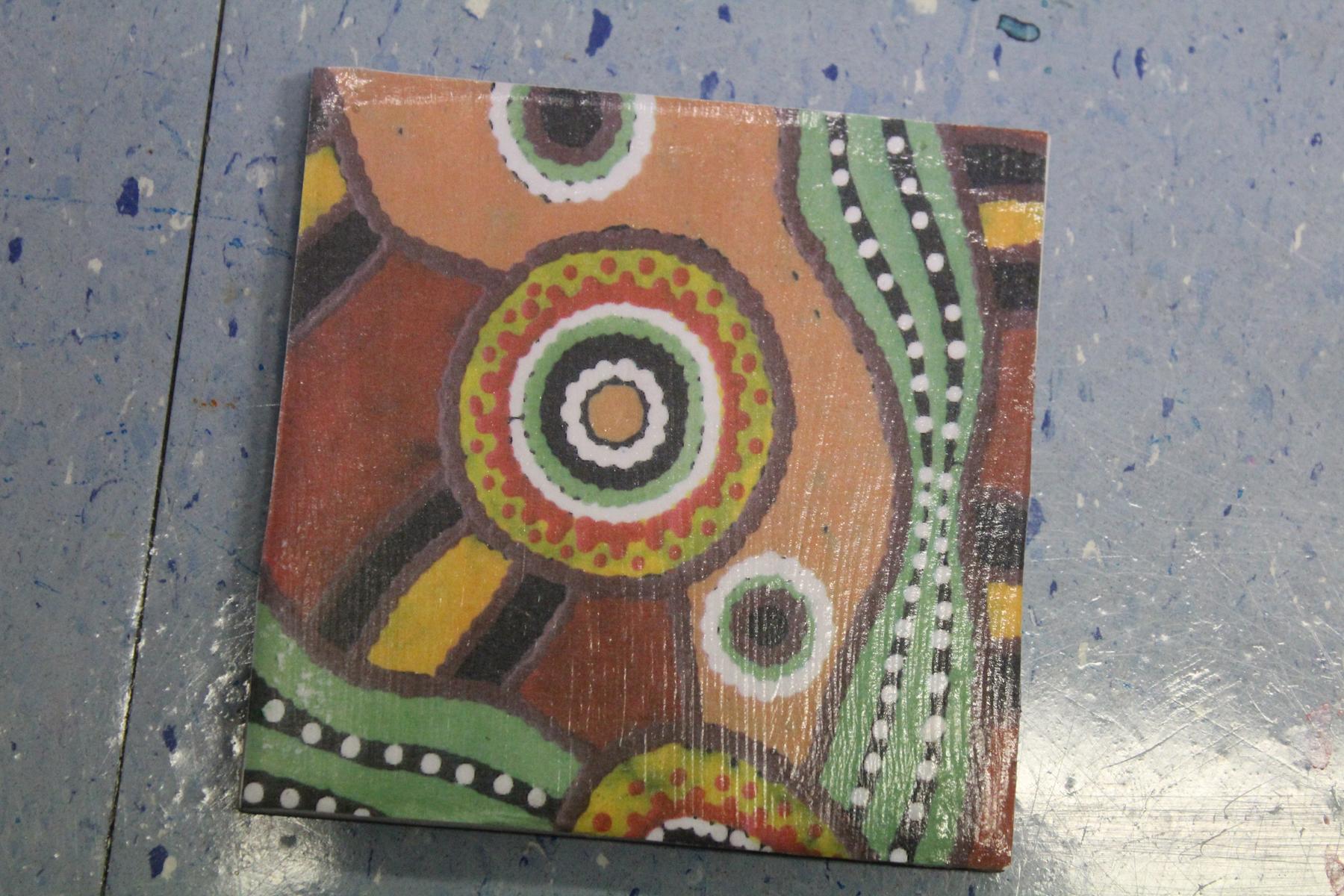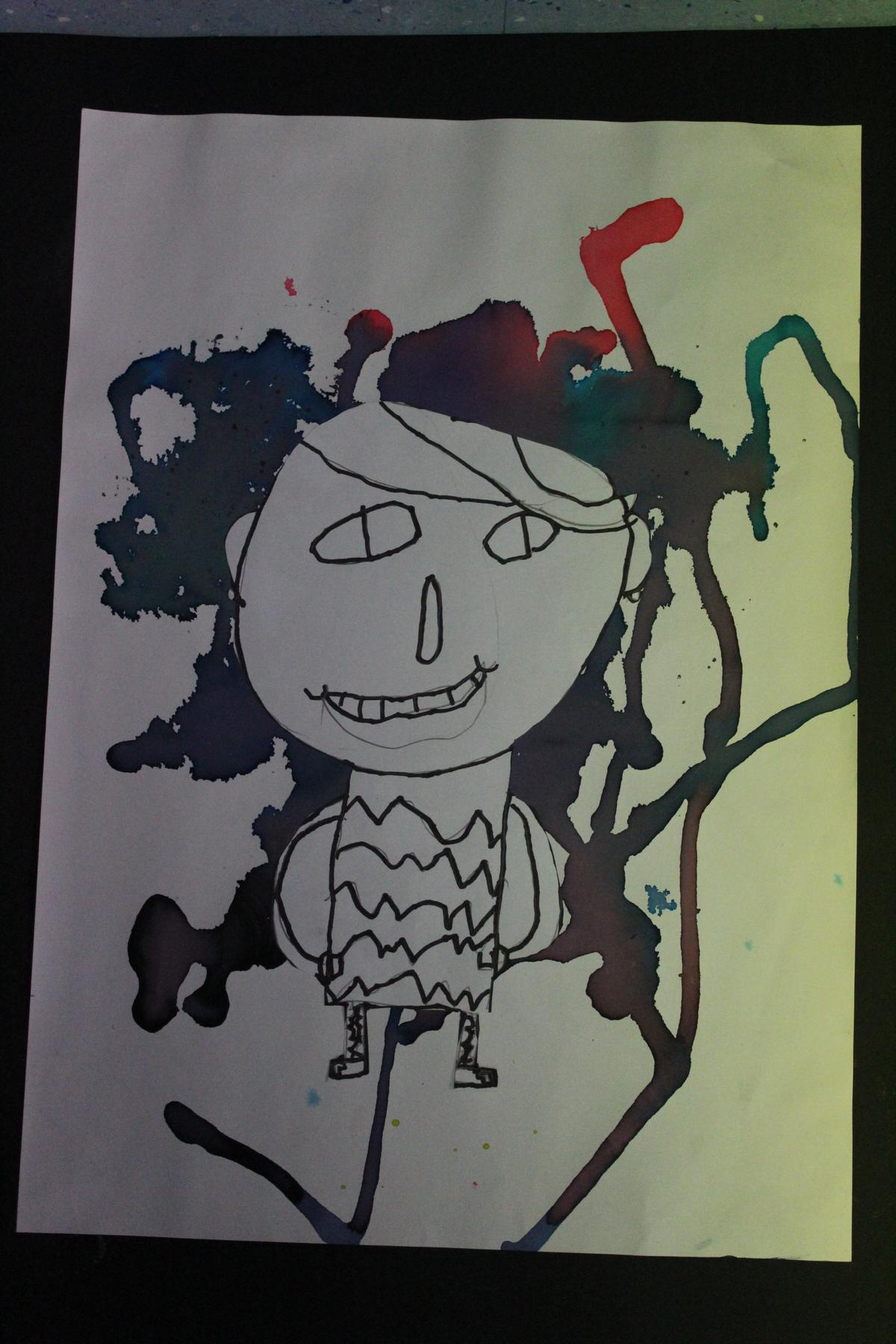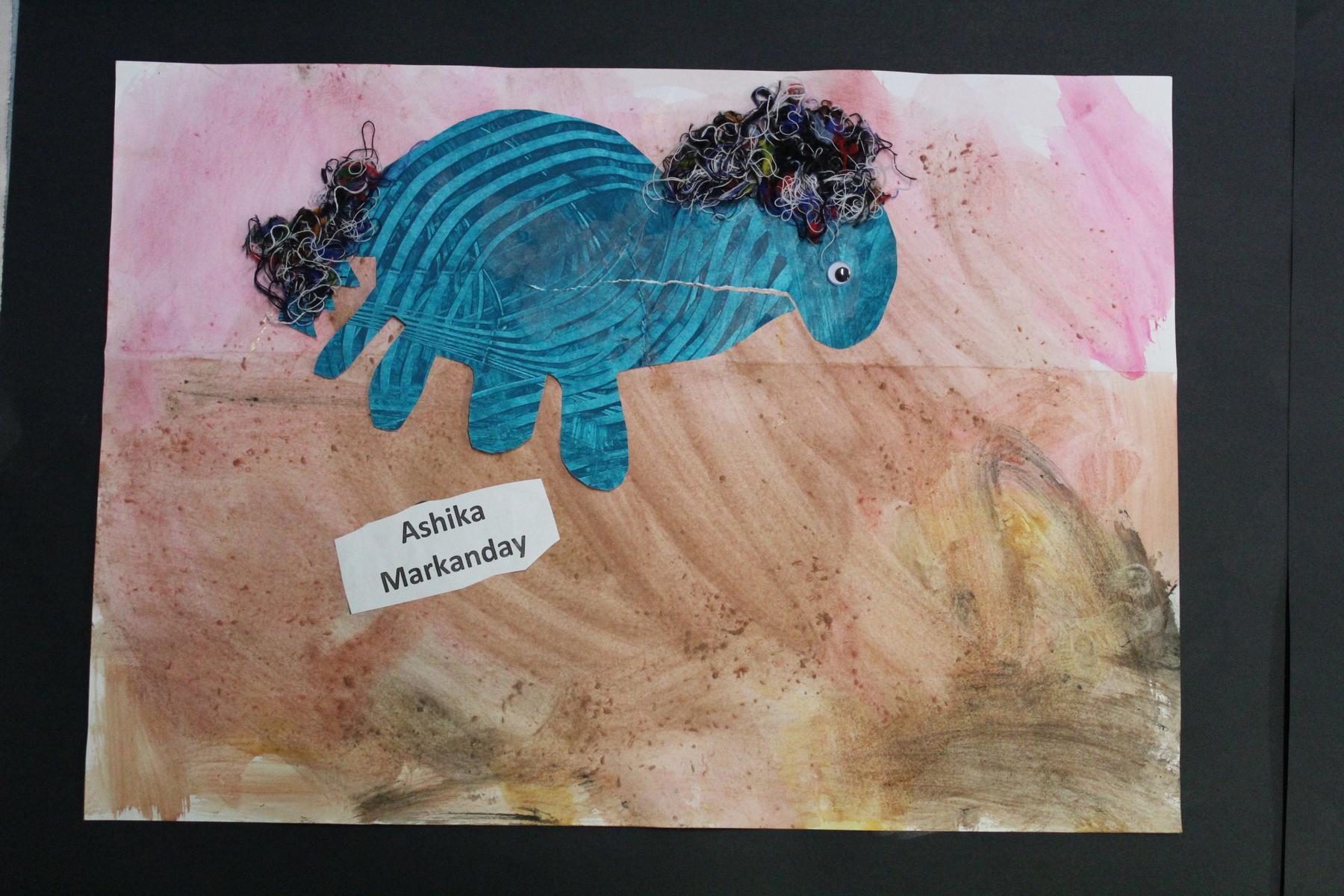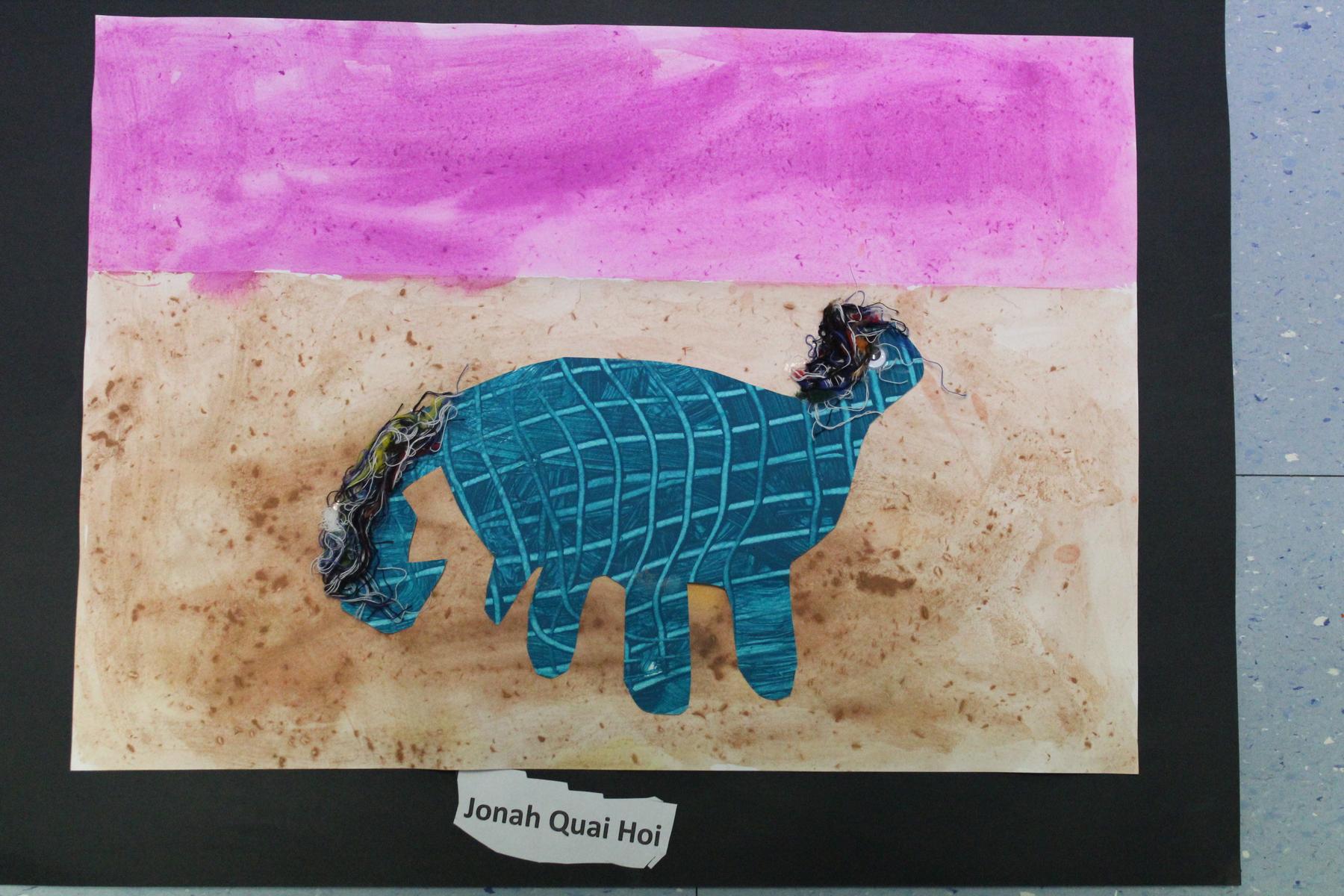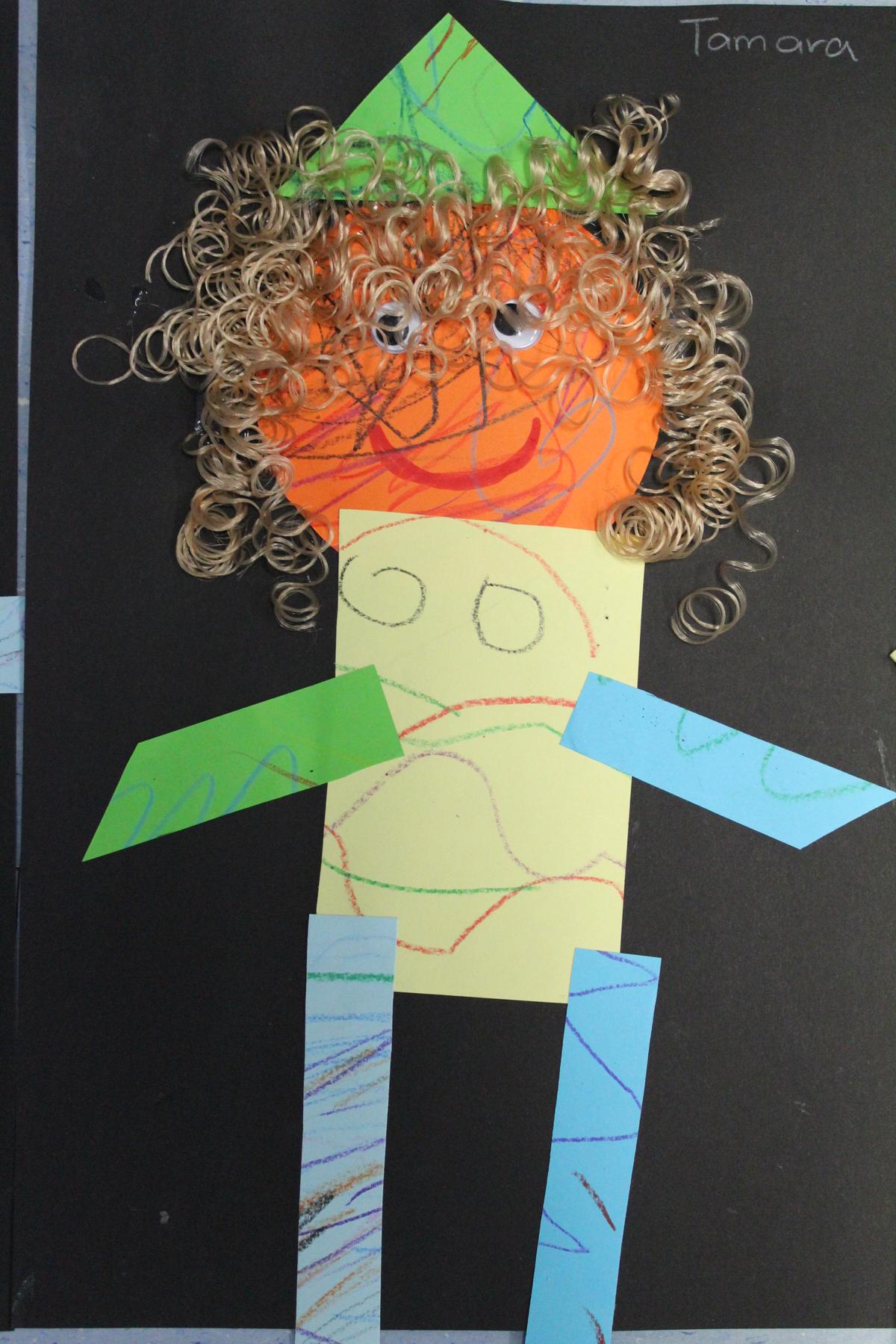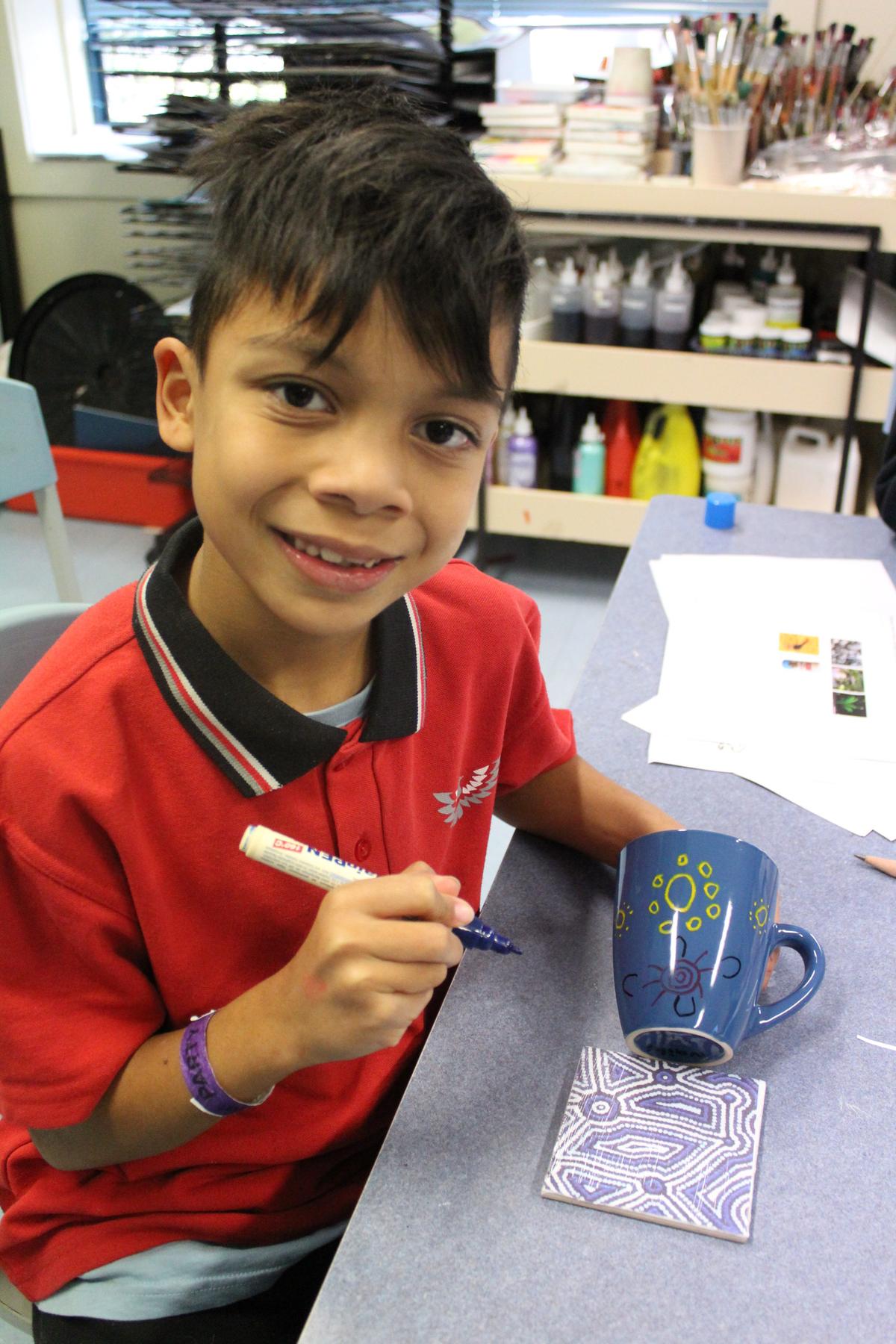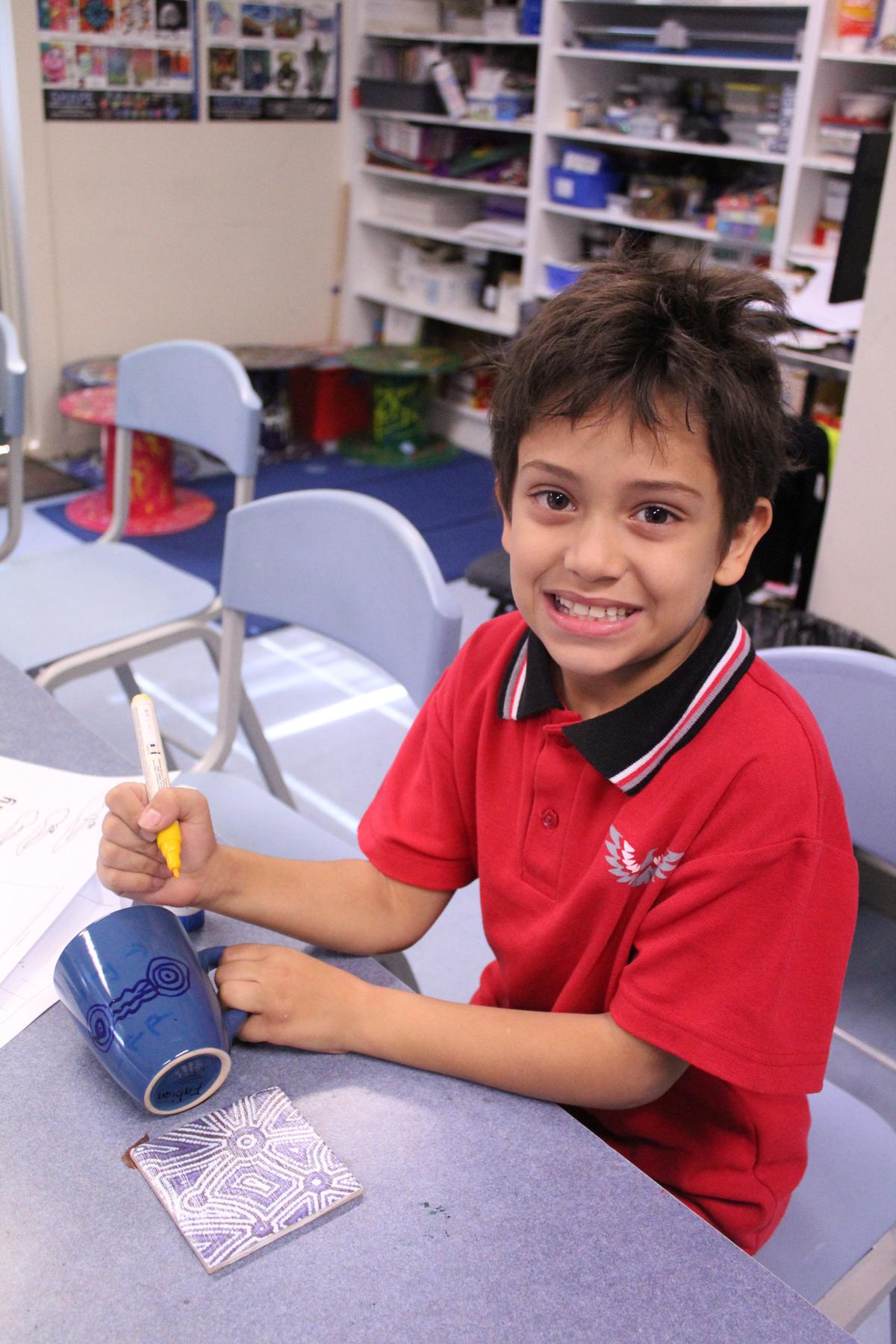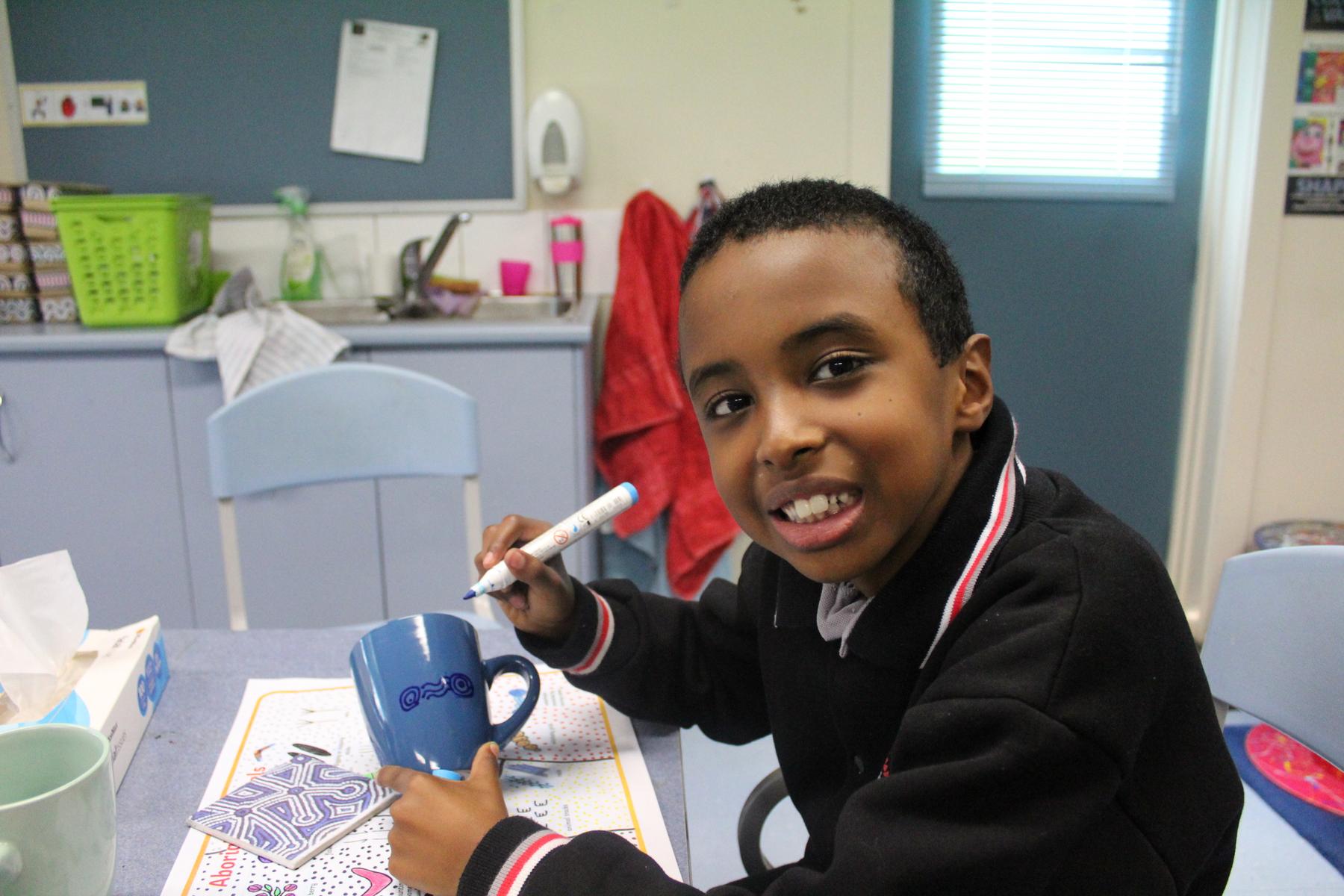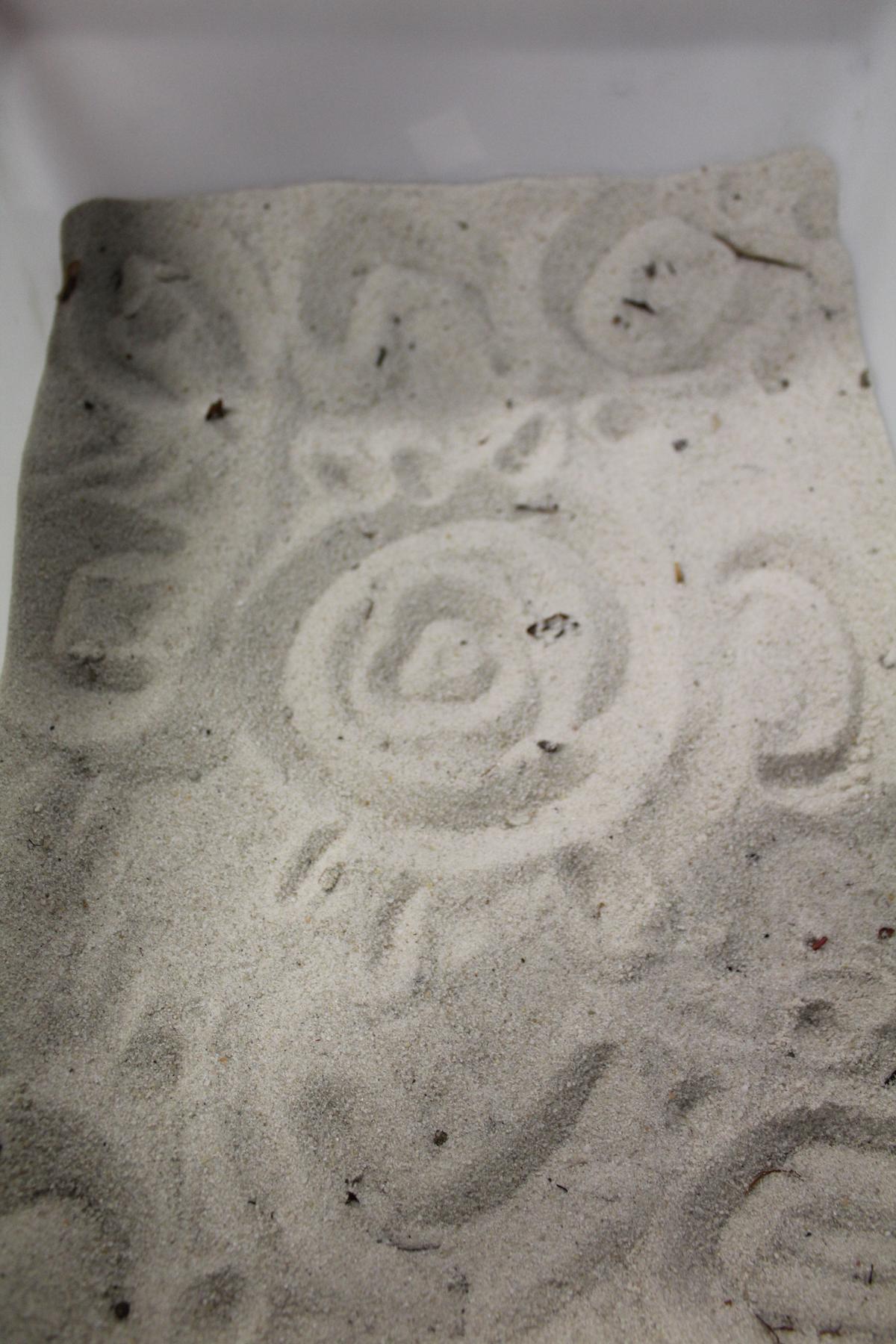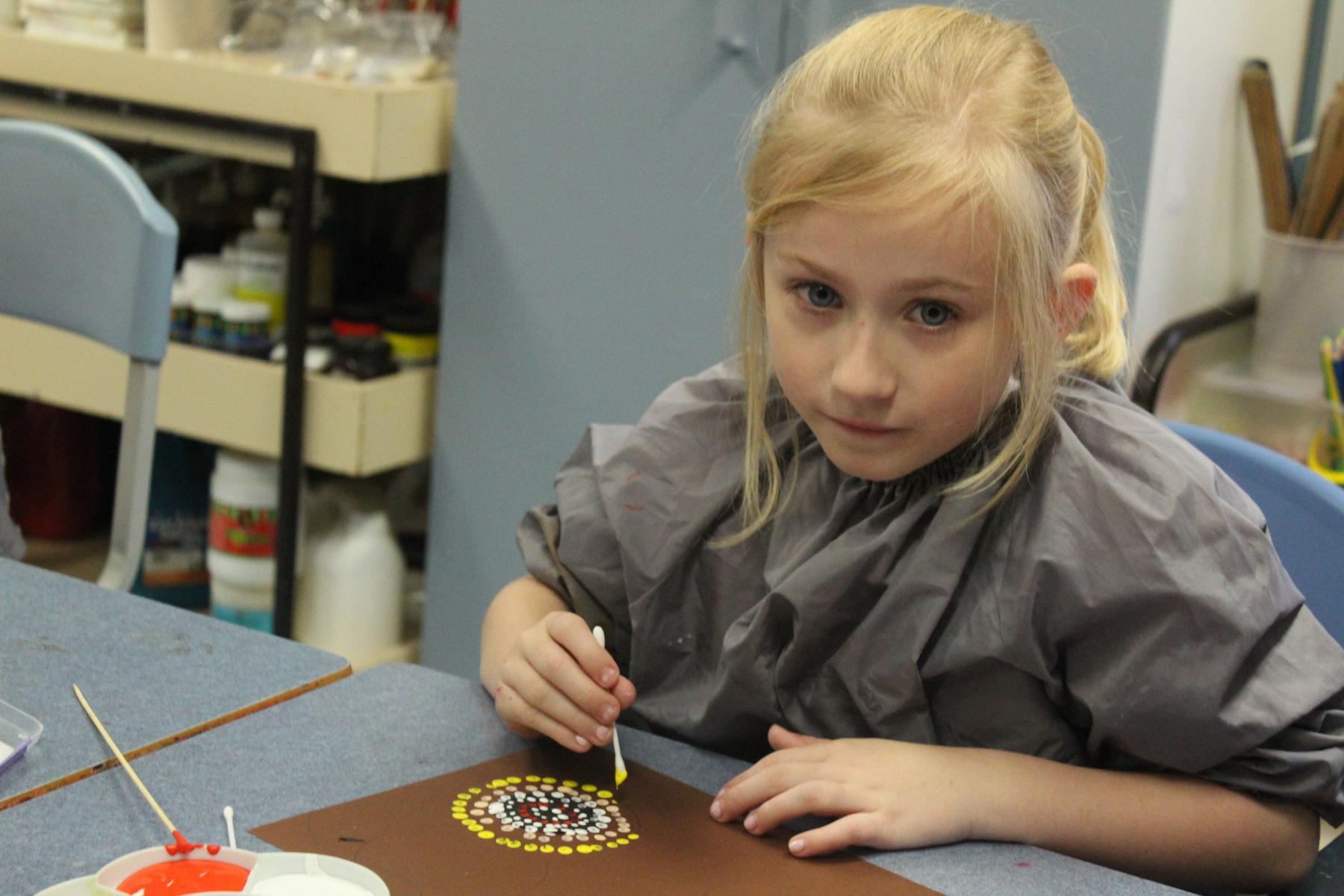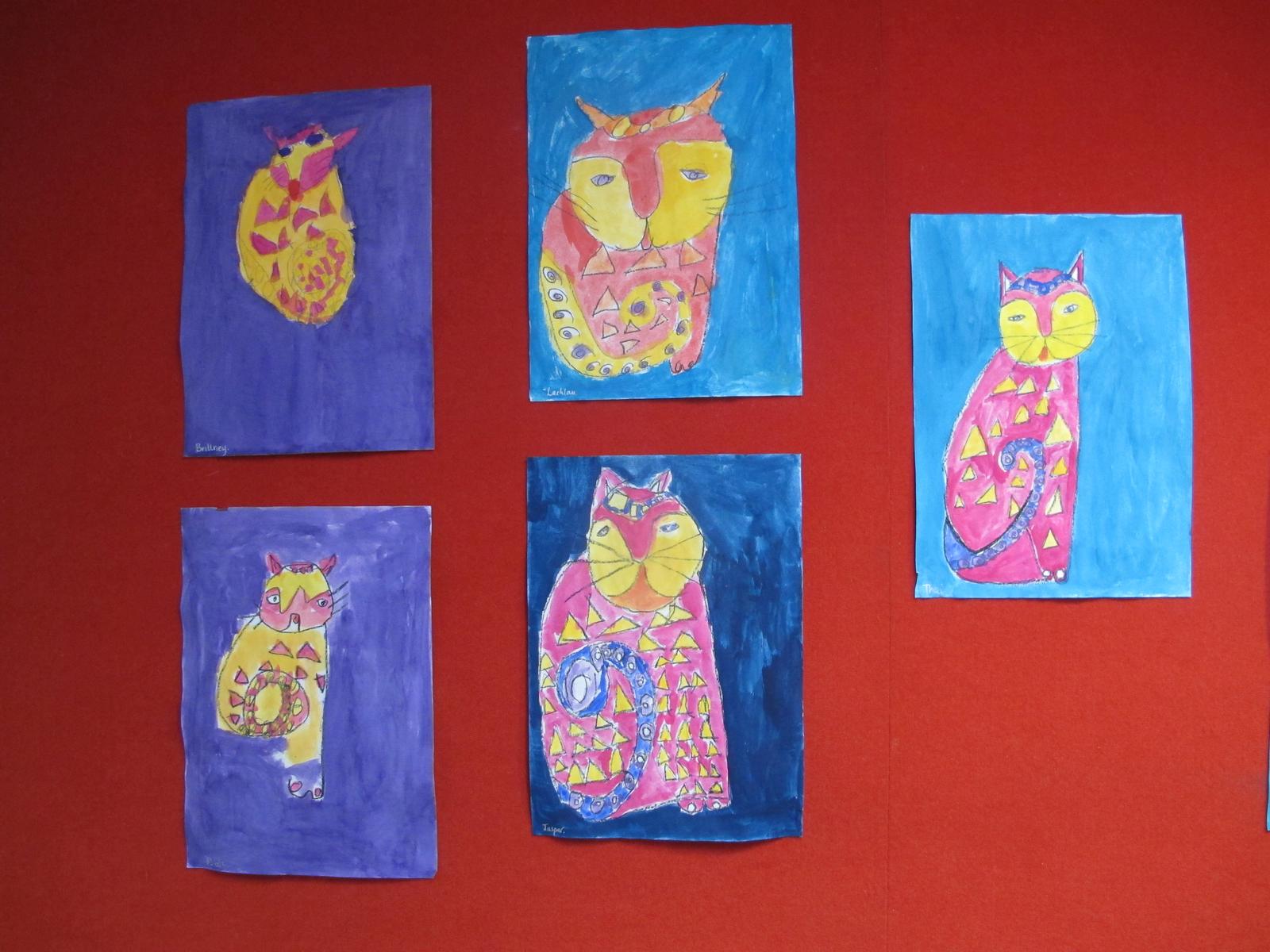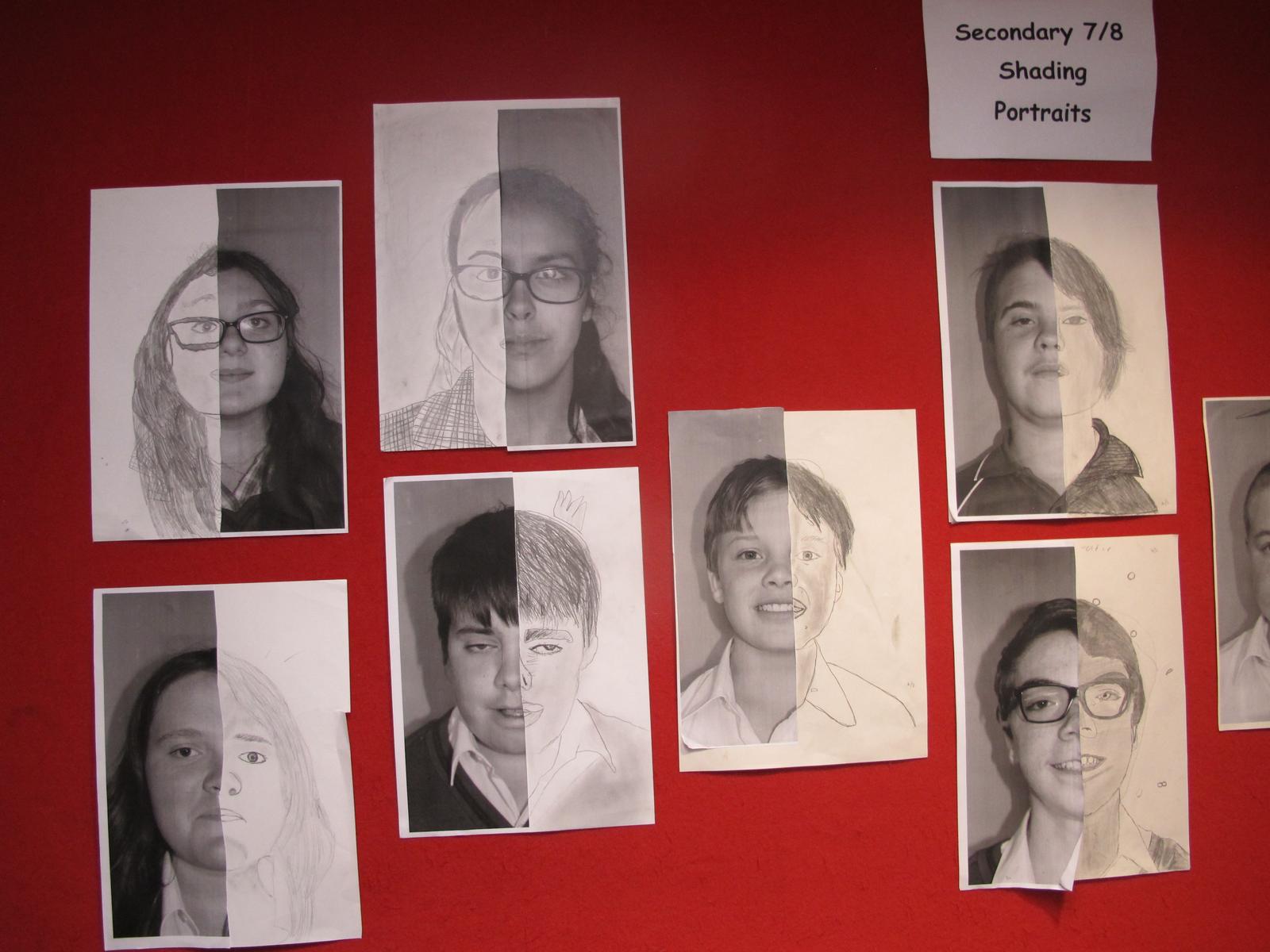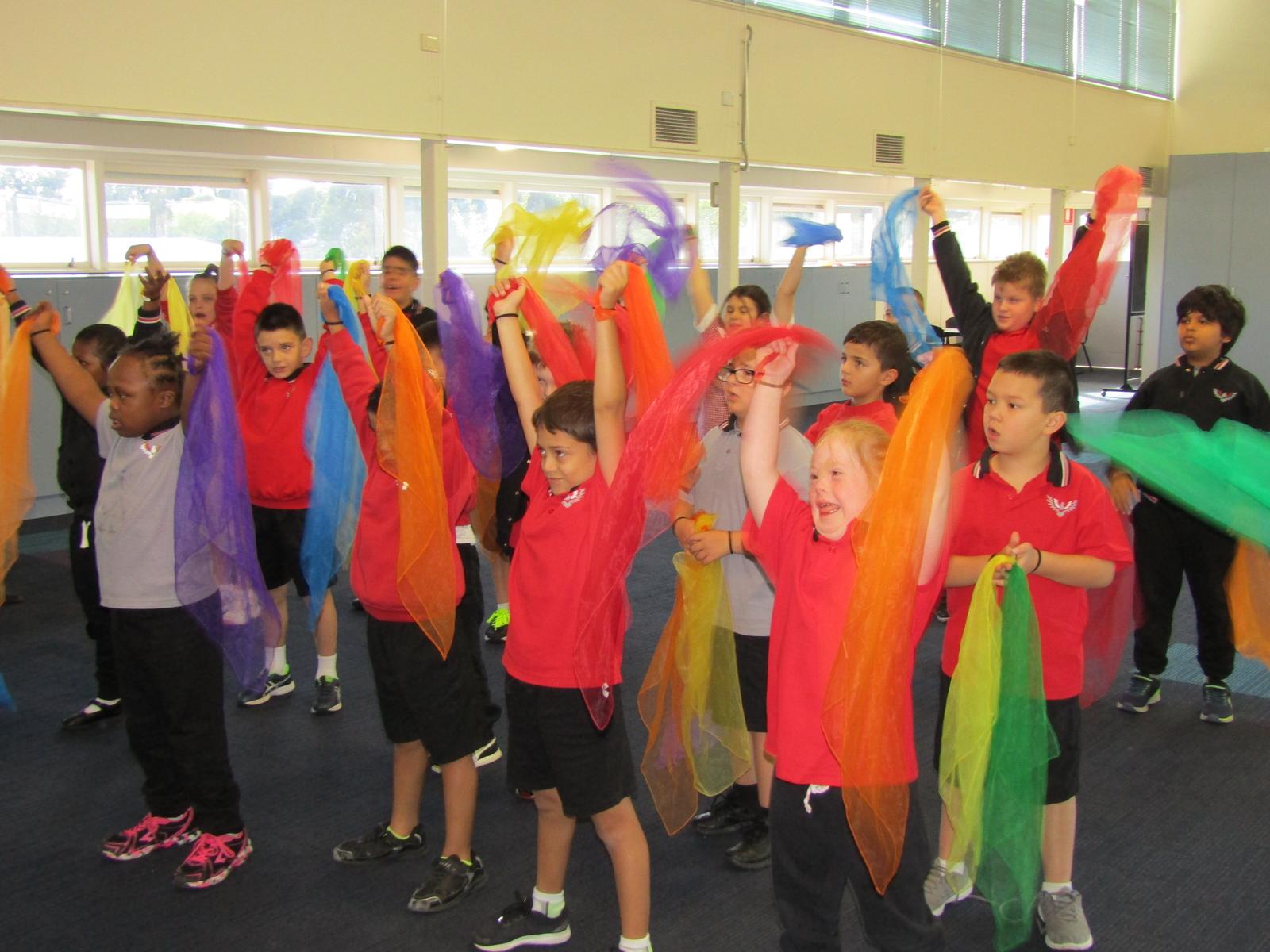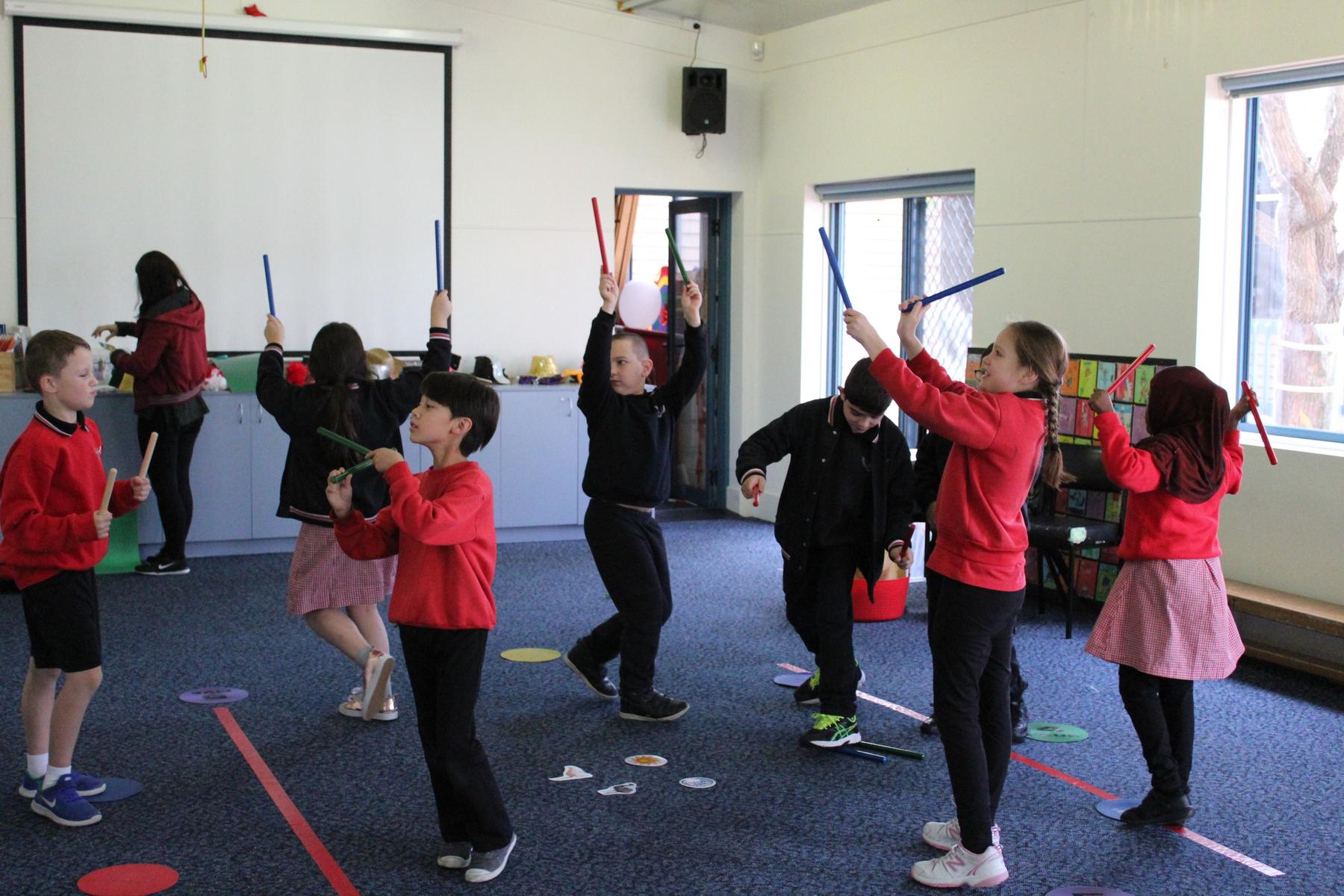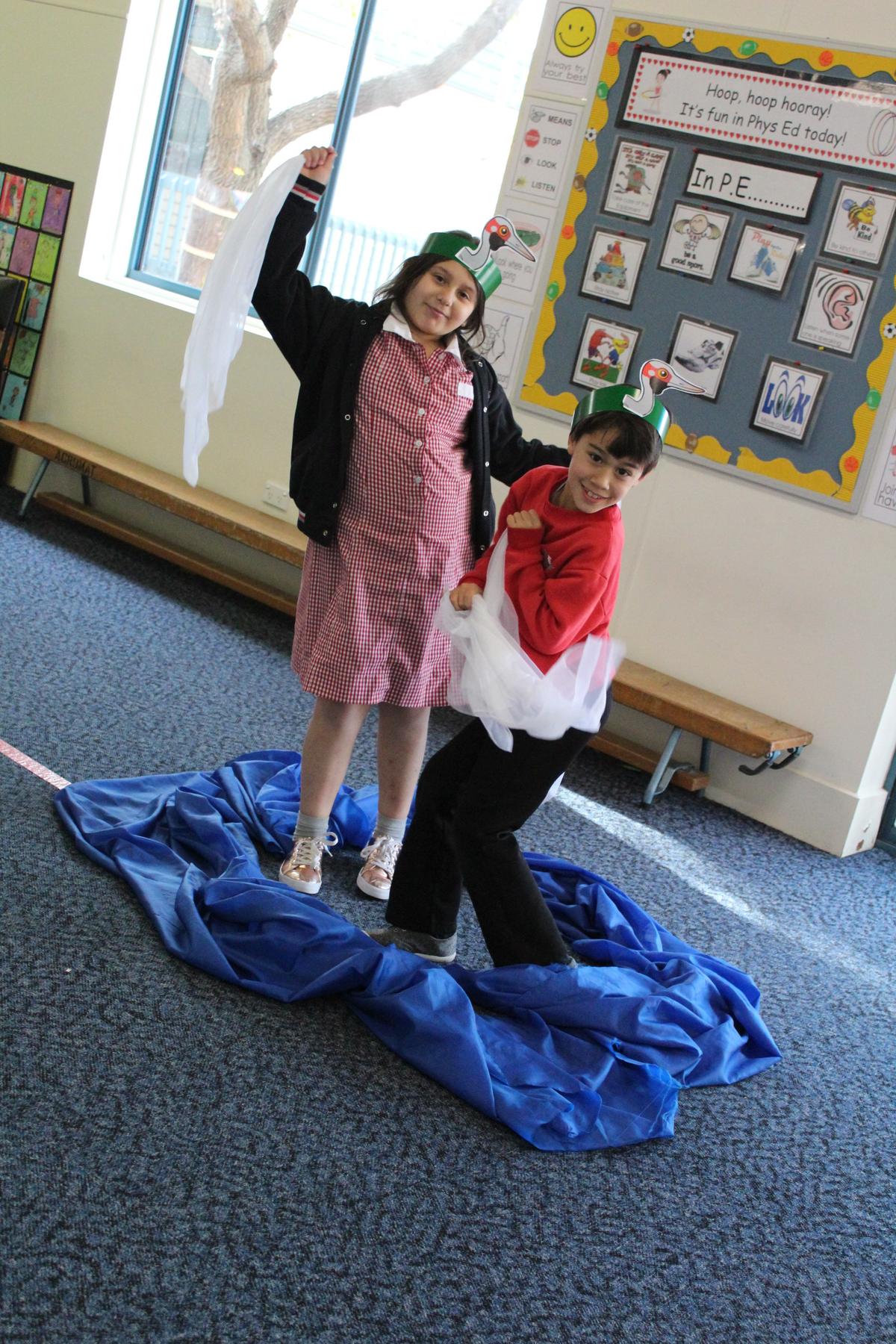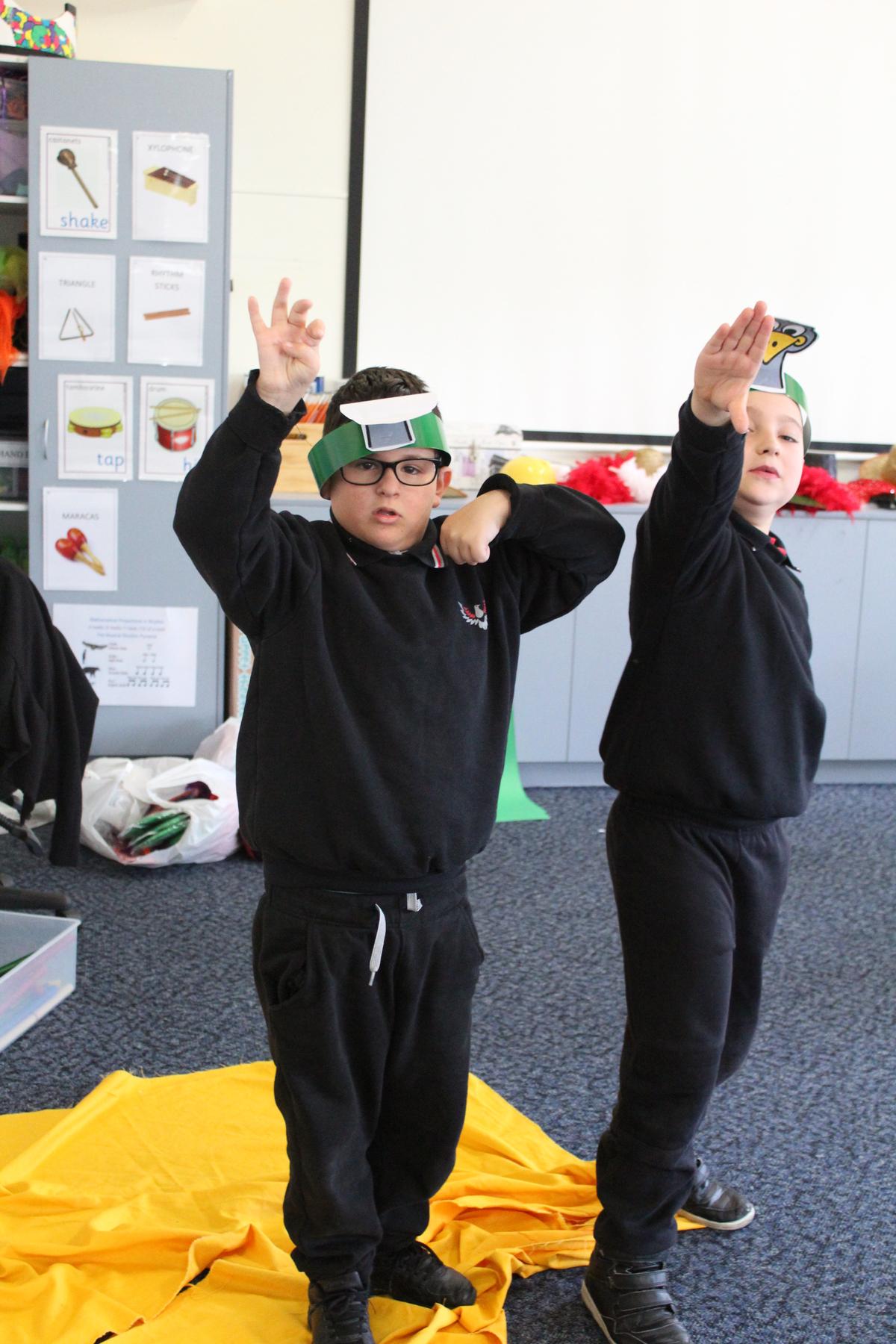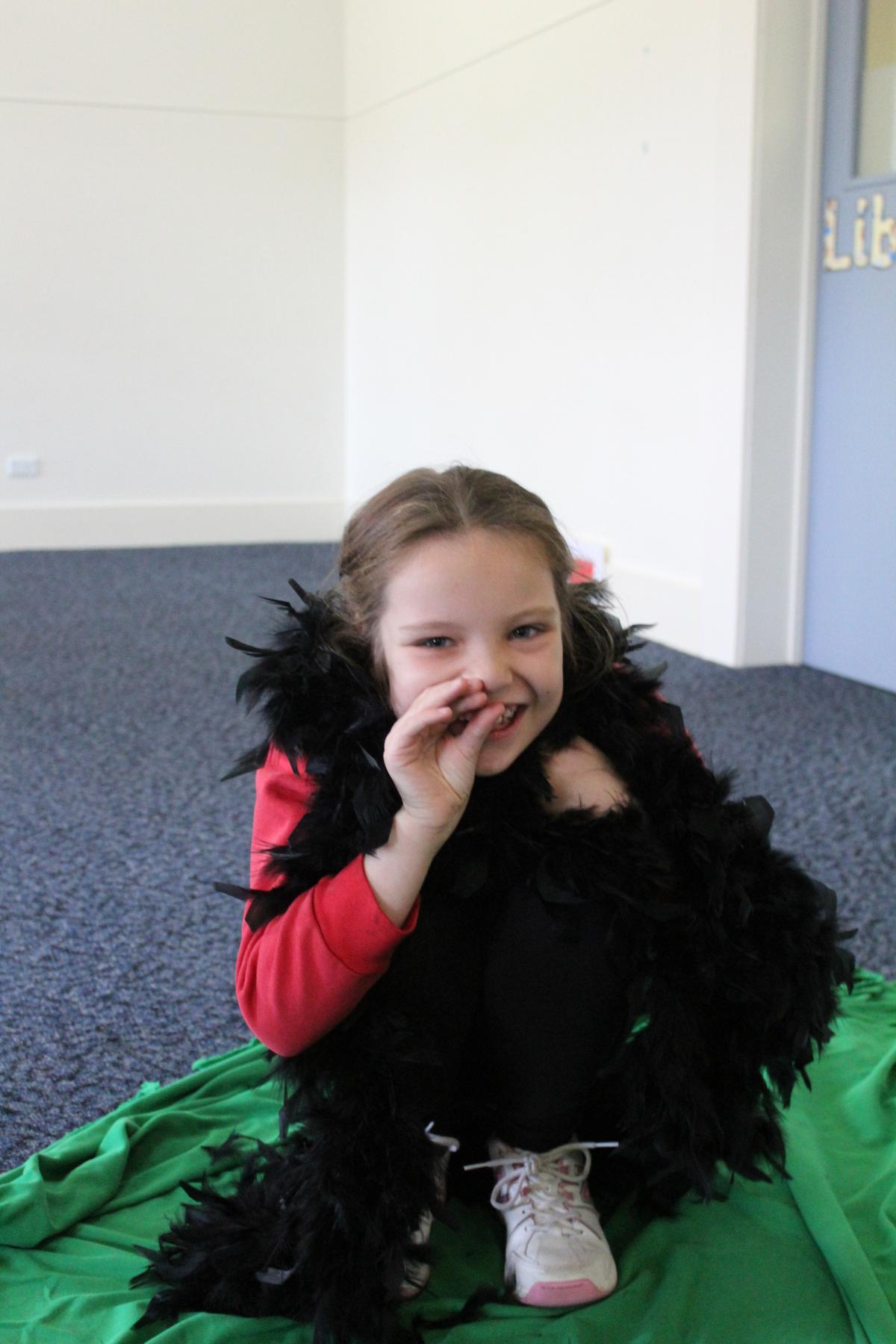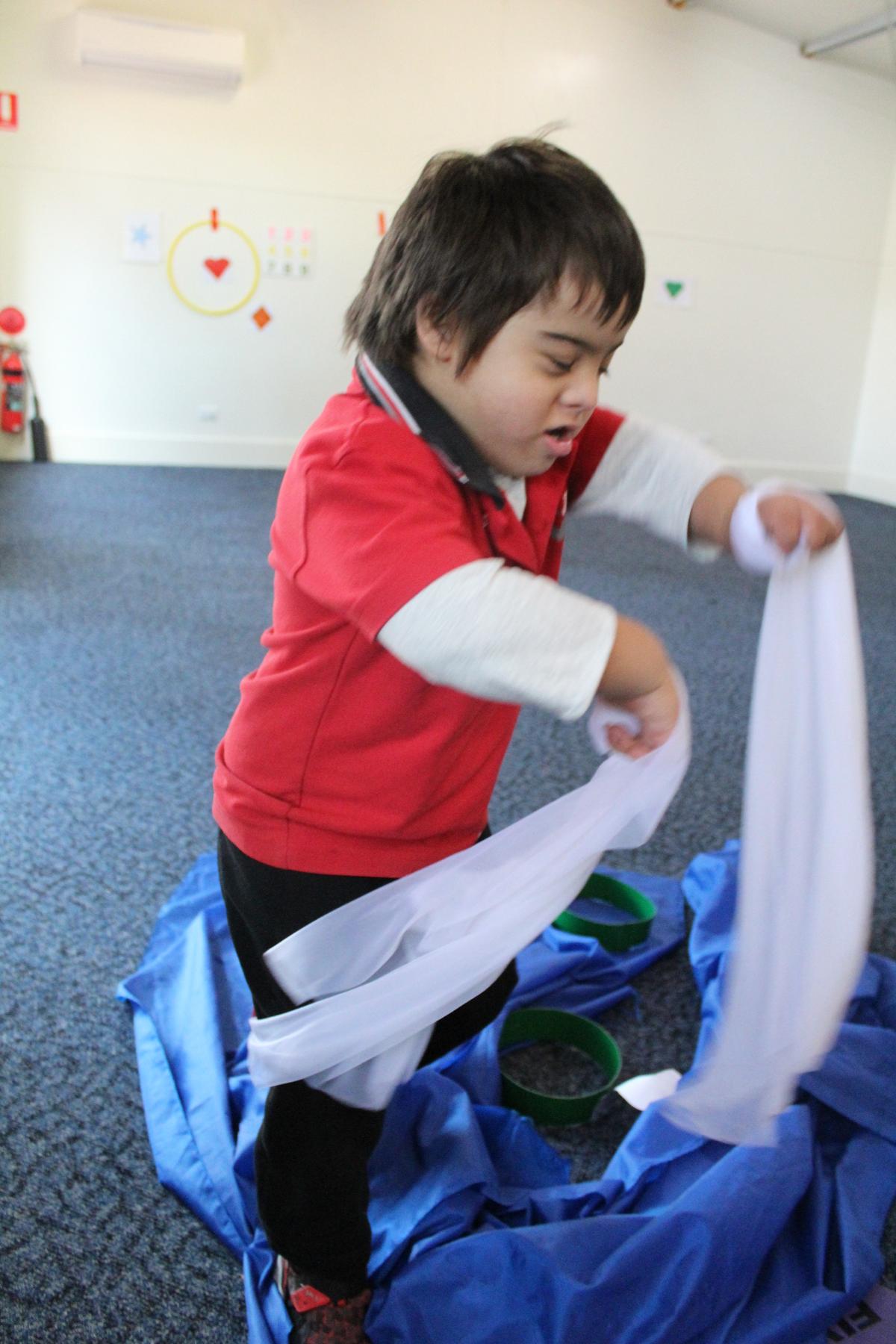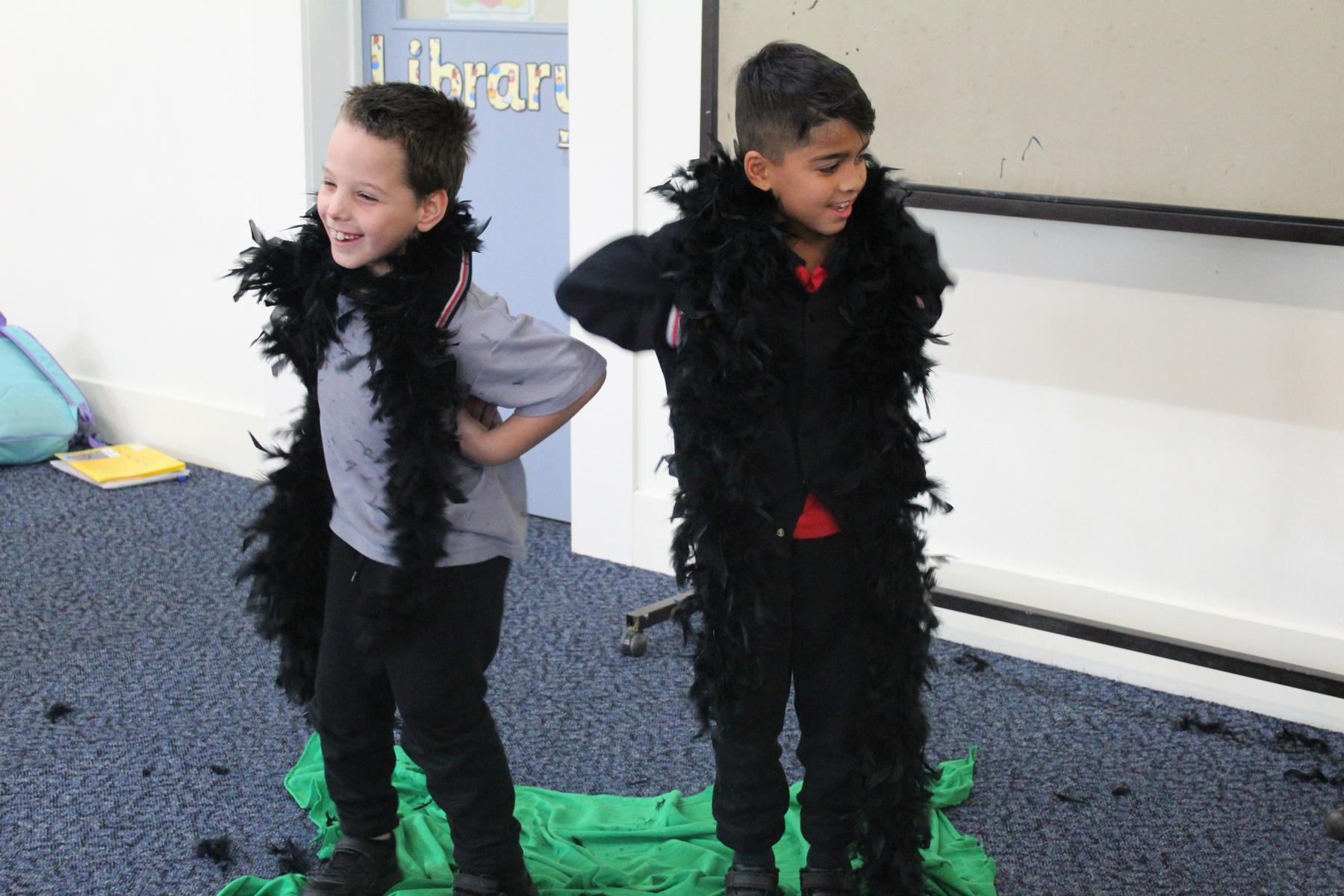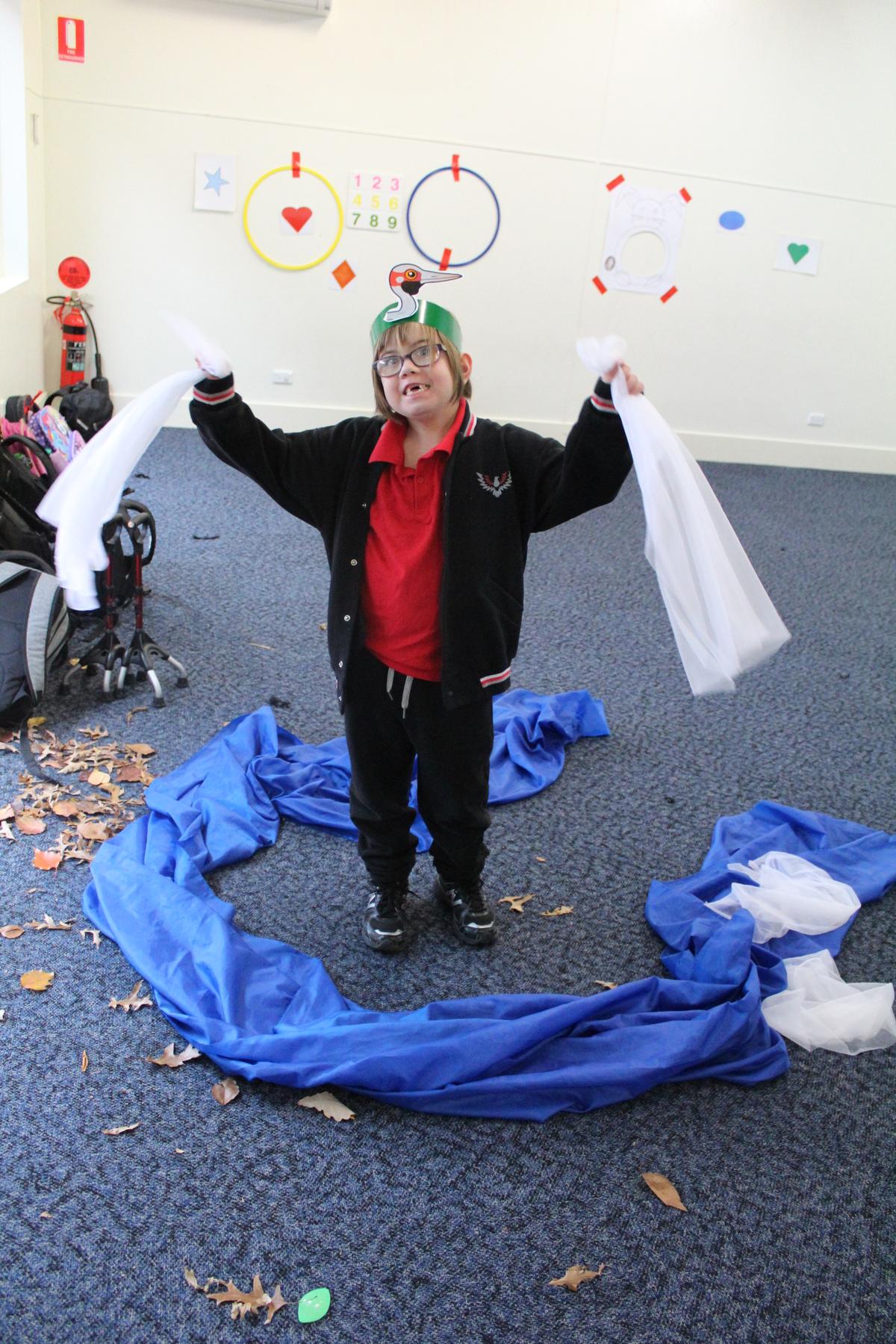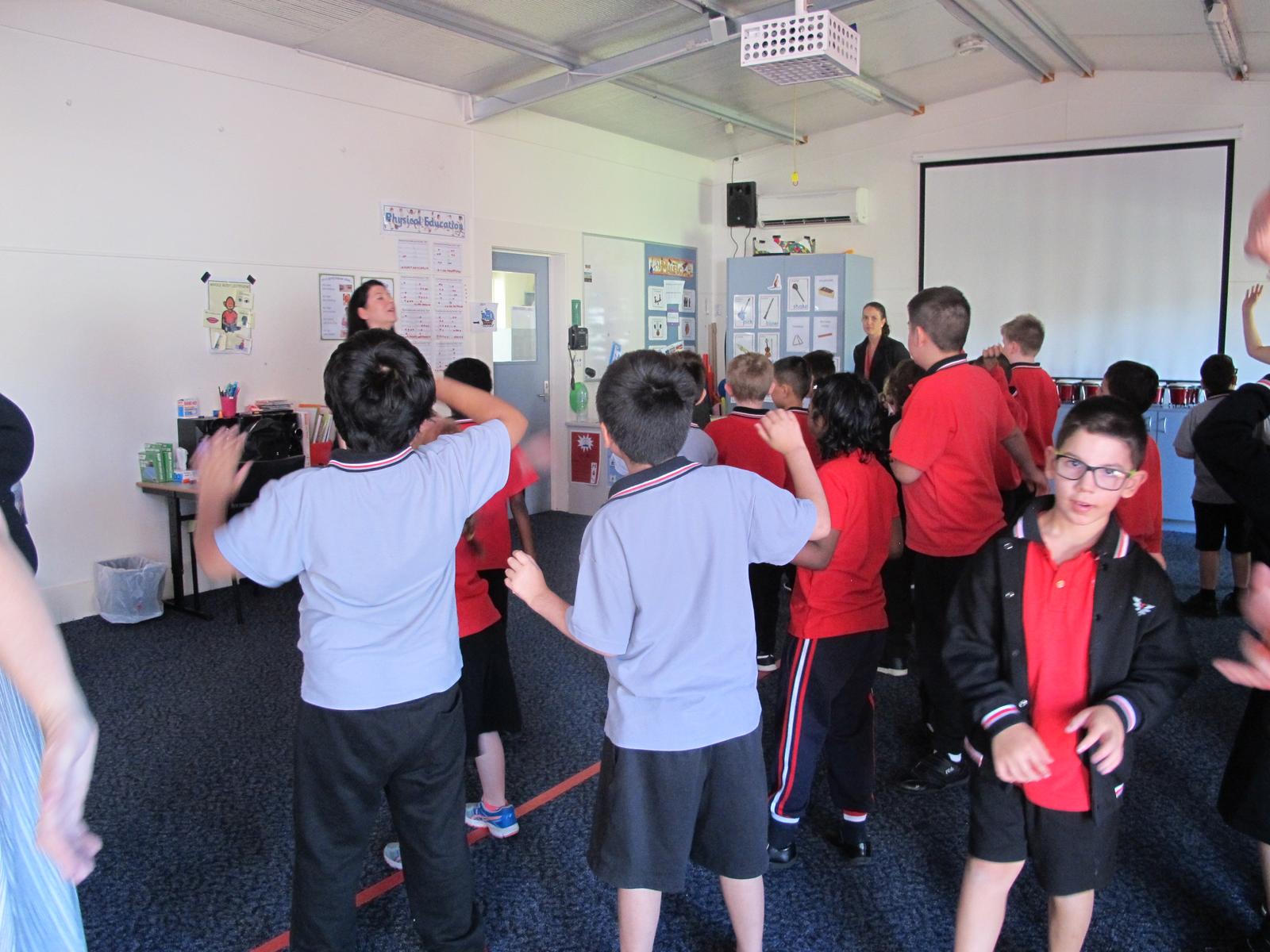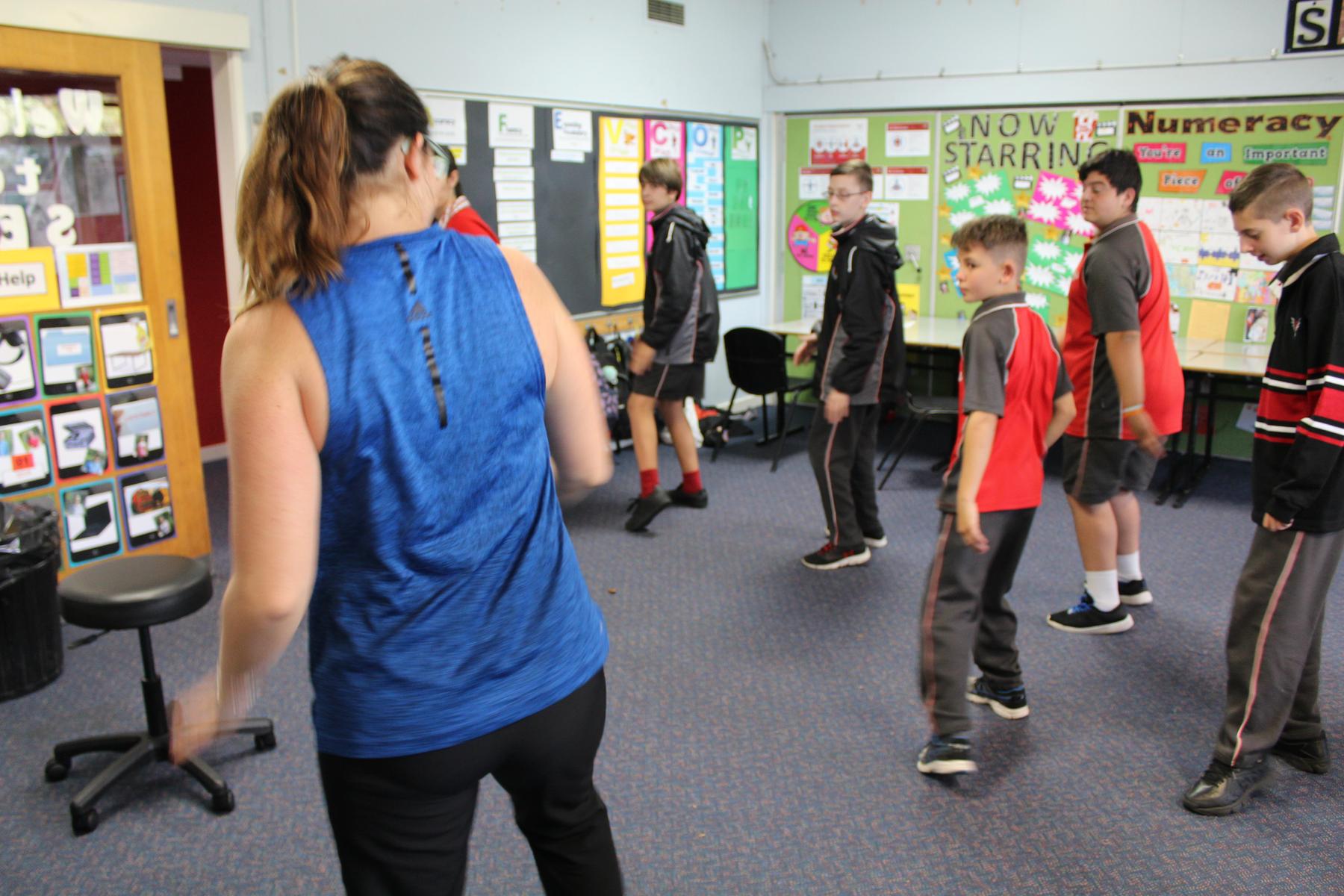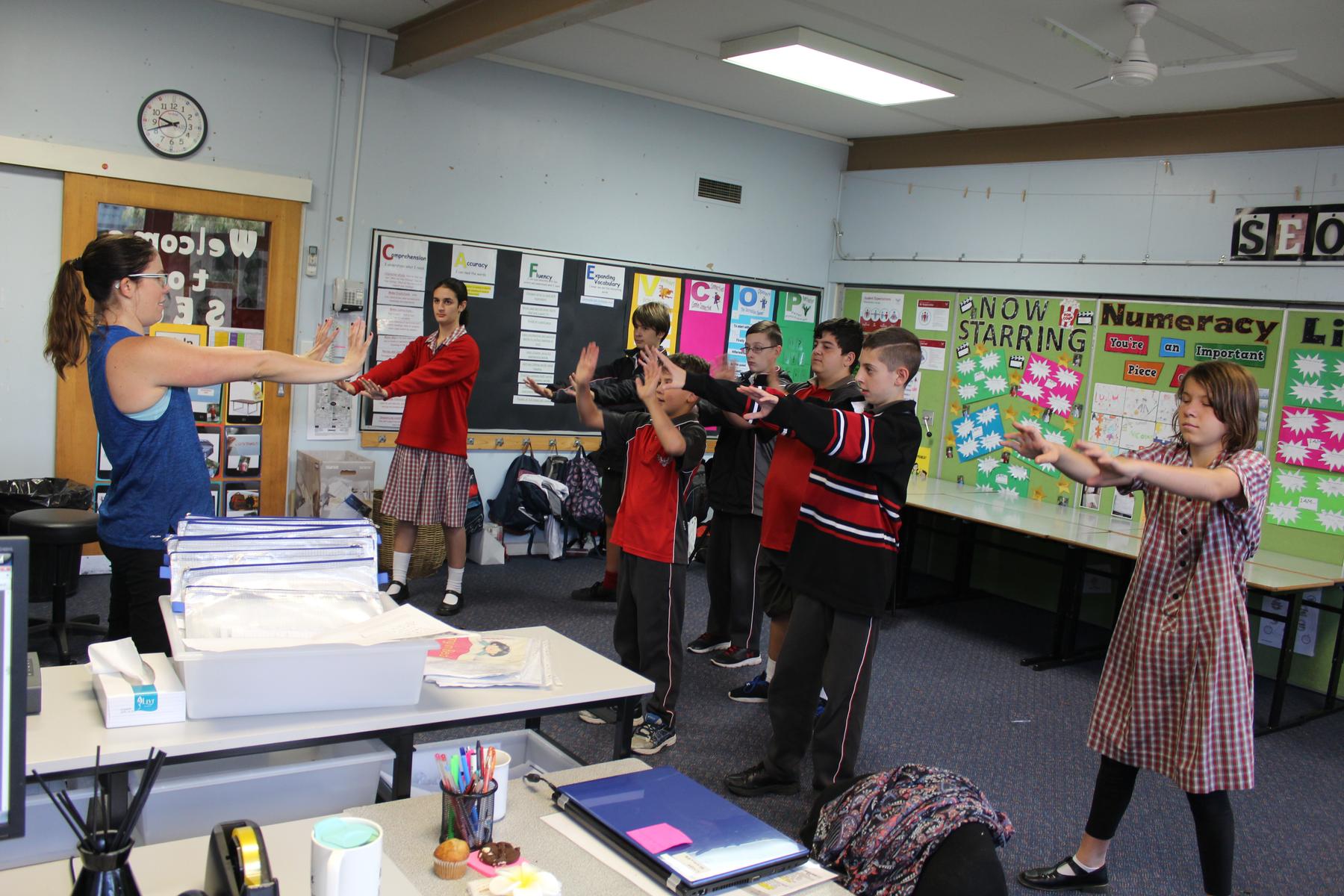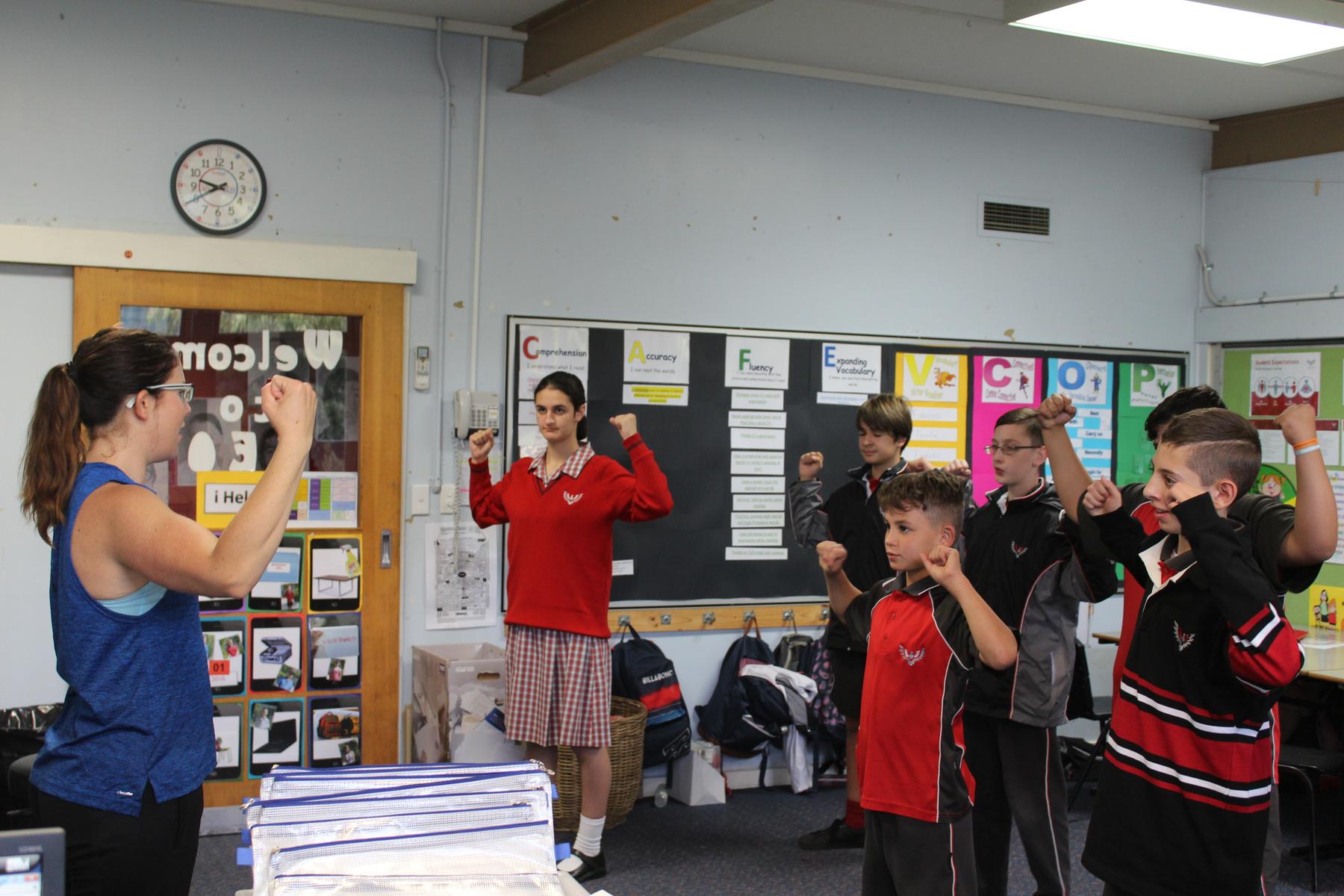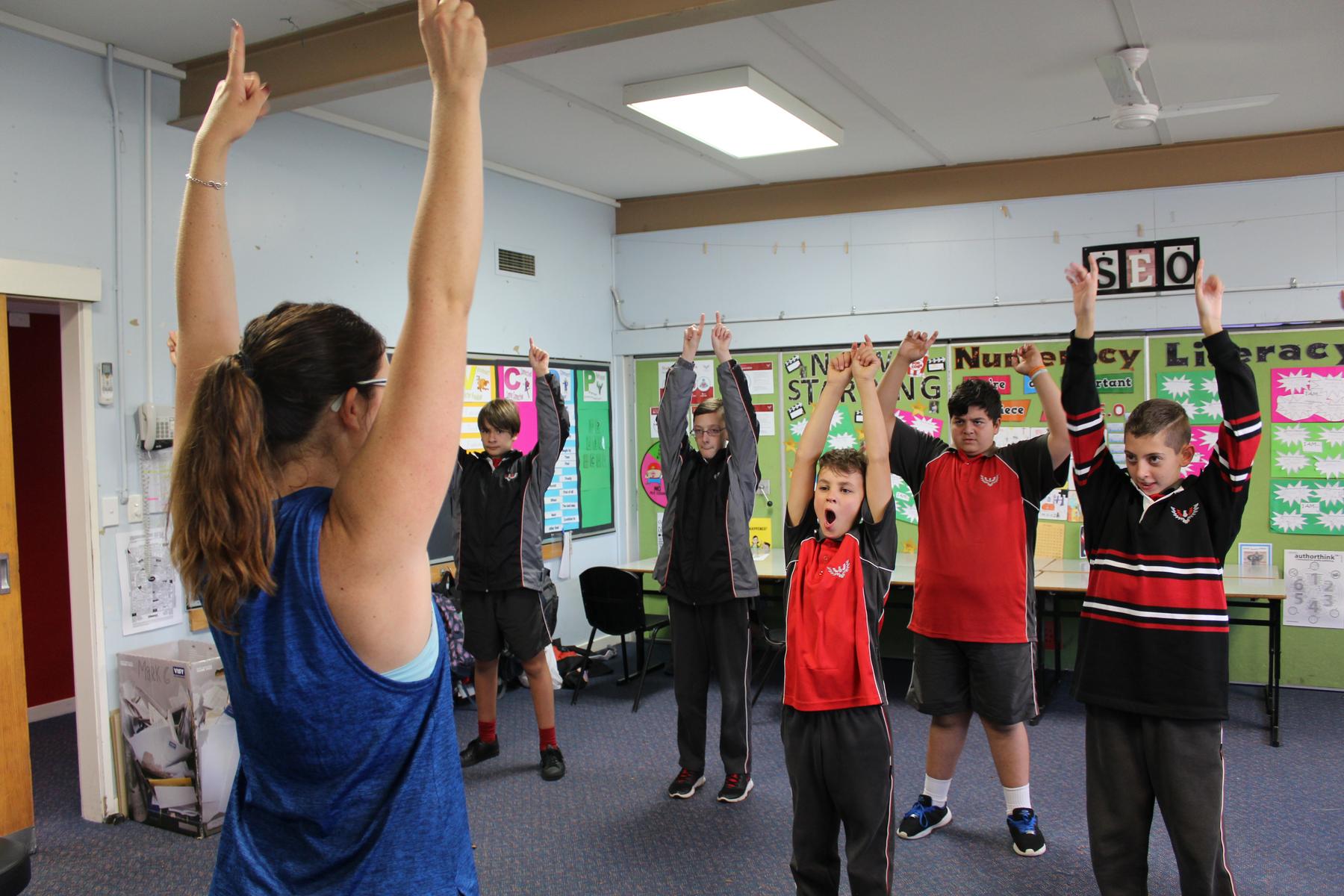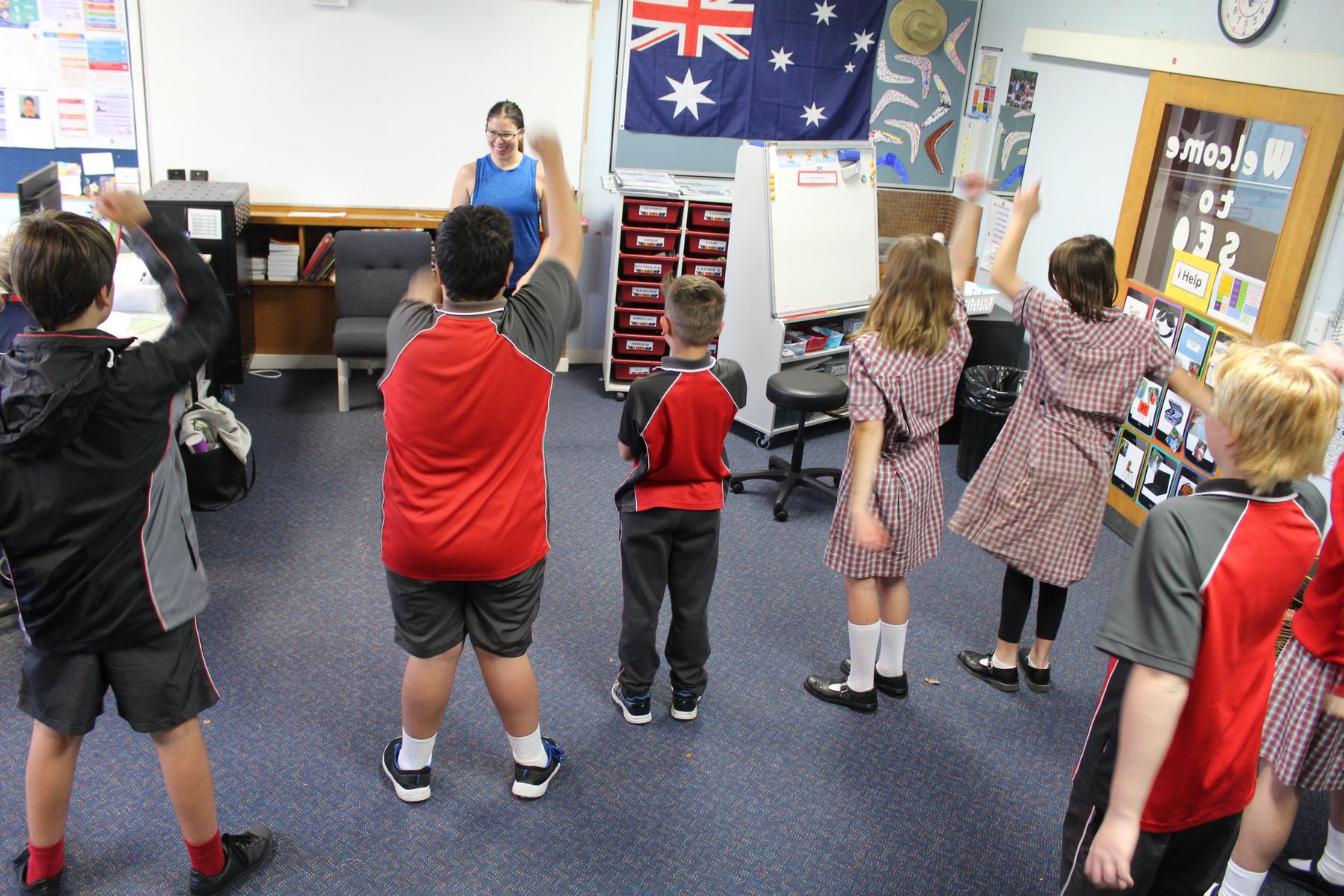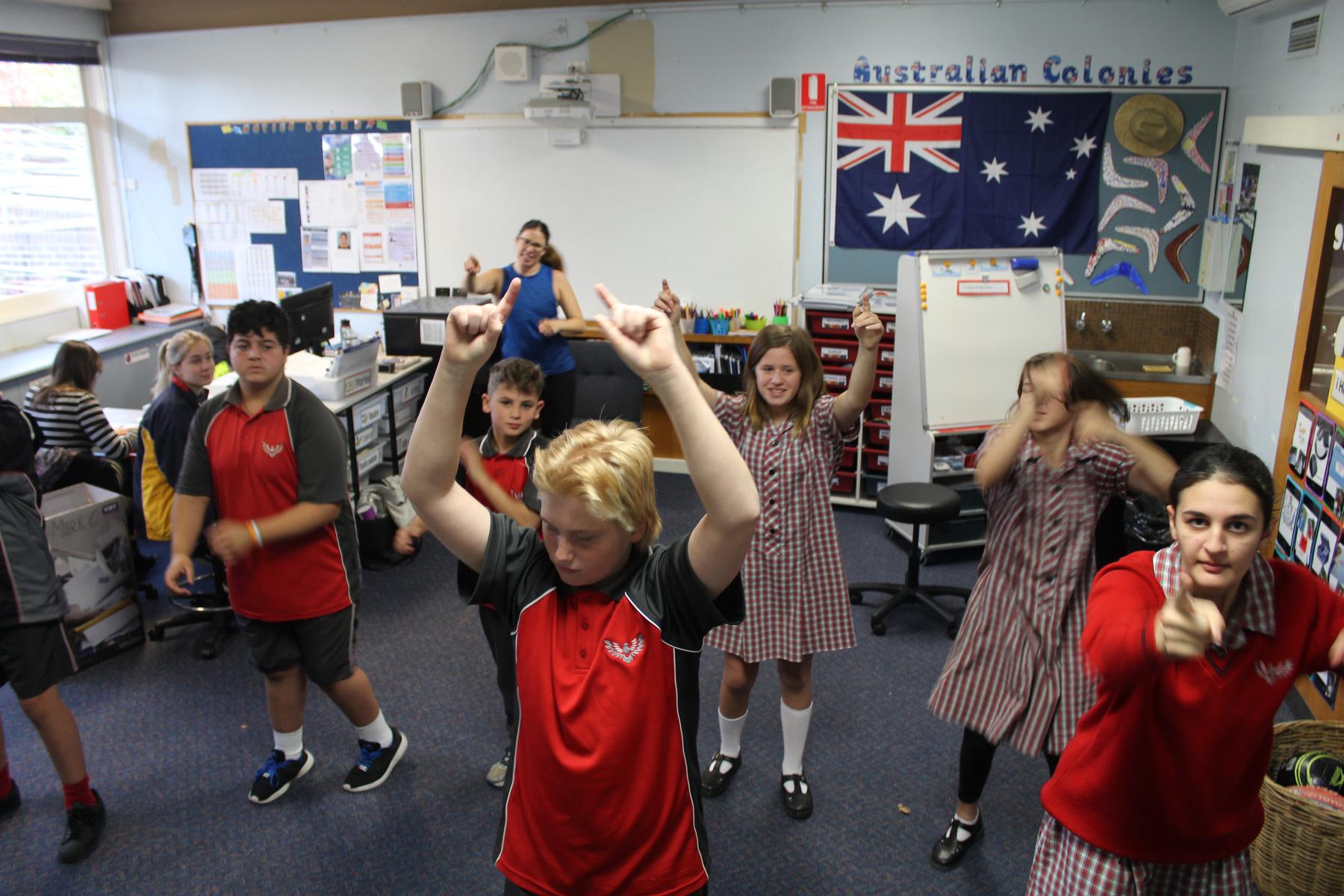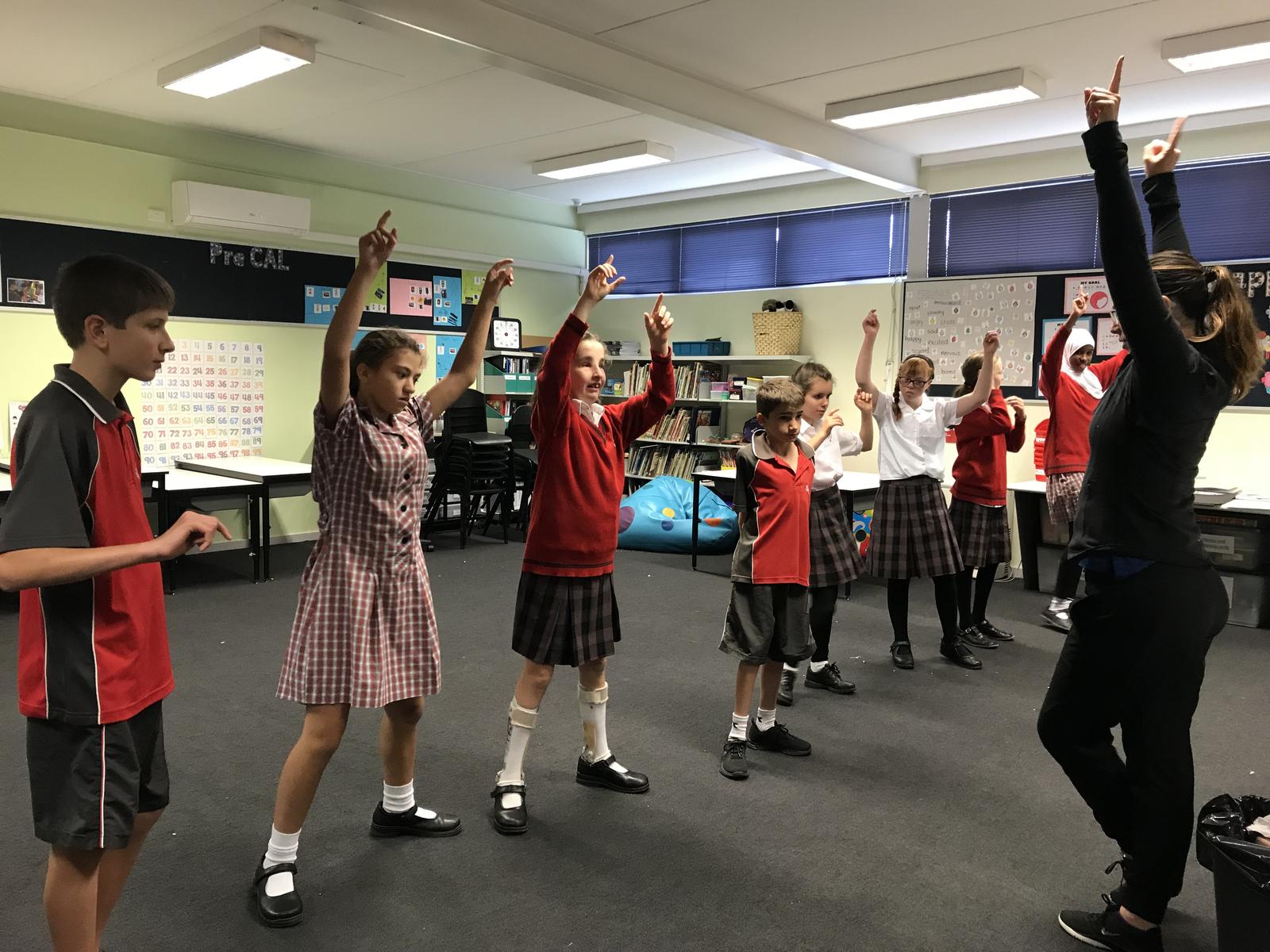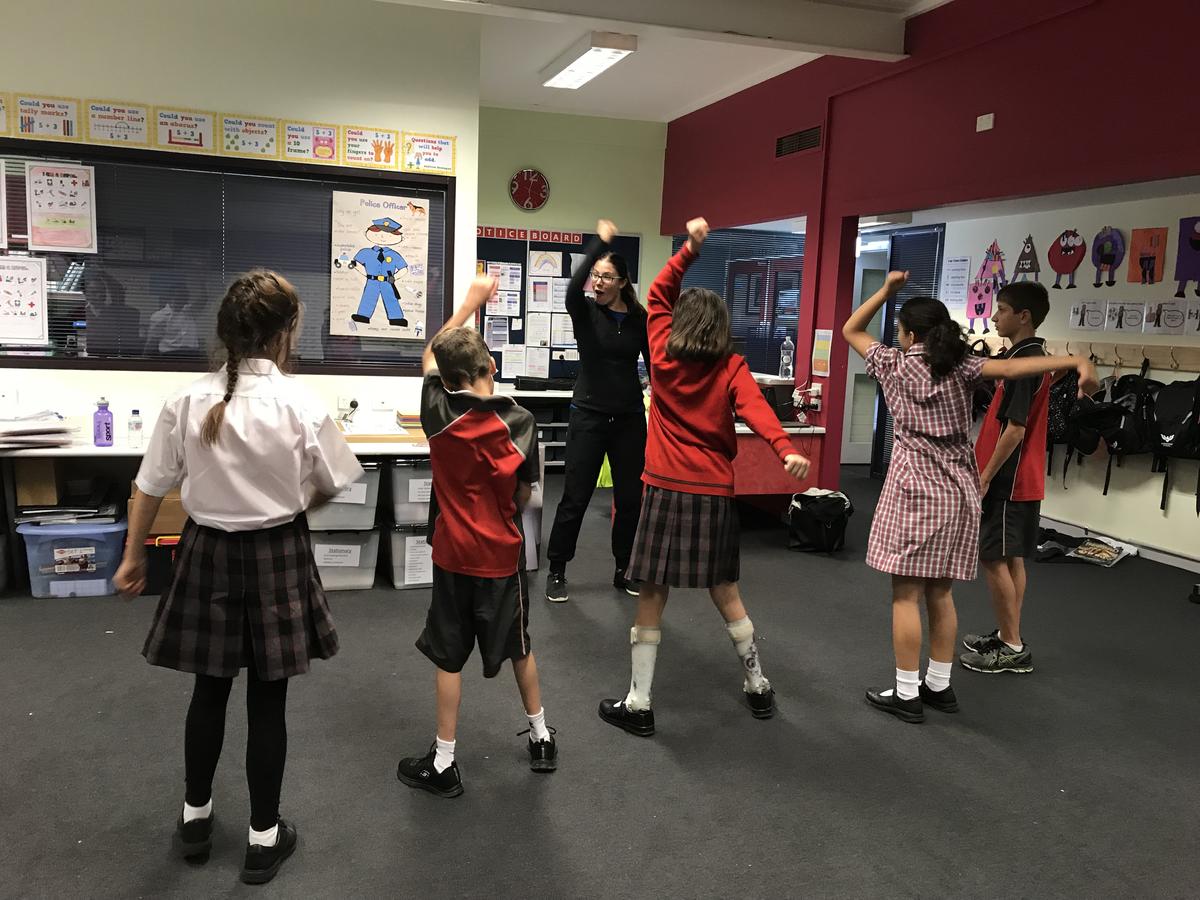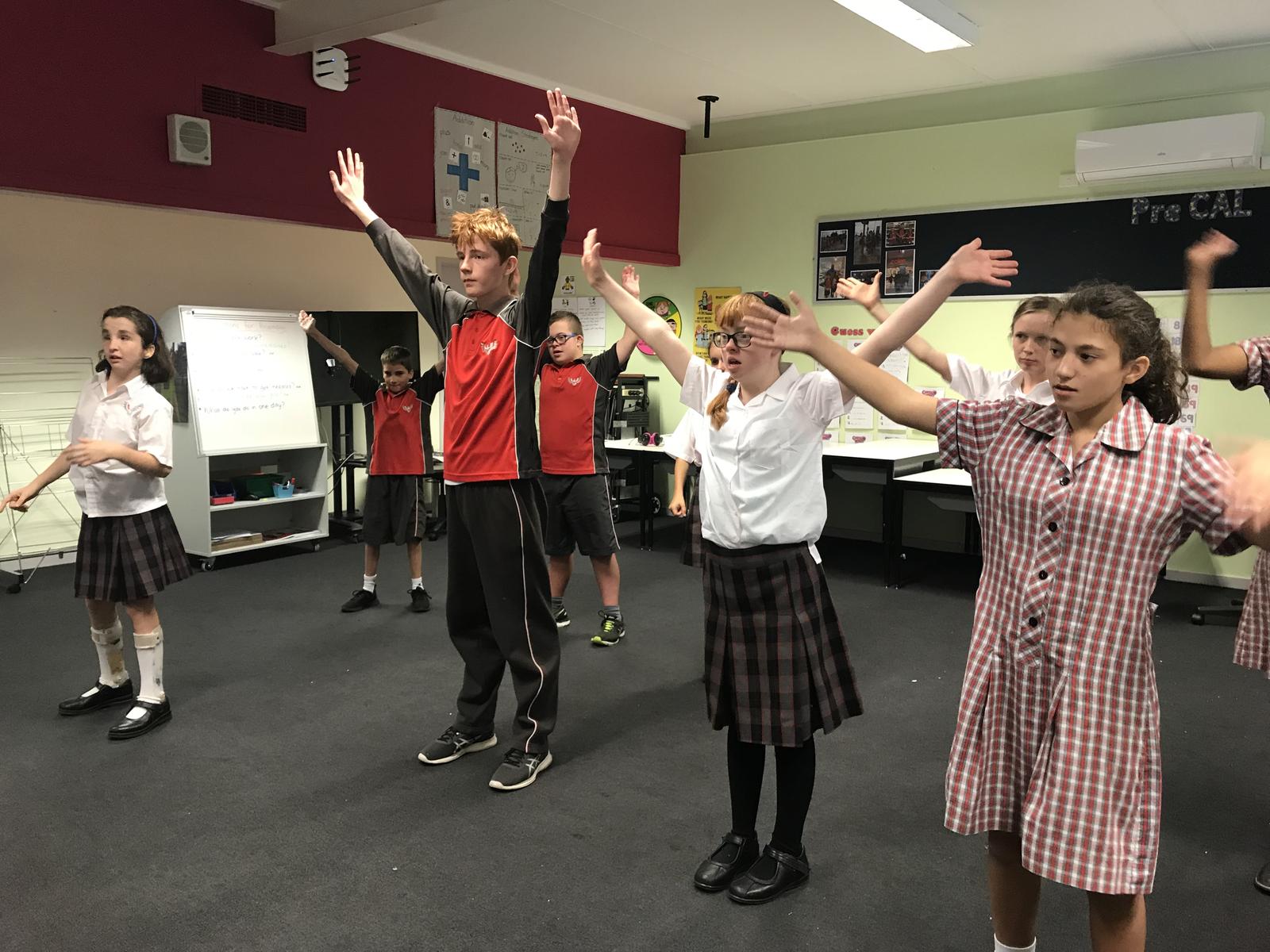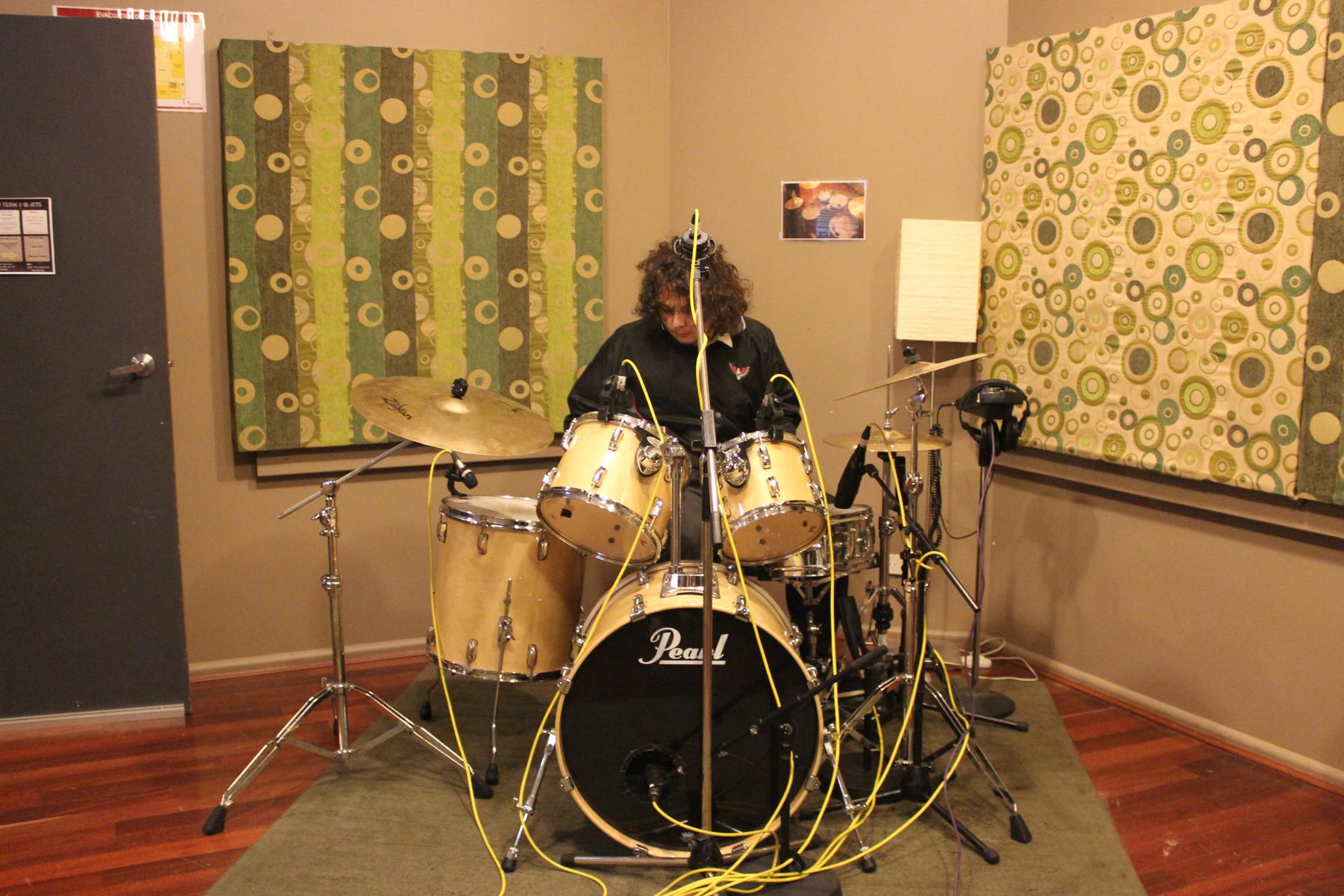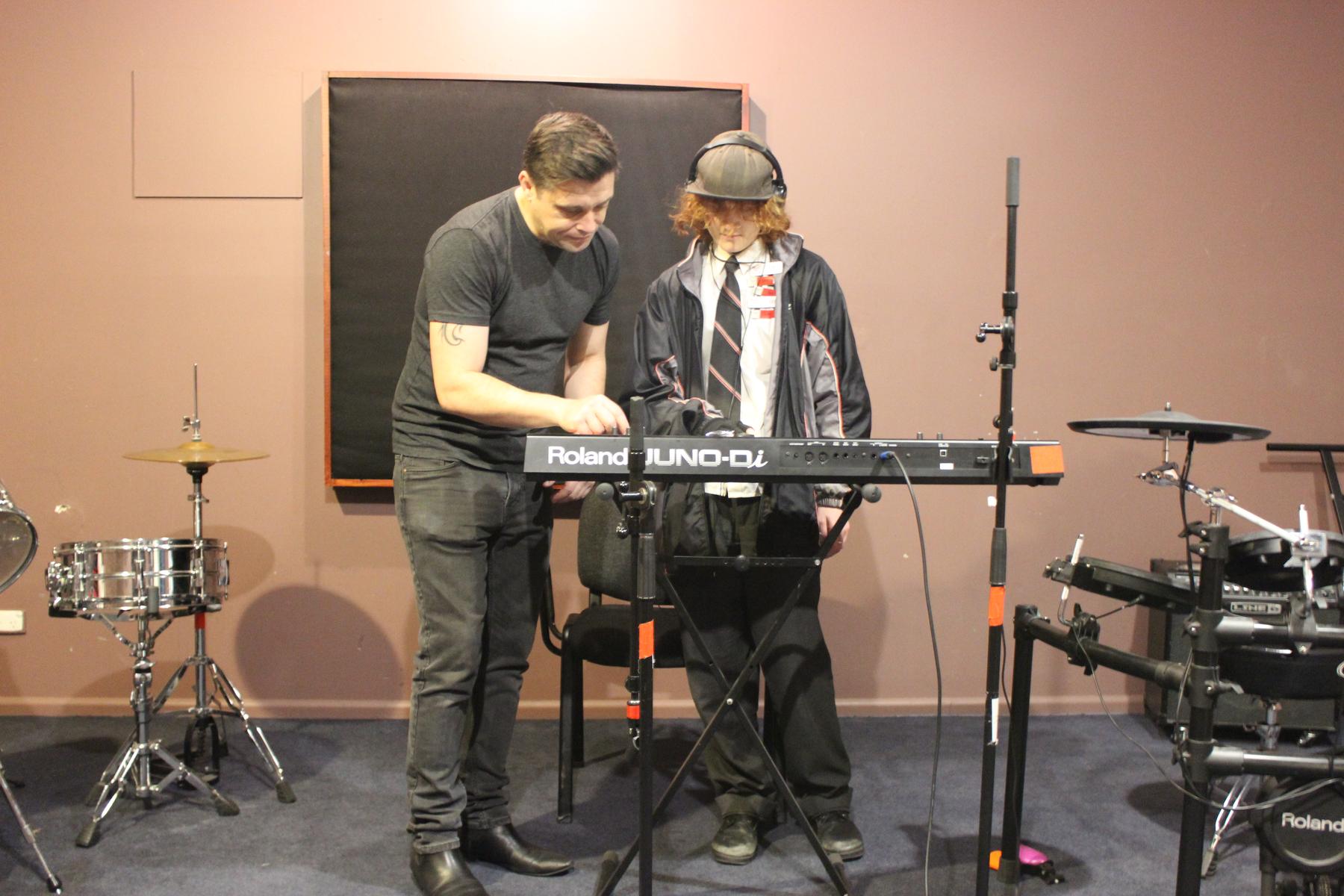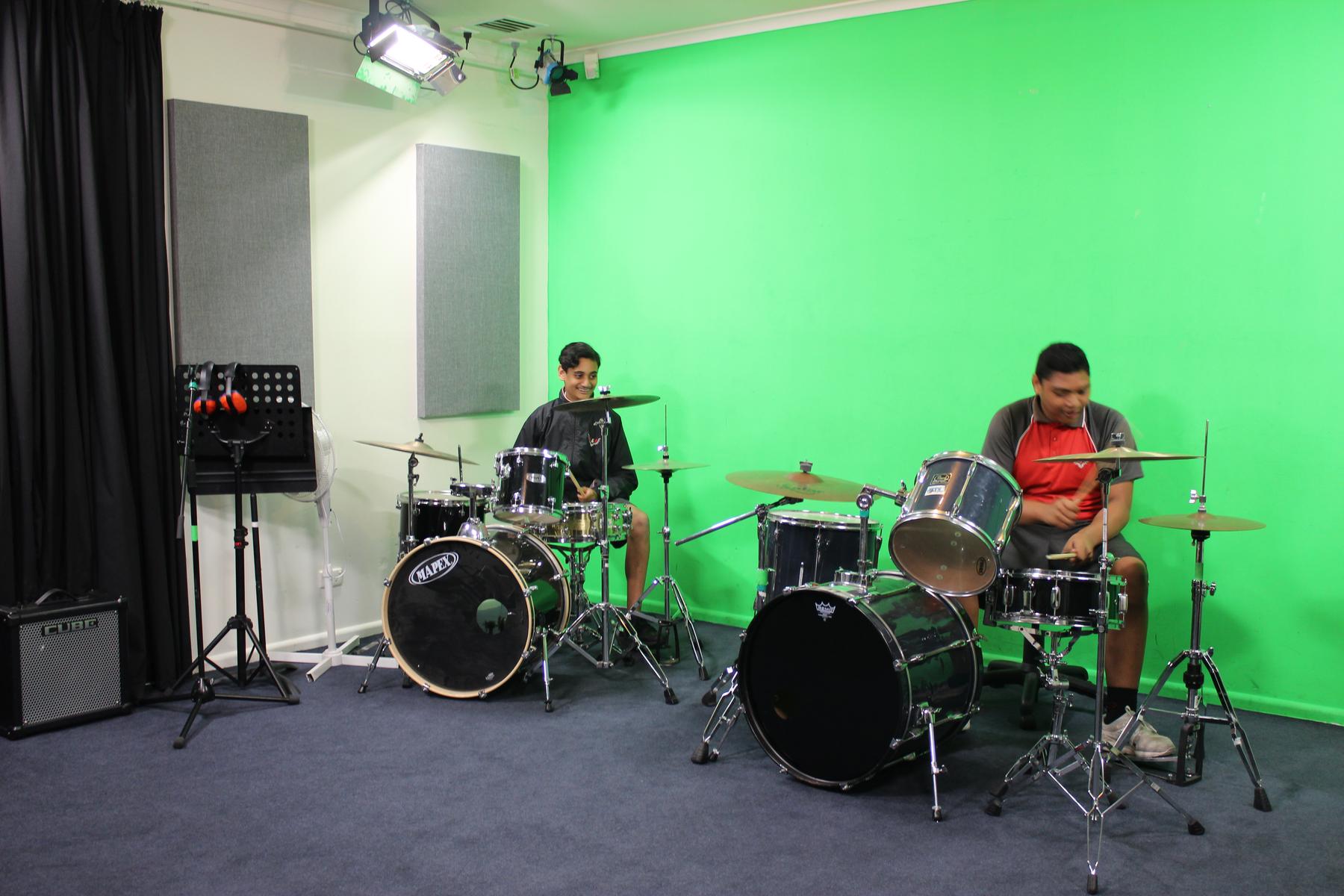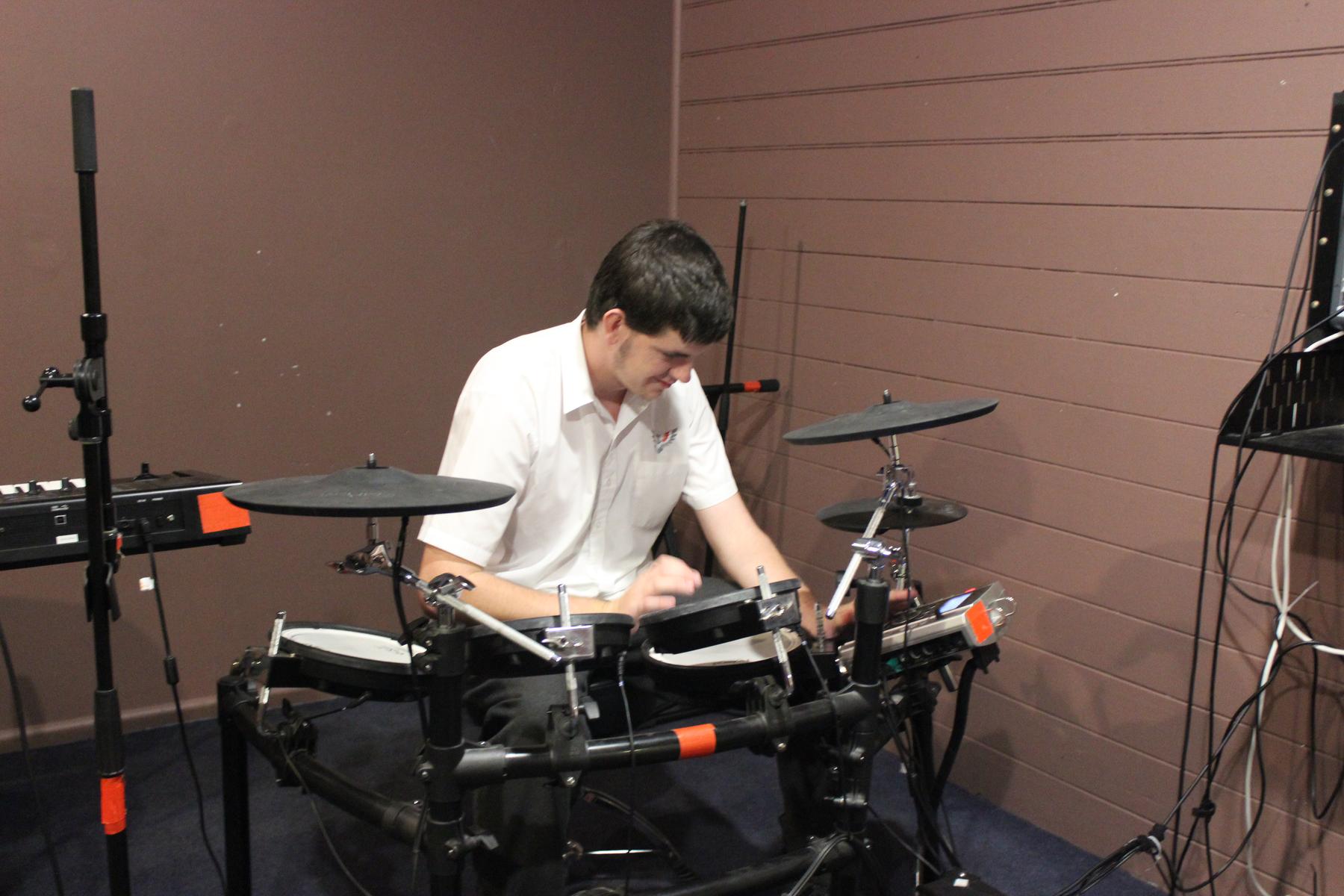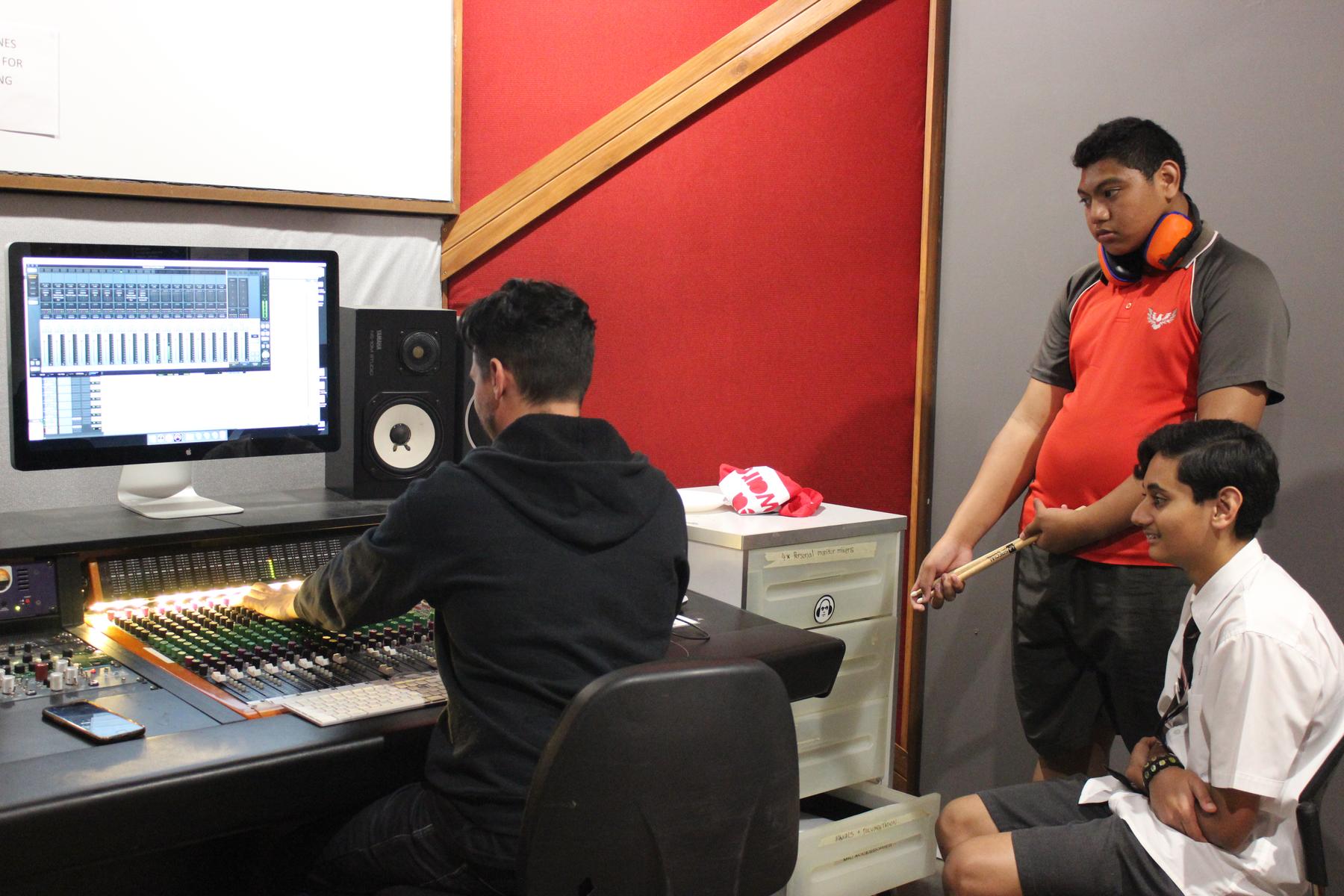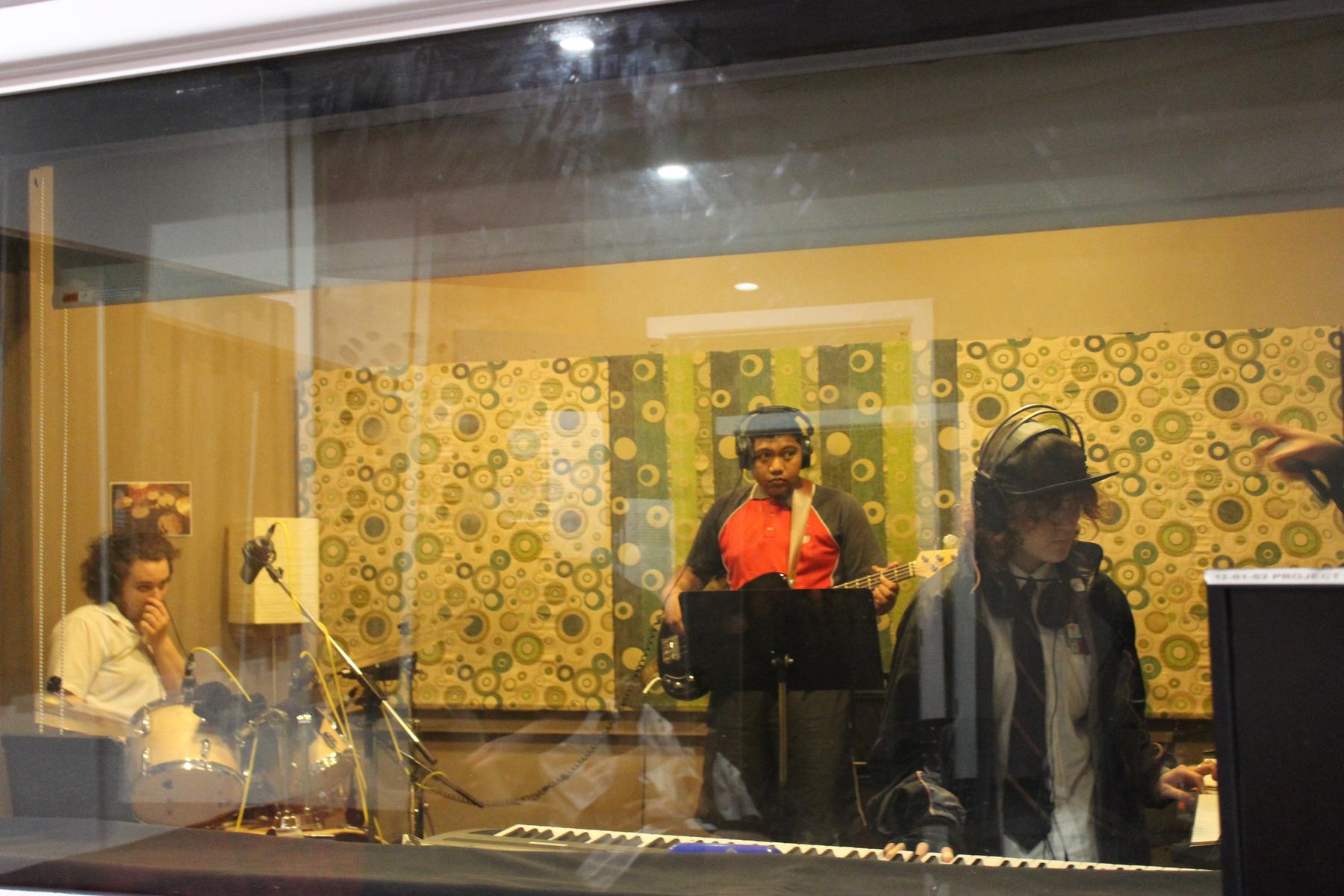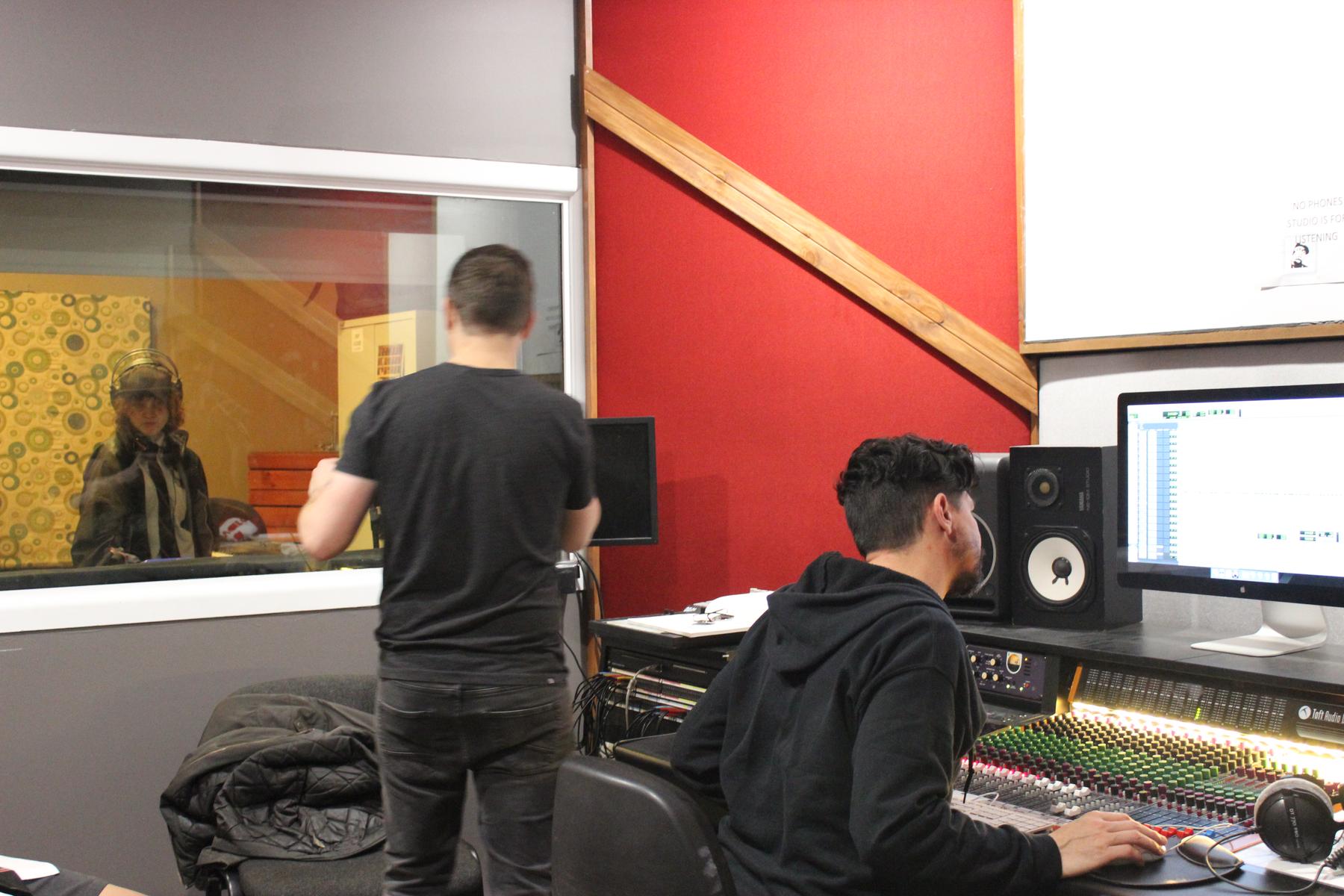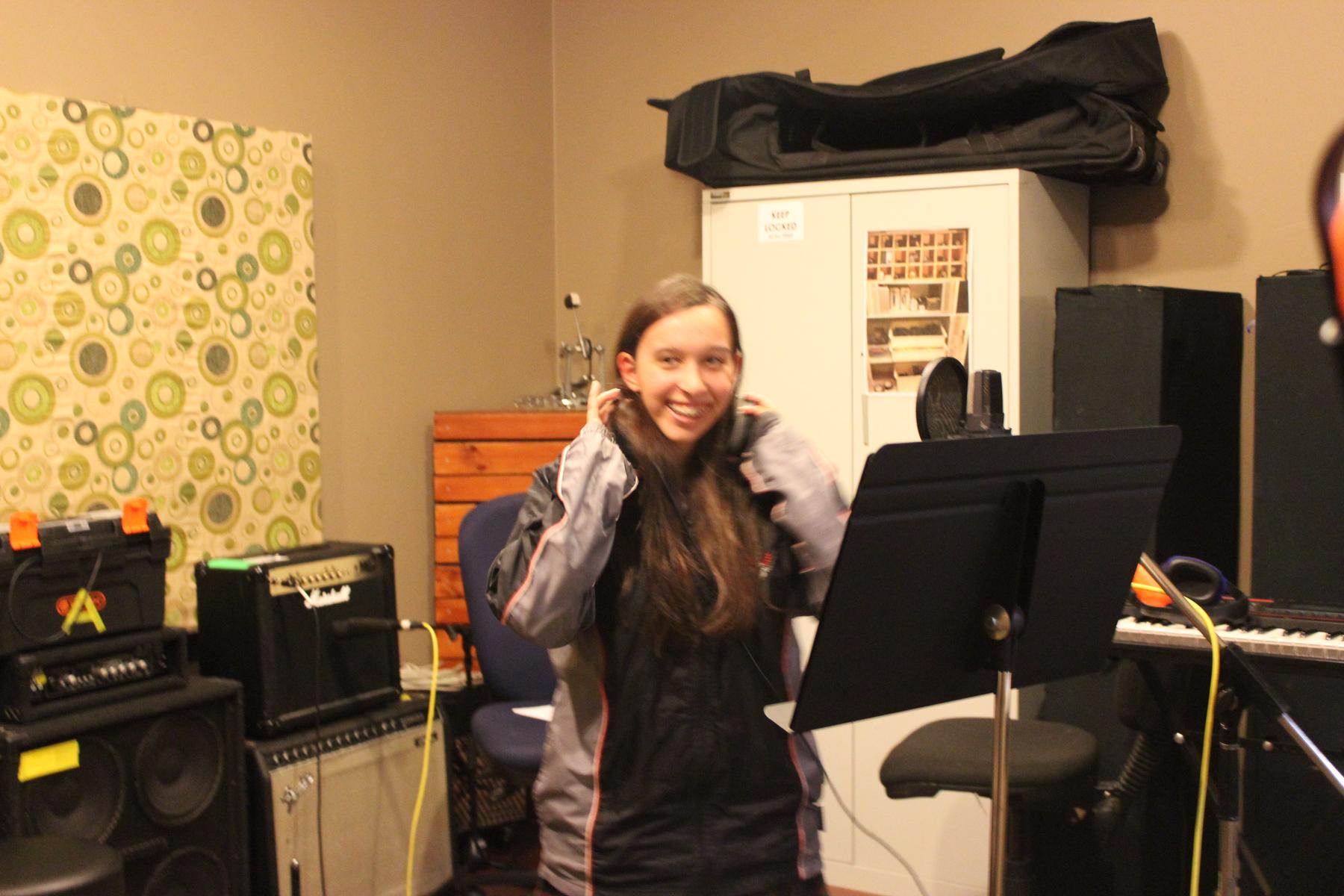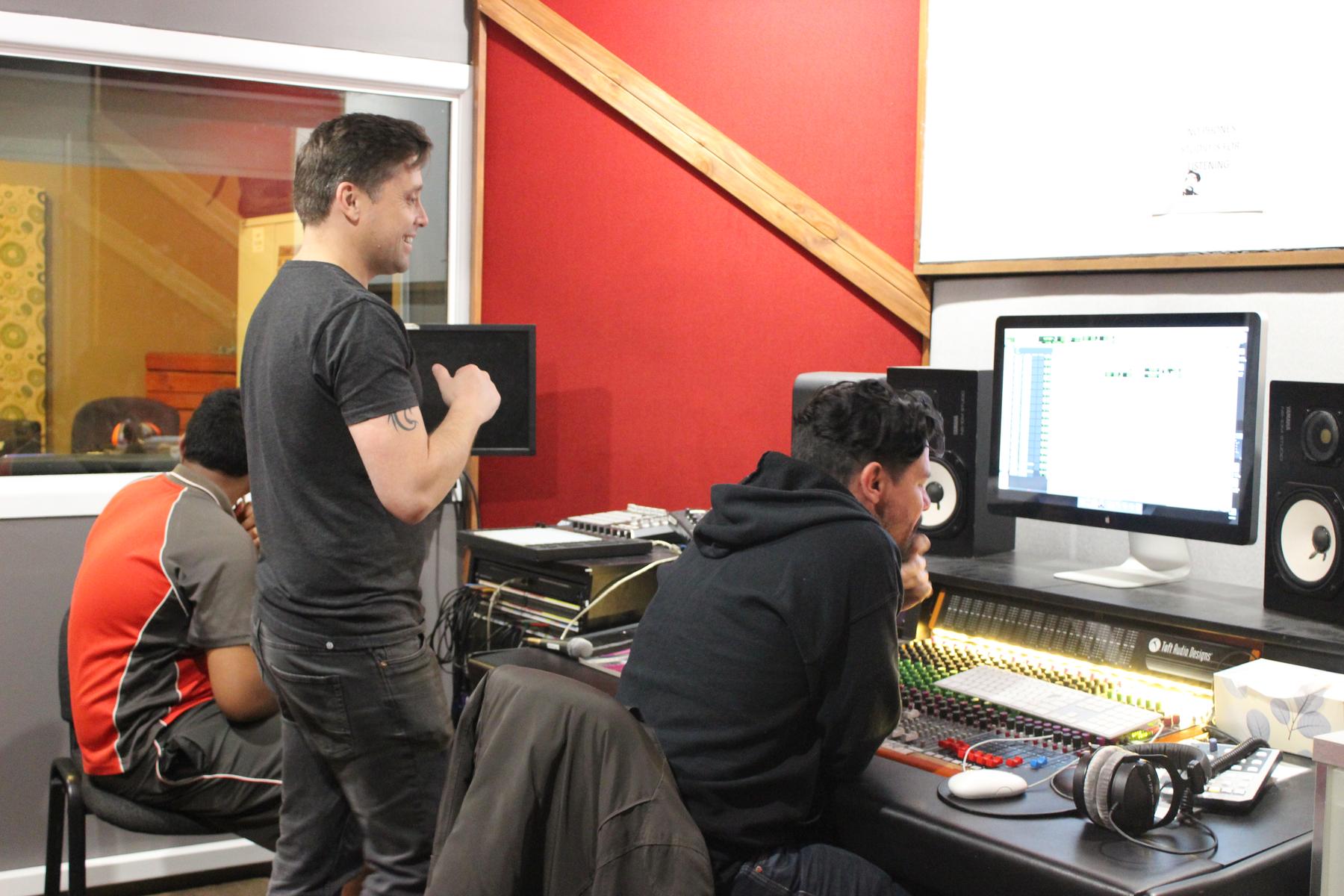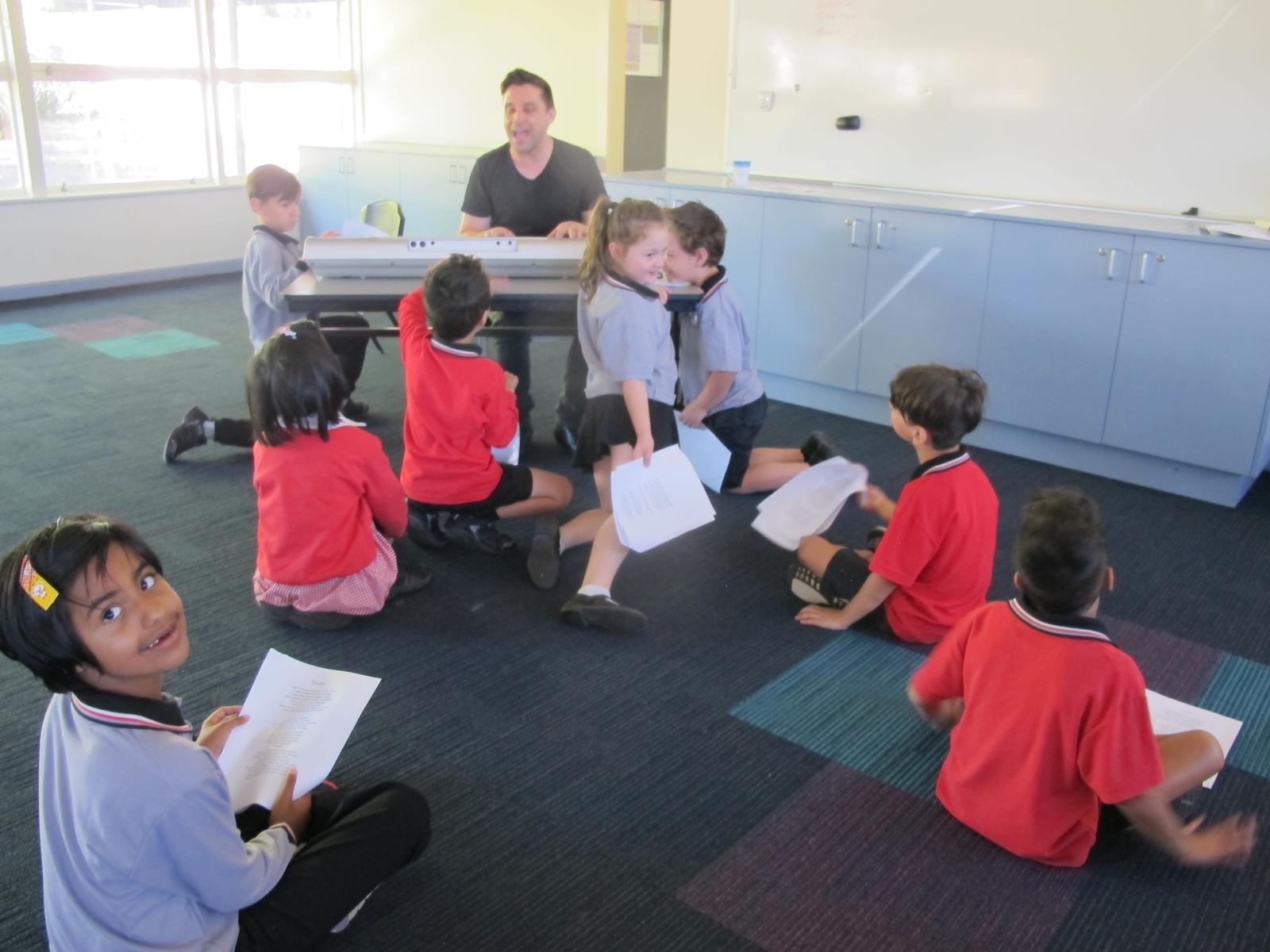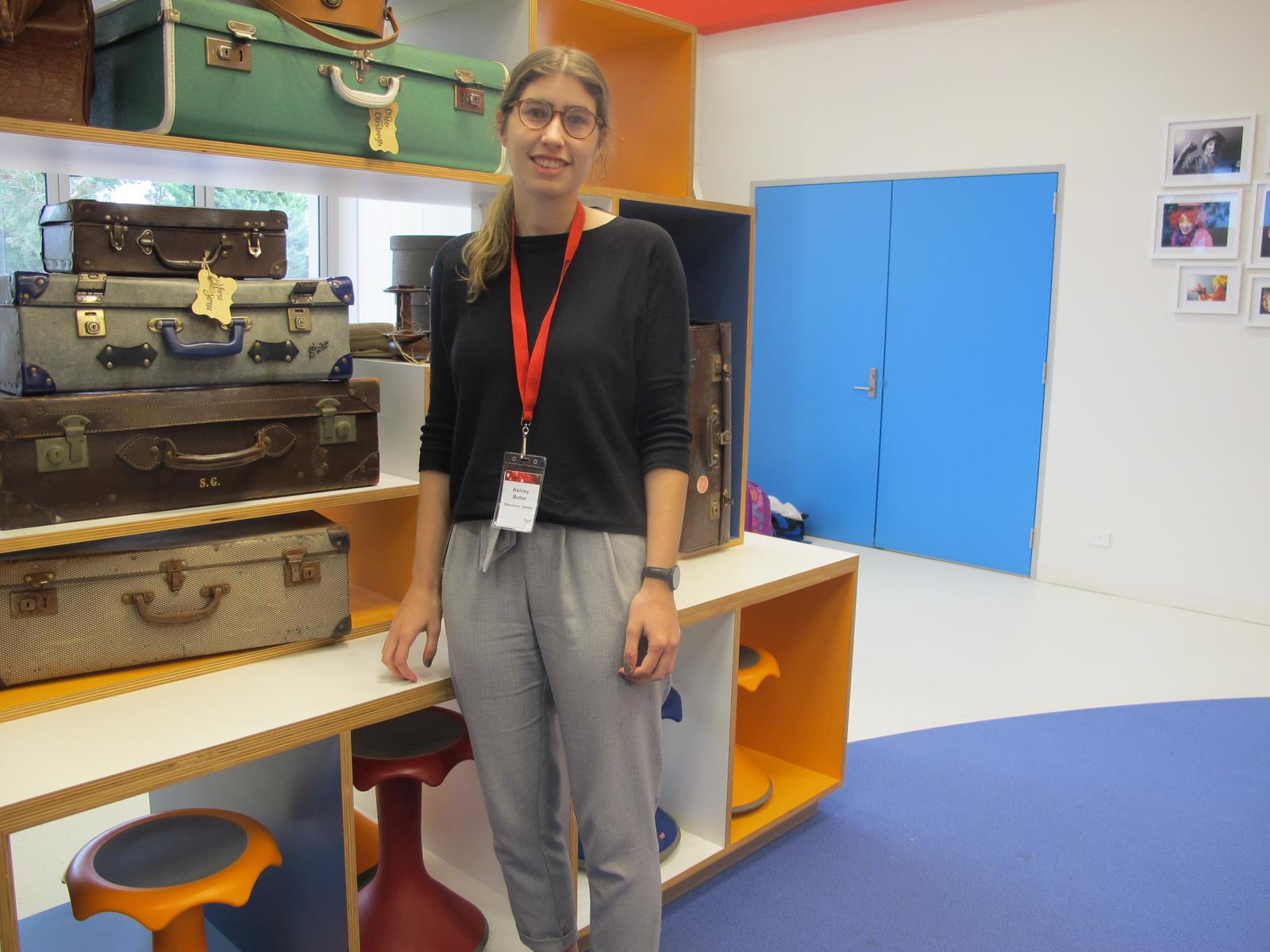Teaching and Learning
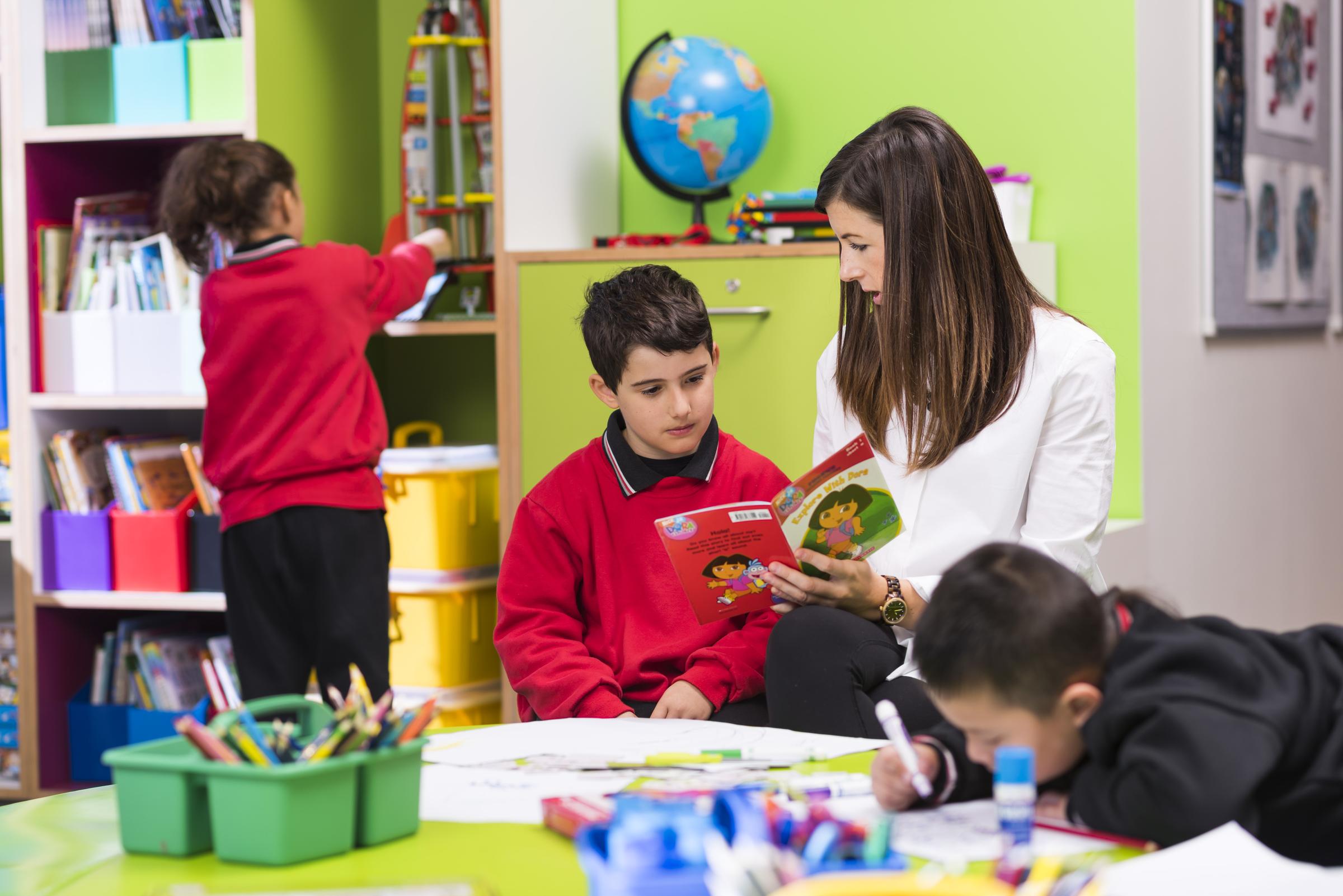
English - Writing
For the first four weeks of term, students across the school, have used a range of visuals (anchor charts, graphic organisers and photography) and performance art (multimedia) to support the writing of narrative texts. Preps have dressed up to act out the story of “Jack and the Beanstalk”. They have responded creatively through drawing, and have planted and tended beans. They have labelled pictures and retold the story using pictures, single words, phrases and sentences.
Teachers have managed the juggling act of firing student’s imaginations and developing their skills with narrative language and structure. Students have used graphic organisers to plan their ideas so that their stories have a clear beginning, middle and ending. They have also improved their descriptive language by focusing on characters and settings and explored traits that are physical (outside) and personality (inside). Some classes in Upper Primary used the Discovery Centre TV studio and props to create imaginative characters and settings that engaged and inspired students’ oral language. Many classes have used visual prompts (particularly images &/or websites such as www.scholastic.com/teachers/story-starters/) to scaffold students’ repertoire of narrative genre and broaden the range of problems and solutions used during story writing.
I observed many teachers prompting and supporting students to effectively edit their work. An effective teaching strategy in many classes is to train students to keep their writing goal visible as they construct and edit their narratives. Secondary 7/8 are successfully using a thinking tool (the Authorthink process) to guide students to publish their own narratives. In secondary 9/10 teachers have revisited using sizzling starts and writing techniques such as ‘show don’t tell’ to engage the reader.
Week four marks the end of our narrative focus which culminates in whole school narrative writing task. All students from Prep to Year 10 are given a choice of images on a topic. They will follow the writing process over one or two sessions to plan their piece, compose, revise and edit. In weeks five and six, teachers will then analyse the writing and moderate in teams on student performance and teacher effectiveness.
In the next few weeks most sections will shift from fiction to non-fiction/informative text. Informative text refers to many types of text (oral, written, visual and multimodal) that
Include factual content for different purposes such as description, recount, explanation, persuasion instruction or transactional. Students will be taught to identify the unique features and language of these texts and be given multiple opportunities to practice both reading and writing informational text.
From weeks 6 to 10 Primary students will revisit recount writing. Recount tells past events and for our students this is primarily based around language experiences. These experiences promote writing skills by focussing on personal experiences and oral language. Students need to develop their verbal skills so they have the language to develop their own writing ideas.
To assist with their oracy, drawing and writing attempts students will use photos and visuals such as picture, picture words and picture word sentences.. As students develop their recount skills they start to tell a sequence of events and can be prompted to write a conclusion which briefly summarises what happened.
In Secondary classes the writing focus for week’s 5-7 is informative report writing. Informative reports cover facts about real people, things, or events. These texts commonly have a main title, sub-headings, bullet points, paragraphs and visual text (i.e. pictures and captions). They are written in the present tense and the third person (their/they) and may contain technical language.
Along with many immersive writing activities, Secondary students will be asked to research something relevant to their integrated learning, for example: if they are learning about the Victorian Colonies, they may be asked to write an information report on a certain topic, such as the Ballarat Gold Rush.
Secondary PreCAL students have already launched into reading and writing informative text. The 9/10 PreCALstudents are busy identifying and sorting make believe and factual texts. They have been introduced to informative and persuasive advertisements through workplace safety ads. This will be a strong focus for the remainder of the term as students are being challenged to create an advertisement about an aspect of workplace safety. To build their prior knowledge the students will have experienced many community excursions focusing on identifying workplace safety issues. In class they will enhance their knowledge and skills further by co-creating visual literacy related to workplace safety. Students in Secondary 7/8 PreCAL are exploring personal and community safety and looking at the role of professional carers and helpers such as nurses, doctors, and the fire-brigade. Recently they interviewed Rosemary, our school nurse, after they had generated interview questions about her role. They also followed up by constructing informative text on the job of nurses. Local excursions focusing on personal and community safety are planned for the remainder of term 2. These experience days will support students’ literacy and deepen their fluency and understanding of relevant informative text around safety.
English - Reading and Viewing
During the first six weeks of term two the Reading and Viewing focus is comprehension strategies. Students have been exploring a variety of different text types and are learning to use strategies to develop a deeper understanding of what they have read or viewed.
Strategies focussed on include:
- Reading picture information: students discuss and interpret images to make sense of the text
- Sequencing: students demonstrate an understanding of the plot through sequencing images (beginning, middle and end)
- Retell: students recall what happened in the story by organising and describing the events in a logical sequence
- Predictions: students use: the title, illustrations, what they know, their prior knowledge and experiences. It is important to build students background knowledge to give them a better chance to understand and comprehend the text.
- Students will constantly revise and confirm their predictions throughout reading by asking & answering questions and participating in discussions
- Literal and inferred questions: students answer questions by using text clues, images and their own knowledge and experience Students look particularly for inferential clues in the text to help work out for example what a character is feeling or why an event took place without the author telling us directly in the text.
- Main idea: students read through the text identifying the most relevant information to determine the topic the author has chosen to write about
- Author’s purpose: Students identify clues which help them work out the purpose of the text; Is it entertainment, information and/or persuasion?
All students will be working through these elements of comprehension at their point of need. It is vital that students develop the necessary skills to understand and make connections with texts. This will ensure that reading is purposeful and they make meaning of what has been read. You can continue to support your child at home by asking questions before, during and after reading a book or viewing a visual text.
Mathematics
In mathematics, for the first four weeks, students have learnt about Addition. They have been exploring a variety of efficient strategies to find the total of two or more groups. Teachers have used many verbal action stories and/or real life scenarios to give students a context and motivation to solve addition problems. Manipulatives such as counters, unifix cubes, dominoes, bundle sticks, and MAB have been used concurrently with addition mats, 5 frames, 10 frames, number lines, place value mats and number charts to teach strategies and model the process of addition.
Strategies students have explored include:
- Count all: combine two groups and count all to find the total
- Count on: counting on from the largest number to find the total
- Hop On: similar to count on, however begin by counting on in 10’s before you count on in 1’s. (e.g. 21 + 33 = 54, Think 33, 43, 53 and 54
- Partitioning numbers: breaking numbers into parts to help simplify what is being added (eg. 8 + 4 = ? change to 8 + 2 + 2)
- Doubles: adding a number to itself (doubles are always even)
- Near doubles: adding numbers that follow each other, use the knowledge of double to help add the numbers (eg. 4 + 5 = ? this is the same as 4 + 4 + 1 = 9)
Over the next four weeks students will be accessing their addition knowledge and skills as they engage in subtraction tasks. When subtraction is modelled in a way that students are encouraged to think, “What goes with this part to make the total?” the child will use known addition facts to produce the unknown quantity or part. If this important relationship between parts and wholes—between addition and subtraction—can be made, subtraction facts will be much easier. Children need to understand that addition and subtraction have an inverse relationship.
Developing fluency with mental strategies, prior to the introduction of formal written methods is important. Otherwise, students are at risk of developing misconceptions in computation when formal written methods are introduced before they are confident in solving problems mentally. The focus of computation lessons in the early stages is developing mental strategies for adding and subtracting. Using structured materials and models to represent mental strategies will continue to help students apply their addition knowledge to subtraction situations. Acting out problems, manipulating materials and drawing pictures to represent what they hear in an action/real story helps students visualise and solve problems.
Initially students will be looking at less and smaller as concepts and this will graduate to solving simple subtraction equations using more fluent and efficient strategies.
Strategies students will use include:
- Count back When subtracting two numbers, place the first (larger) number in your head and. For example, 7 – 2 = 5, because: 7, 6, 5.
- Hop back Similar to count back, begin by counting back in 10’s before you count back in 1’s. Students need to partition the smaller number before they use hop back.
54 – 21 = 33, because: 54, 44, 34 and 33.
- Split strategy Begin by partitioning both numbers into 10s and 1s e.g. 76 (70+6) 33(30+3)
Subtract the place value parts, then recombine the added parts to find the answer.
76 – 33, Think:(70-30) + (6-3)
- 40 + 3 = 43
- Compensate strategy: Adjust one number (building up or down), subtract the parts and adjust the difference to ‘pay it back’
58 – 19 = 39 Think: 58 + 1 = 59
- 59 – 19 = 40
- 40 – 1 = 39
You can help your child with subtraction by playing games such as subtraction bowling. Set up 10 bowling pins (or cups) and use a ball to knock some down. Count the fallen pins and say ten take away (that number) leaves the number still standing.. Alternatively get your child to count back from ten as they touch each fallen pin, tell them to keep the number in their head as you both check the number of standing pins.
Over the first six weeks of term two, In Measurement and Geometry, the focus is Time. Each student has been engaged in activities that build on their current level of understanding. Activities have focussed on:
- Using schedules to sequence daily events
- Identifying specific times (day/night) and related activities
- Naming and ordering days of the week and months of the year and the seasons
- Using a calendar to identify days of the week and when events occur
- Reading time on an analogue and/or digital clock
- Comparing and ordering the duration of events using stopwatches
- Converting between units of time to calculate duration
Integrated Curriculum
In Lower Primary the ‘Stories of the Past’ unit is really rumbling along. Many students have completed projects on both cultural and personal celebrations that show they are making strong connections to their own lives. “The Drama Toolbox” incursion provided a catalyst for students to create, explore and develop ideas about the dreamtime story ‘Tiddalick the Frog’ Kath Moore reported that ‘all students were totally engaged by the workshops and thoroughly enjoyed learning about how aboriginal people tell their stories.’ The attached photographs tell the story. Students dressed up in an array of animal costumes and mimicked the movements and antics of those animals as they re-enacted the Tiddilick story. The excitement doesn’t stop there, to reinforce the classroom learning there are further plans for other cultural incursions later in the term.
Upper Primary students have also intensified their learning around the First Fleet this term. All classes are visiting the Polly Woodside to get a taste of life on board an historic sailing ship. The classes who have been on this excursion have already raved about the experience. The photos show students engaged in hands-on activities such as ringing the bell, pulling the winch (capstan), climbing the rigging, hauling the sails and scrubbing the decks.
Secondary 7/8 students have launched into researching the Gold Rush period of the second half of the nineteenth century. They’re starting to realise the enormous impact the Gold Rush had on the development of the Australian Colonies. The flow of convicts to Australia’s shores stopped. Incredibly, Victoria alone produced more than a third of the world’s gold in the 1850’s. By 1871 the population of Australia had increased from 540,000 in the 1850’s to a whopping 1.7 million. Currently students are developing their research skills and using a range of graphic organisers to support their exploration into life on the gold fields. Teachers are also assisting students to collect, analyse and draw conclusions about historical sources. Later in the unit, classes will strengthen their investigation of the events leading up to Federation (on 1 January 1901) and discover and debate the reasons for and against federating.
Secondary 9/10 classes are deepening their knowledge of immigration this term by planning and undertaking further excursions to significant cultural venues. Currently they will be visiting and interpreting the Colony Exhibition at the National Gallery of Victoria.
Many classes across the school reflected about ANZAC Day; what it means and the importance of this commemorative day. Secondary 9/10 students created wreaths and the sweet ‘oaty’ smell of ANZAC biscuits wafted through many classrooms prior to Anzac Day.
Social Competencies
This term, across the school, the first five weeks have been focused on relationships.
All students are exploring the meaning of ‘relationships’ and the ‘relationship circle’. They are also identifying and practising the skills needed to improve a relationship.
Primary students initially concentrated on: safe family members and school friends, recognizing immediate family or carers and describing their key features and roles. They also acknowledged people they came across each day that were familiar or unfamiliar. They moved onto exploring relationship skills through stories (including social stories), role plays and video scenarios. Some of the relationship skills they will continue to practice include:
- hurt/ OK touches
- asking and responding to ‘joining in’ with play requests
- solving problems with friends by turn taking
- OK touches and behaviour for family, teachers, school friends and particularly community people.
Upper Primary students are still collecting family photos so they can co-create a classroom family social story display. Students who have already bought in their photos, have enthusiastically talked about their family. Both Upper Primary and Secondary 9/10 have welcomed our new Social Competencies teacher, Courtney King. Fortunately Courtney has worked as a trainee before at Concord School and has adjusted to our Social Competencies program seamlessly.
Secondary classes have examined relationships and the different relationships they can have with people in their families, their friends, boyfriend/girlfriend and other members of the community. They have also explored the different appropriate behaviours for each type of relationship. What is appropriate with your friends, may not be appropriate with your teacher. They are practising being a good friend and/or a respectful listener to peers as they share their experiences and role play interactive situations involving different relationships.
From weeks five to ten the content focus, across the school, moves on from relationships to sexuality.
Lower Primary students will be identifying those parts of the body that are ‘private’ and indicating the contexts in which body parts should be kept private. Amongst other incidental learning about their changing bodies, they will name the major parts of the body and sequence images of major stages of their life.
Upper Primary students will be naming and describing how their bodies are growing and changing. They will identify and label private parts of the body and understand the contexts in which body parts should be kept private.
The key sexuality learning for Secondary 7/8 students is describing the physical and social changes that occur as they grow older, particularly as they reach puberty. They will also explore ways to manage these changes and discuss tasks they are allowed to do by themselves and explain how these have changed since they were younger.
Secondary 9-12 will focus more on exploring strategies to manage physical, social and emotional change. They will consider how friendships change as they grow older and investigate different levels of a personal relationship and the steps associated with taking a relationship to the next level.
Education Week
The Teaching and Learning behind our ‘Celebrating the arts’ week.
Visual Arts
Every week at the Watsonia Campus specialist teacher Jackie Ellis skilfully teaches each student visual art skills. The students are exposed to and explore and develop technical skills in drawing, painting, cutting, pasting, modelling and constructions. This semester they have been introduced to indigenous art and have incorporated these methods and techniques into their original art pieces. Students have learnt about symbols in Aboriginal storytelling and drawn symbols on rocks, mugs and in sand to communicate their own narrative. The attached display of Lower Primary art highlights students’ creativity using a diverse array of media on a range of themes.
Vera Mitchell, our creative Visual Arts specialist, teaches students across the Bundoora Campus a varied range of visual art techniques using a spread of media.
For example in Secondary 7/8 visual arts students are learning about mark making and shading techniques using mostly pencil and paper. Over the past three weeks she has explicitly modelled the different levels of shading and using ‘think aloud ‘ strategies has familiarised them with shading language such as: marking, stroking, blending, shading, pressure, tone, pencil grade, light and shadow.. Students have practised selecting the optimal pencil grade and grip for shading and have learnt how to turn a drawing from 2D to 3D. They have practised observational drawing of still life objects such as fruit bowls, boxes and geometric shapes. Over the next two weeks, using a split photo of themselves and with verbal and visual support, they are sketching and shading the other half to create a symmetrical self-portrait. Vera will continue to prompt students to use their prior knowledge and think about the different strokes that are best suited to complete the portrait.
Secondary 9-12 elective programs also feature drawing this term as it is one of the major forms of expression within visual arts. Traditional pencil drawings and modern coloured-pencil drawings are included as well as dry media, such as chalk, and pastels. Their drawing program consists of exploration, with considerable emphasis on observation, problem-solving and composition. Some of the categories in drawing include figure drawing, cartooning, doodling, free hand and shading.
Dance and Drama
Lower Primary students participate in a single Performing Arts lesson each week. Our energetic Performing Art teacher, Alix Boyton, teaches them musical concepts and elements such as beat, rhythm, tempo and melody. This helps students sing, dance and play instruments more purposefully. This semester they have been learning songs and composing entertaining music, dance and dramatic pieces that feature the Lower primary unit on ‘Stories of the Past’. During this term students have been listening and responding to Indigenous music through movement and drama. They have listened to the sounds of the didgeridoo, played rhythm sticks along to the music and used movement to represent different Australian animals.
Secondary 7/8 classes have all started ‘Hairspray’ Spectacular rehearsals on Fridays with Laura from Australian School of Performing Arts. Each class has their own dance as well as being part of the whole section opening and finale dances. Laura has been teaching the students the dance for the finale; ‘You Can’t Stop the Beat’. The show has 2 lead characters, 5 support and 4 minor characters who have speaking roles. Interested students auditioned for these acting roles and will be professional coached to improve their on stage performance.
Music
This term two Sec. 7/8 classes are fully engaged in Contemporary Music with Justin Hall, our accomplished musician and versatile Performing Arts specialist. Students access a range of contemporary instruments such as Guitar, Bass, Keyboard, Vocals and Drum Kit. They learn basic instrumental skills, music theory and song writing. Each lesson students learn some music theory linked to particular musical styles such as Pop, Rock and Hip Hop music. Then students practise individual instrumental skills and play as an ensemble or band.
Each week, Justin teaches Upper Primary students basic song writing. Two Sec 9/10 and Sec 11/12 elective classes also take song writing classes. Students are taught practical methods of song writing to create their own contemporary song. Parts for the song are then arranged on live instrumentation with the class workshopping ideas and experimenting with the arrangement to finely tune it. Successful songs and the techniques used to create them are analysed by the older students. The unit culminates in the recording of the classes own original song with all students participating either instrumentally or vocally.
This week Justin and his Unbroken school band spent a long, productive day in rehearsals. They worked on recording their new song ‘Reality’ in a professional recording studio. Enjoy listening to this new recording, which can be accessed on the school’s Facebook page.
Media
- Section Displays. Students will showcase their understanding of their integrated units through creative mediums which forms part of their classroom and corridor displays.
- Claymation: Students have 6 weeks to collaboratively team up and produce an animation using clay figures on iMovie. There are many physical, technical and social challenges to learning the skills needed but the enthusiasm and the energy displayed, by the students I‘ve observed, is very contagious. The skill sequence is as follows:
- observe online videos on Claymation technique.
- form groups and discuss story options and characters needed
- start sketching characters
- research scene settings
- create scenes on a storyboard template
- create a setting for their scene using a cardboard box and sourcing a variety of materials
- make characters/objects required for their piece
- make armature for characters using toothpicks.
- set up scenes using characters, scenes and props and take the pictures needed for animation using iPads. Add music, text or voice over (as required).
- import pictures onto the computer and create their animation.
At the end of the process teams proudly share their animation and support others by giving constructive peer feedback.
Special Effects: As with the Claymation students have 6 weeks to work collaboratively to design and create two characters using special effects and costumes. They are expected to produce a special effects poster and contribute to a behind the scenes video.
Student immerse themselves in learning about special effects by:
· exploring makeup to create intended effects
· practising creating characterisation such as scars, wounds and wrinkles
· applying makeup to a partner
· researching characterisation sourcing appropriate costumes
· conferencing with Kaleigh and Nikki before creating a final character profile template, listing make-up costumes, and props needed
· developing Photoshop skills using the interactive TV and working in teams to improve editing technique
· assisting with behind the scenes tasks, particularly photography and videoing
At the conclusion of the unit the staff and students stage a Special Effects showcase. They exhibit students’ poster work and prepare the Behind the Scenes video presentation. Students from different Secondary classes and the Leadership Team are invited to view the exhibit.
A Tribute to Nikki Long
For the past three and a half years Nikki Long, our resourceful Discovery Centre technician has used her creative display and multimedia talents to transform the flexible learning spaces in our Centre. Her Semester Discovery Centre makeovers have successfully given our students access to more engaging learning opportunities, in all areas of the curriculum.
In the first three weeks of term, Nikki mentored our new Discovery Centre technician, Ashley Butler, before going on maternity leave. Fortunately Nikki has left Ashley with a strong legacy of planning and multimedia tips so programs in the Centre can ripple along and gain strength.
We welcome Ashley to the new role and gratefully thank Nikki for her innovative display concepts and creations, her ability to source and use powerful media resources and her instructive and caring interaction with students and staff. We look forward to her possible return at Concord School as a new mother and teacher in the future.
Please take the opportunity to tour the Discovery Centre during Education Week and see for yourself how students actively use the learning spaces and marvel at the exhibits and displays of students’ multimedia work.
Helen Edmonds
Acting Assistant Principal
